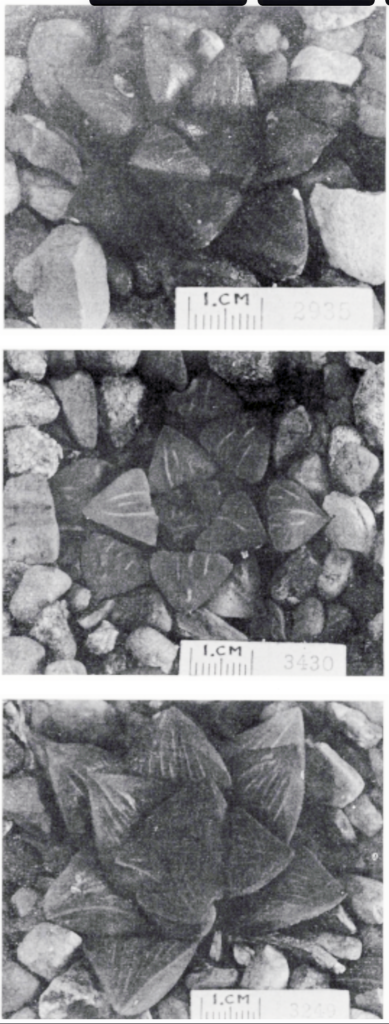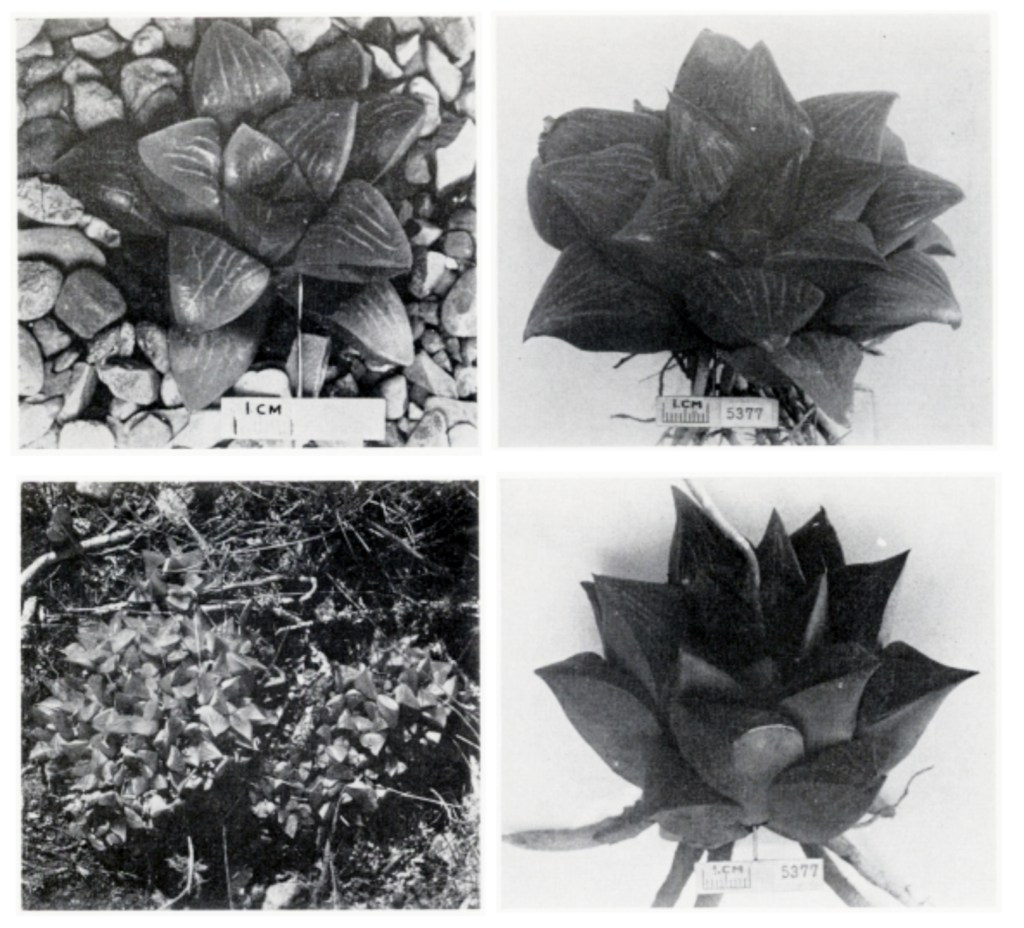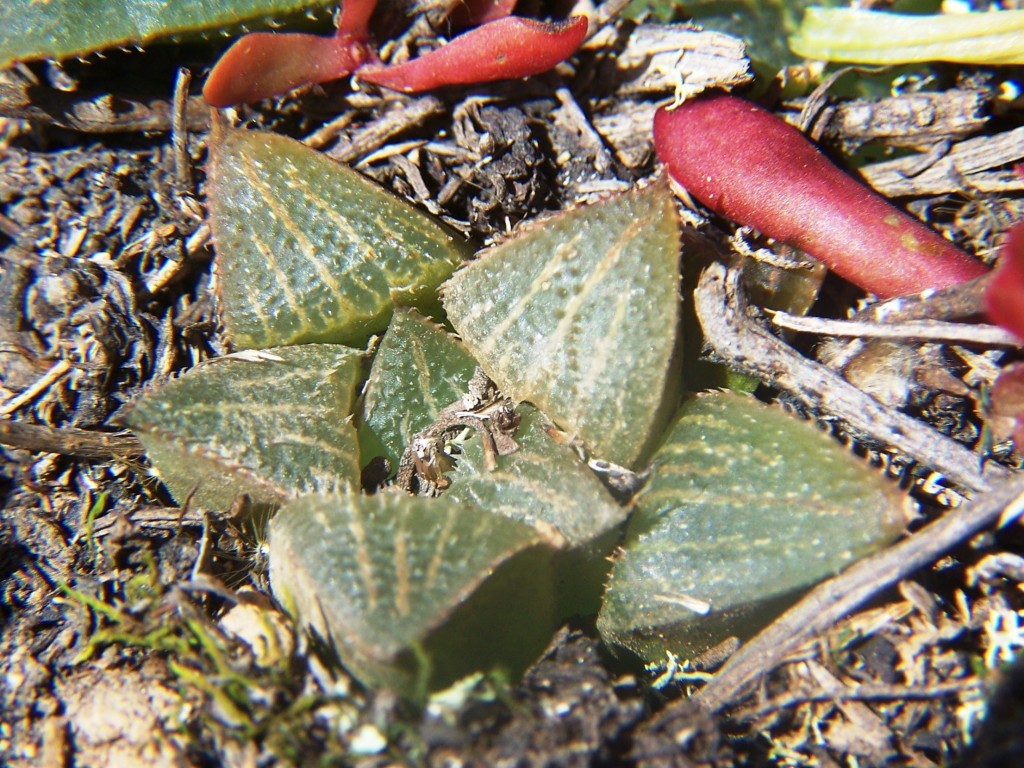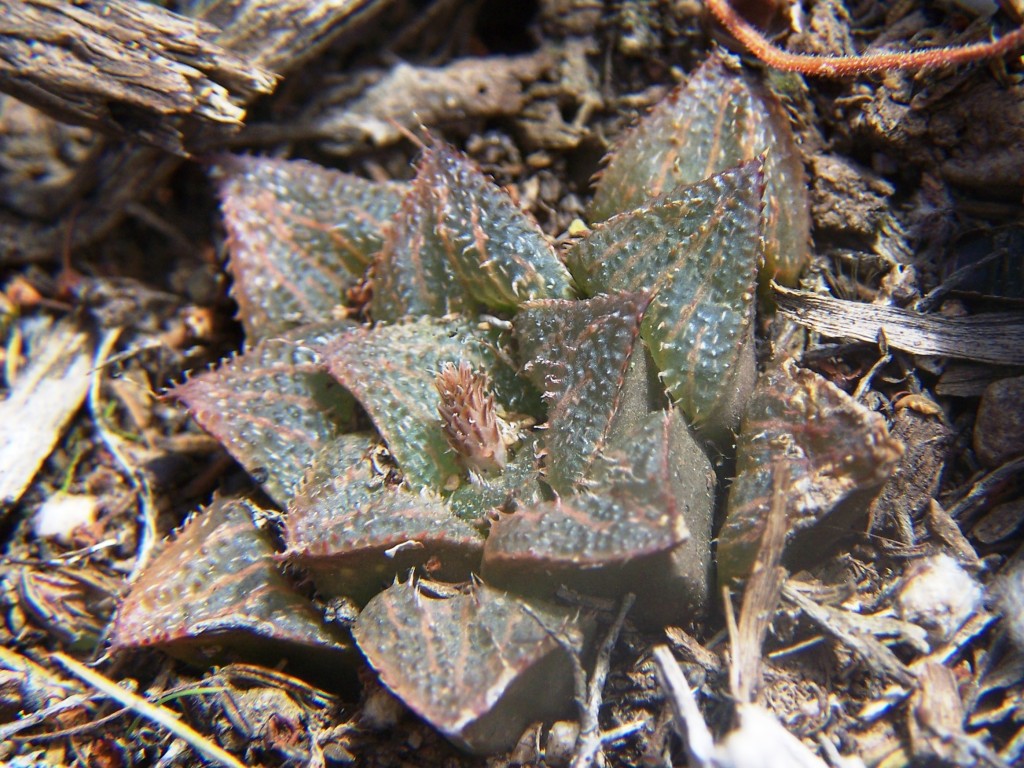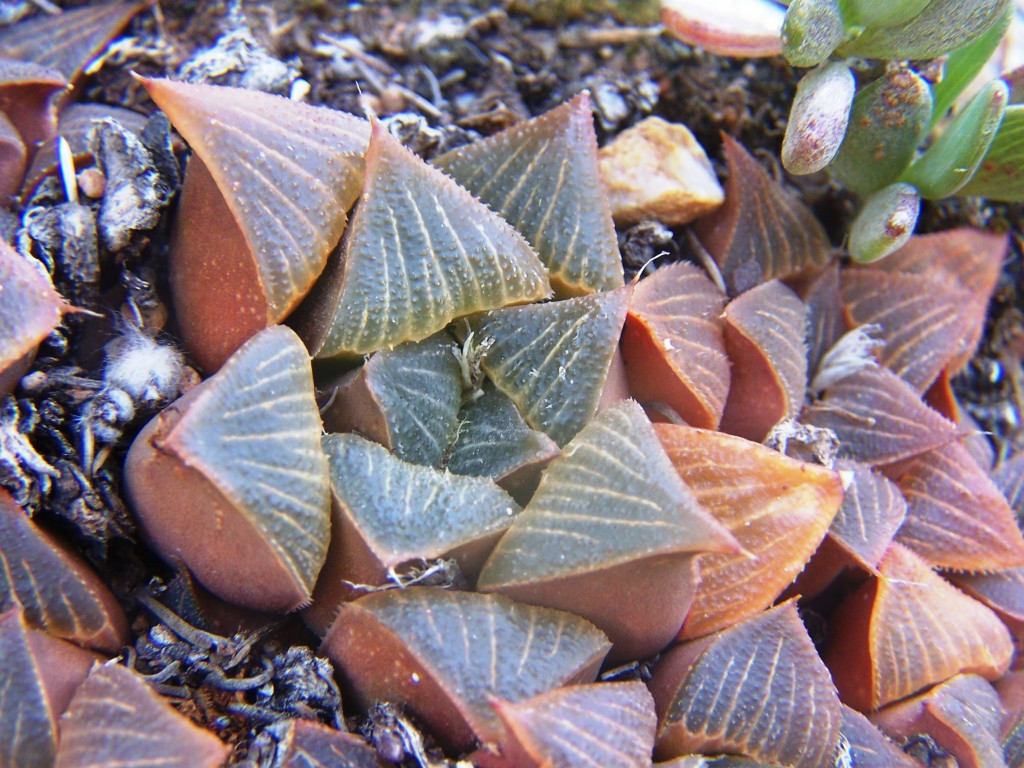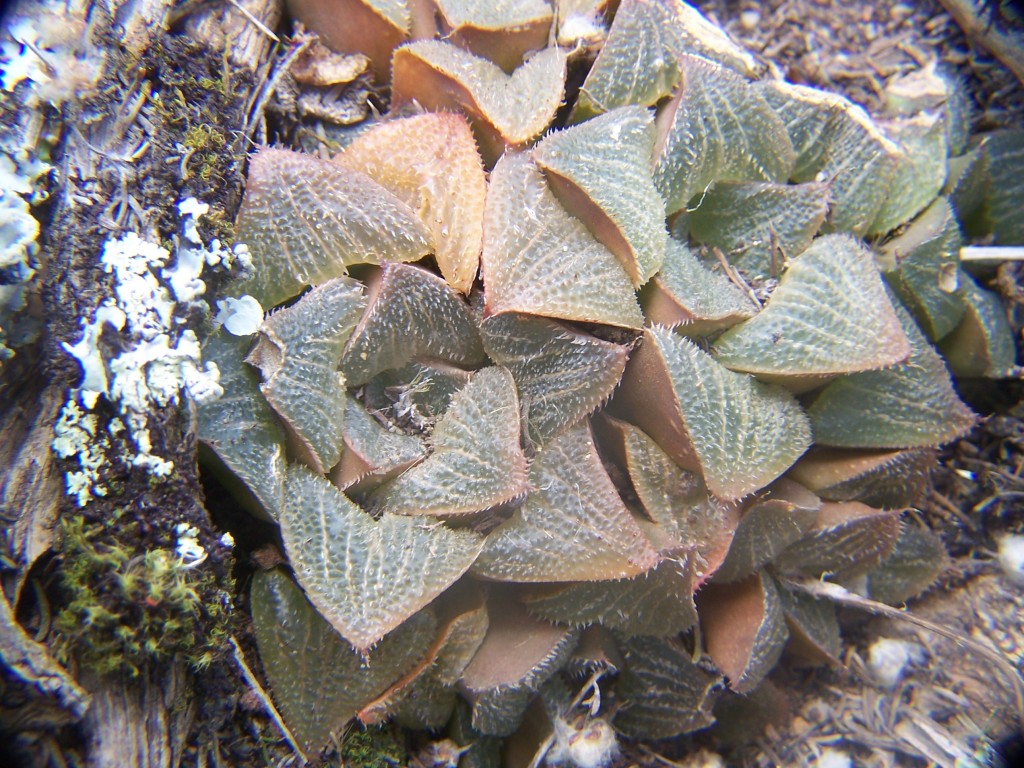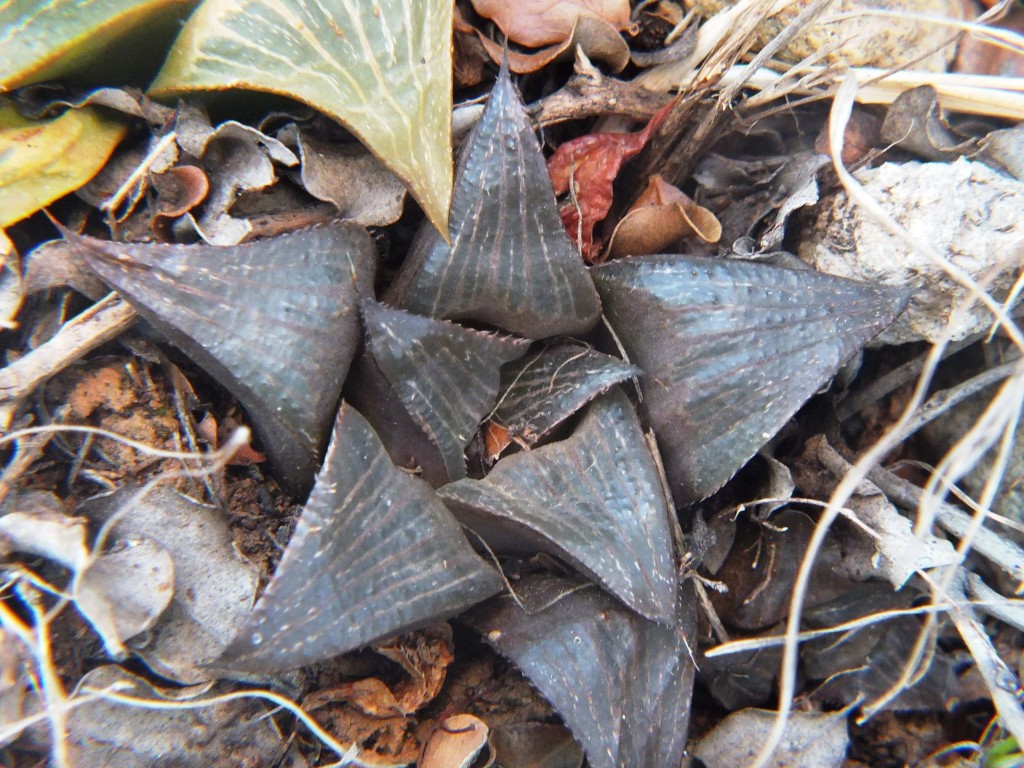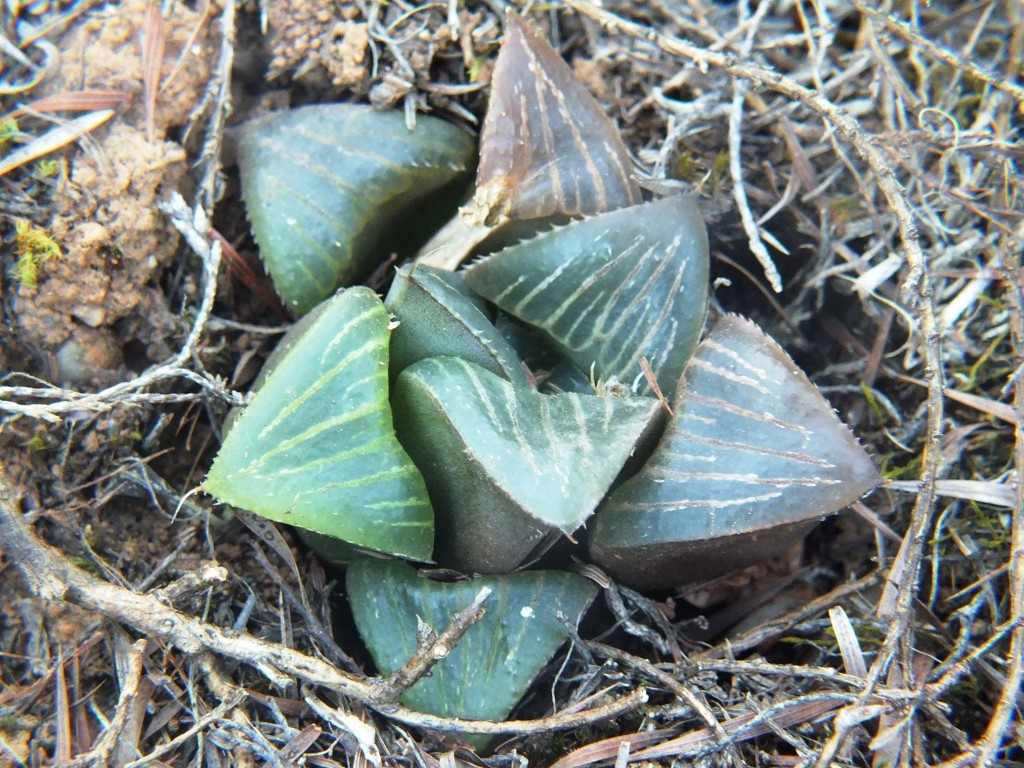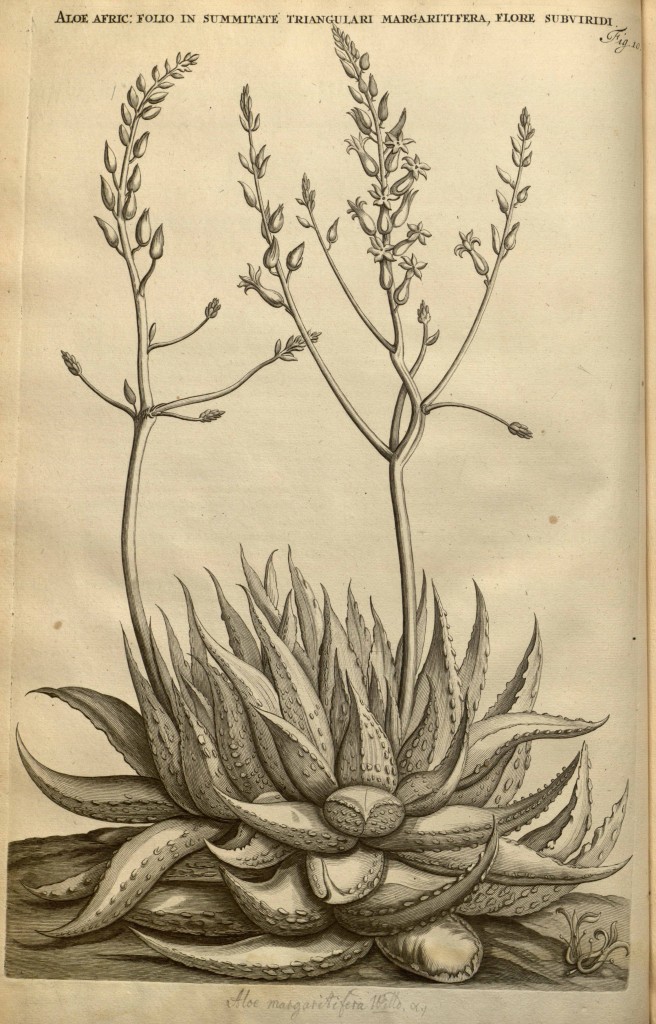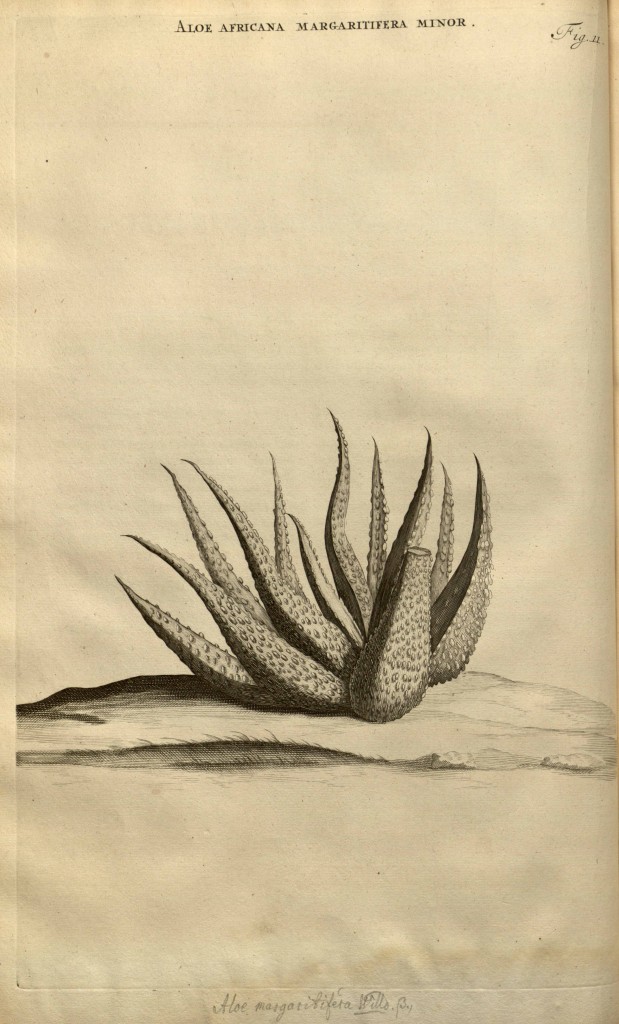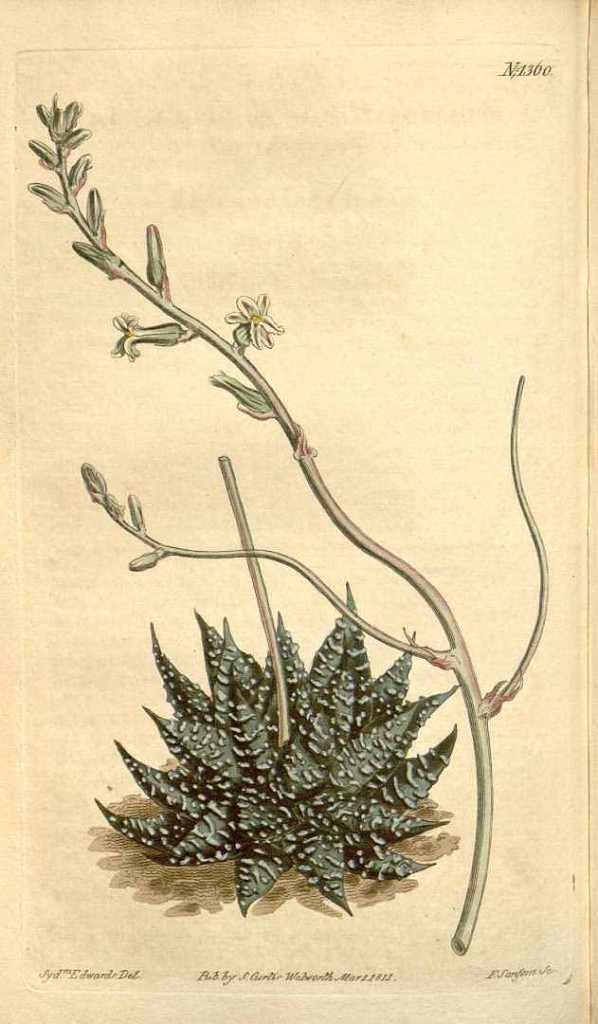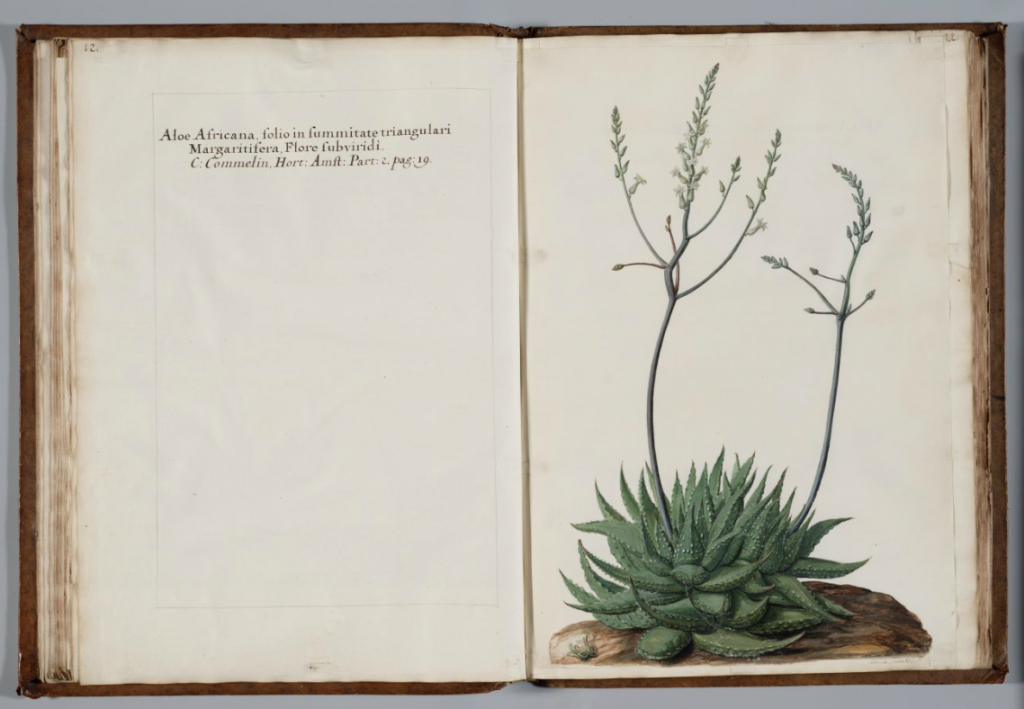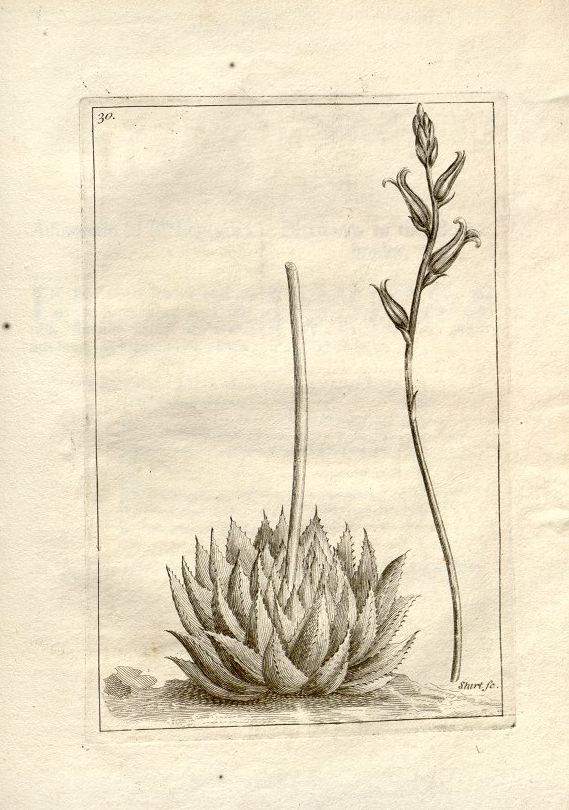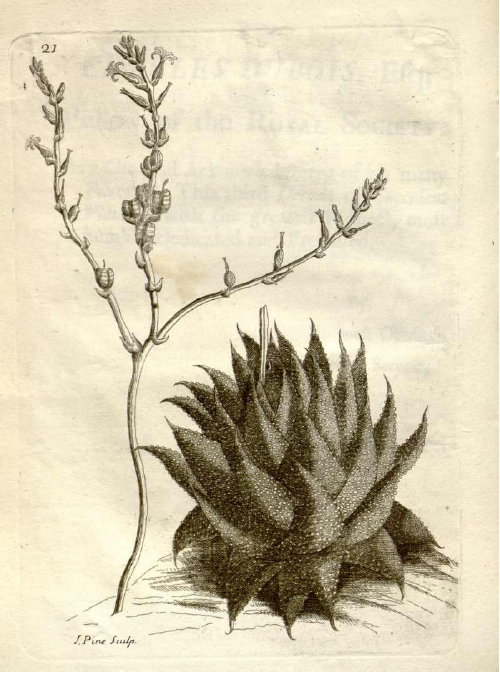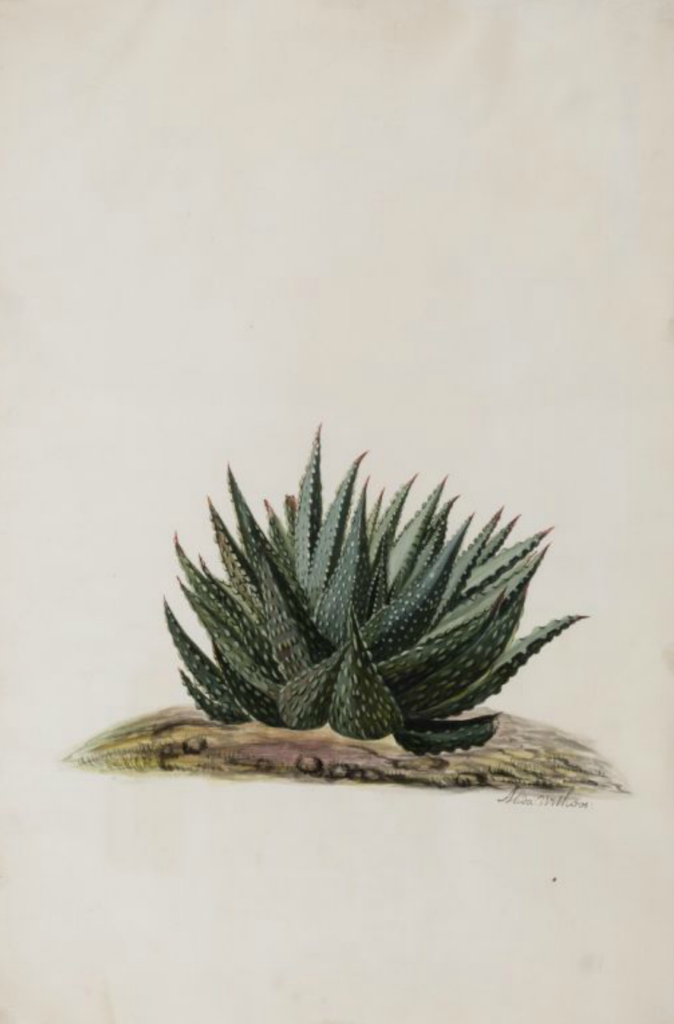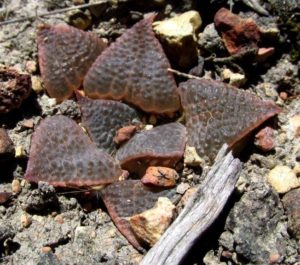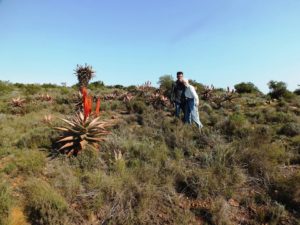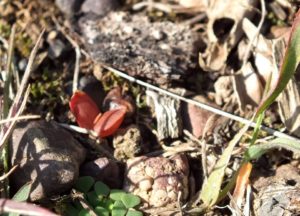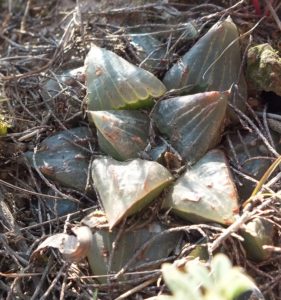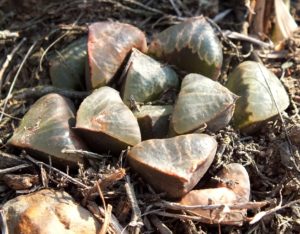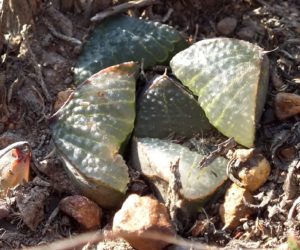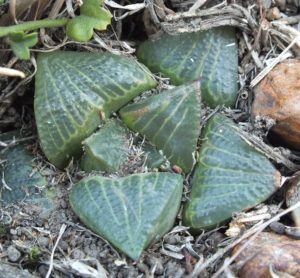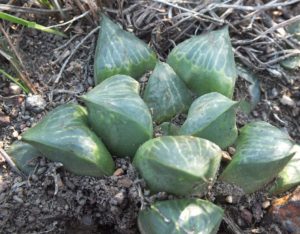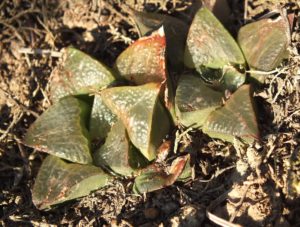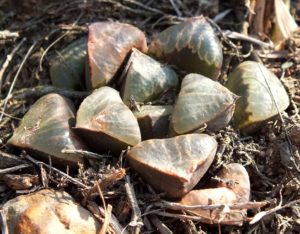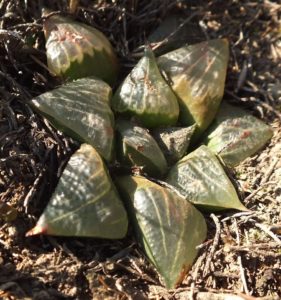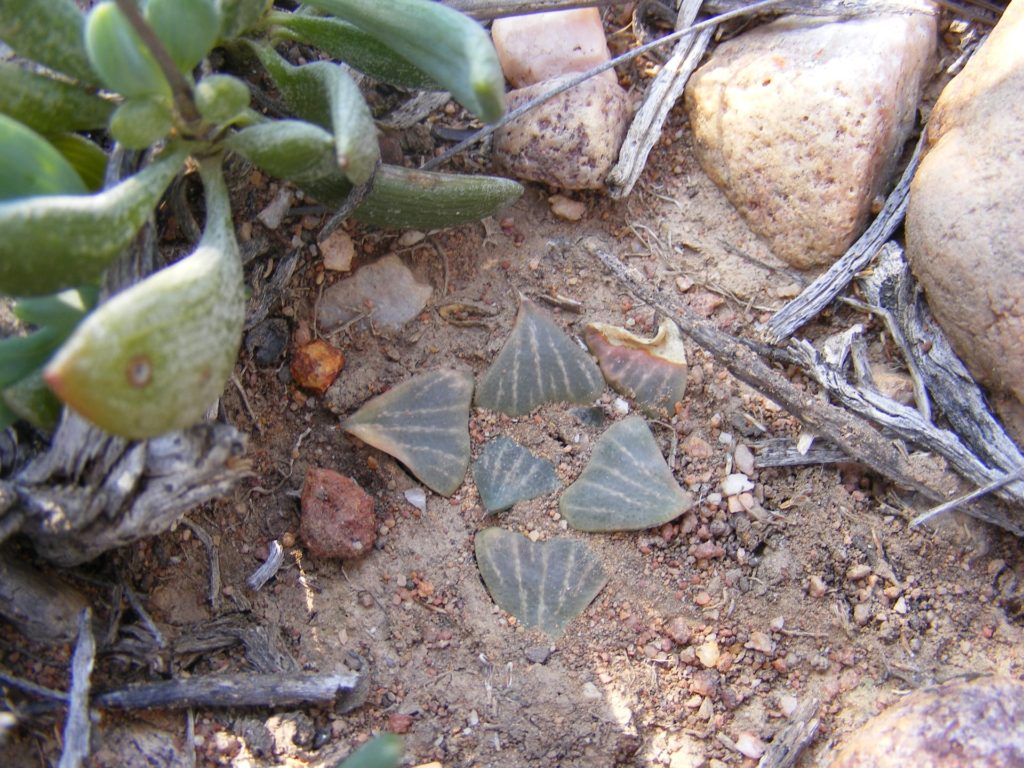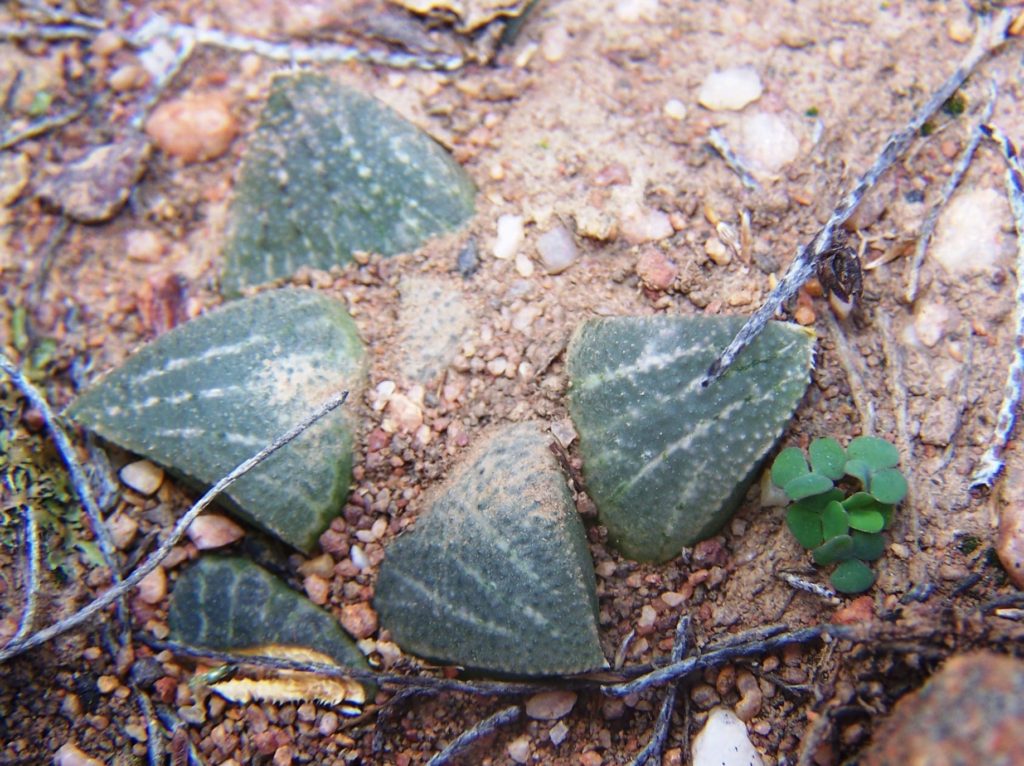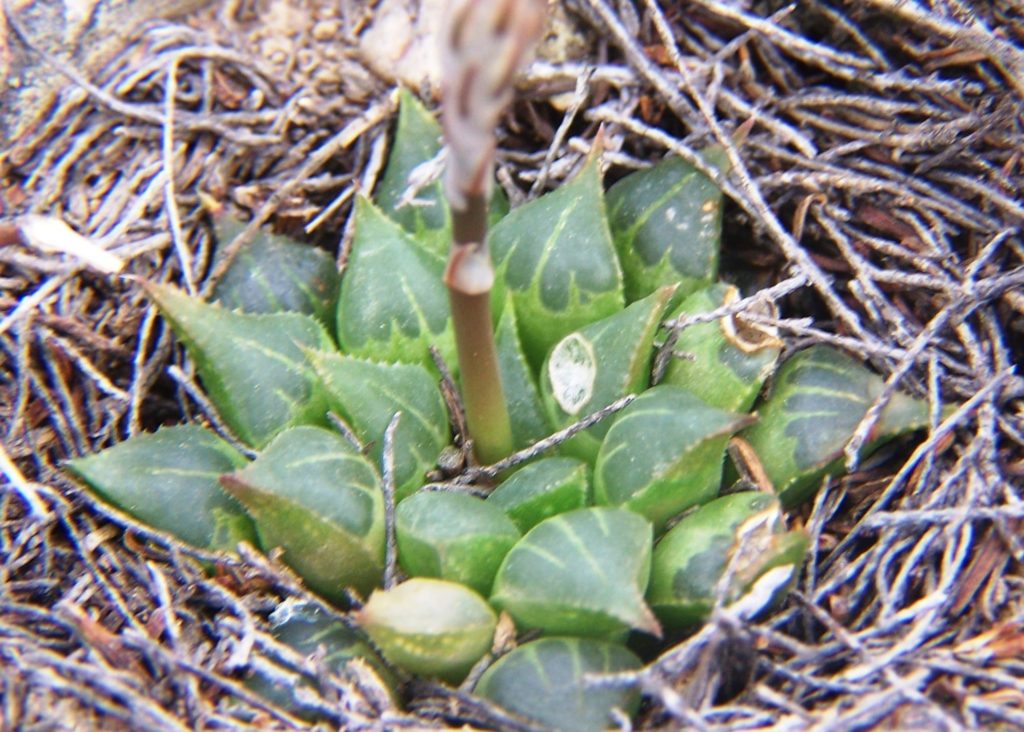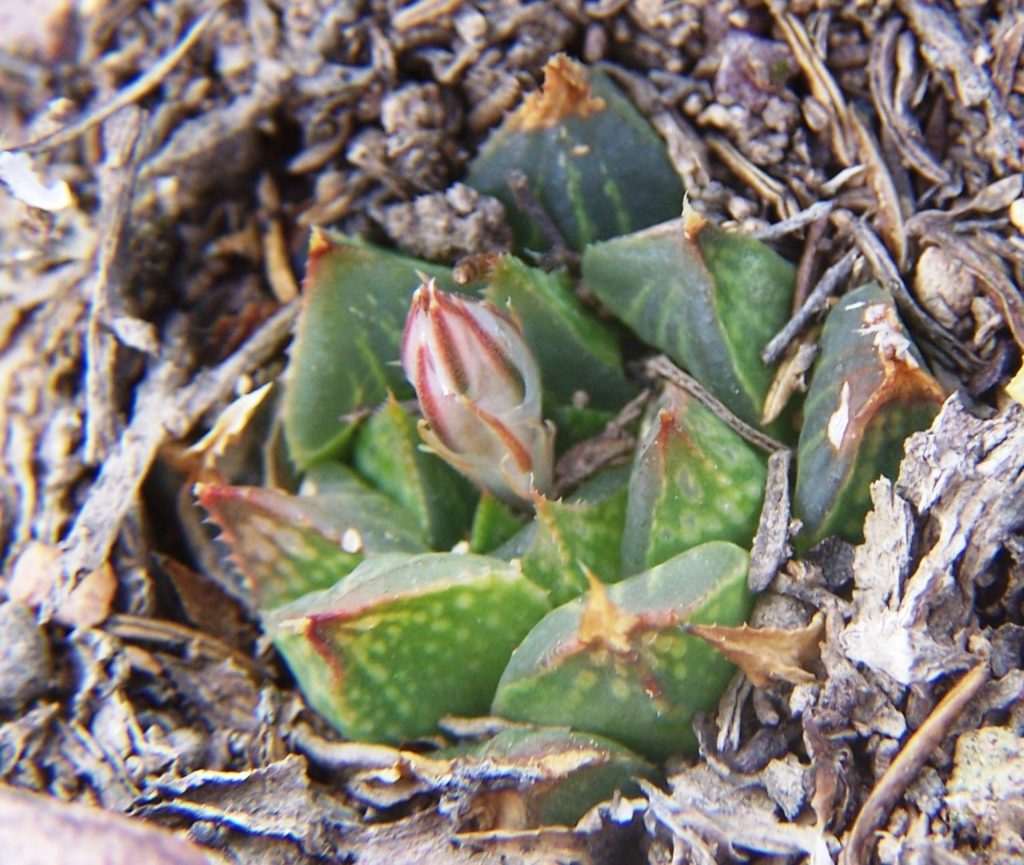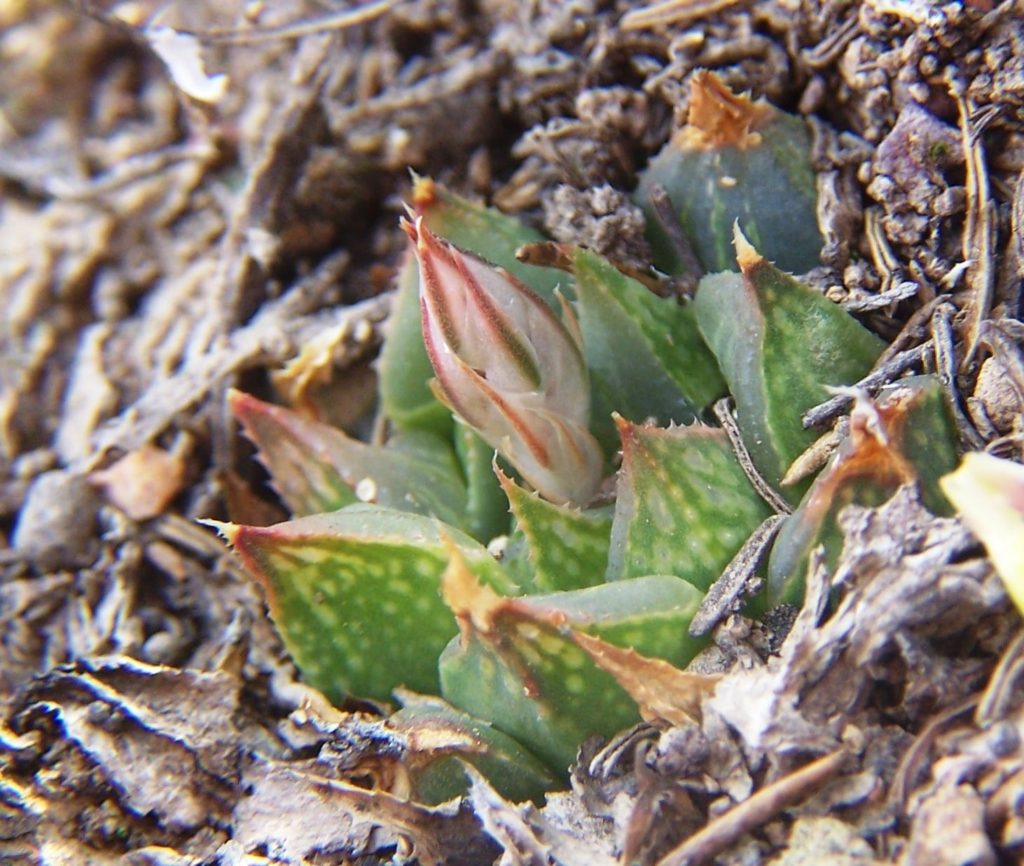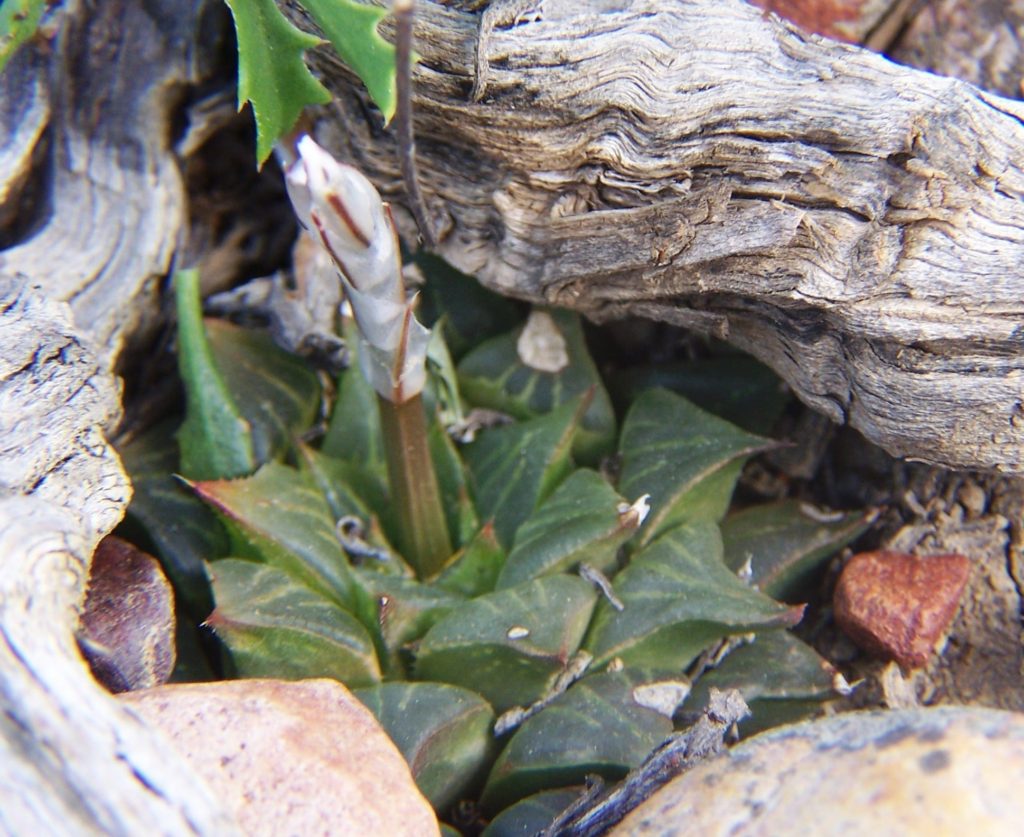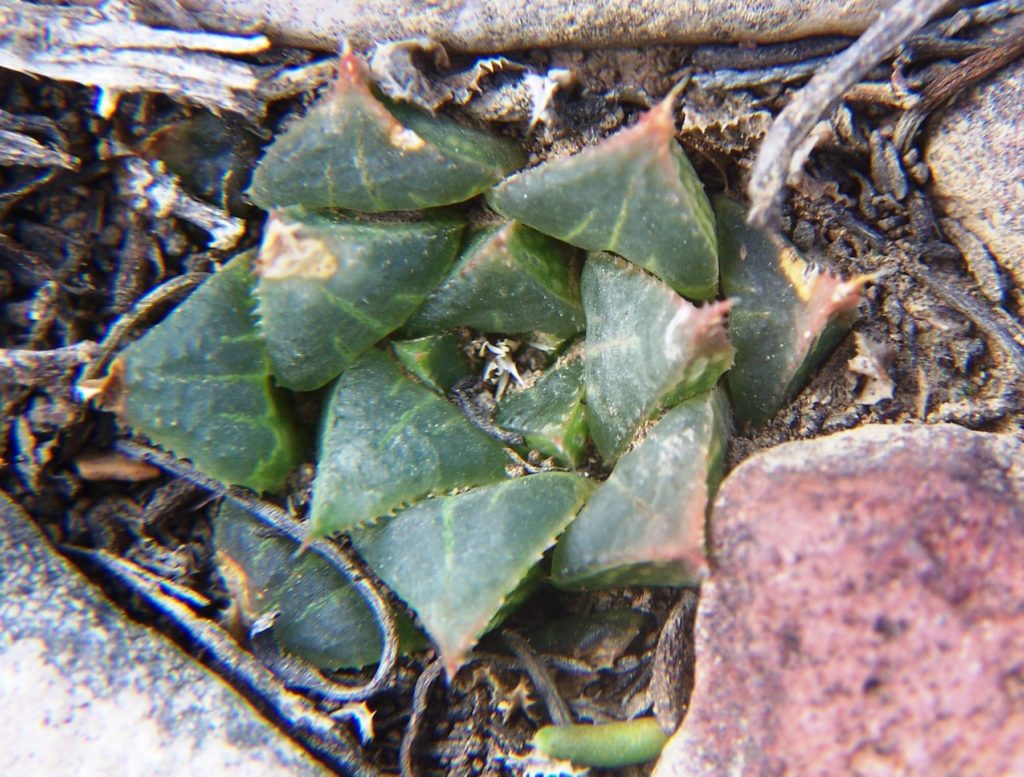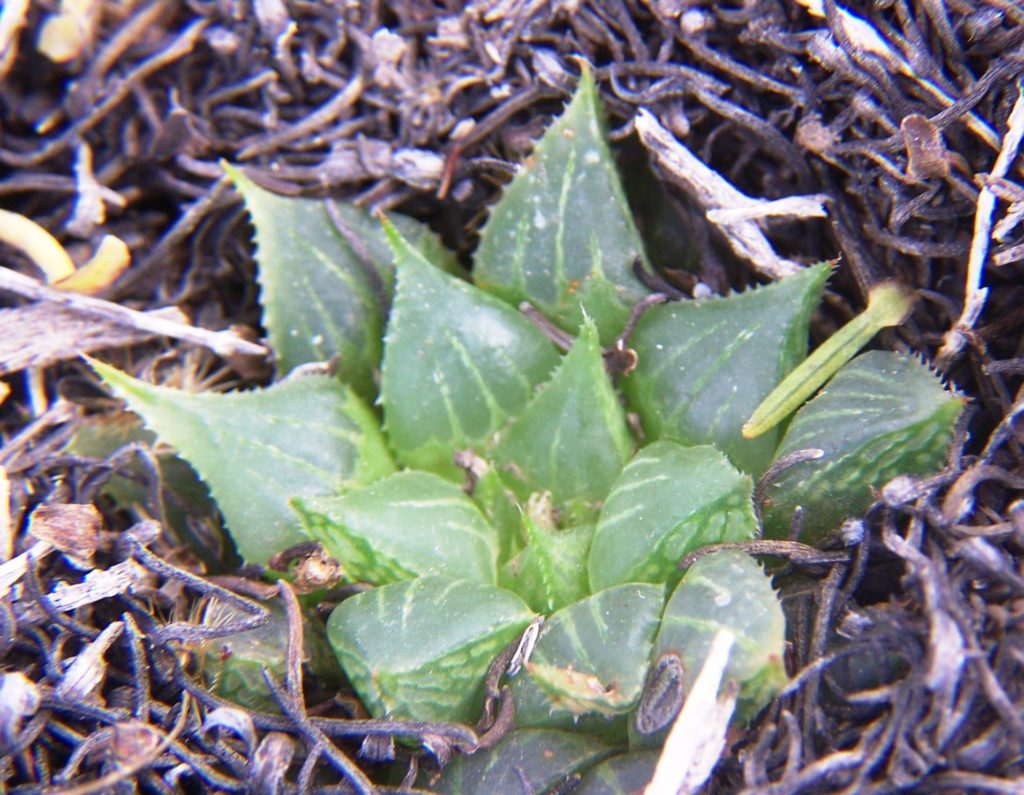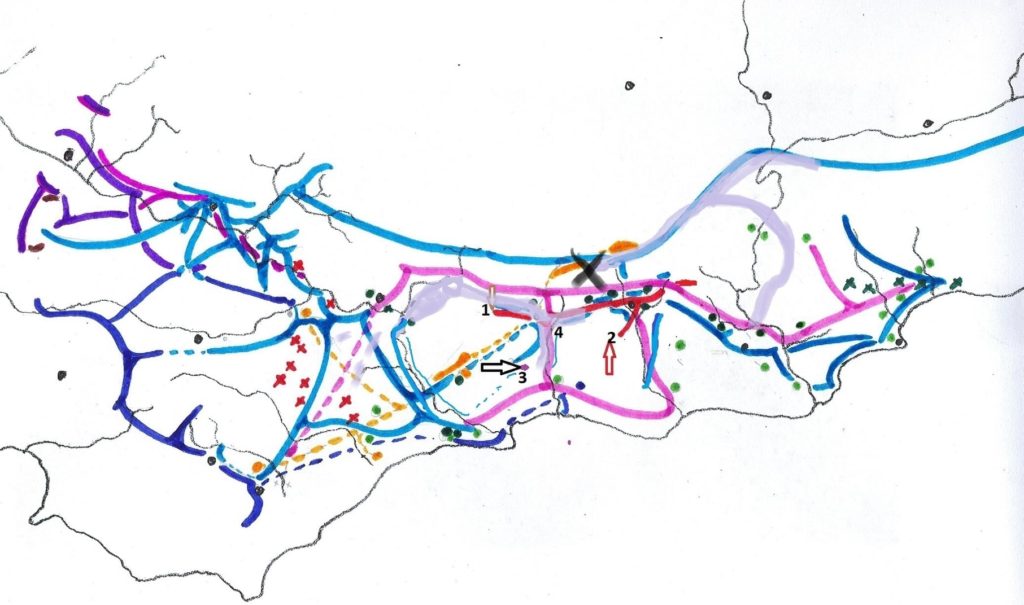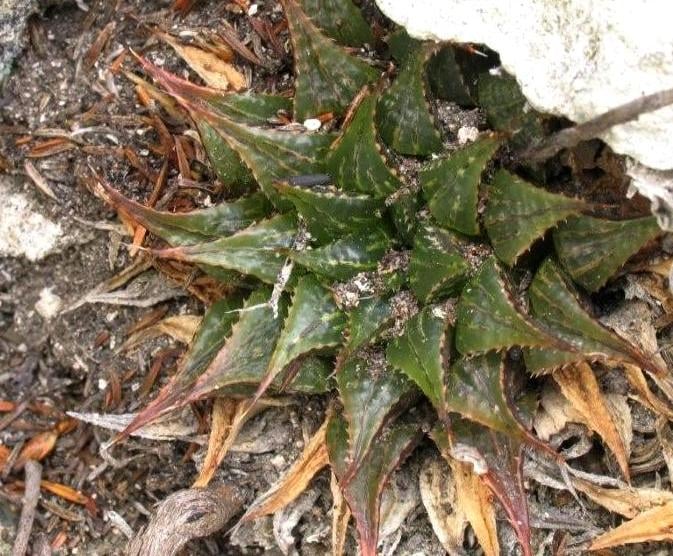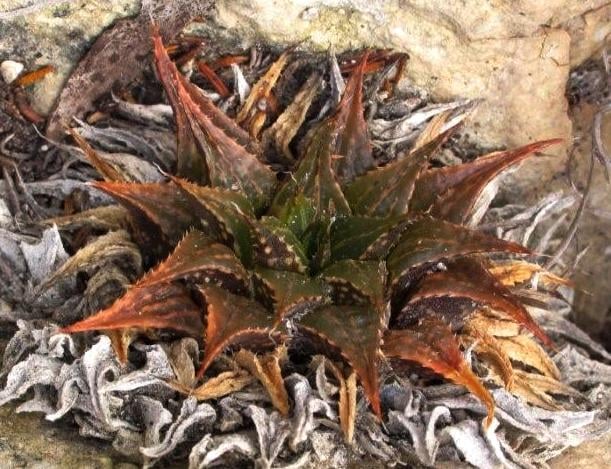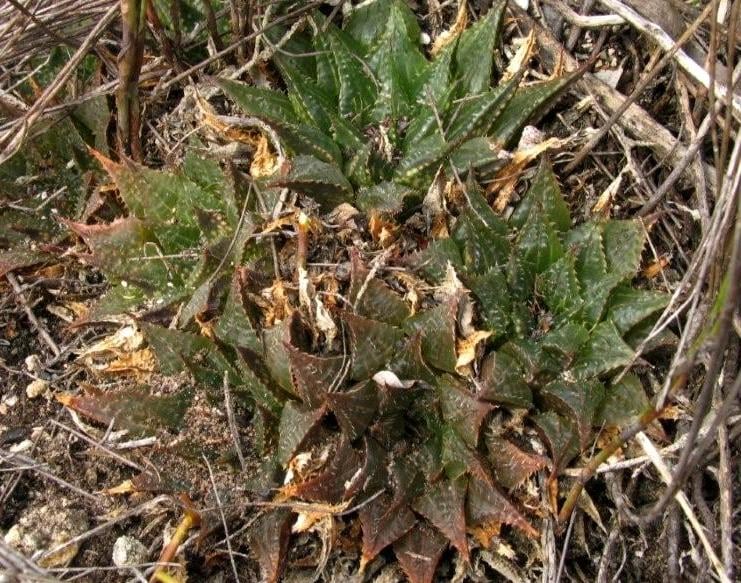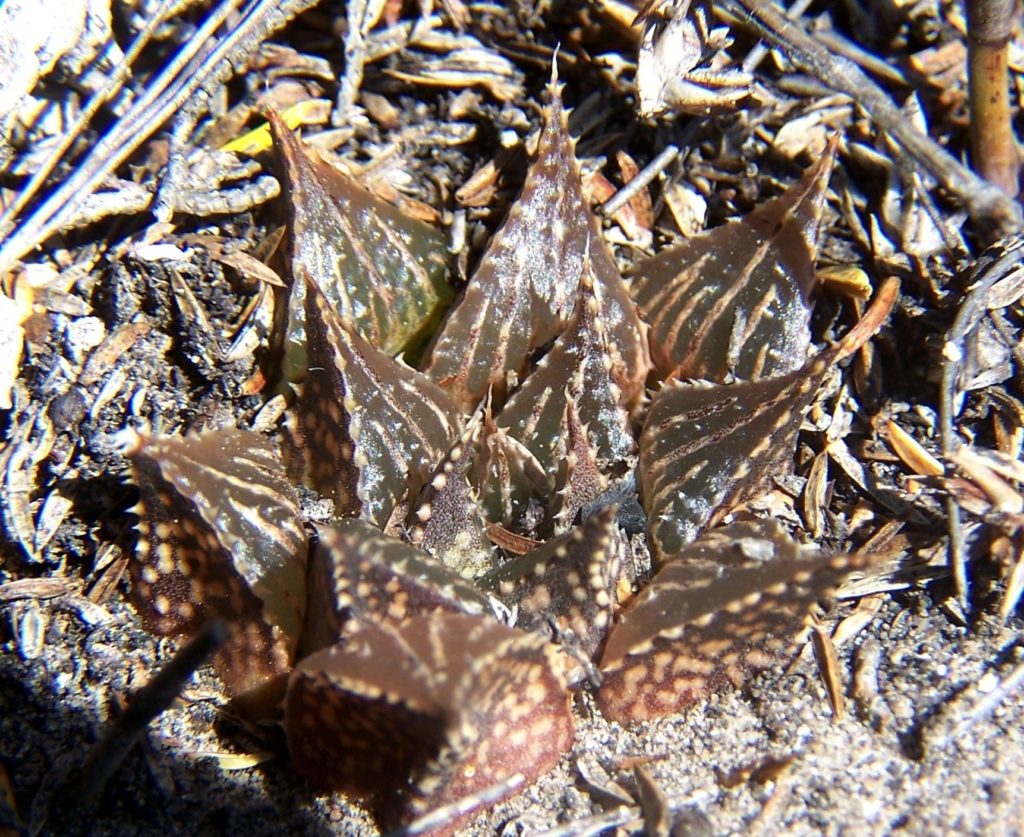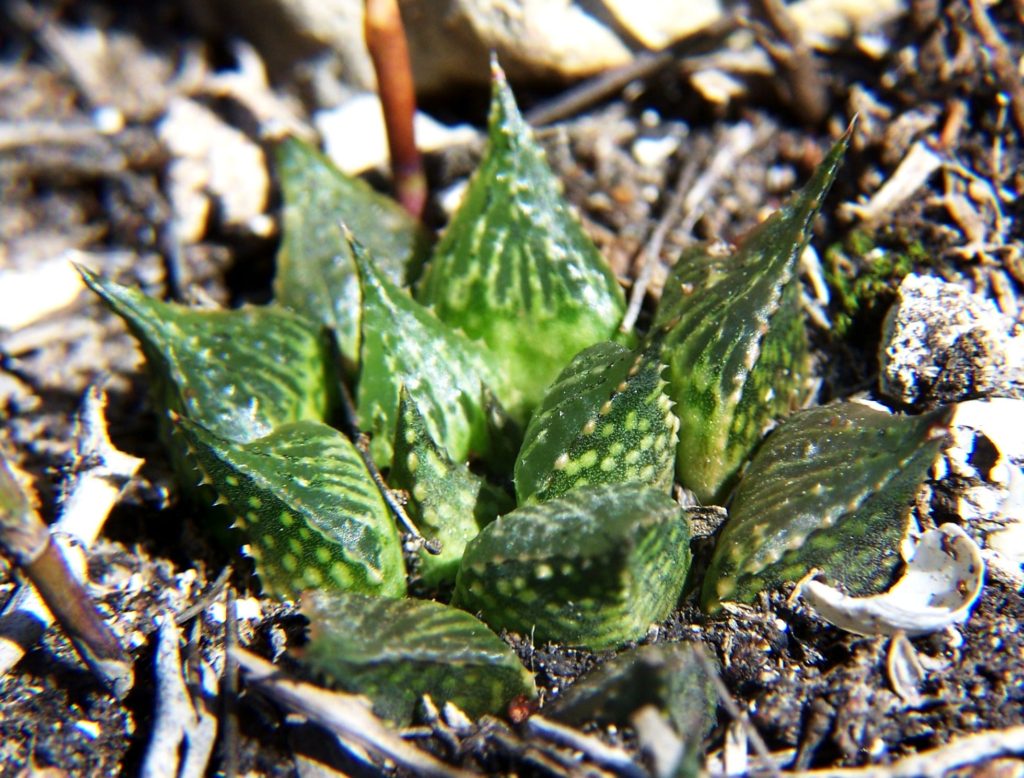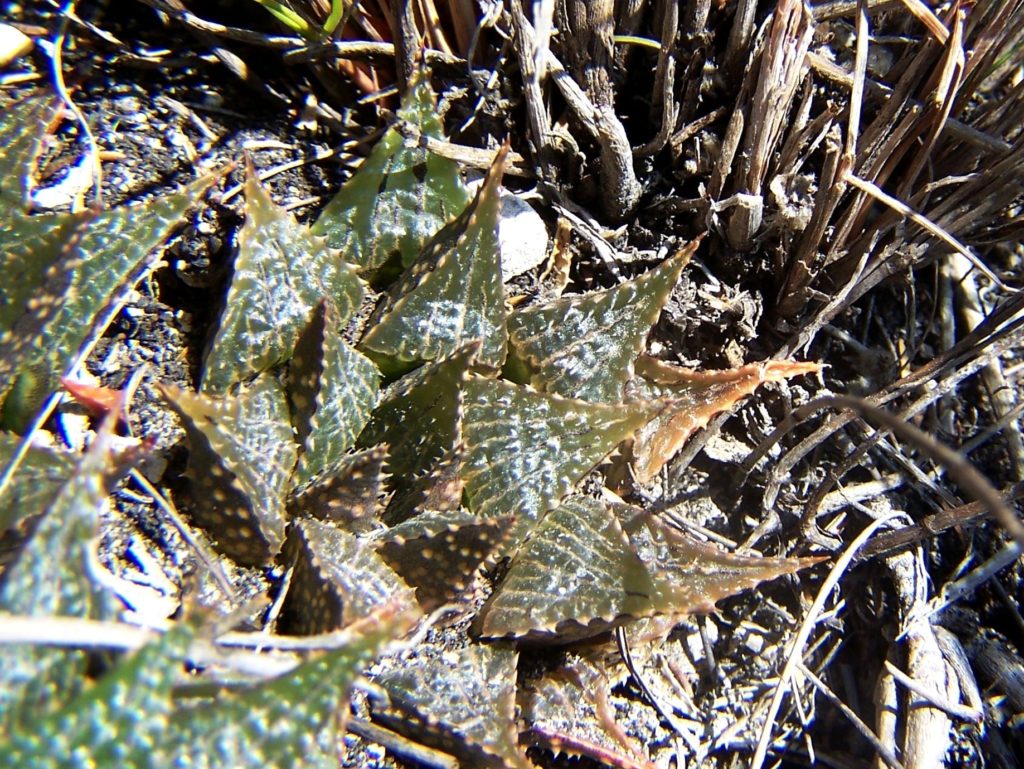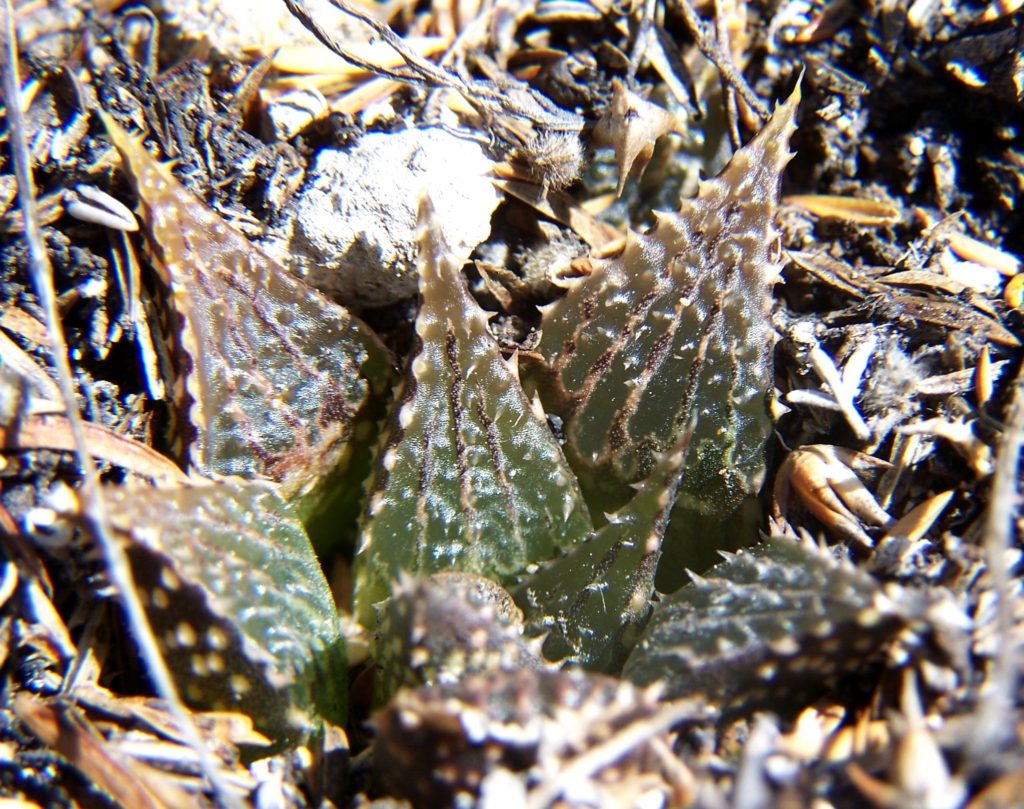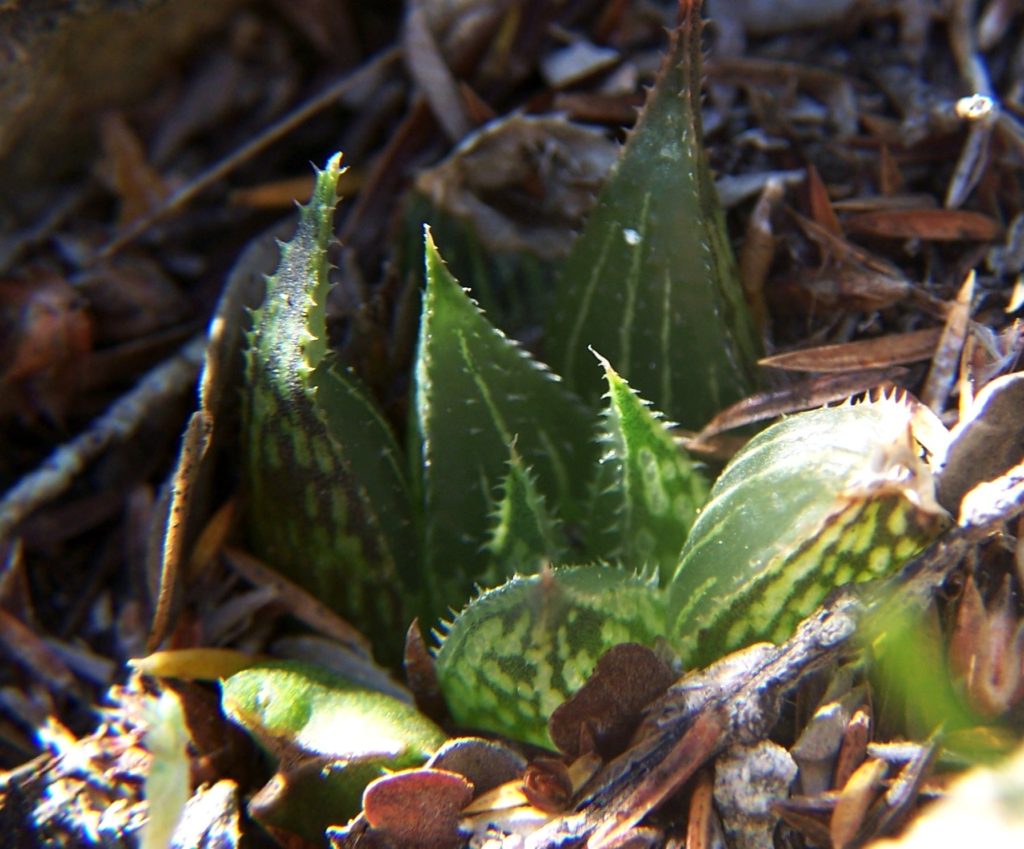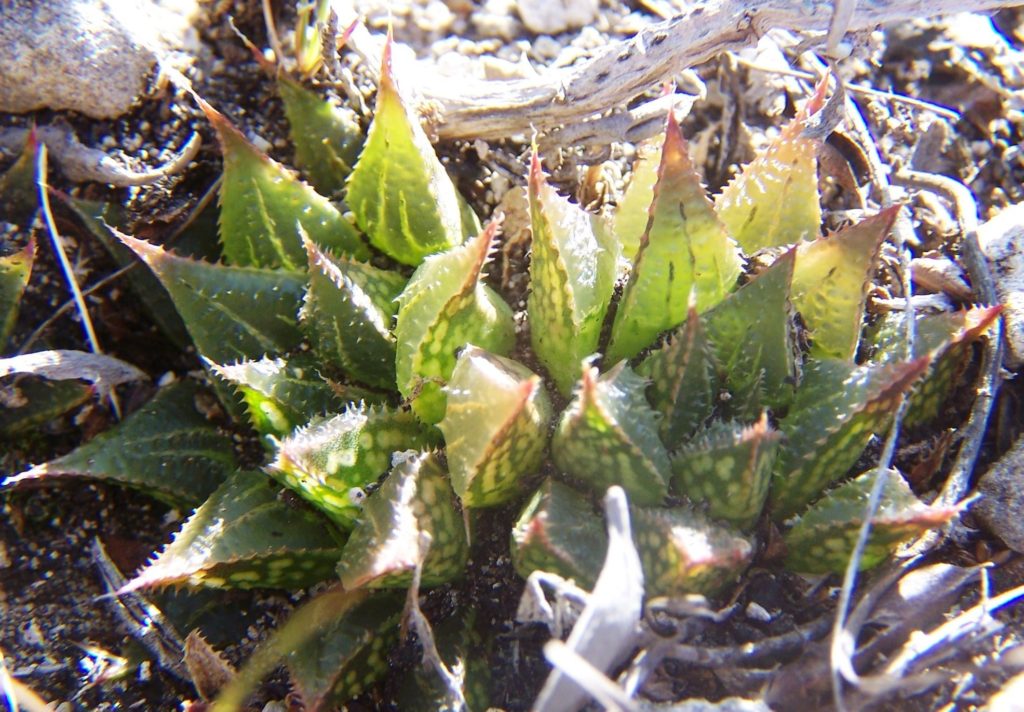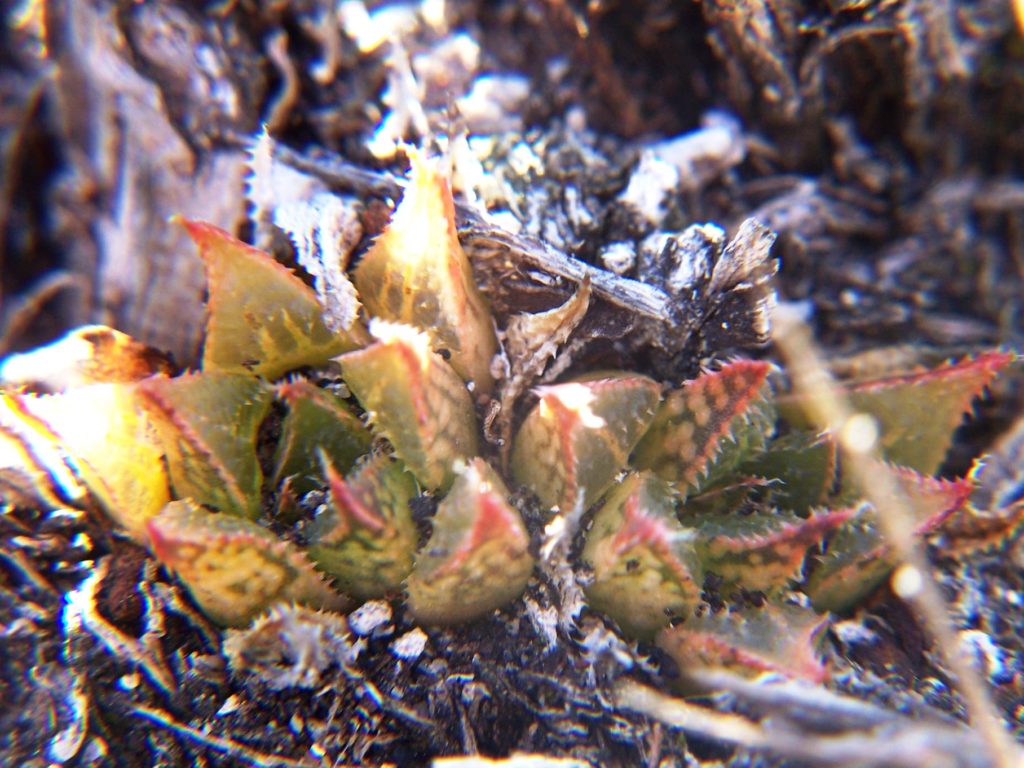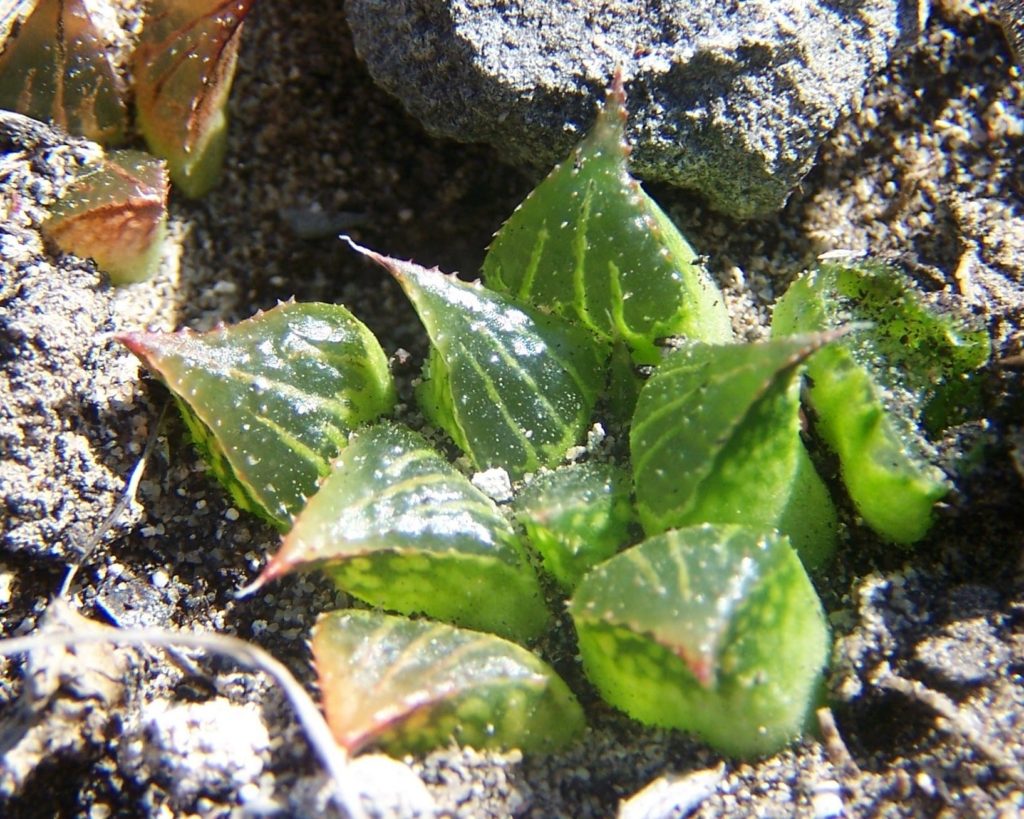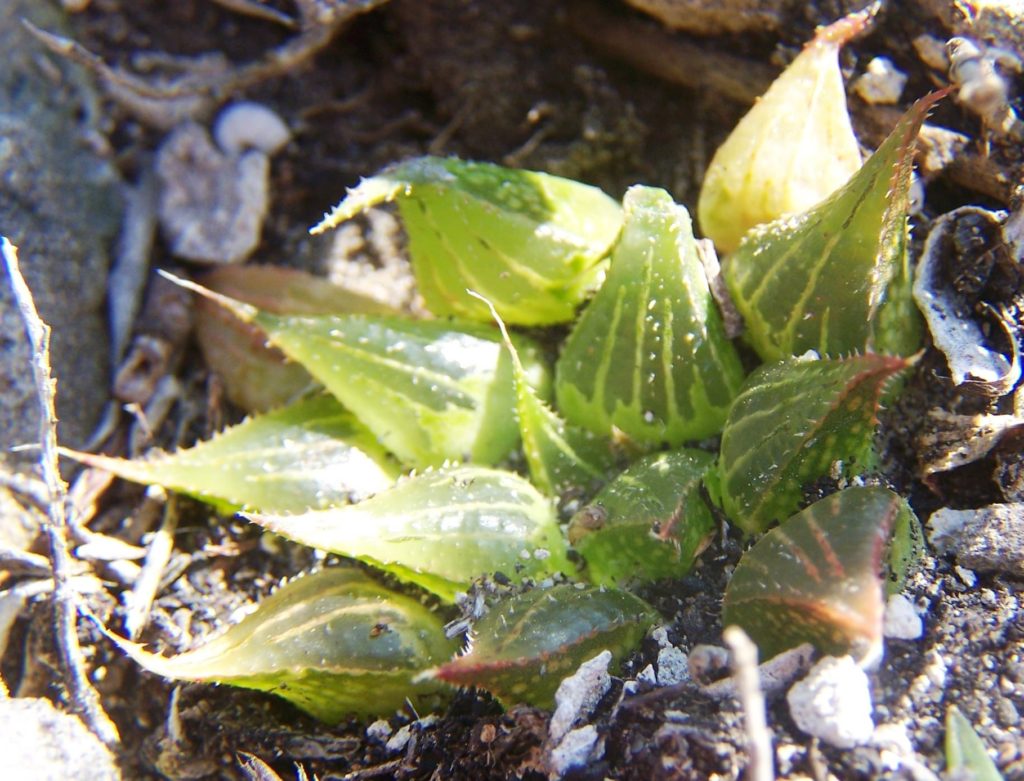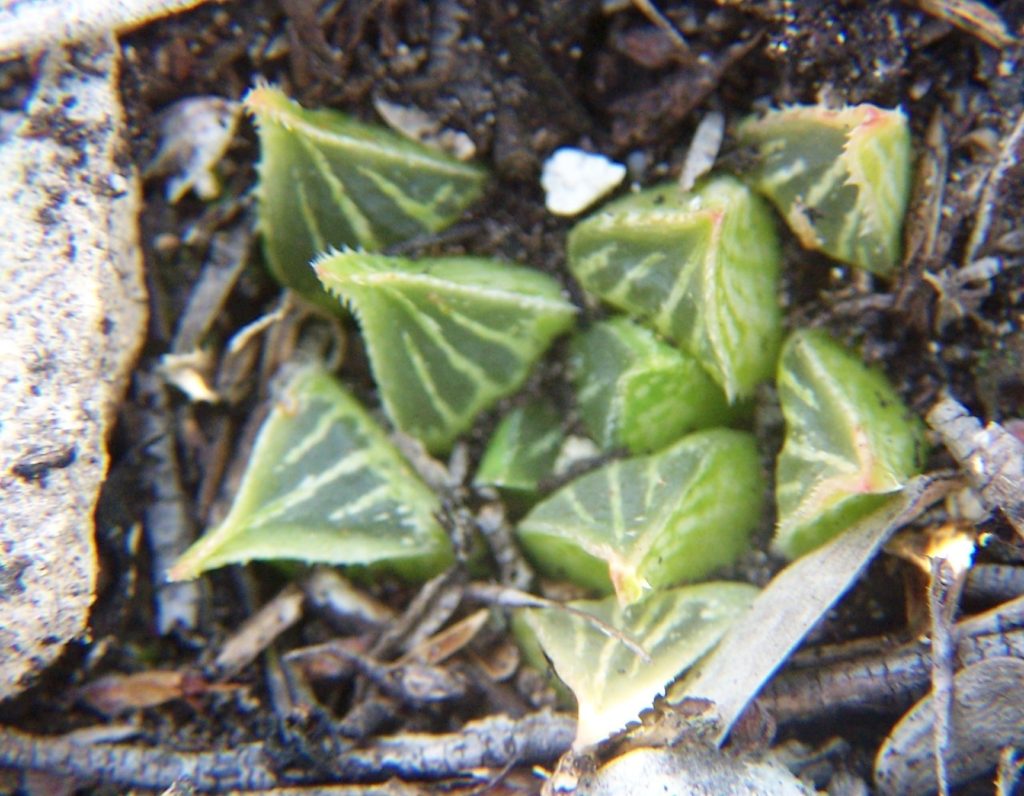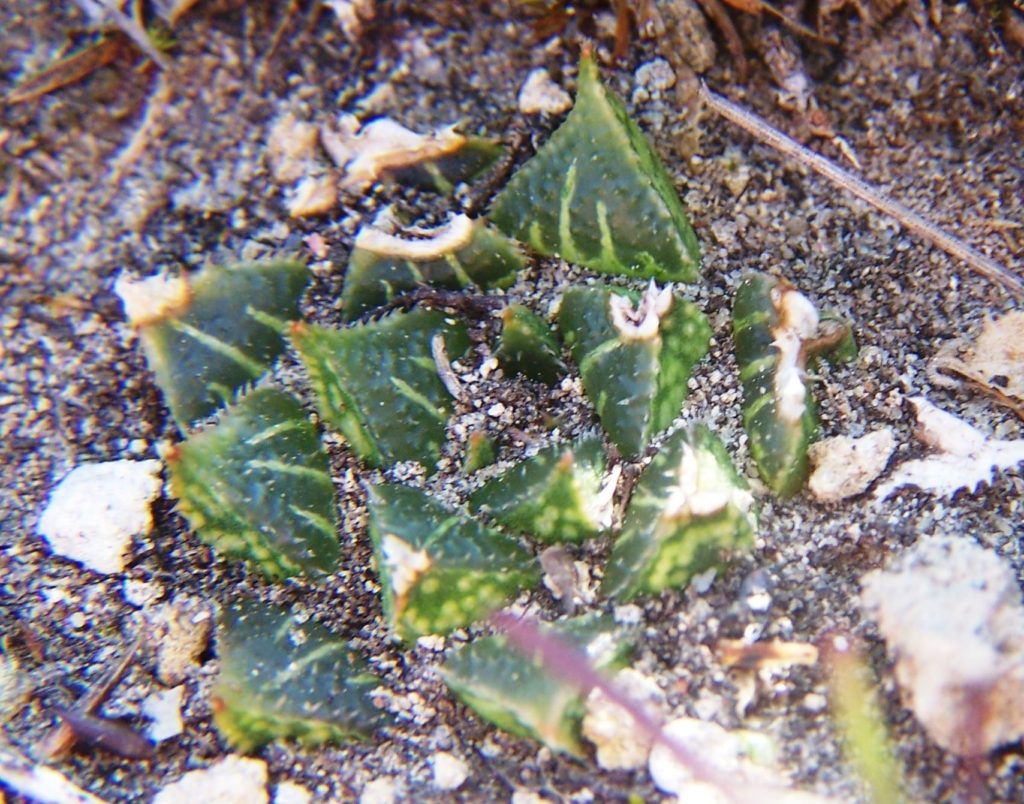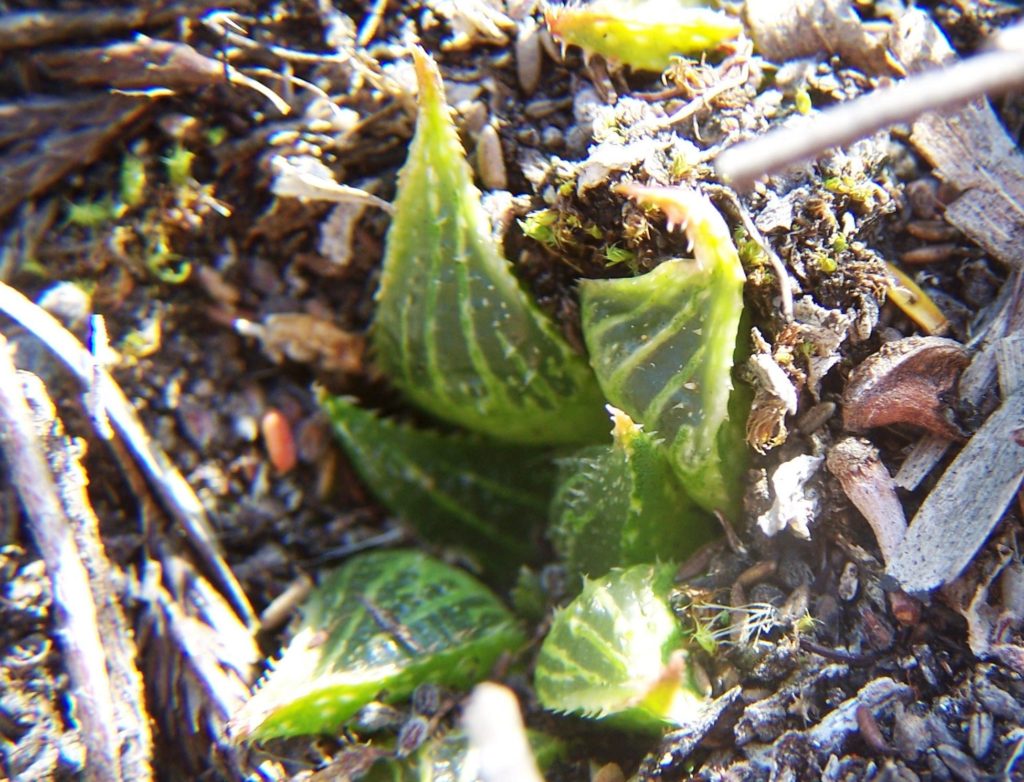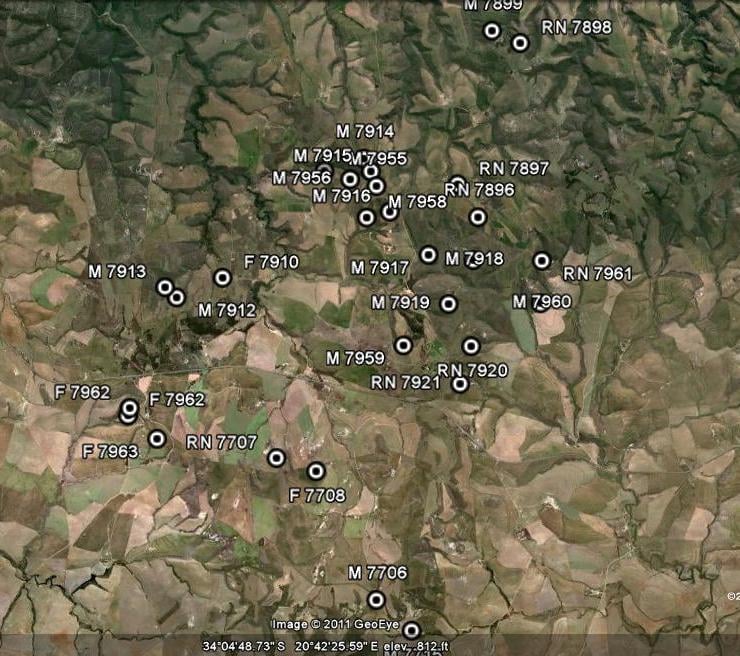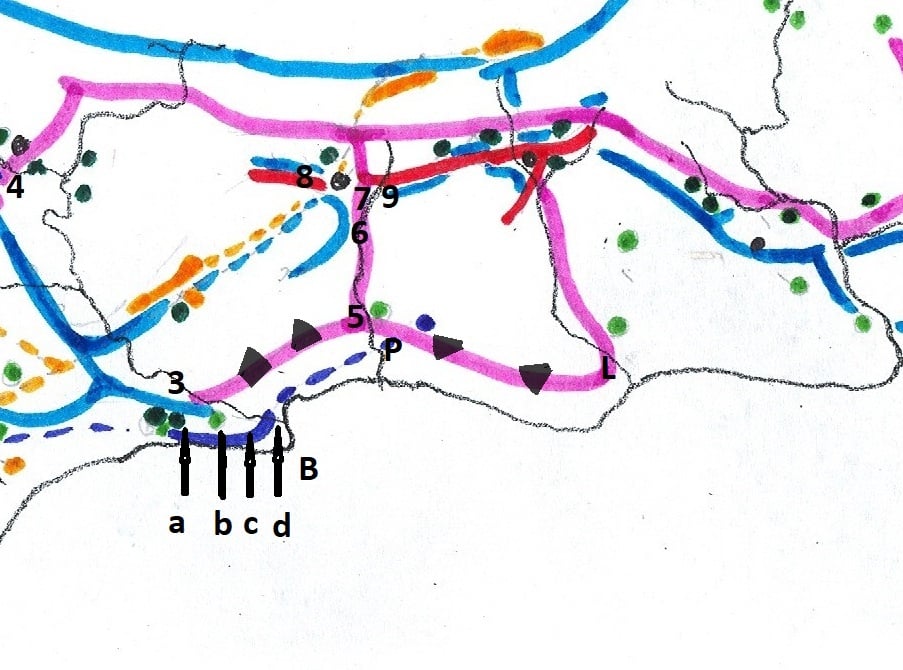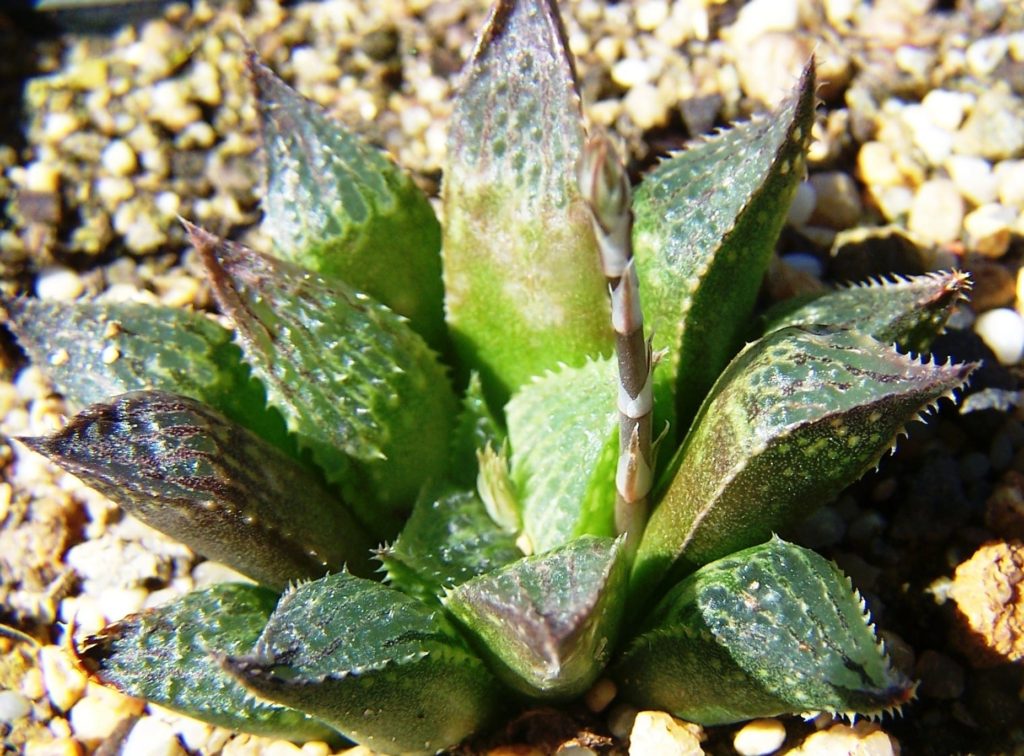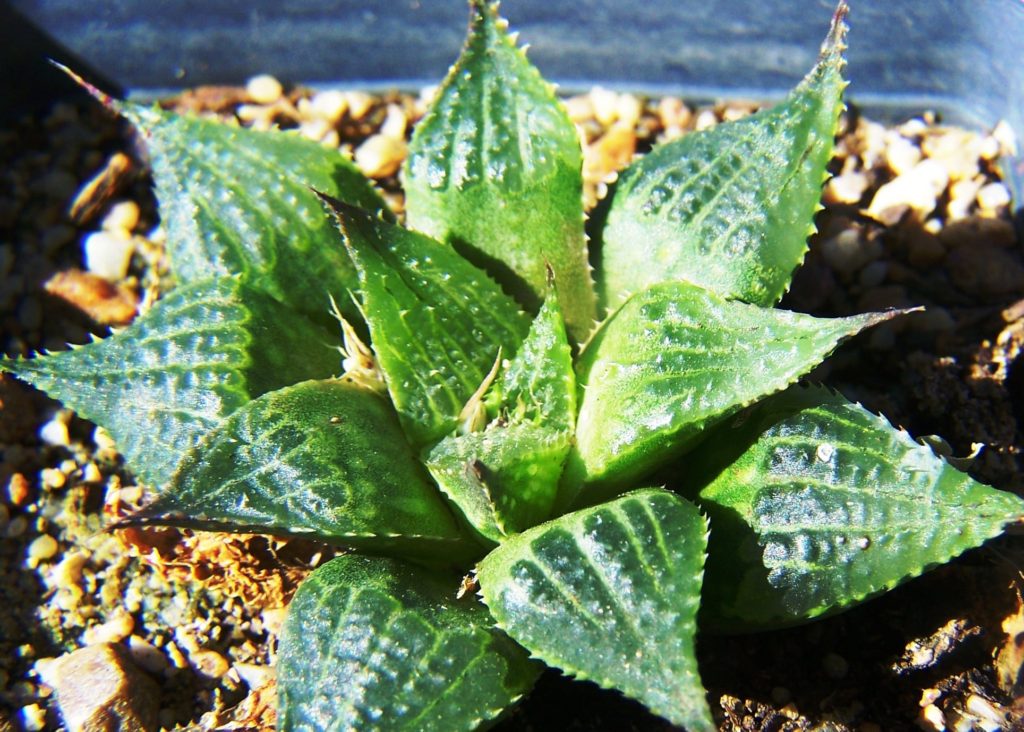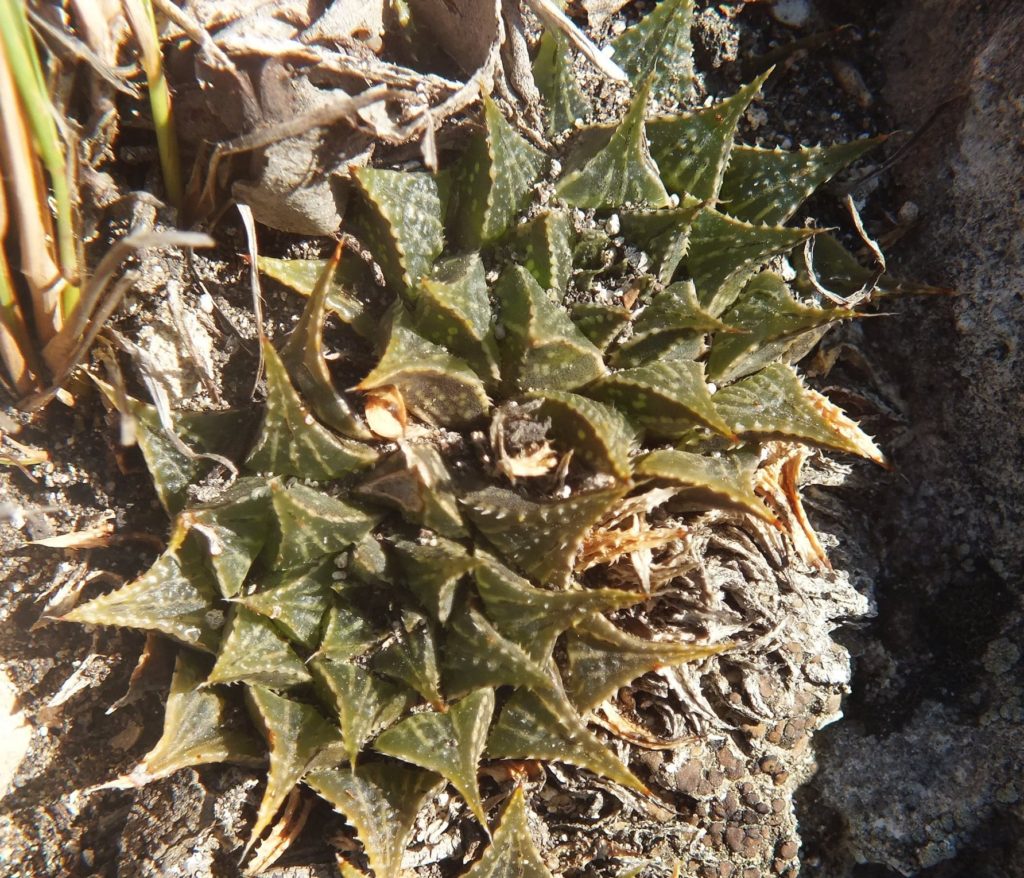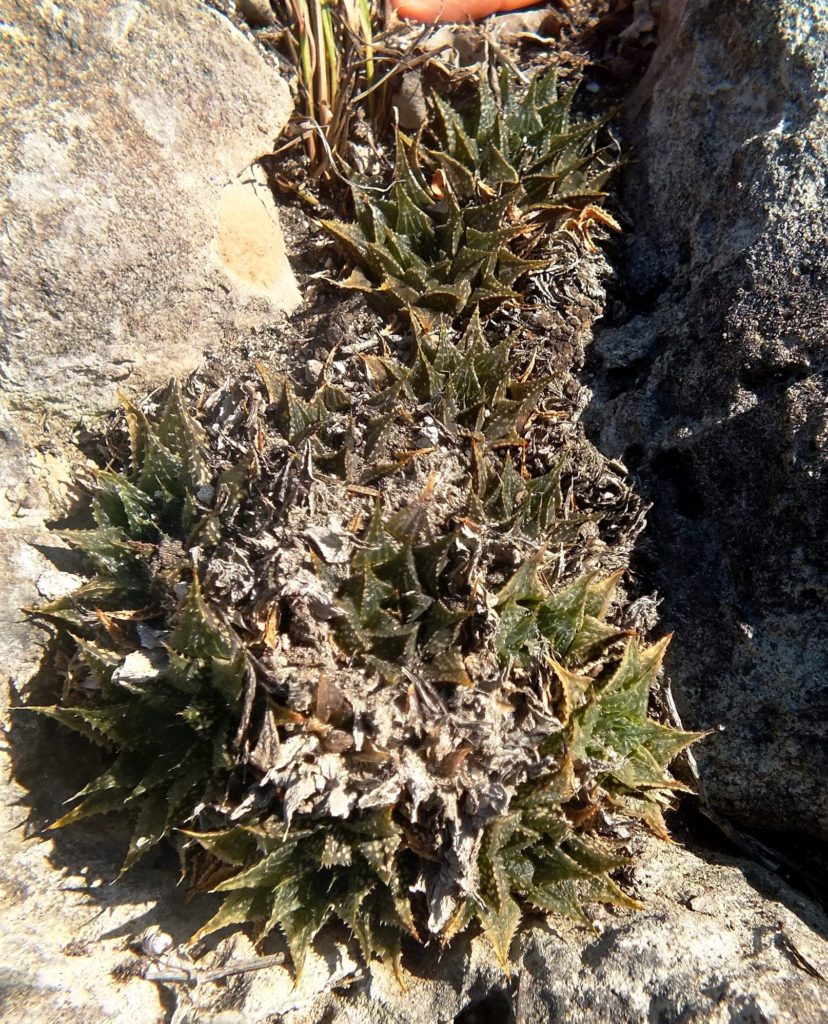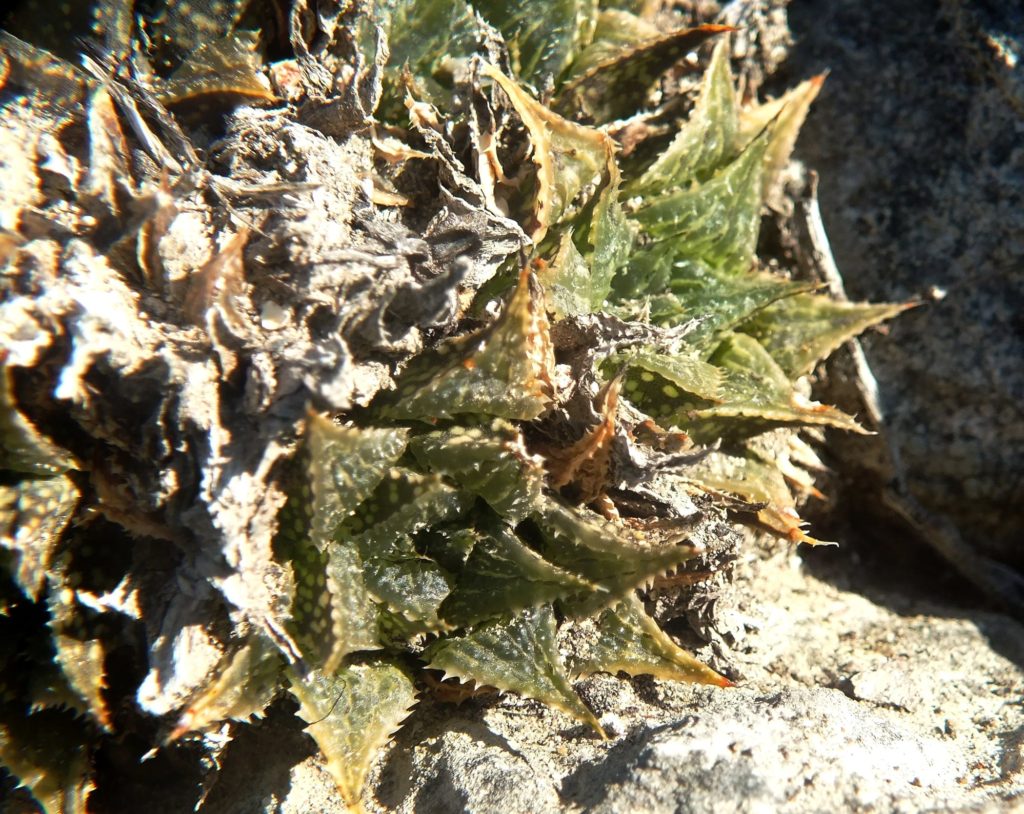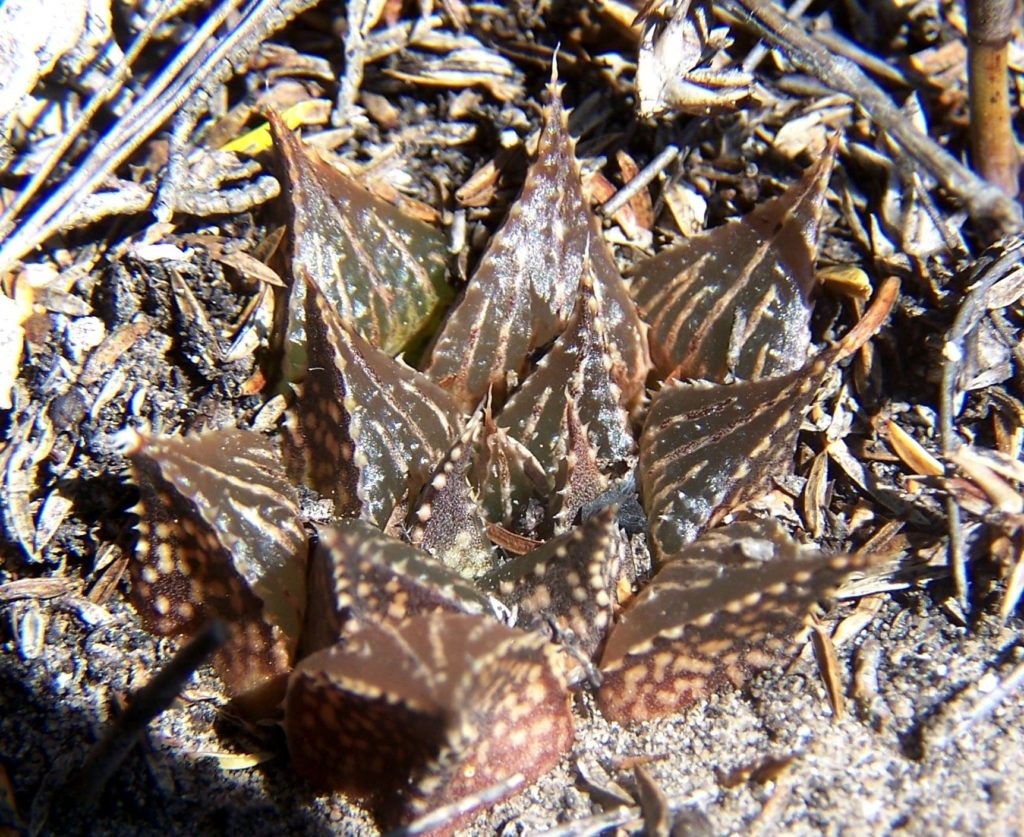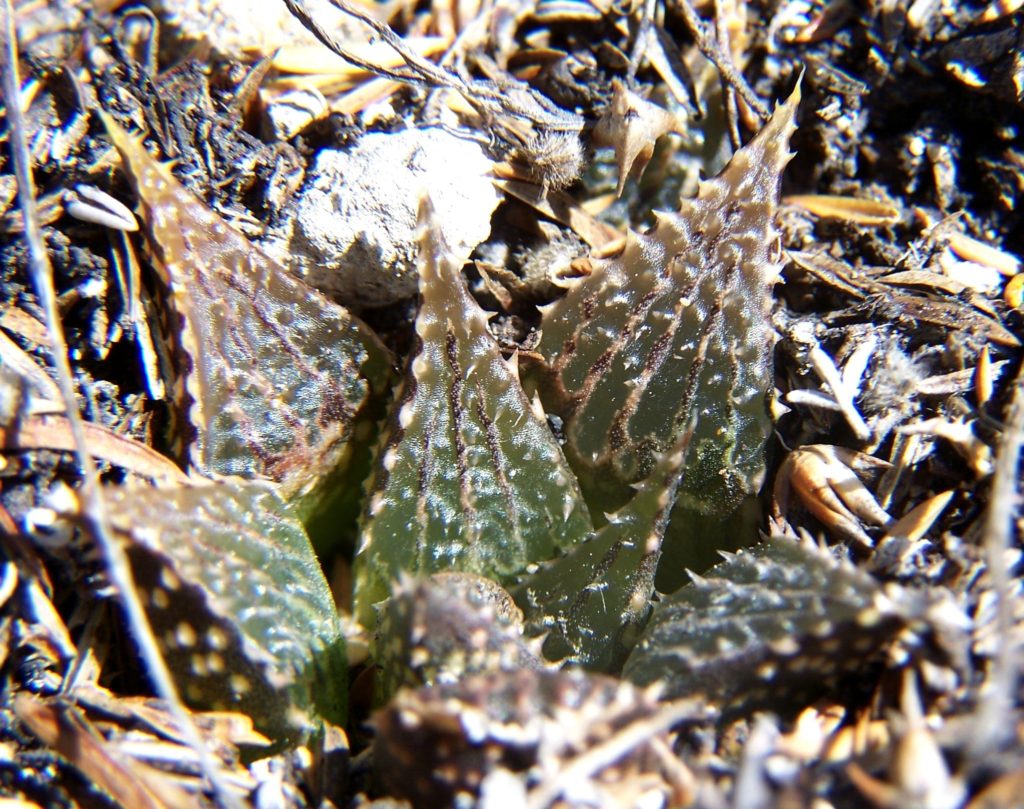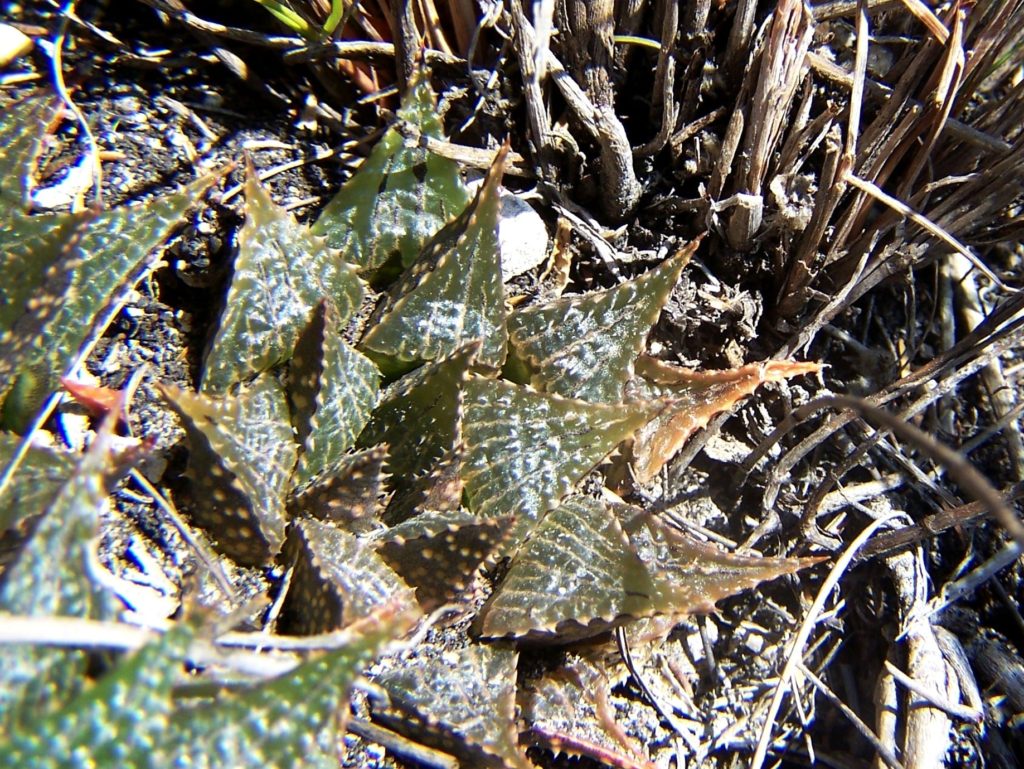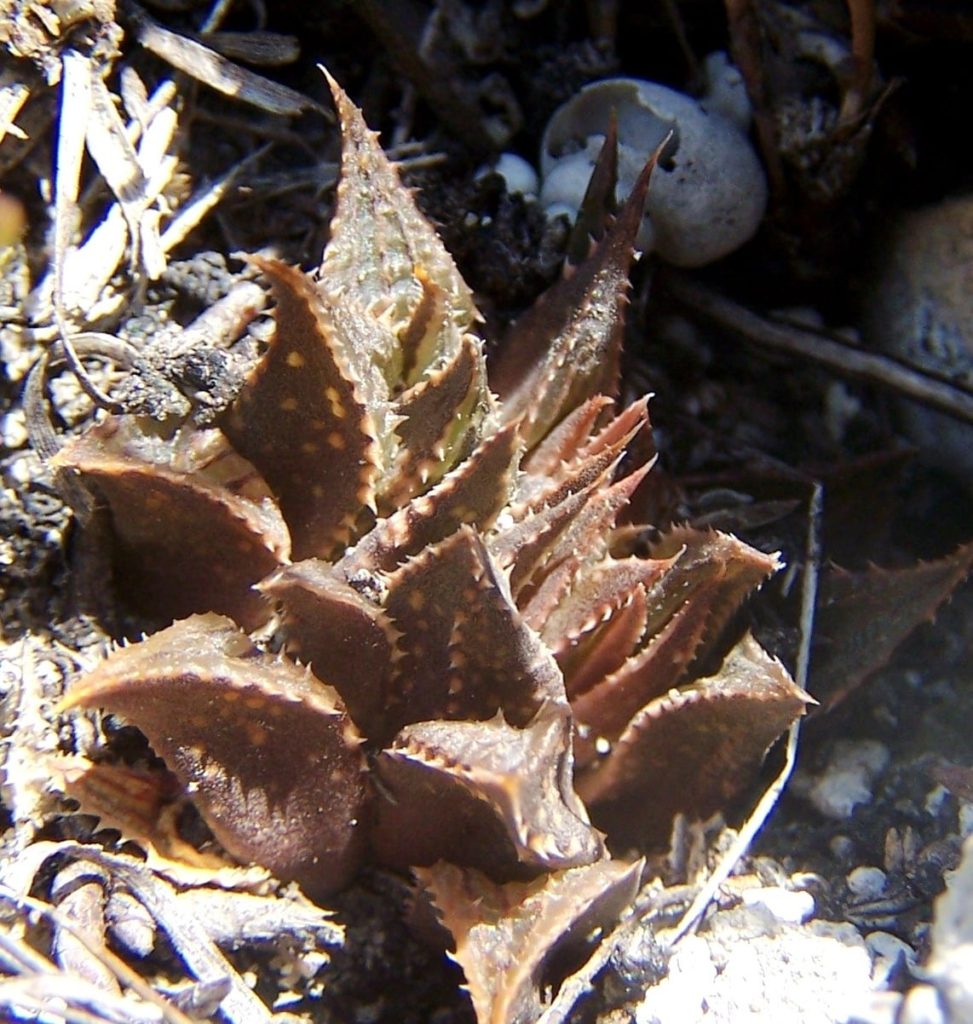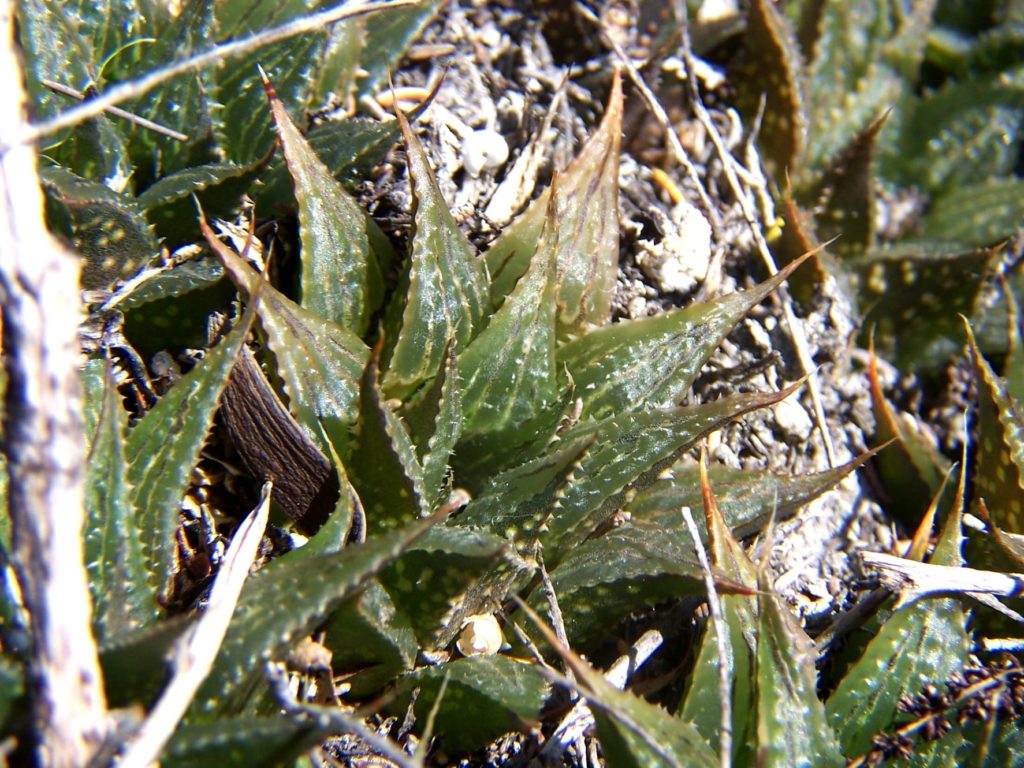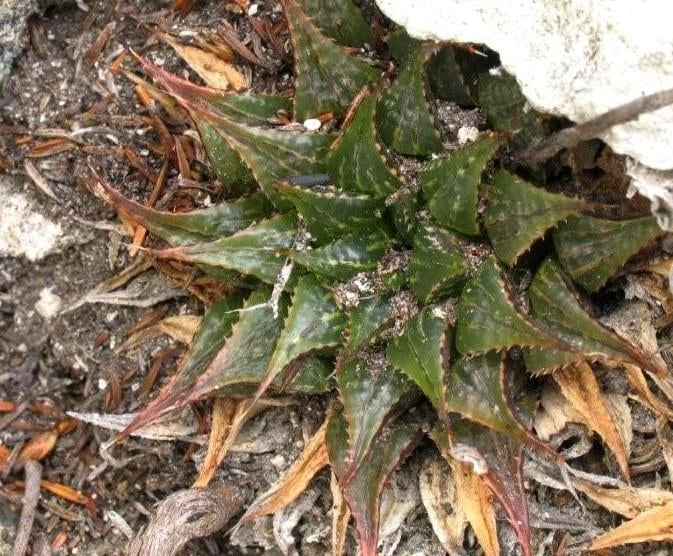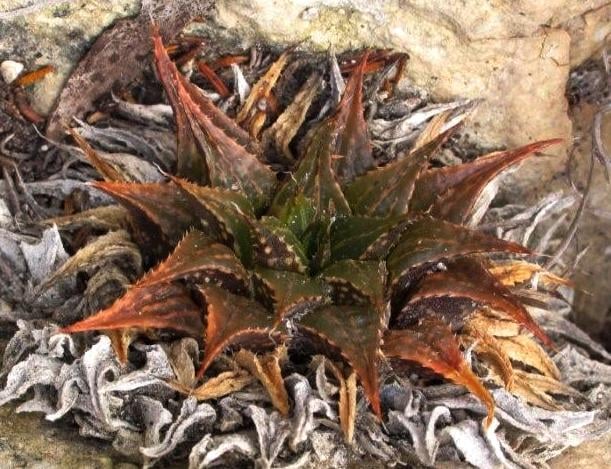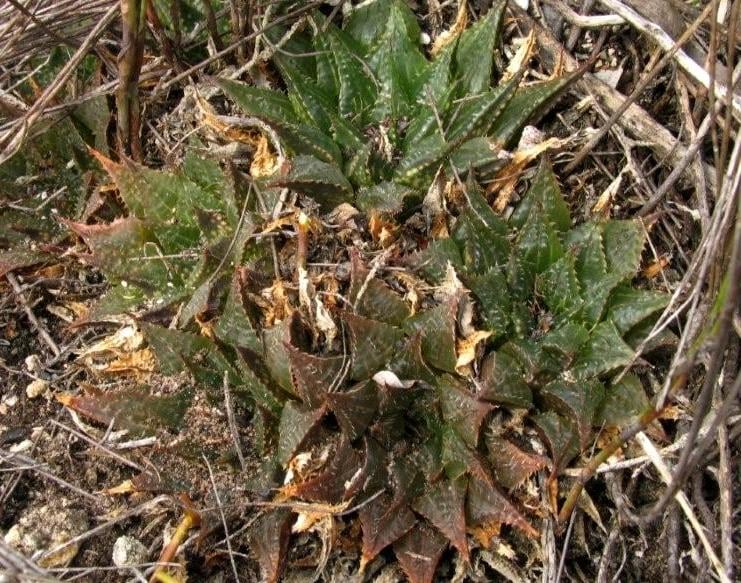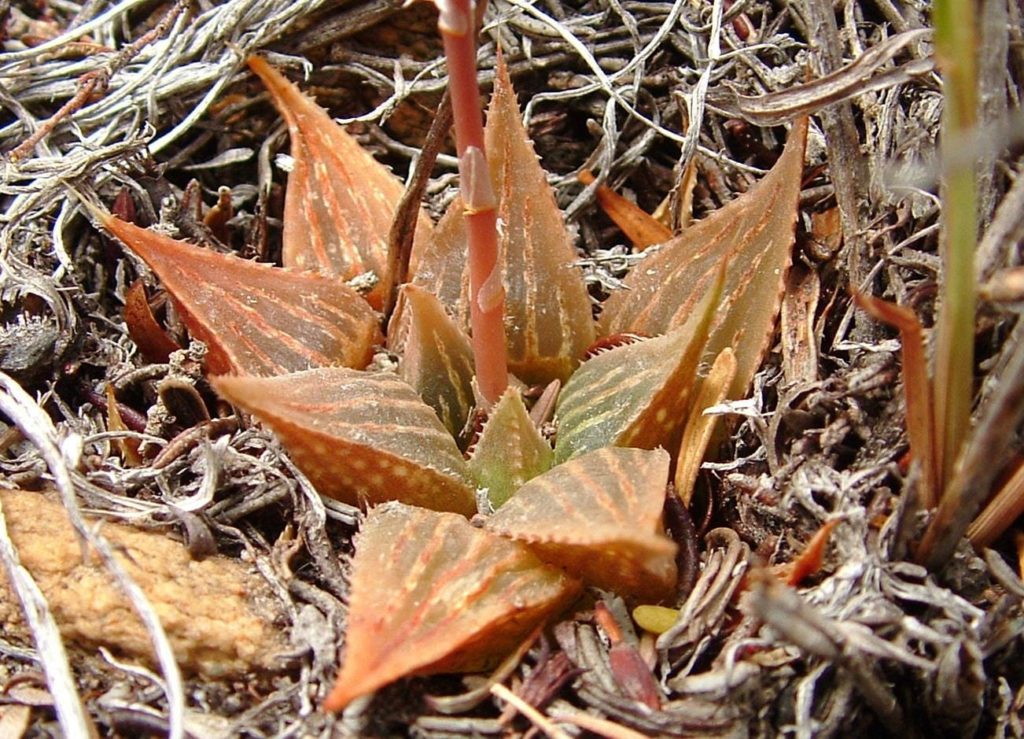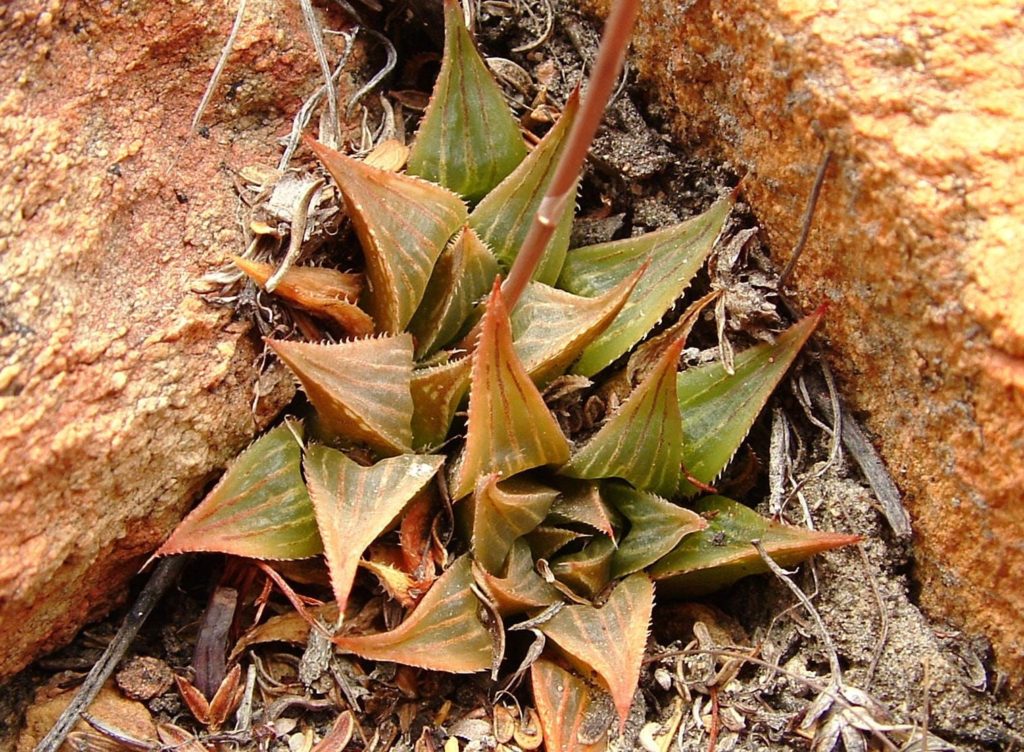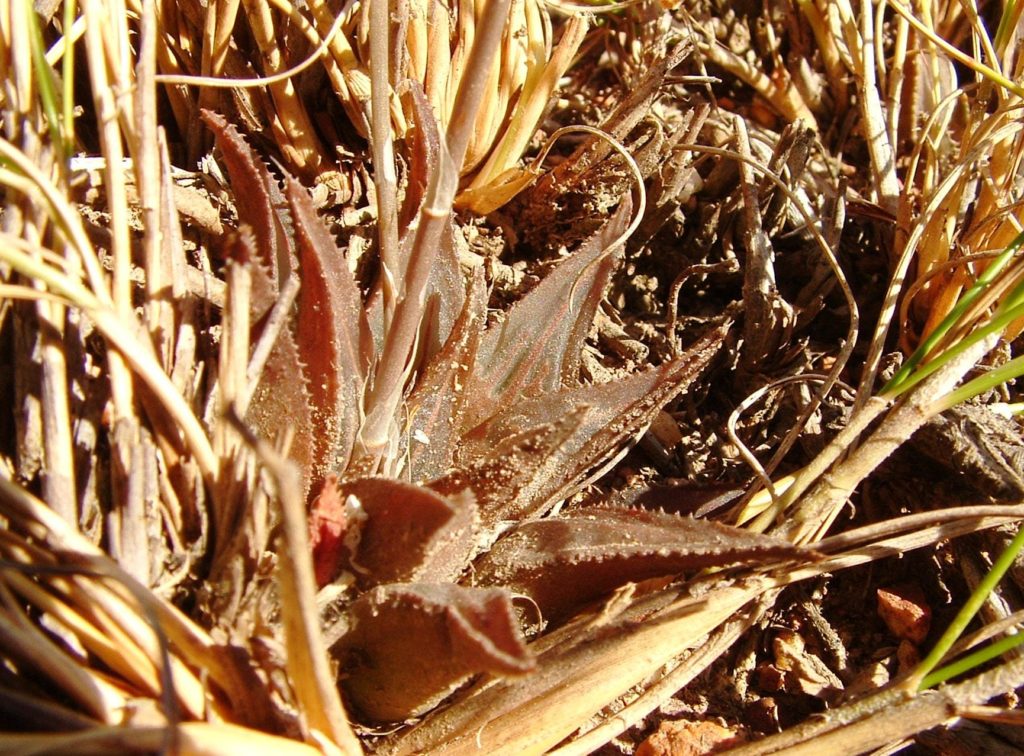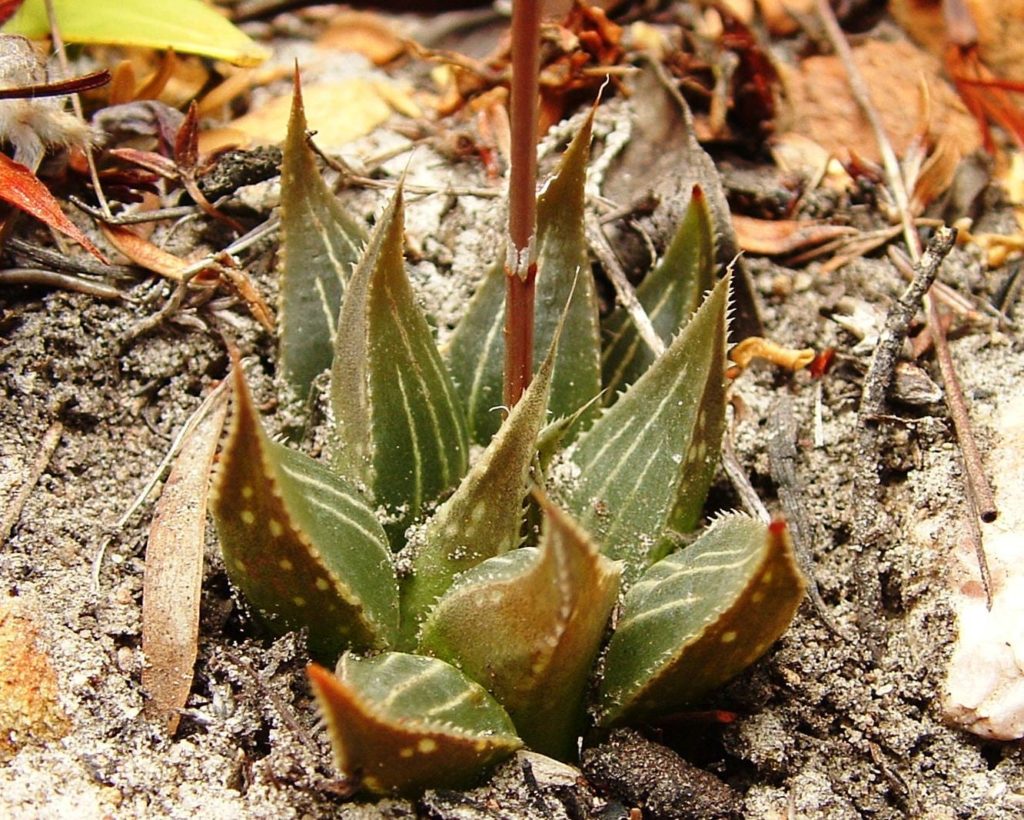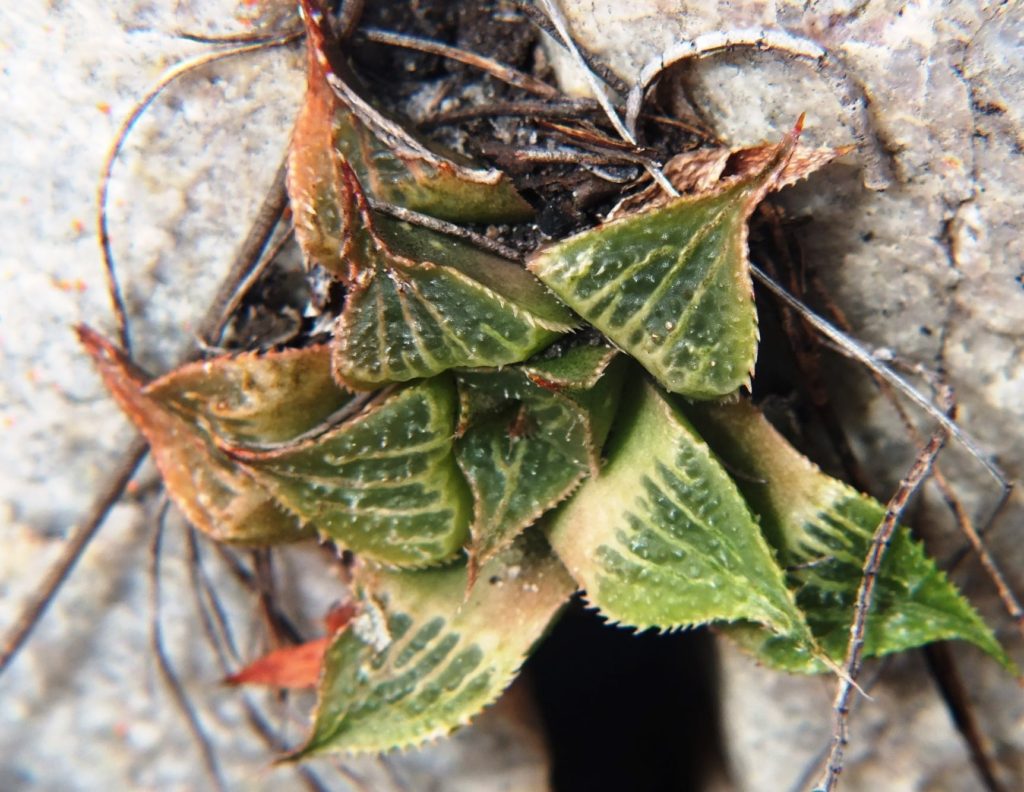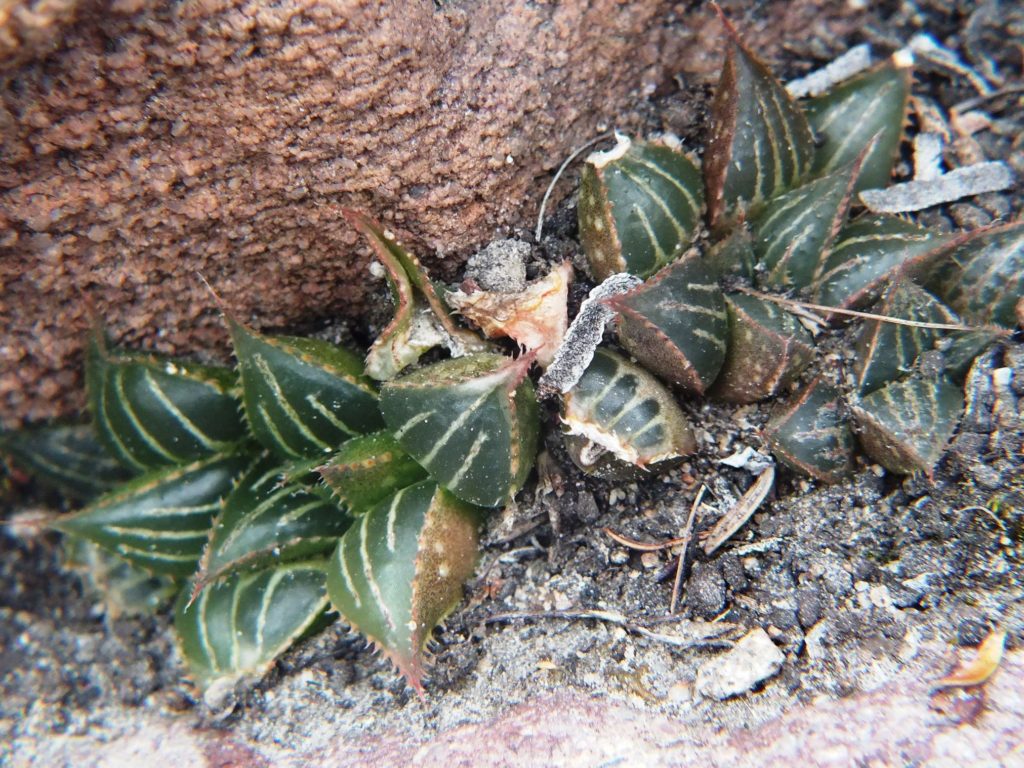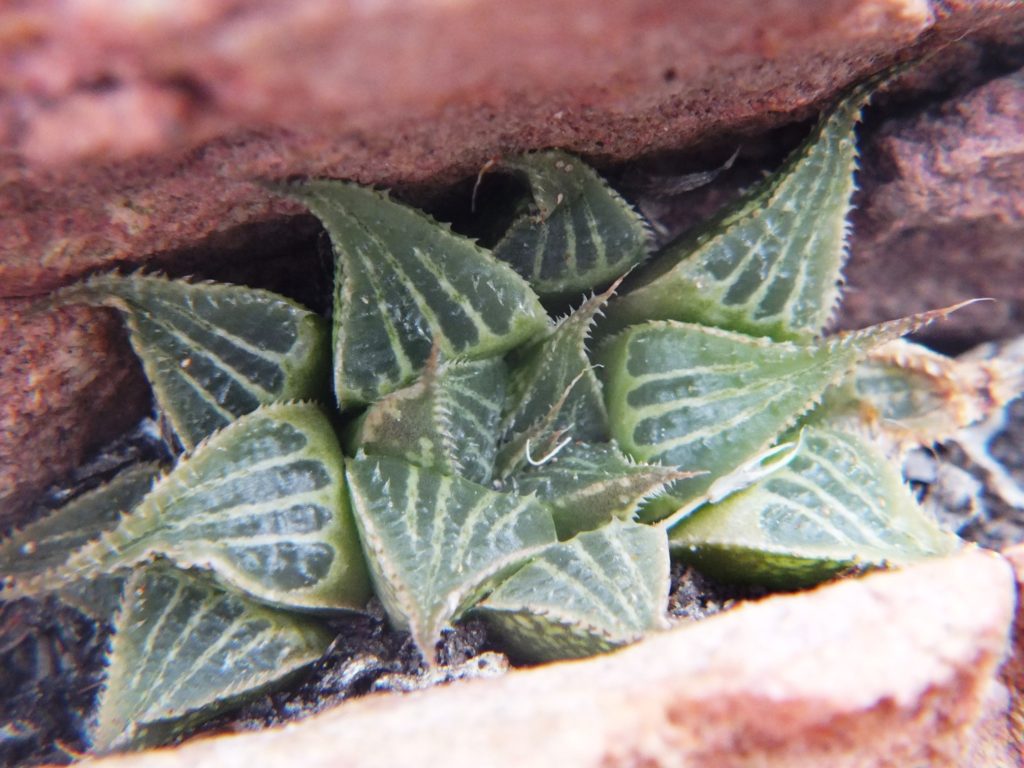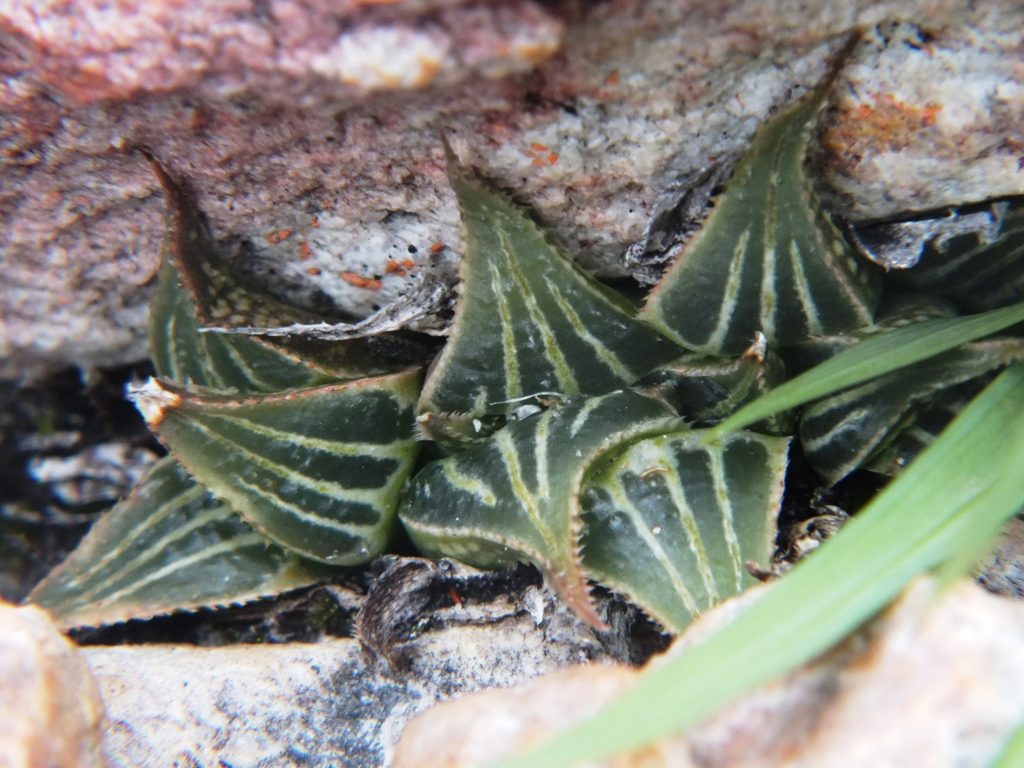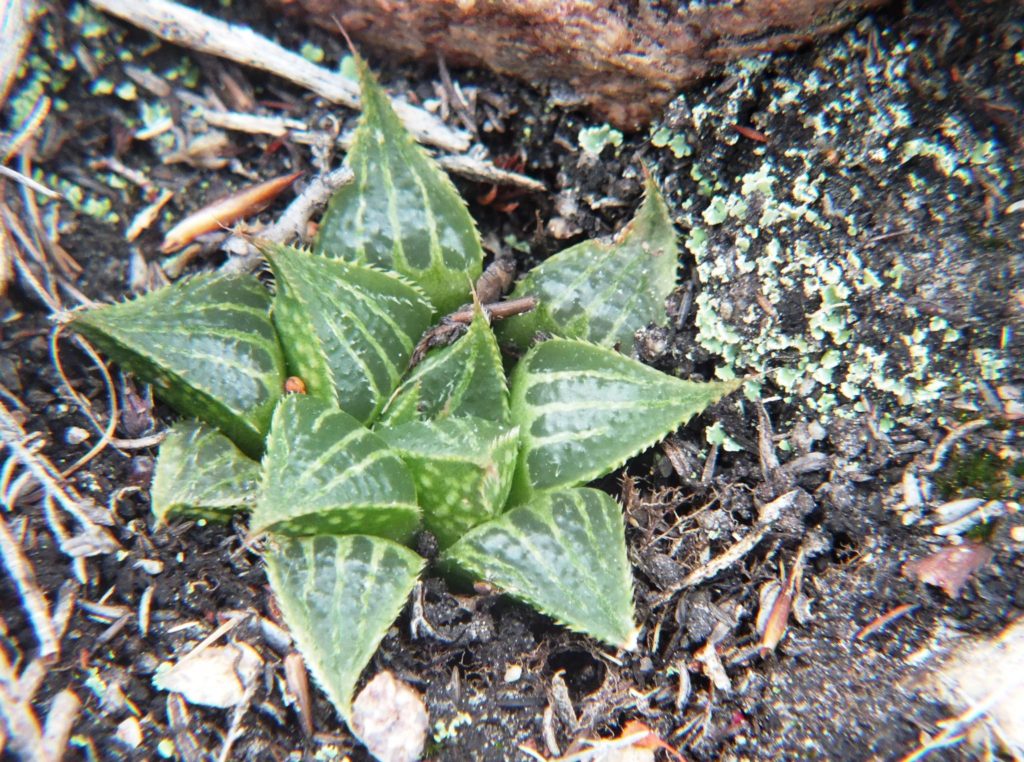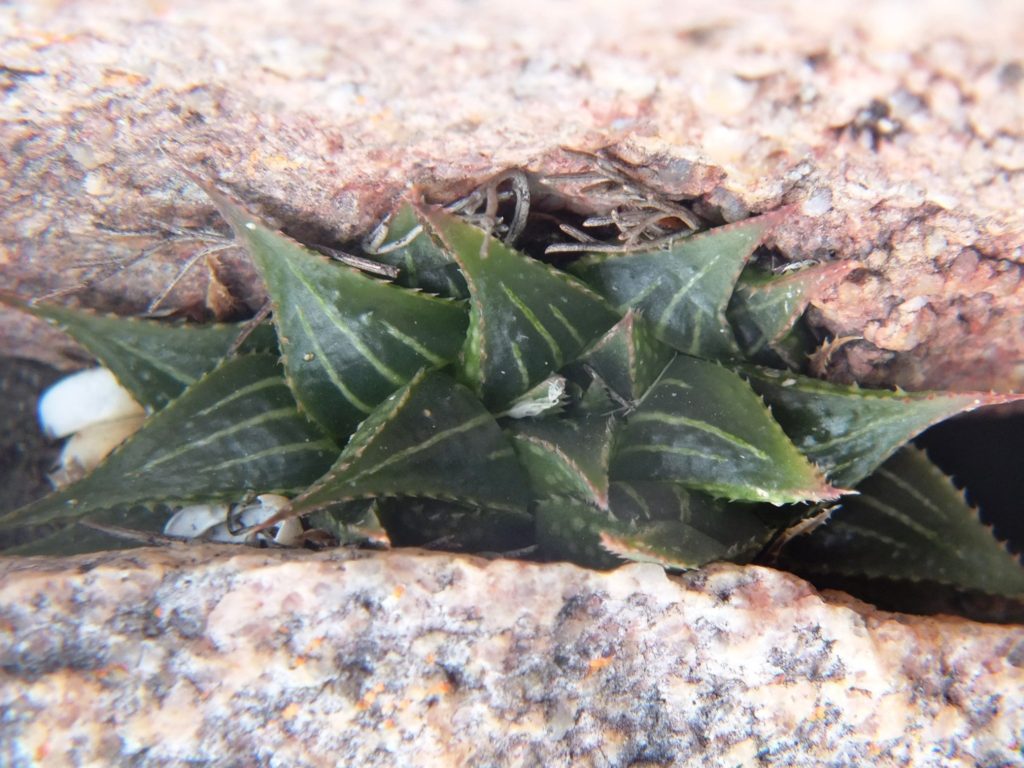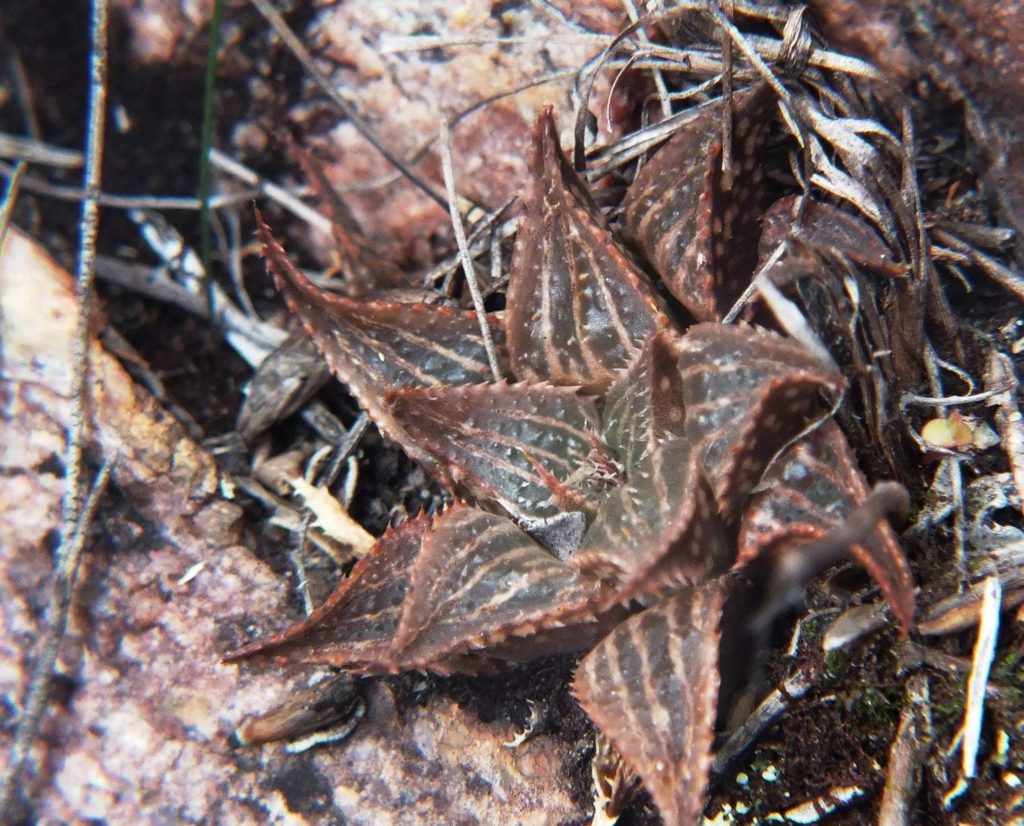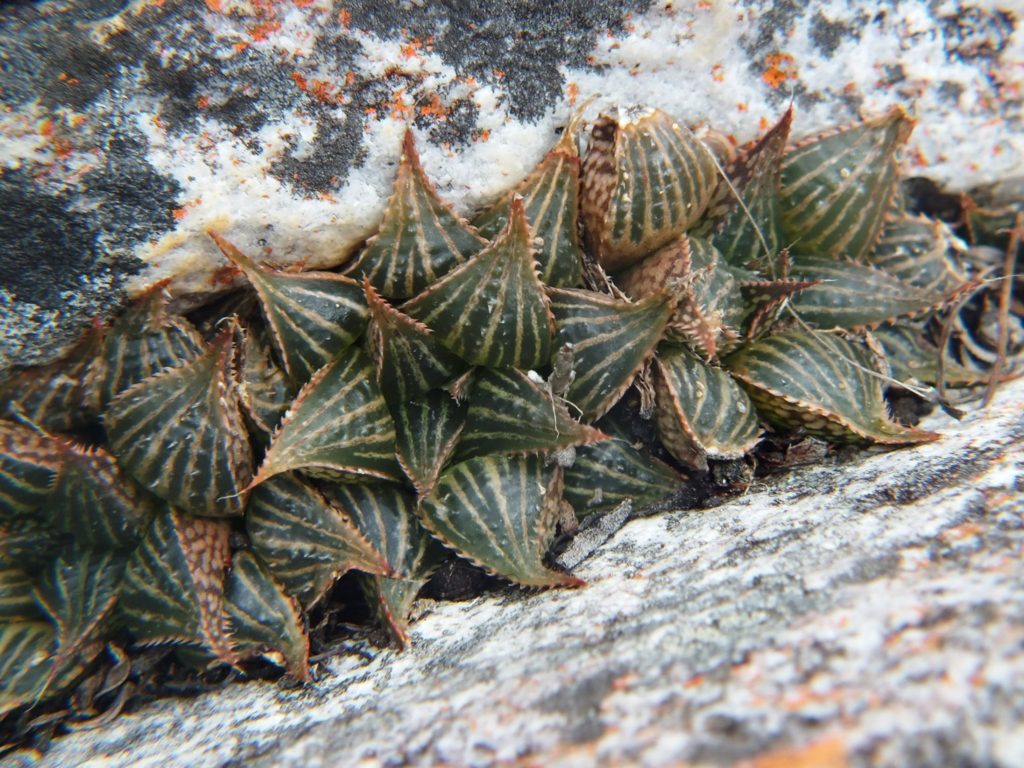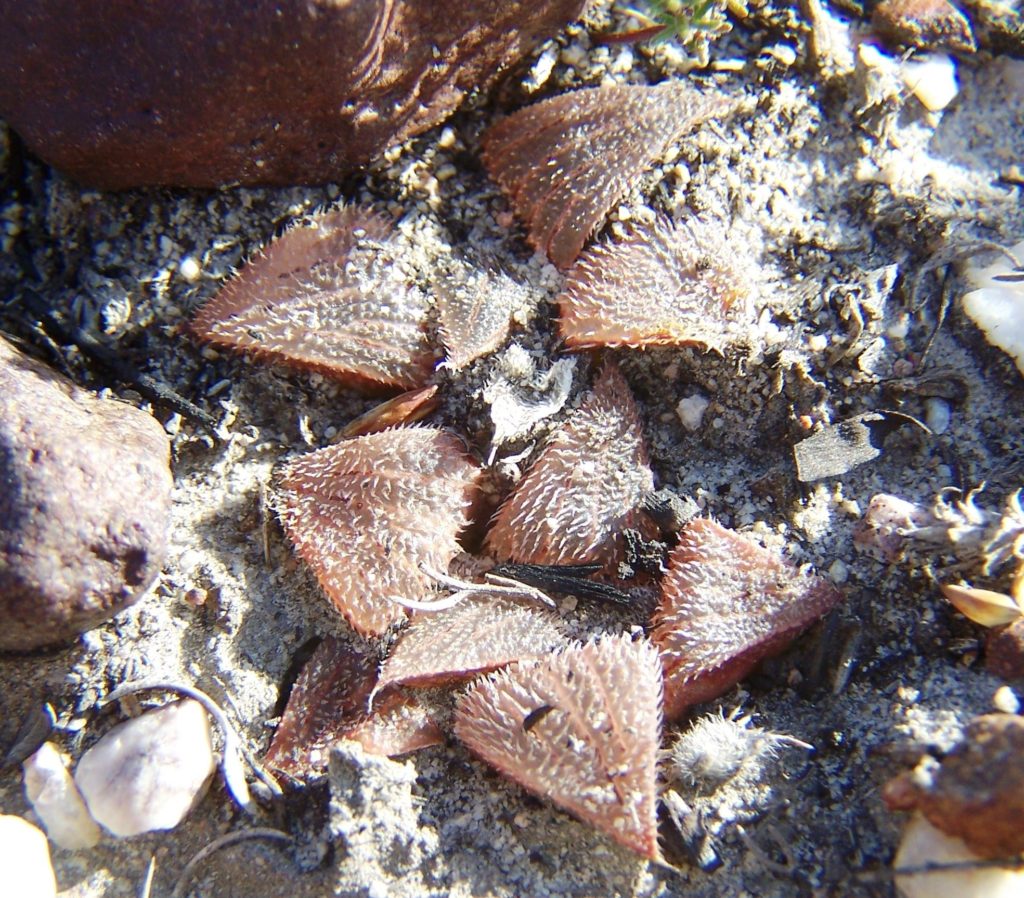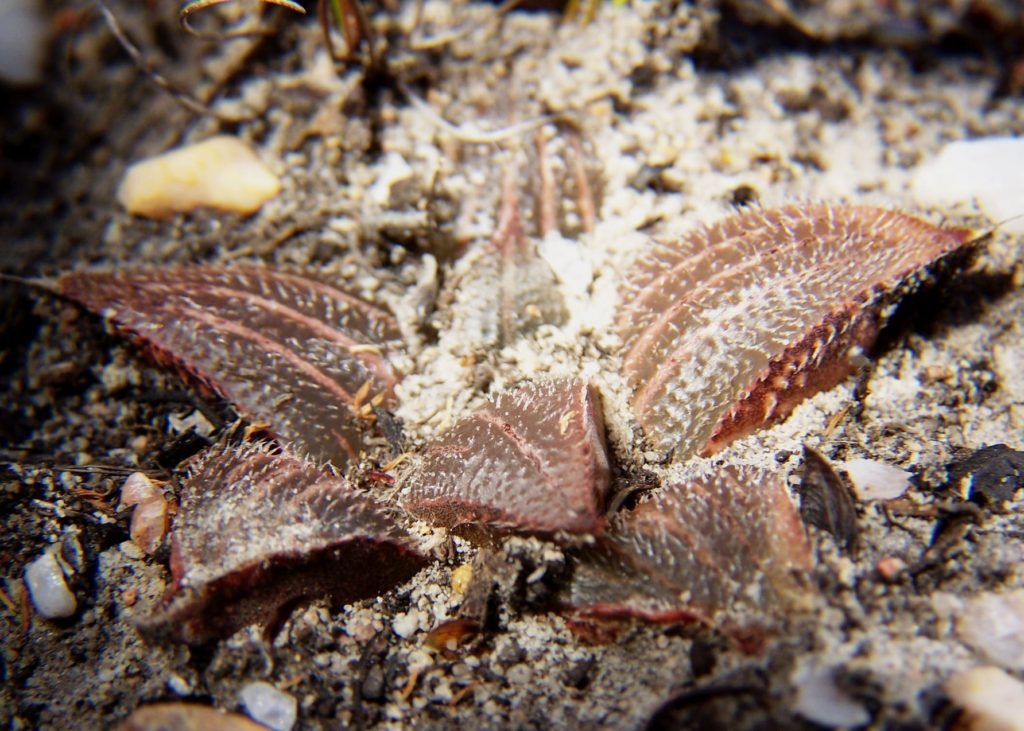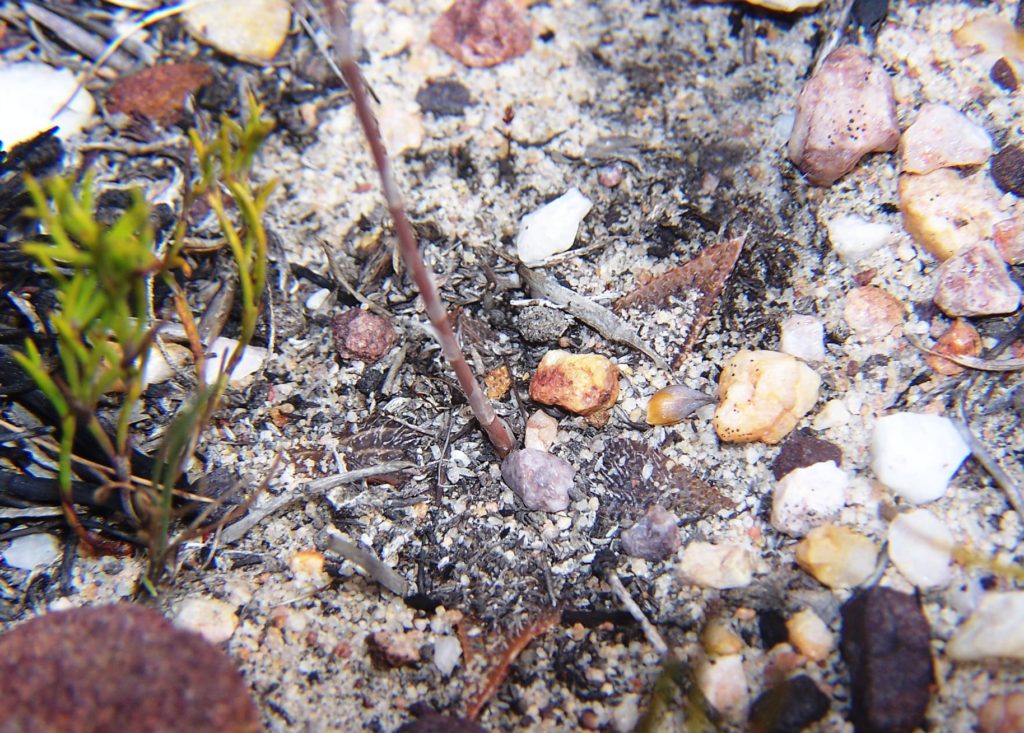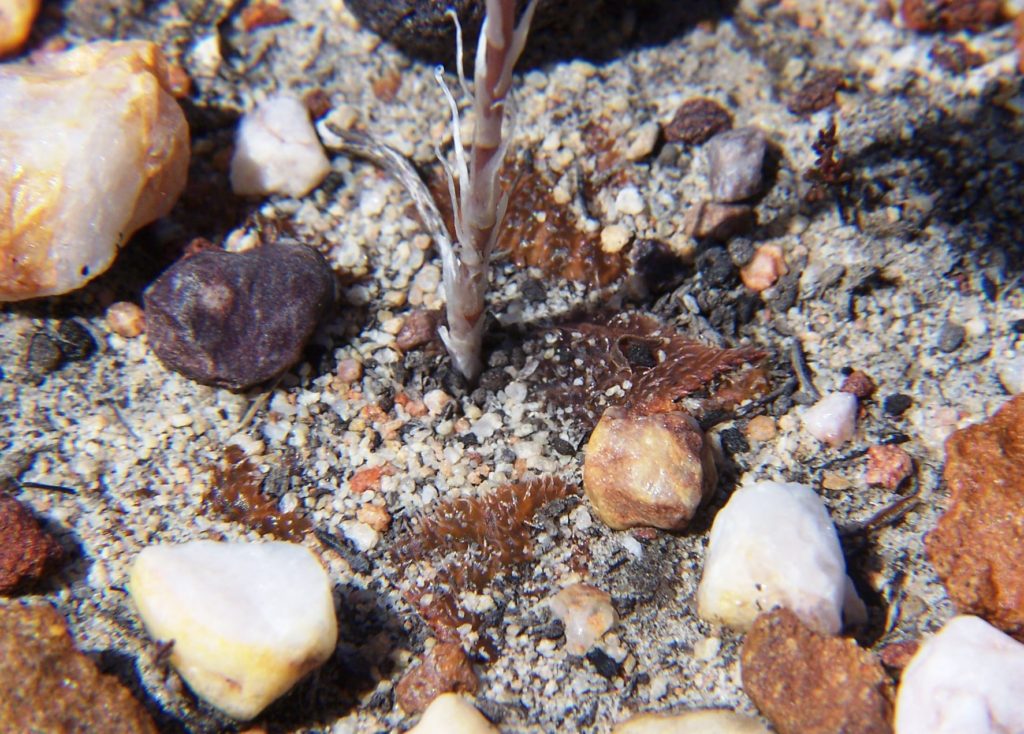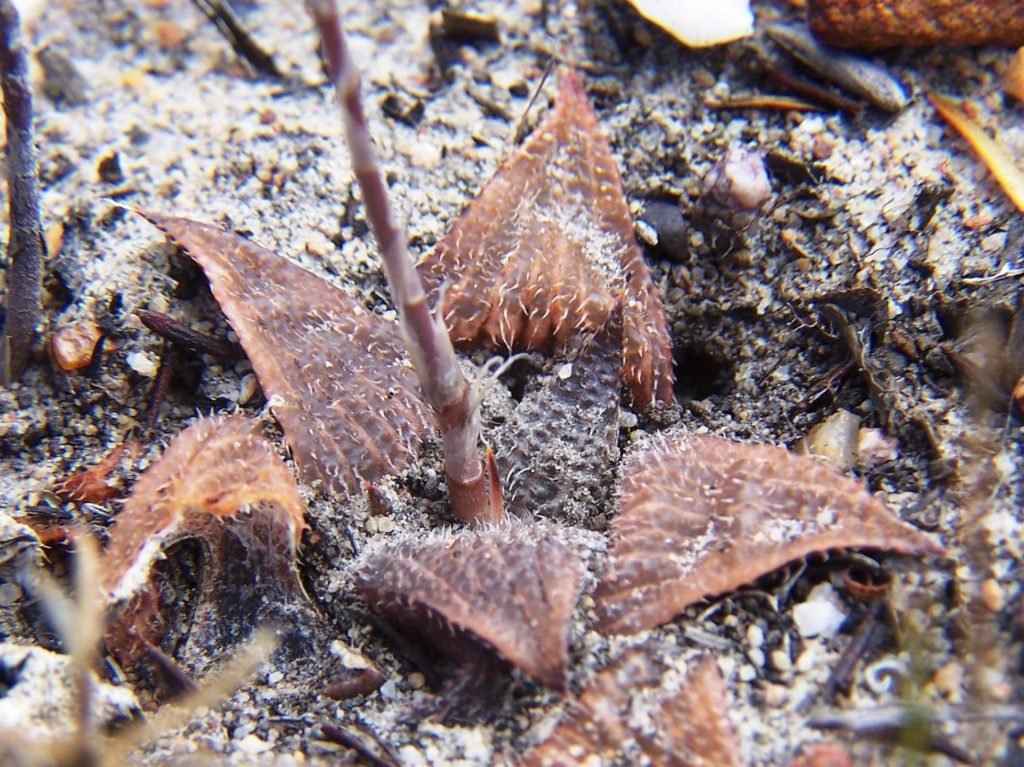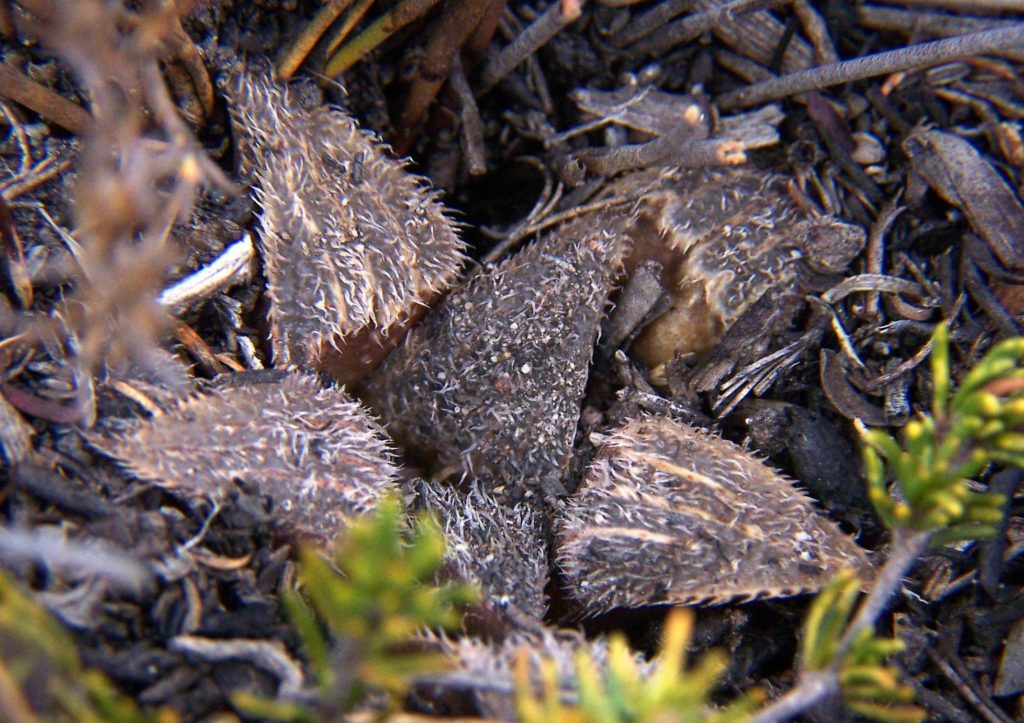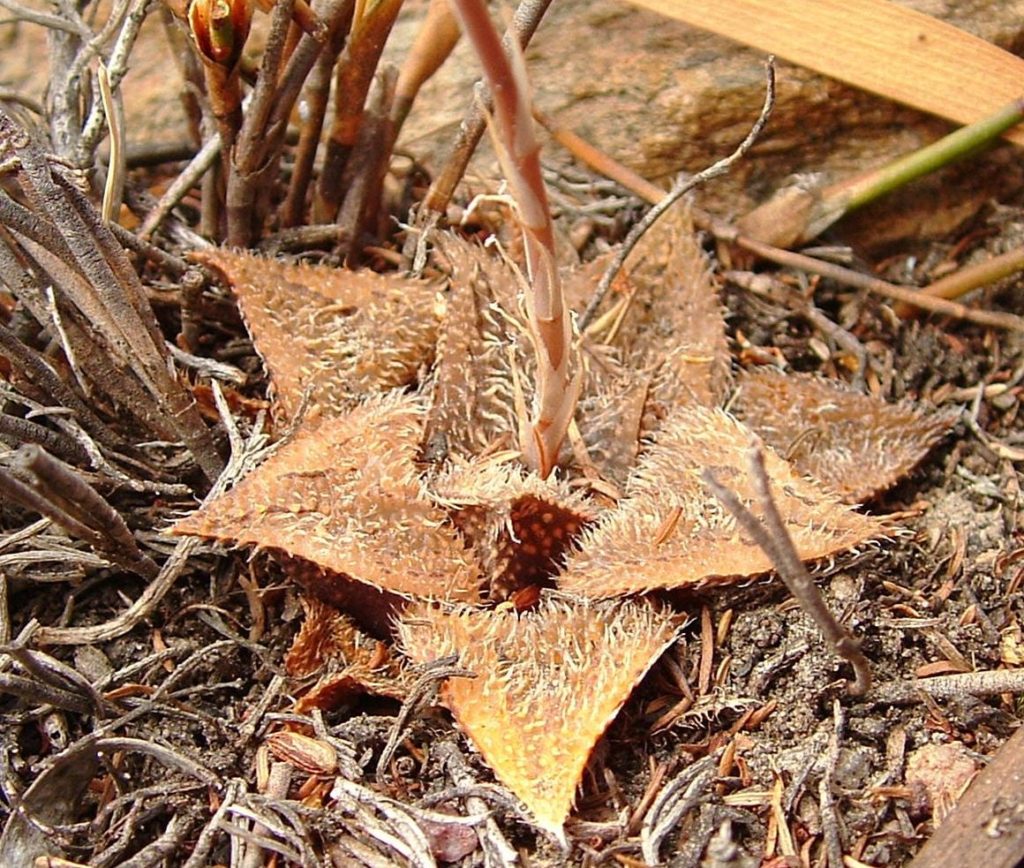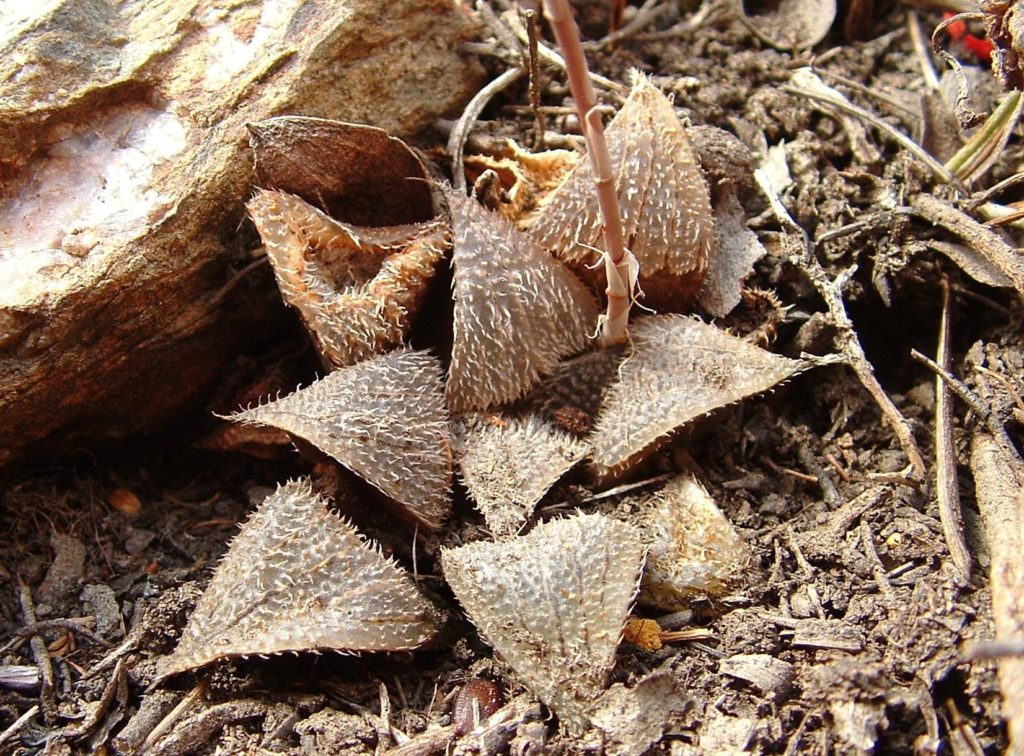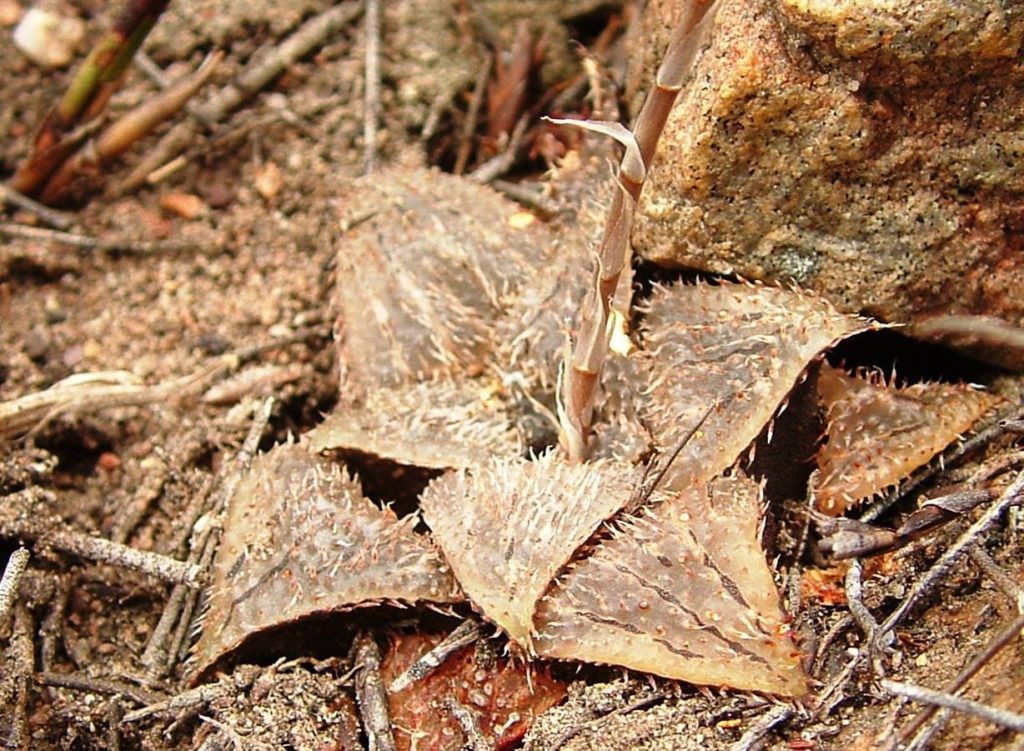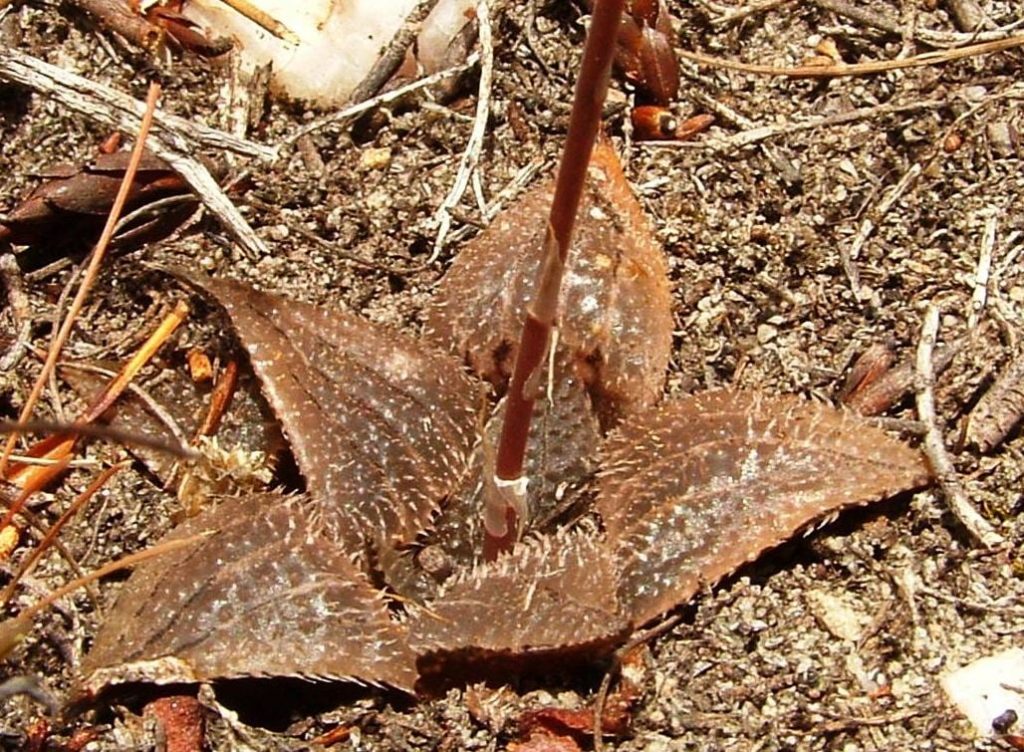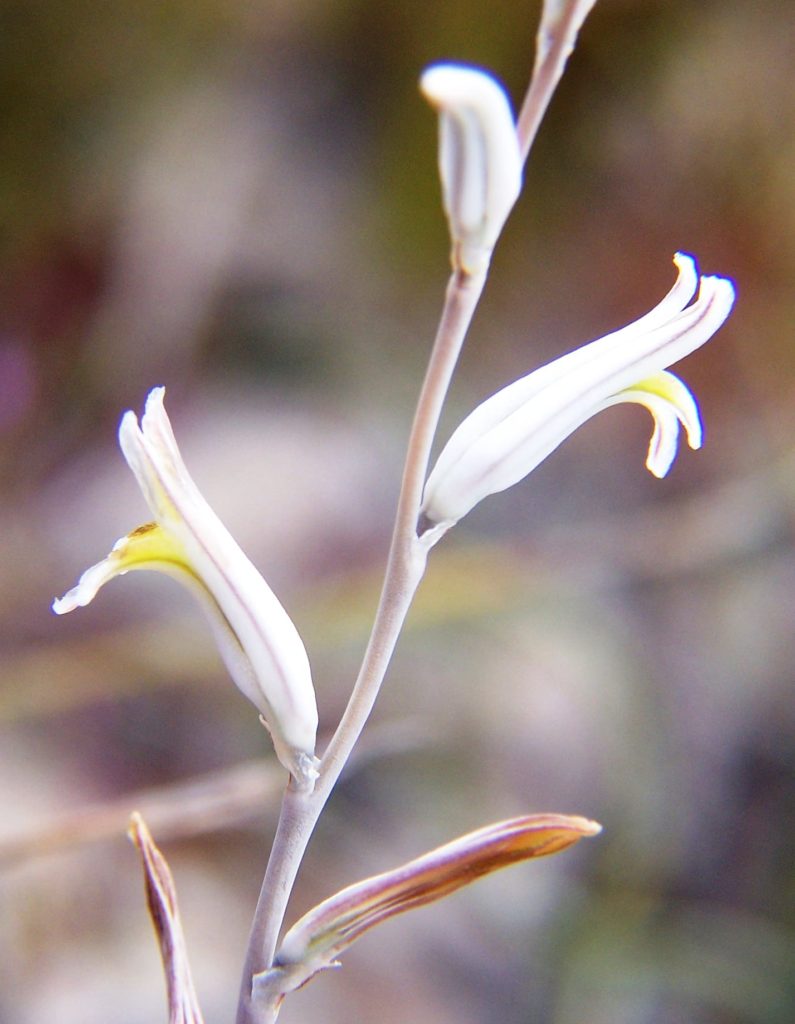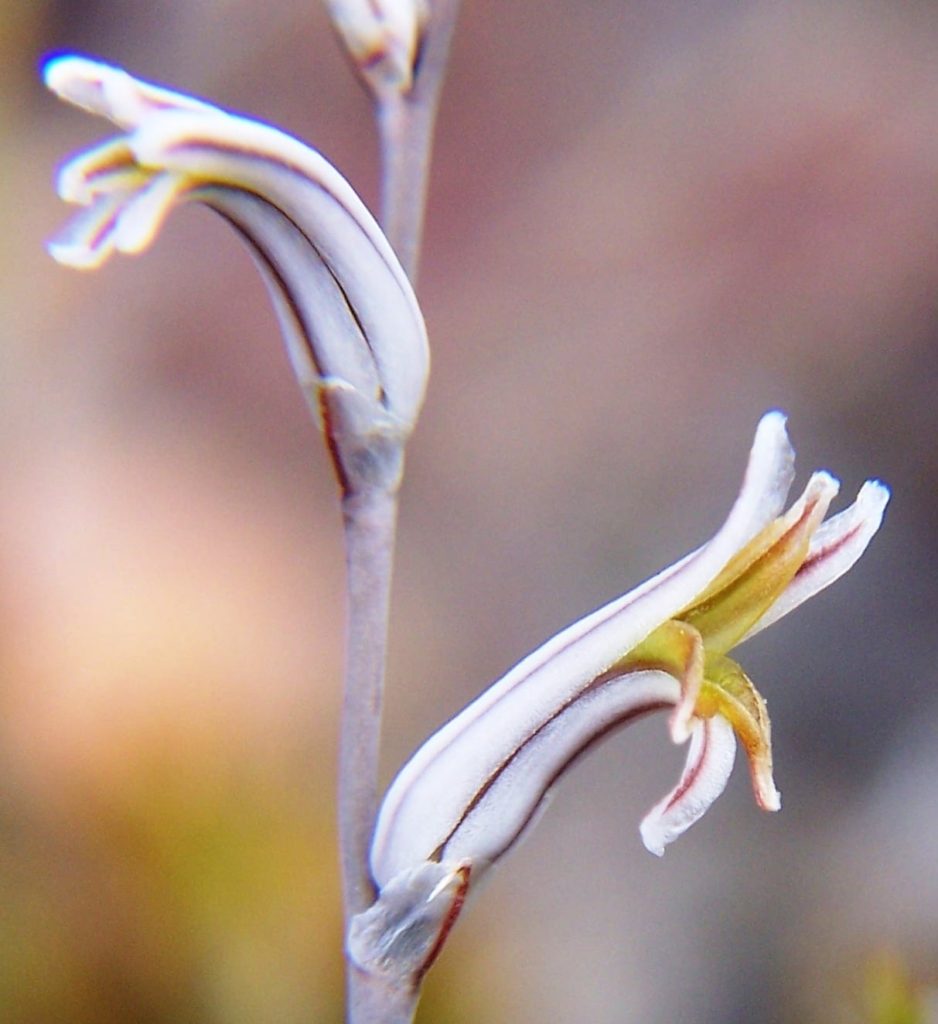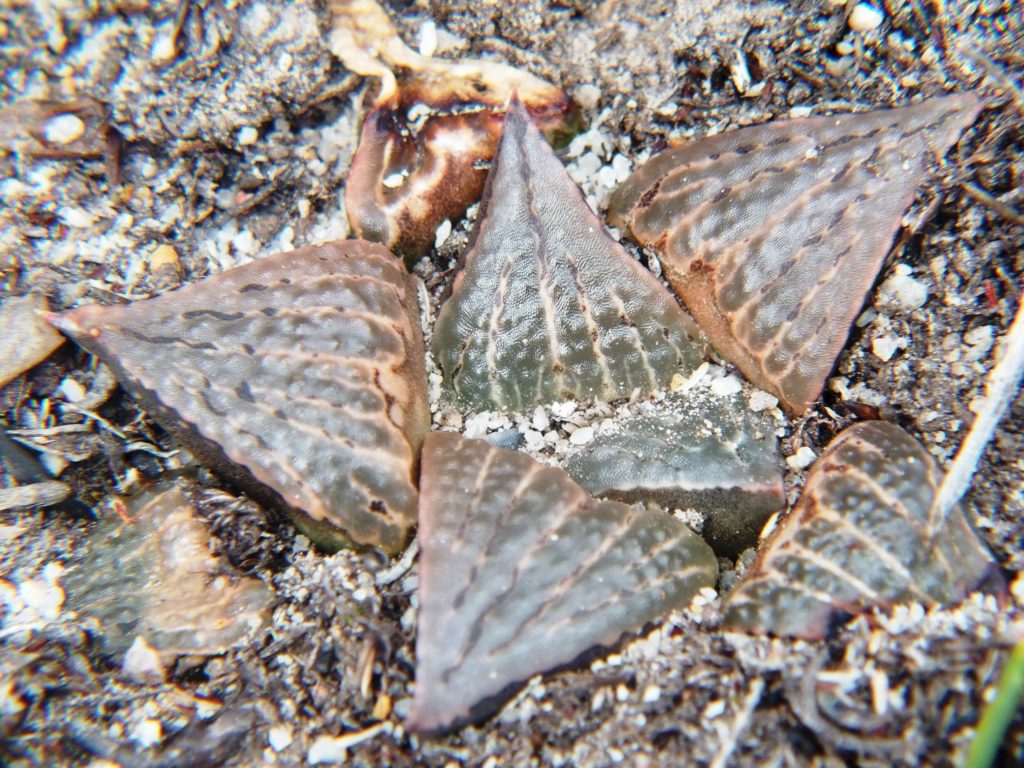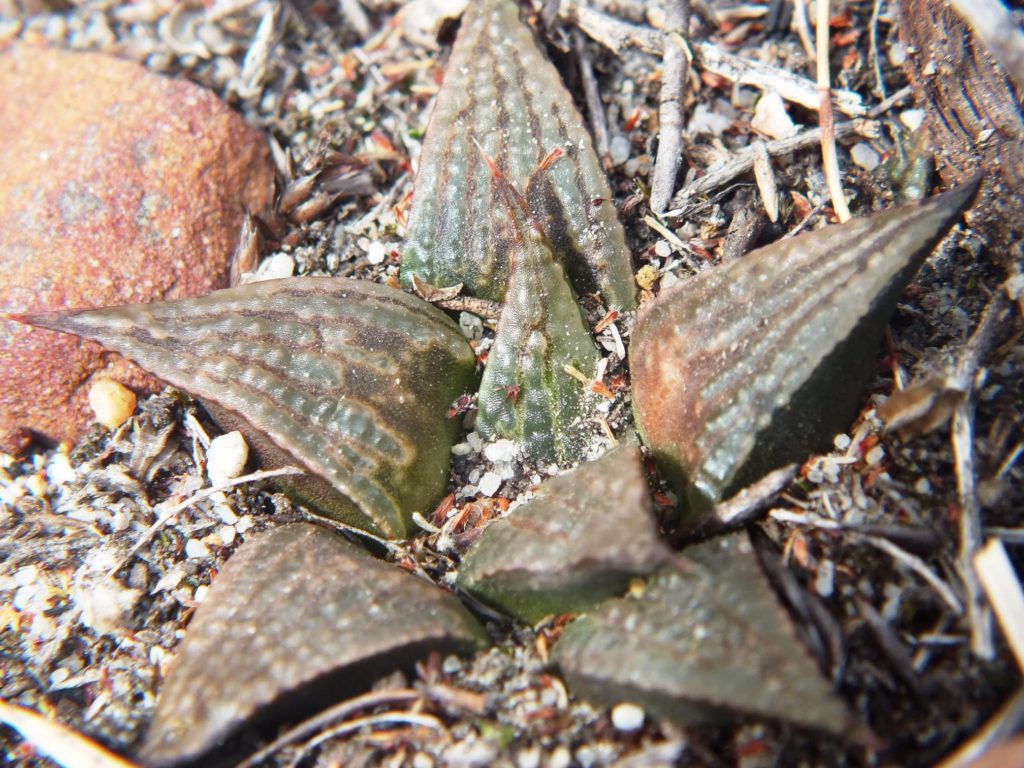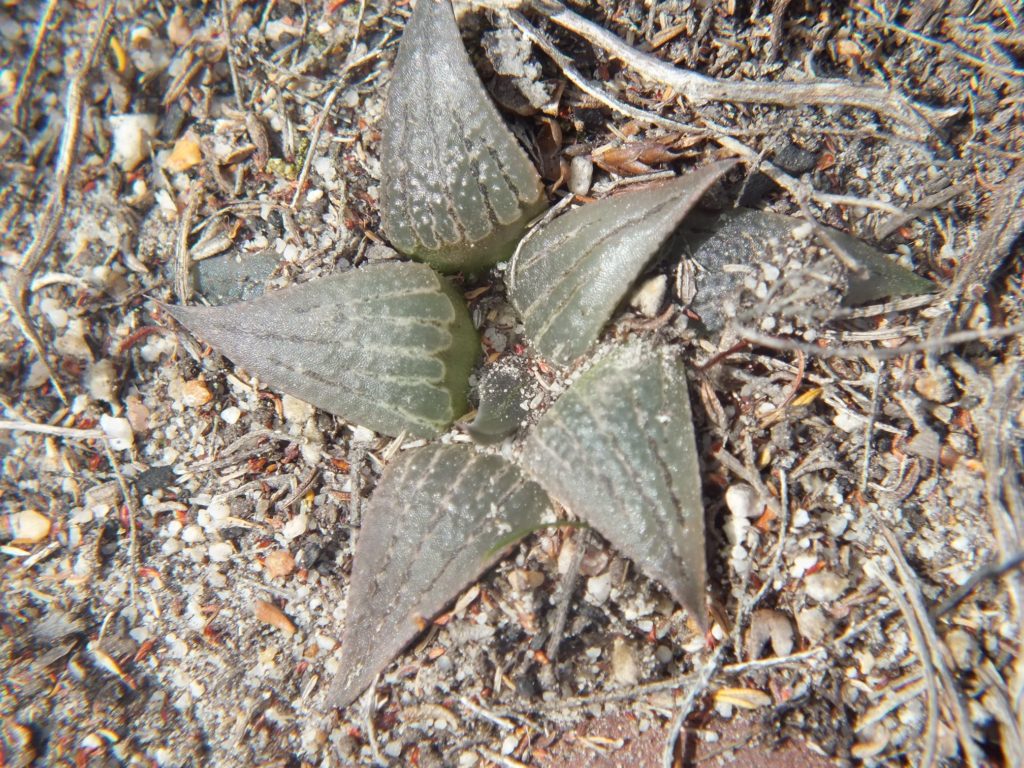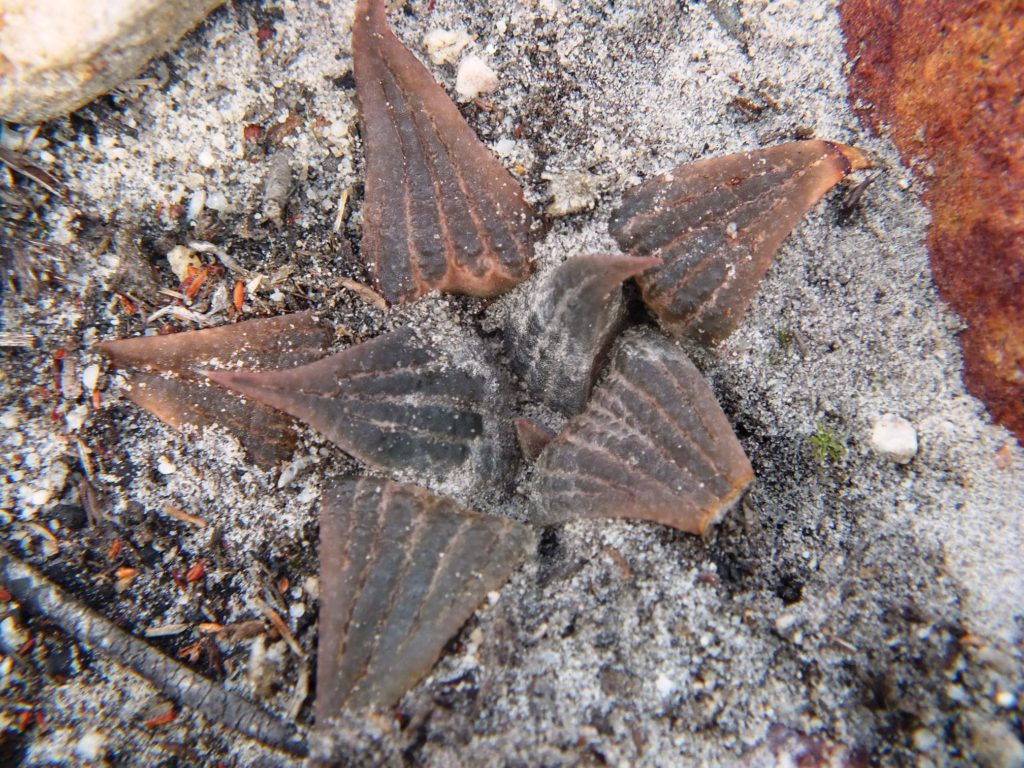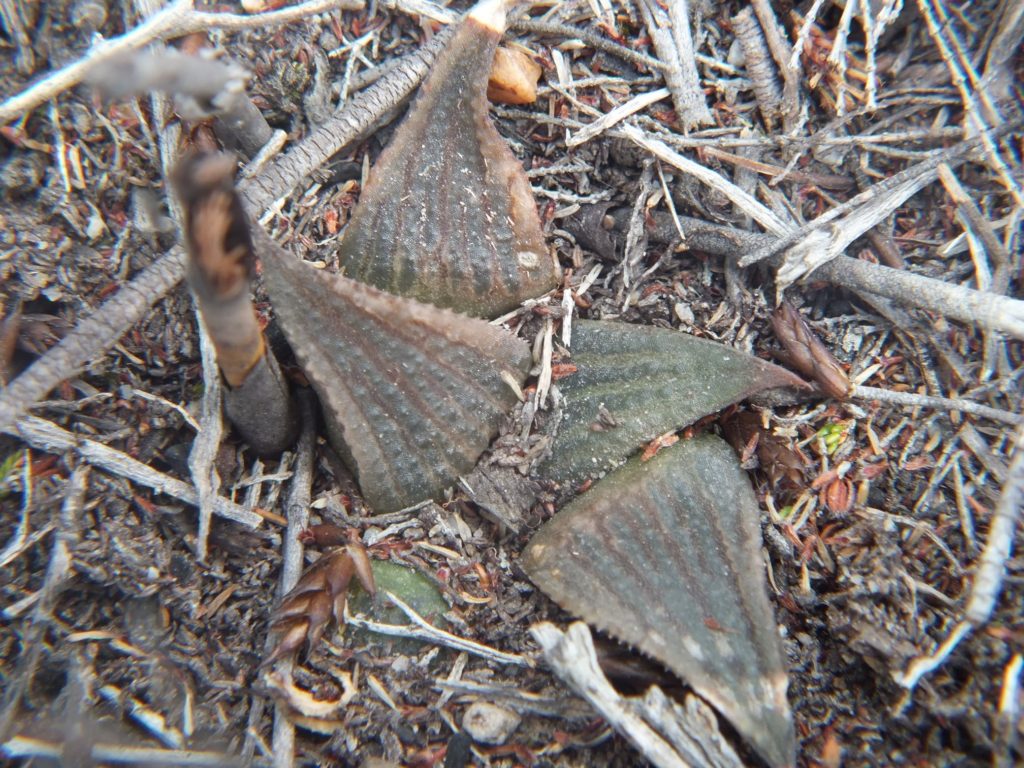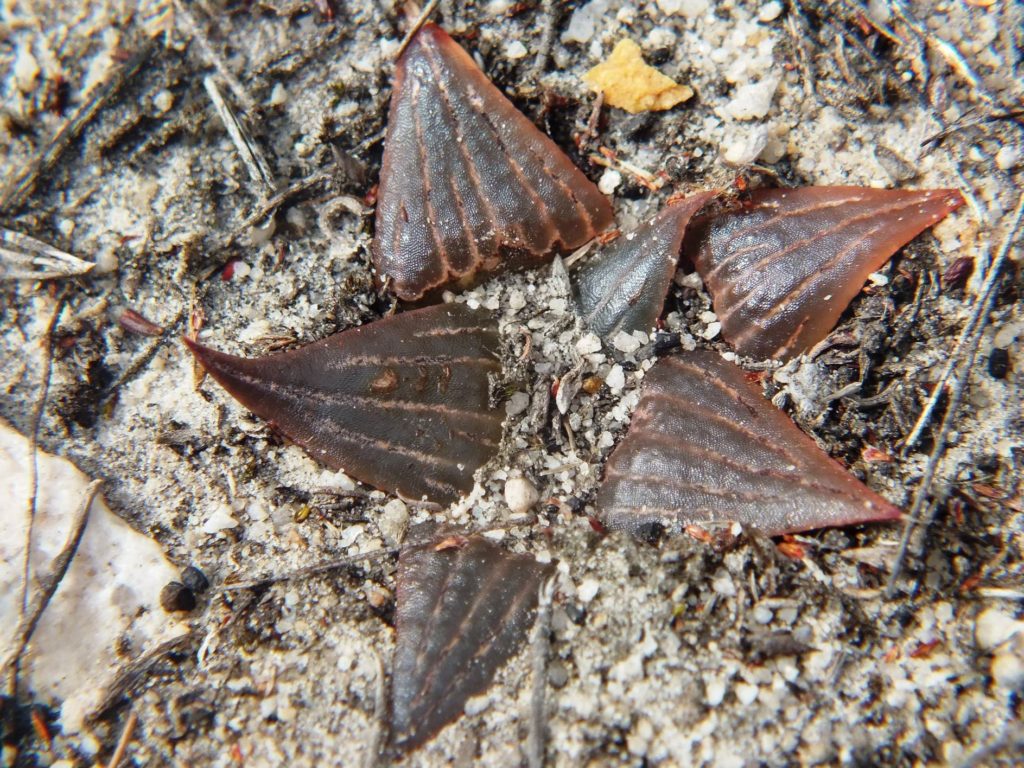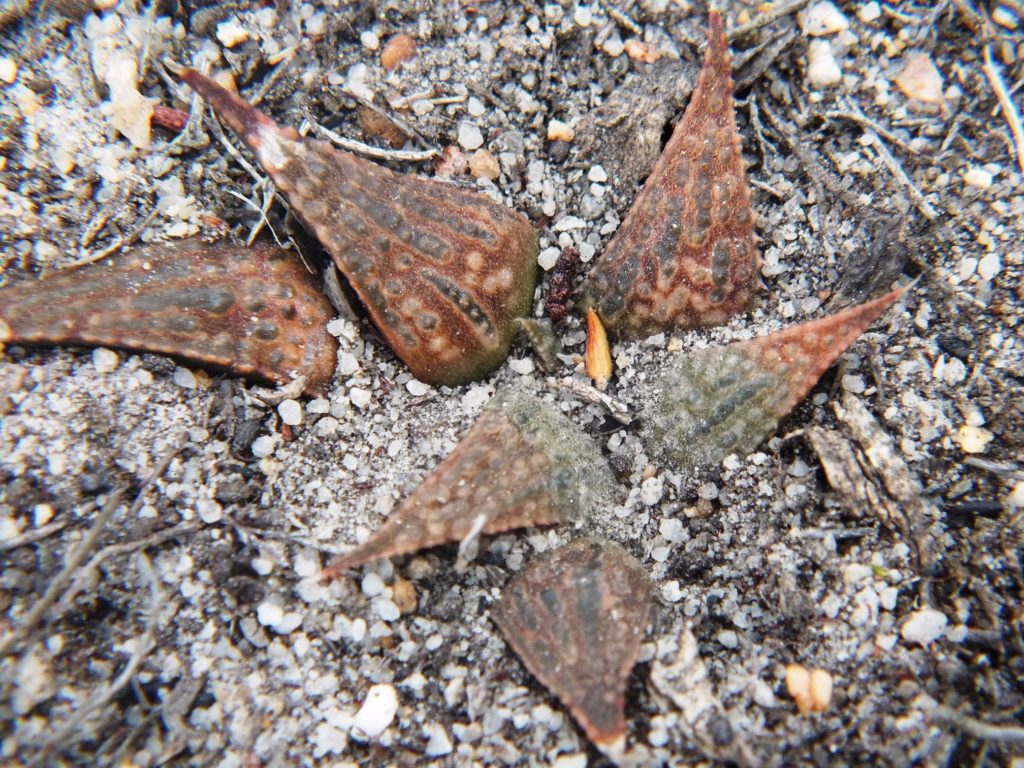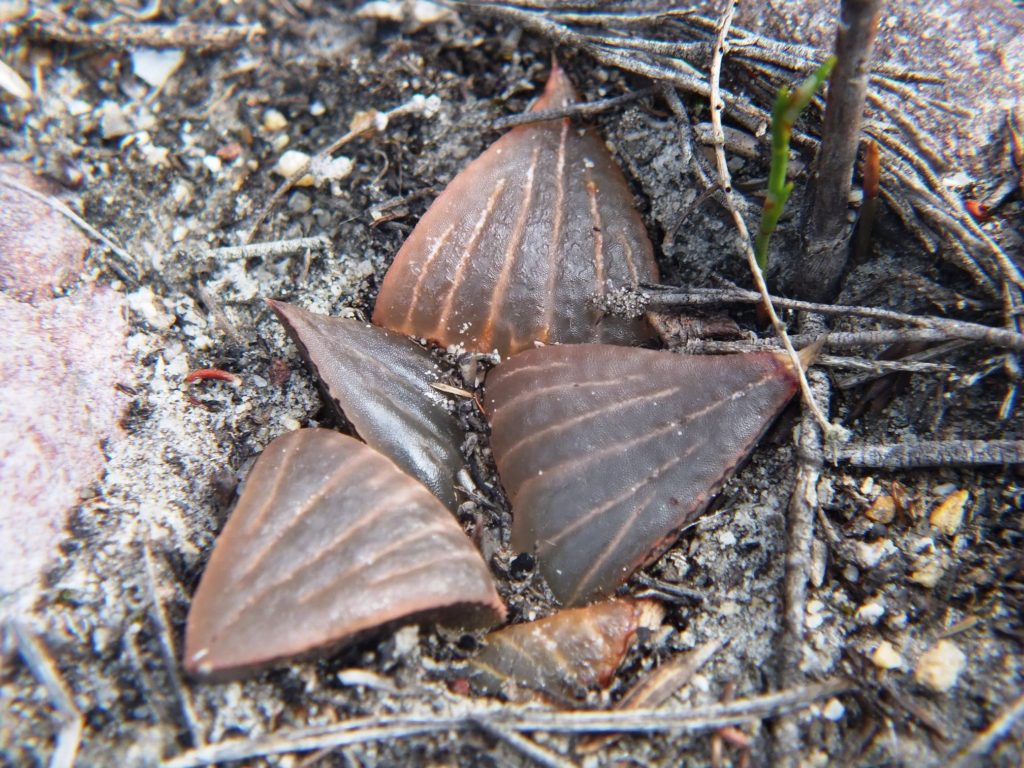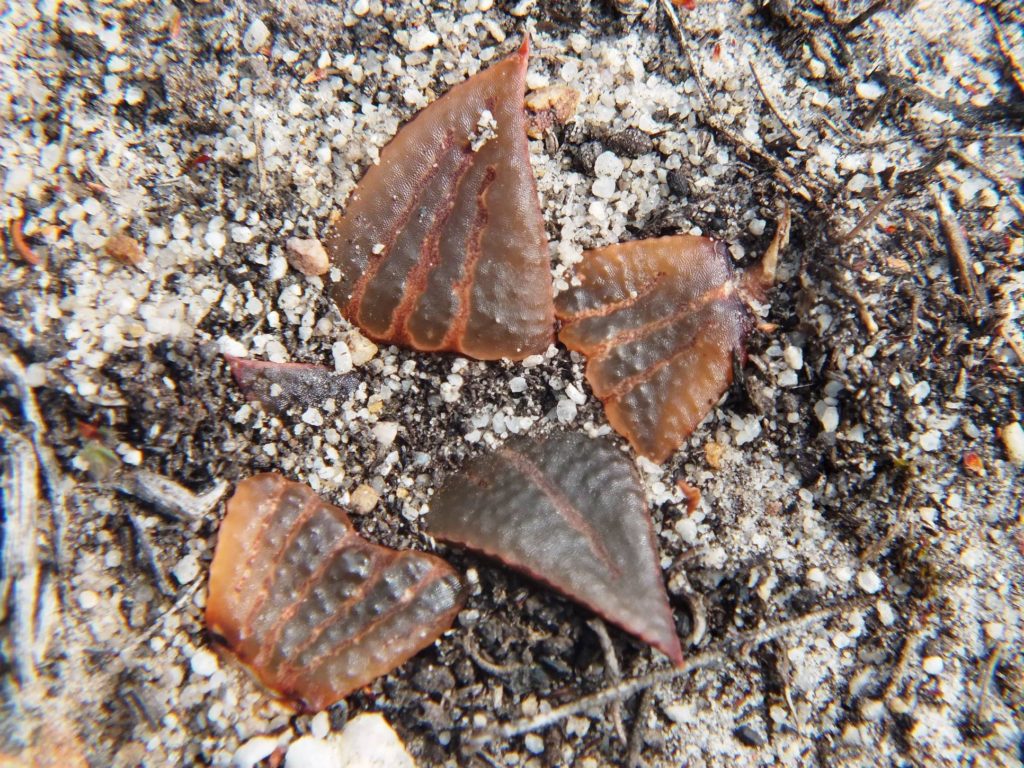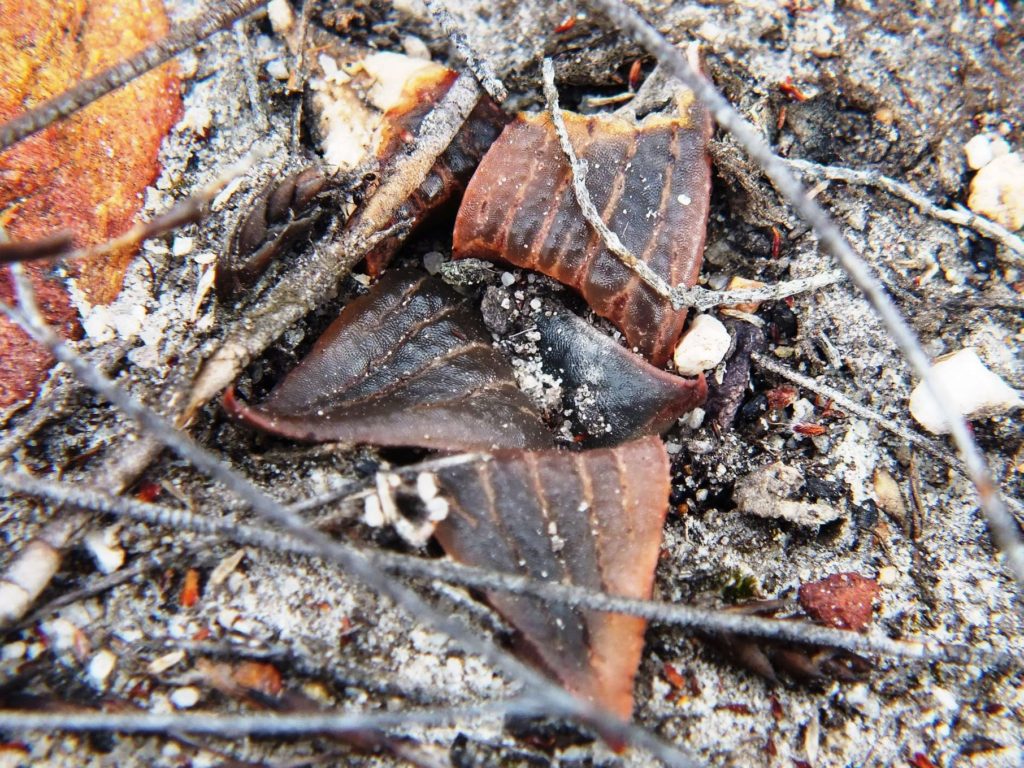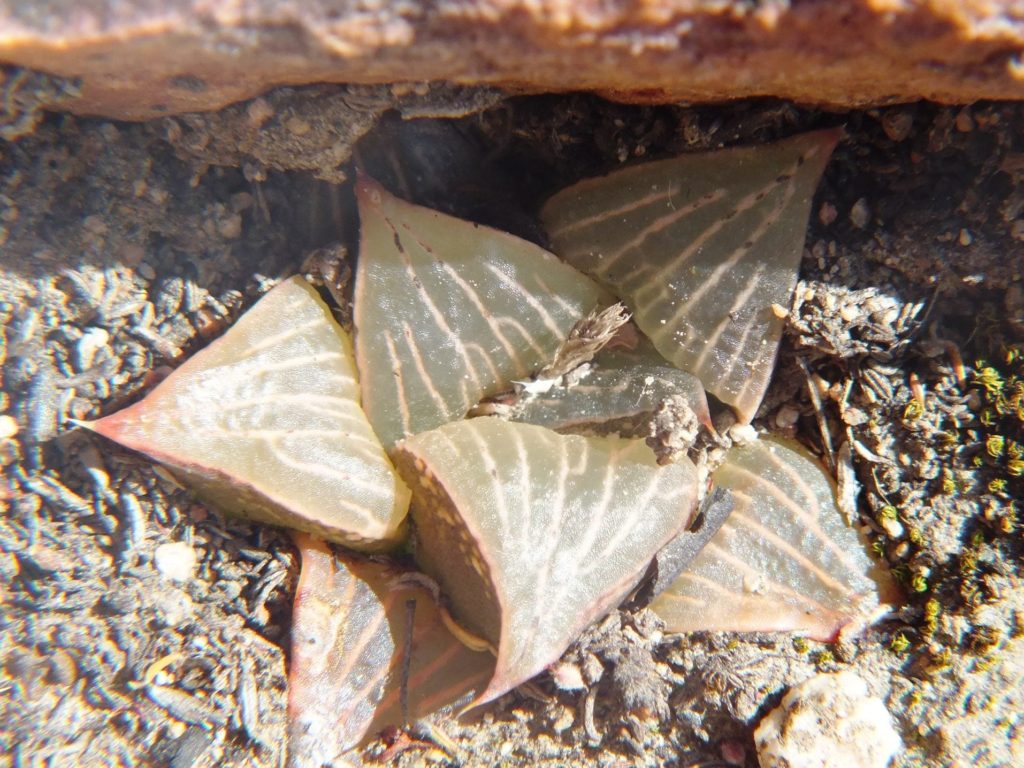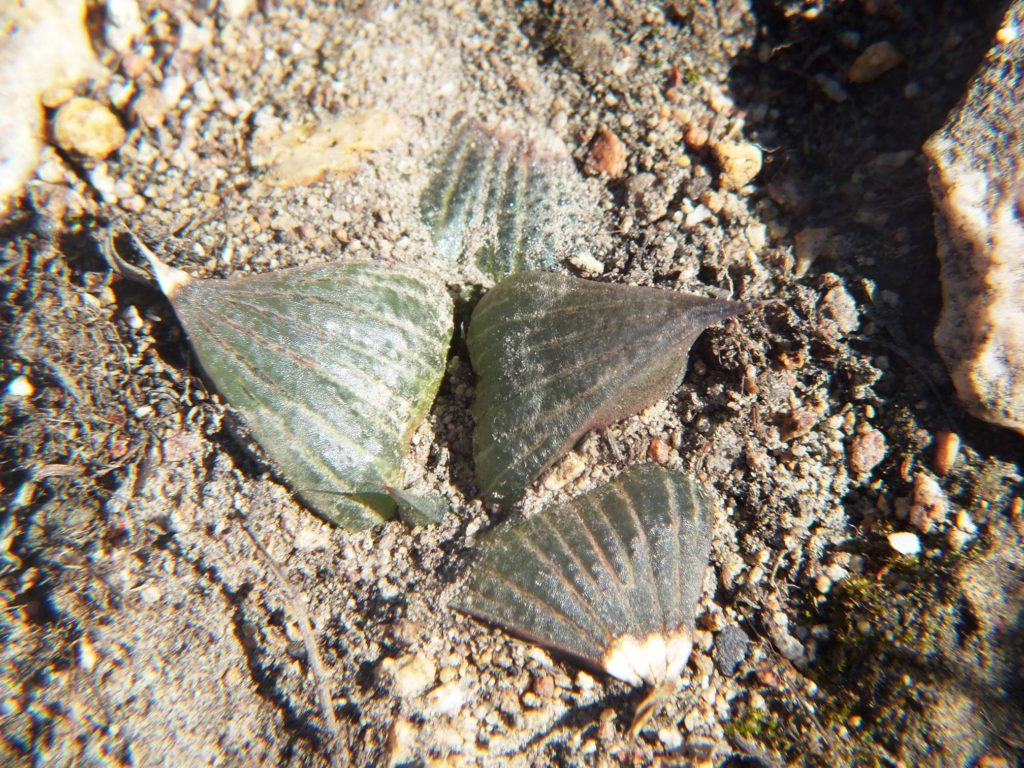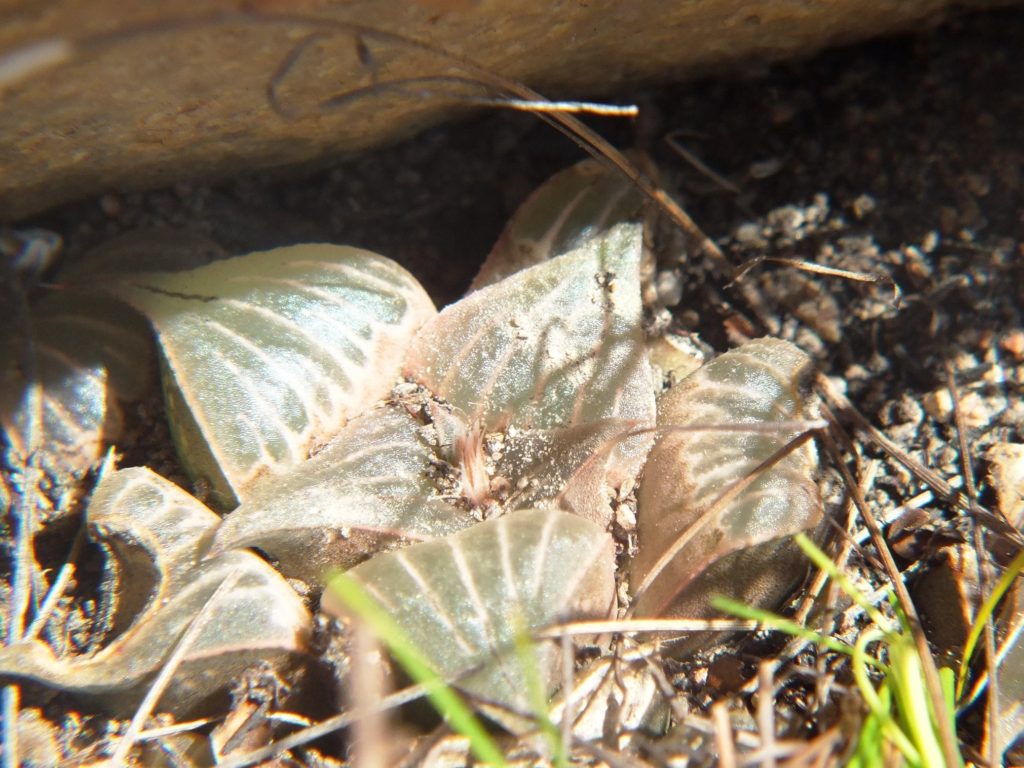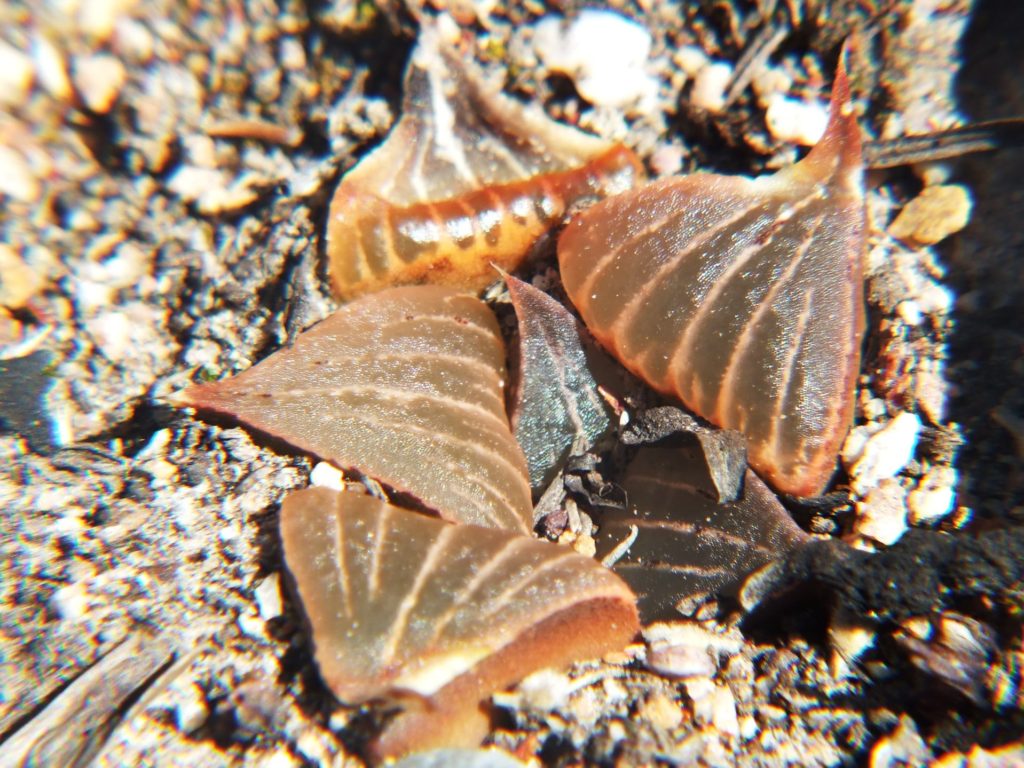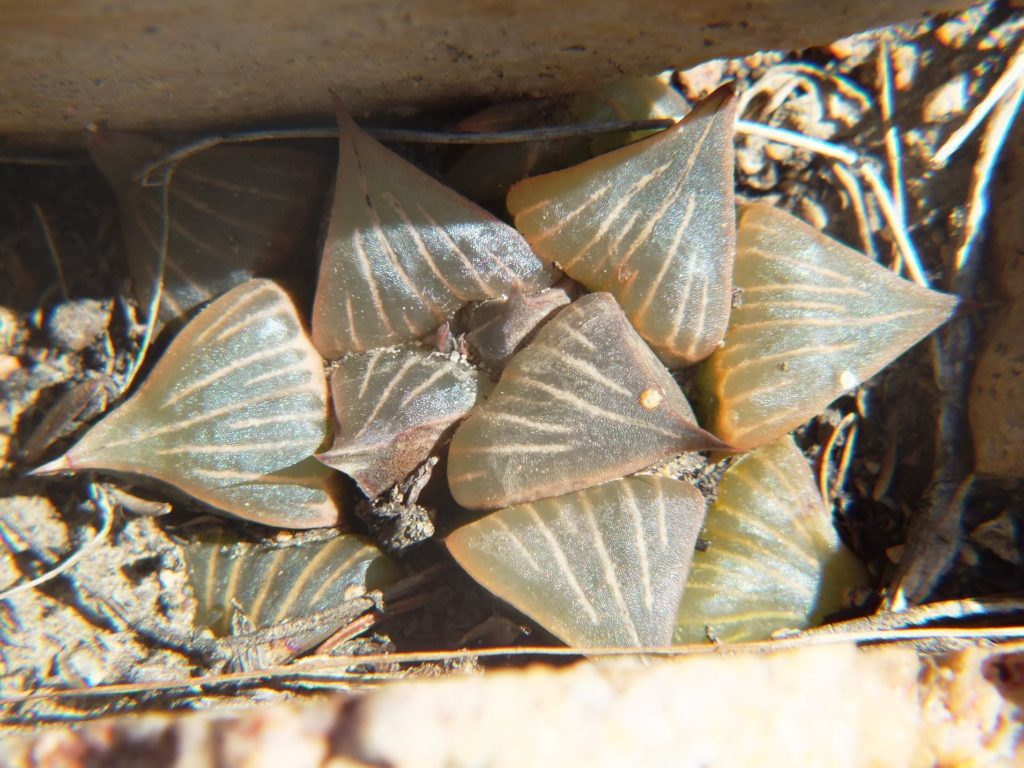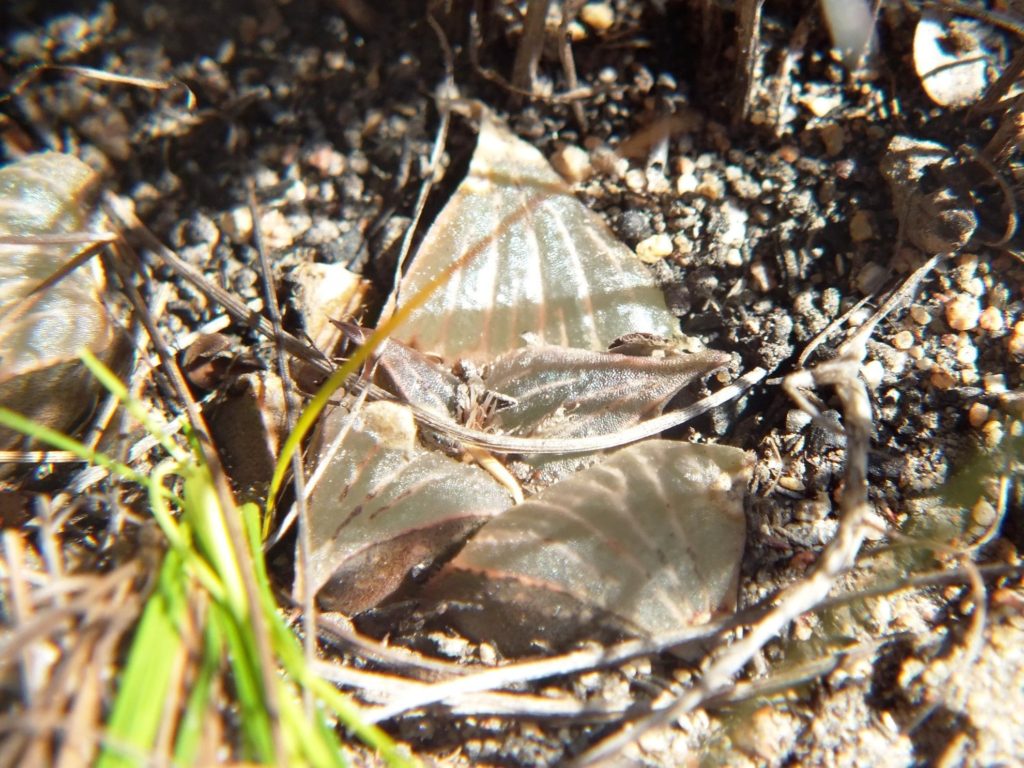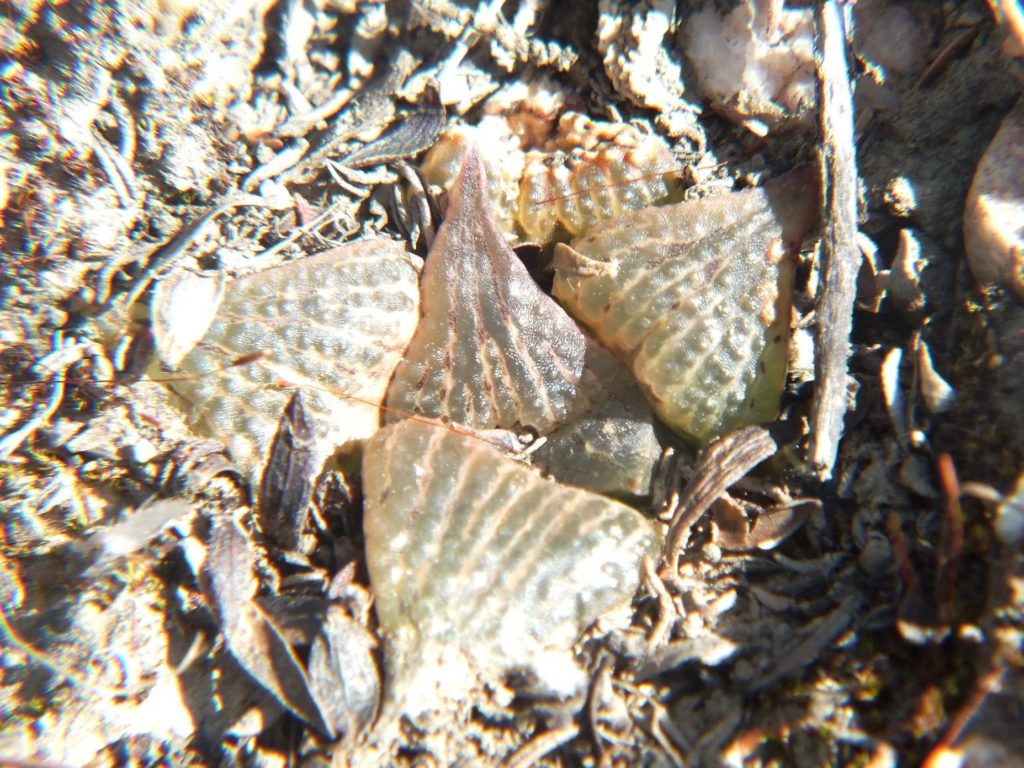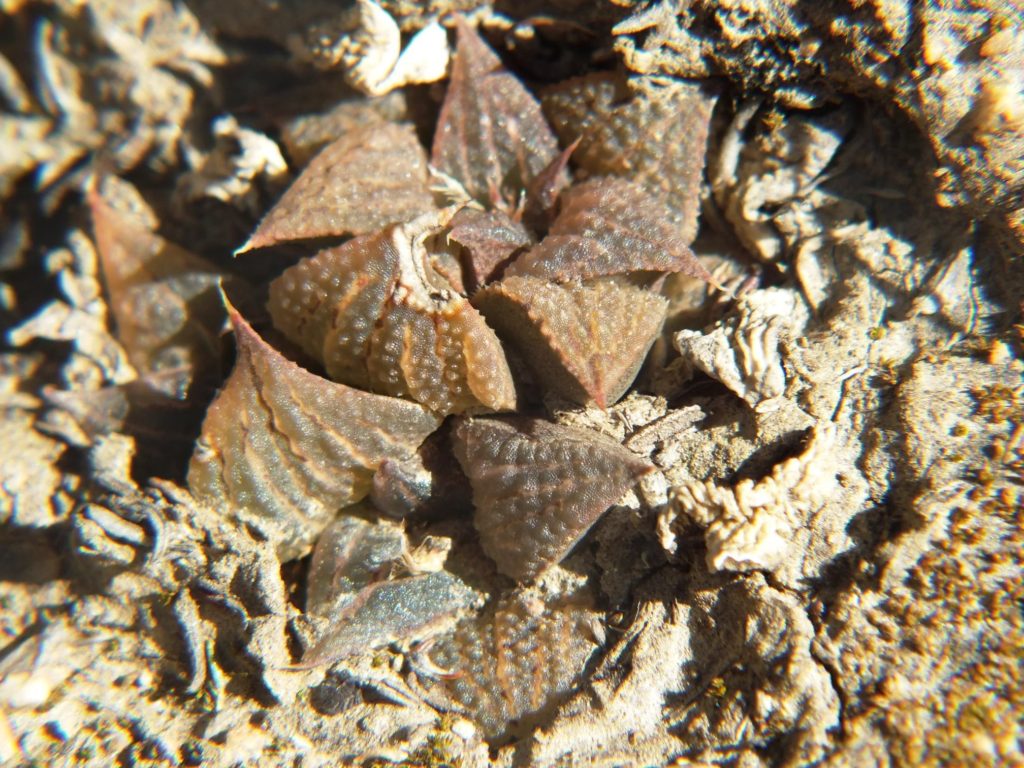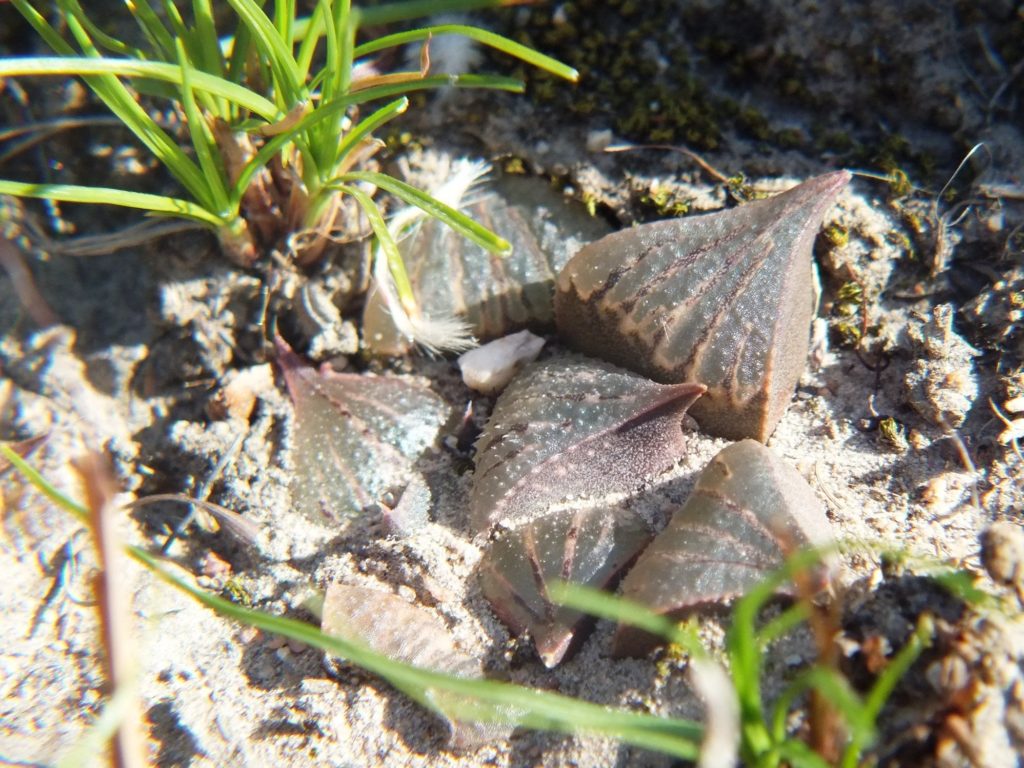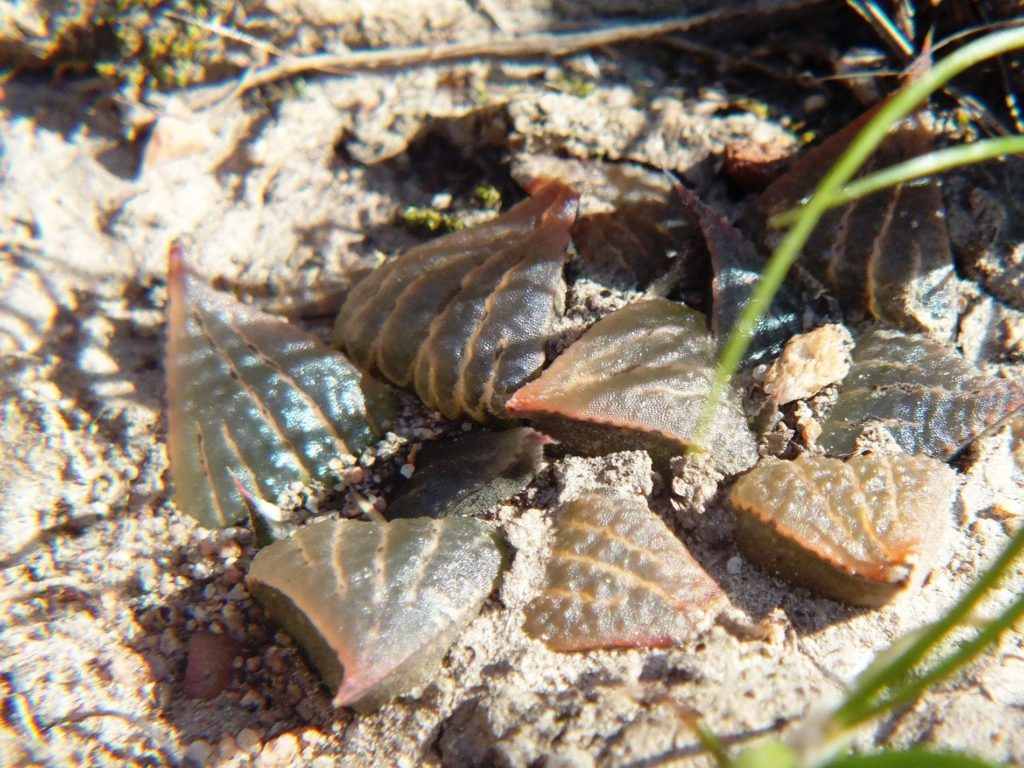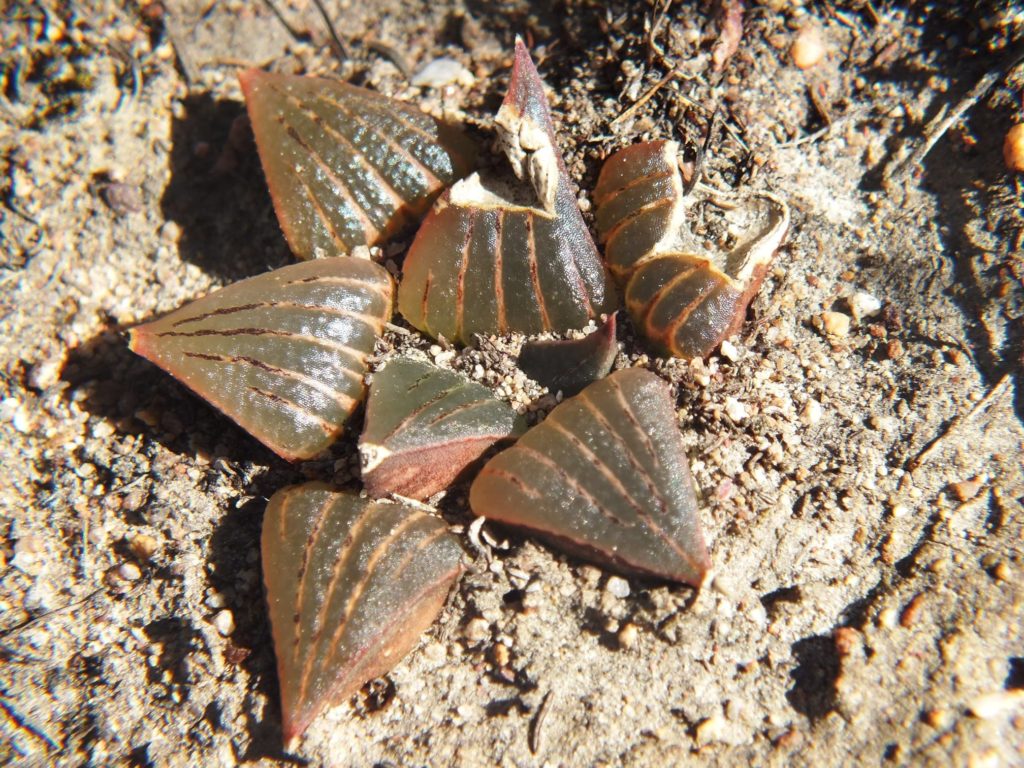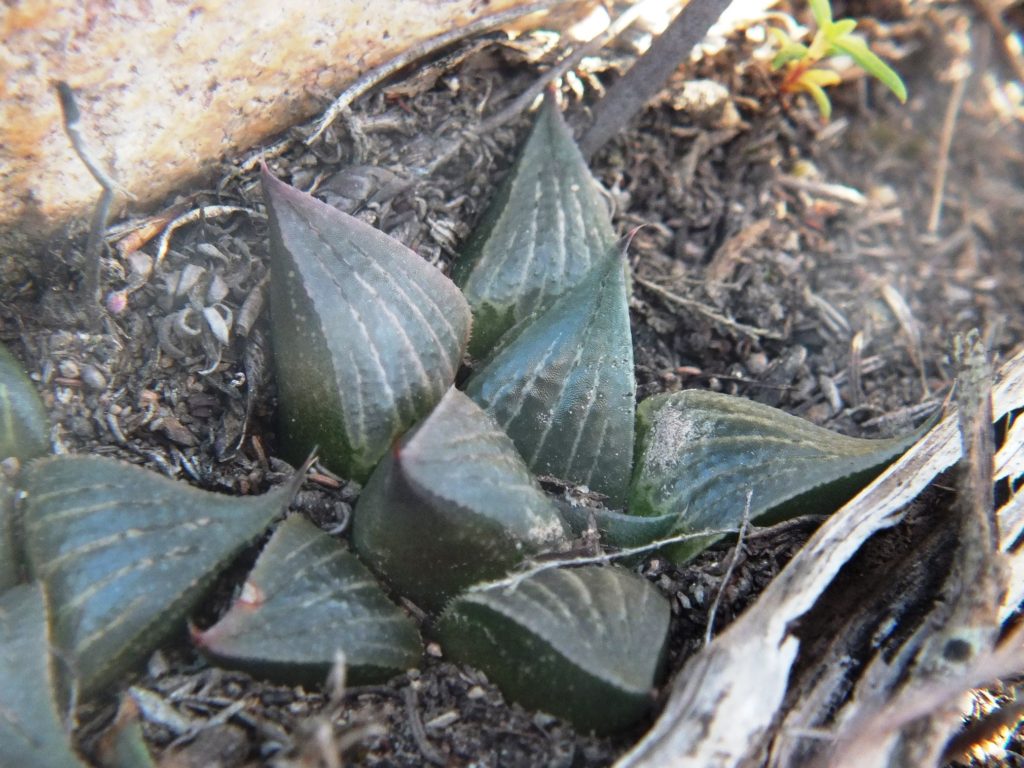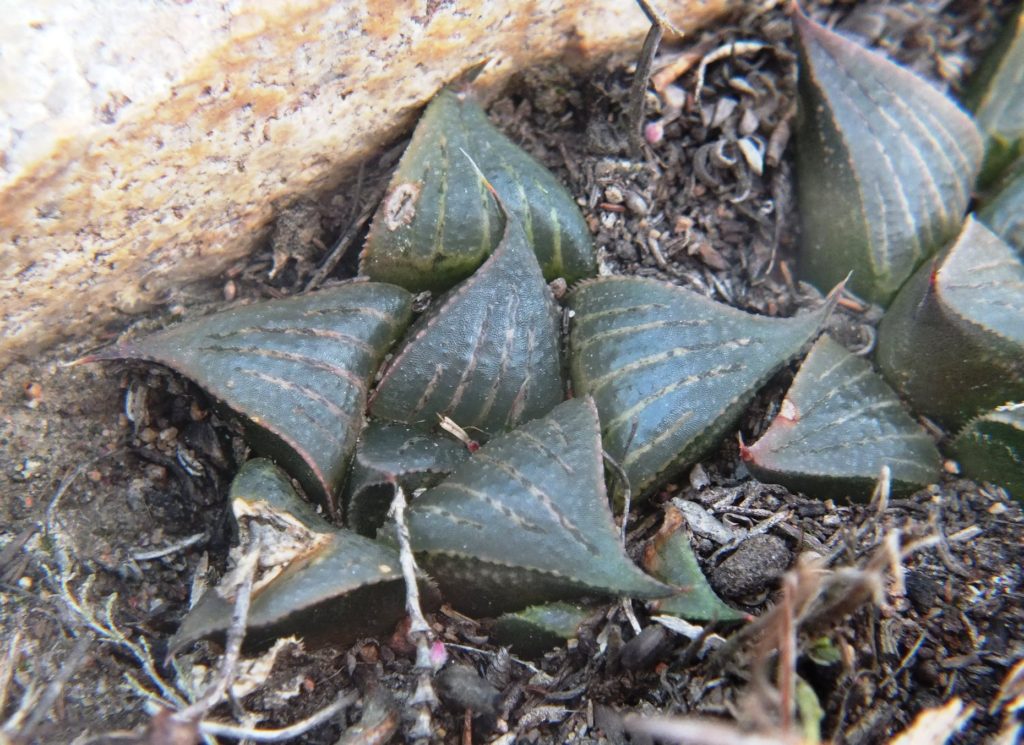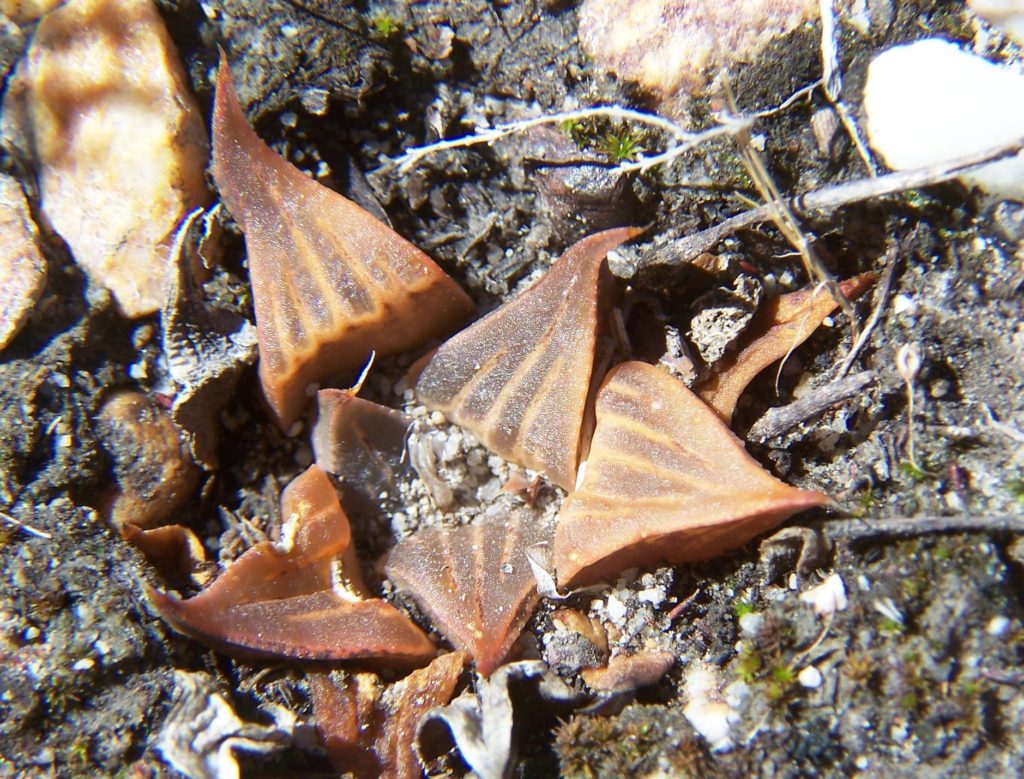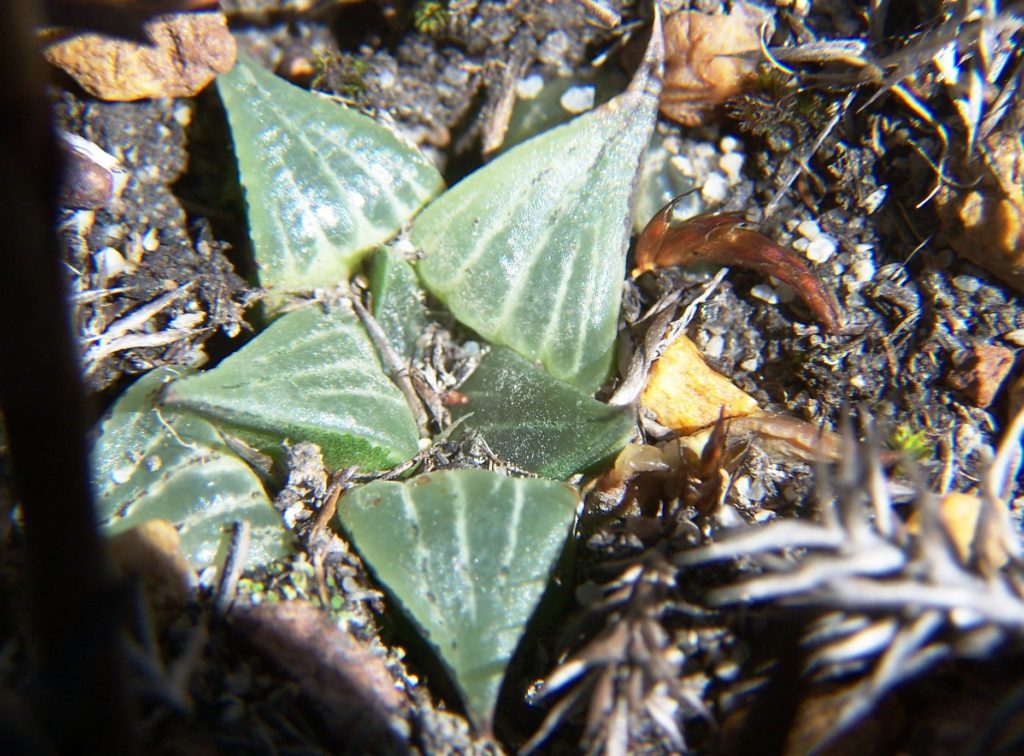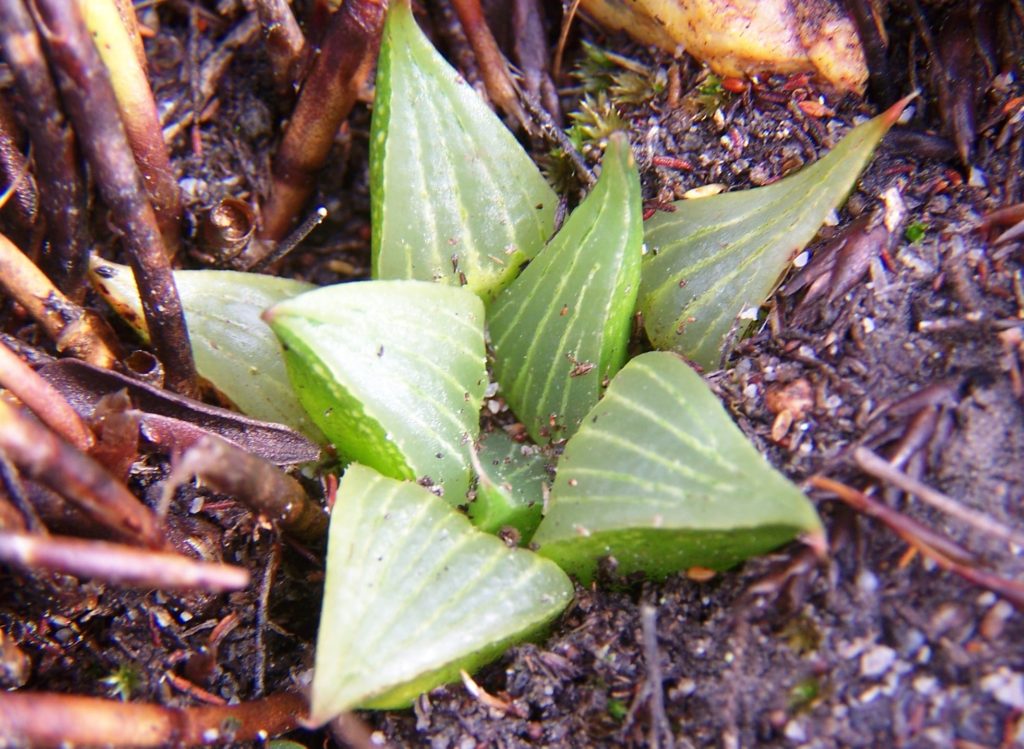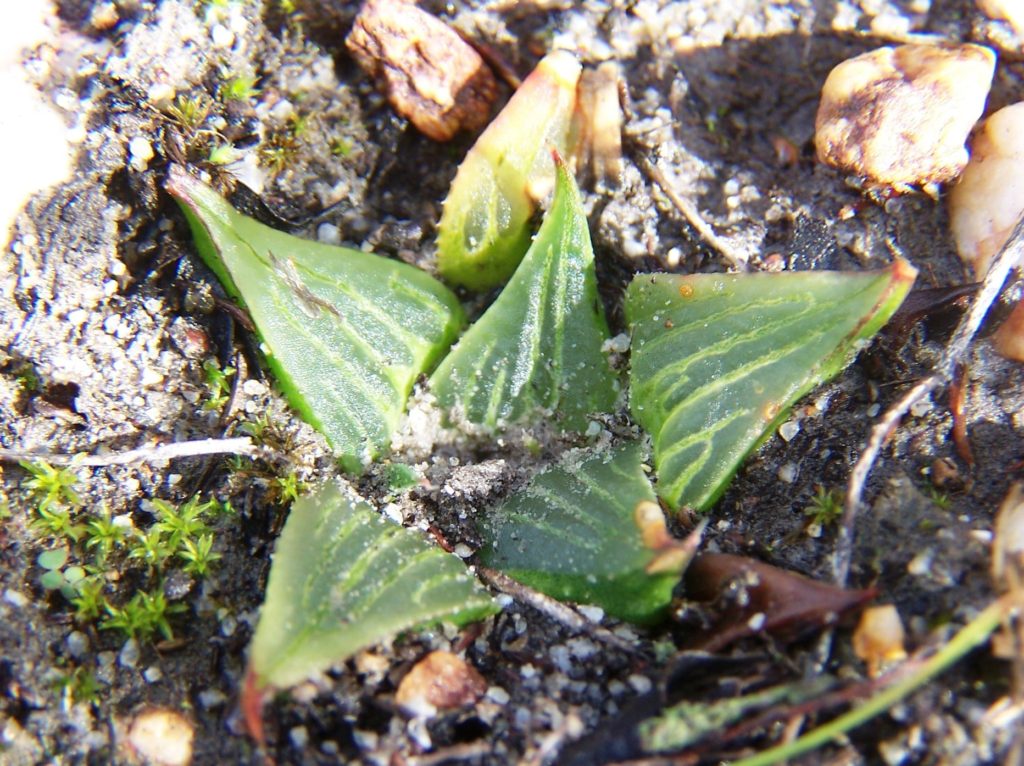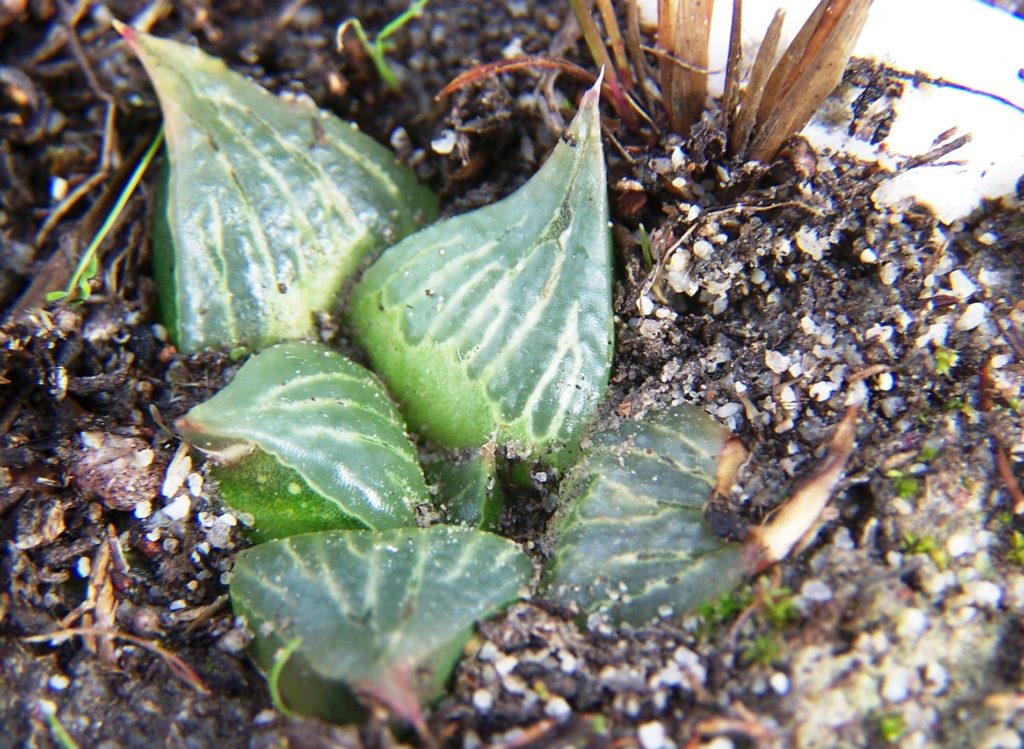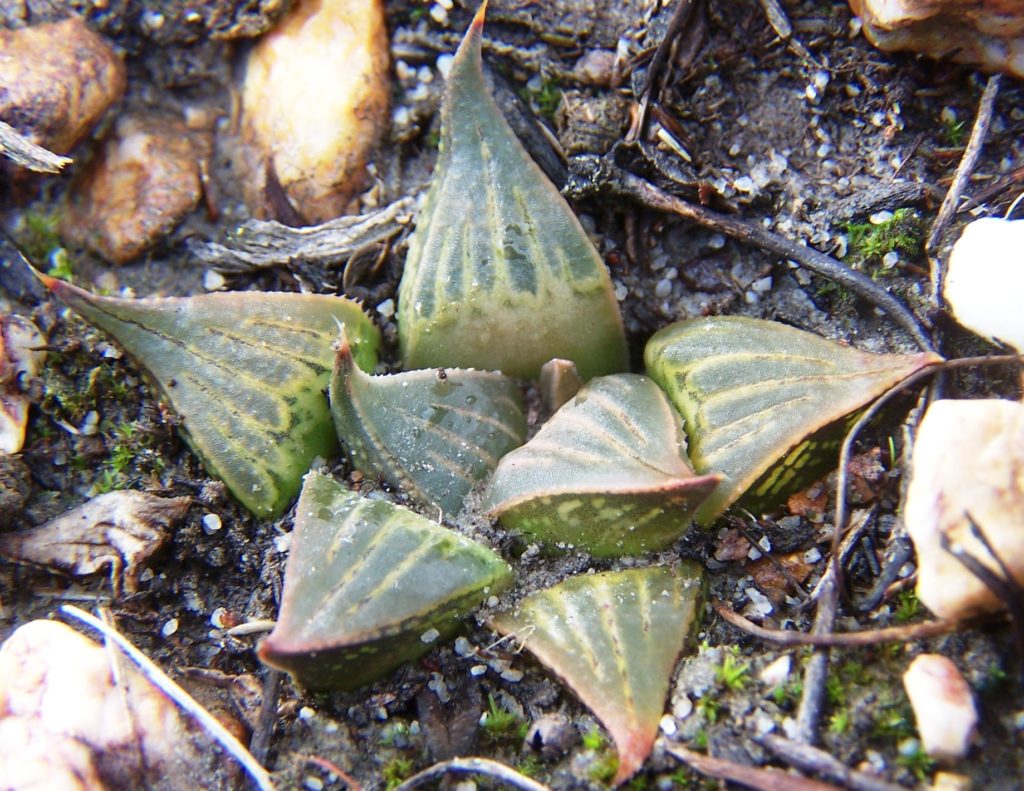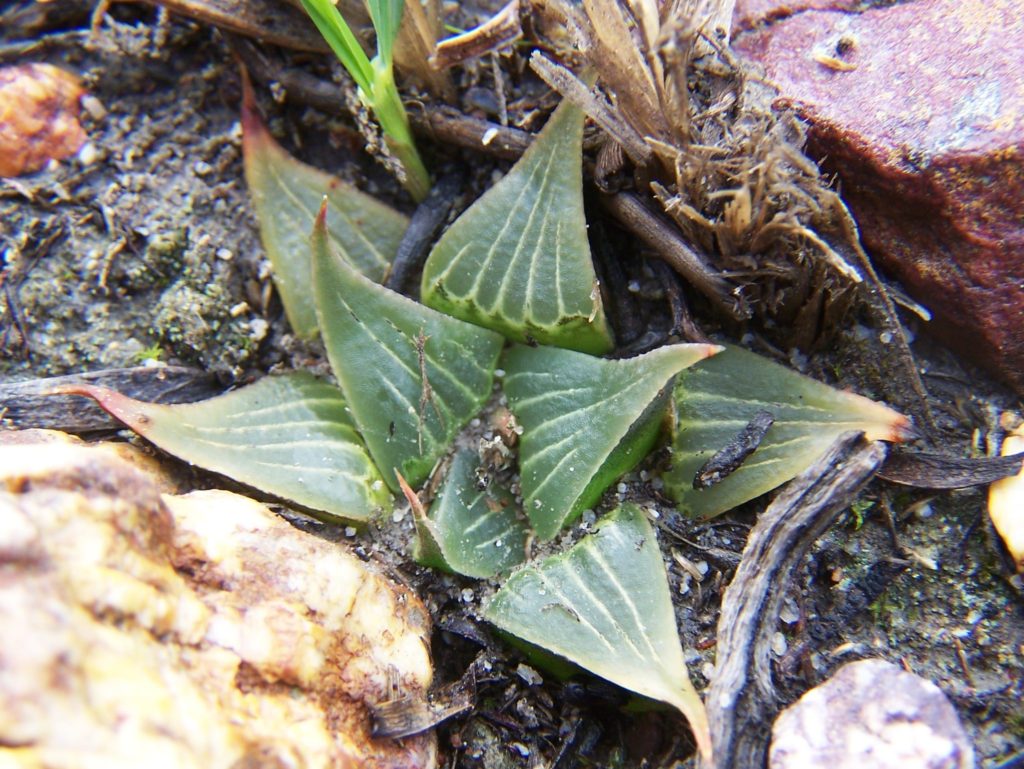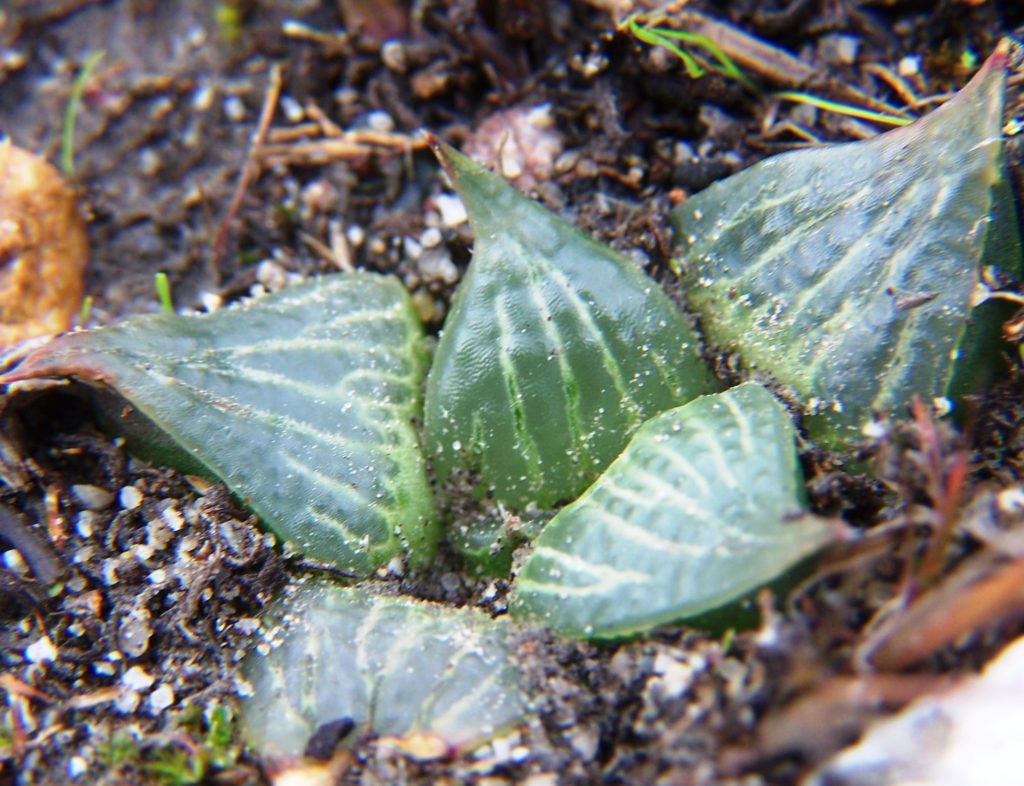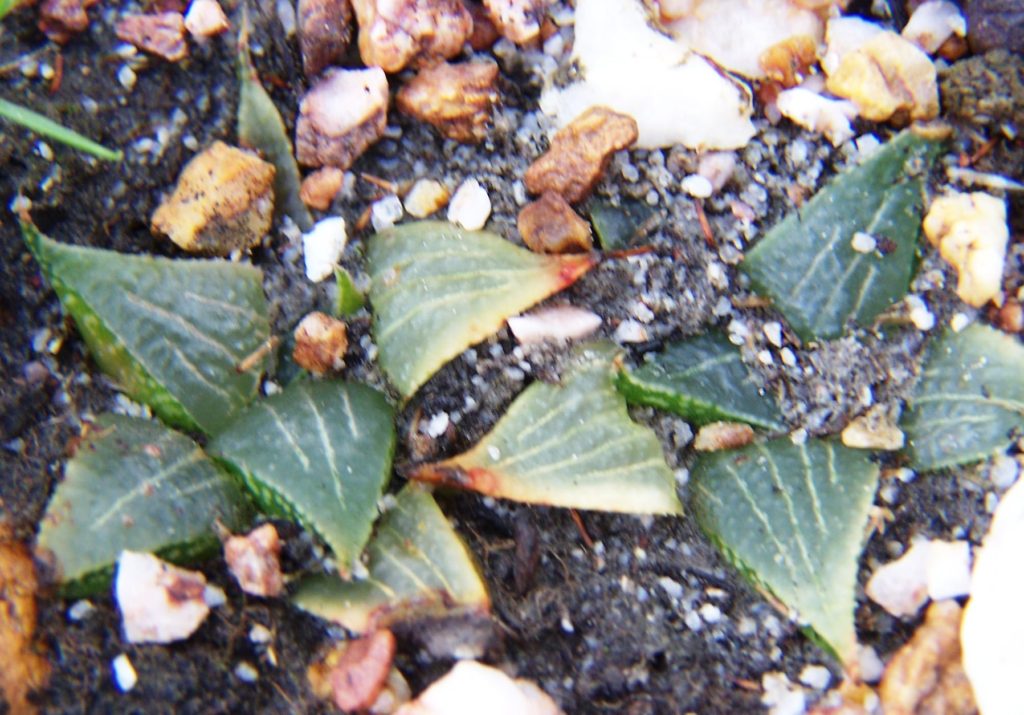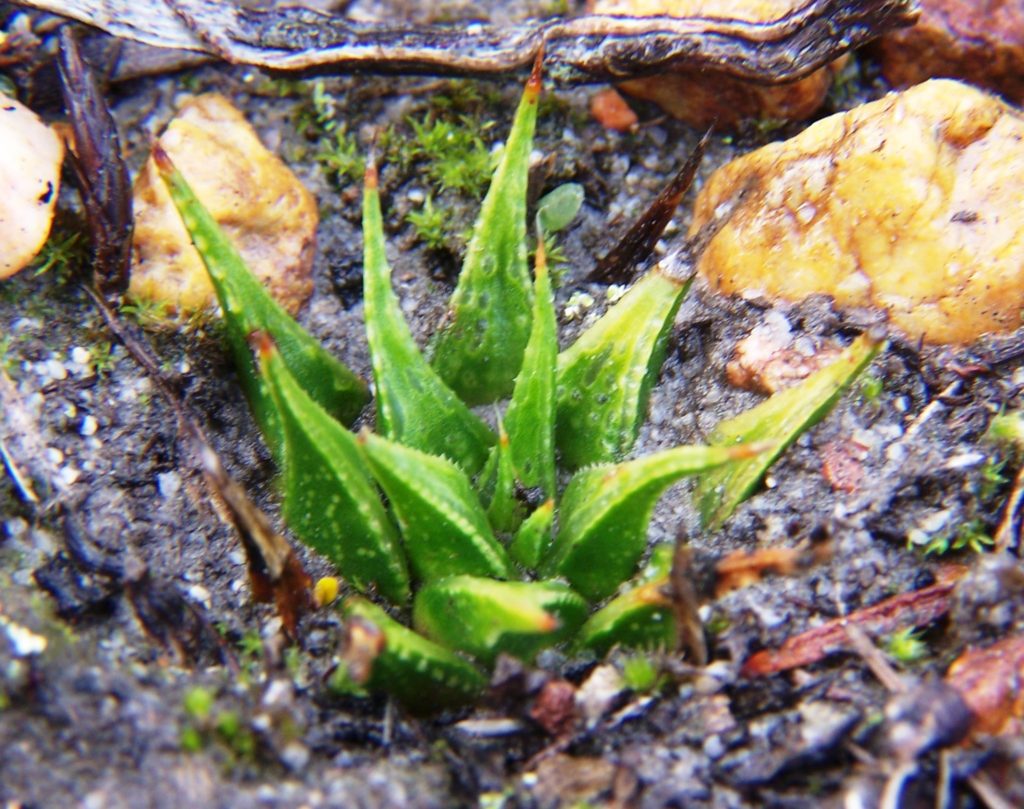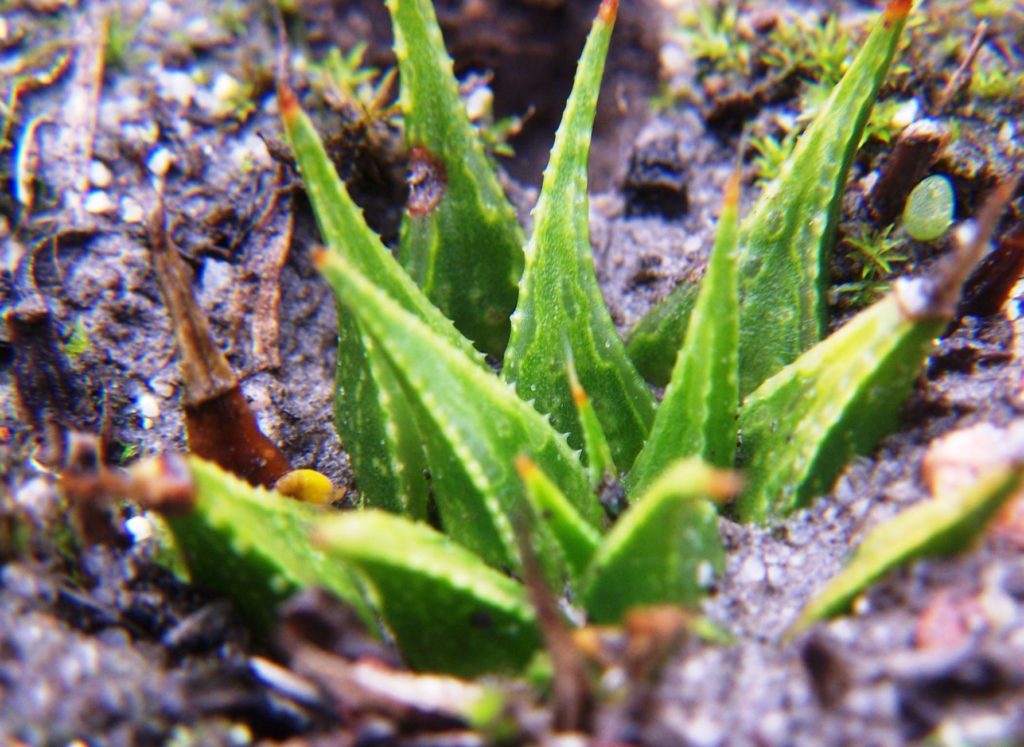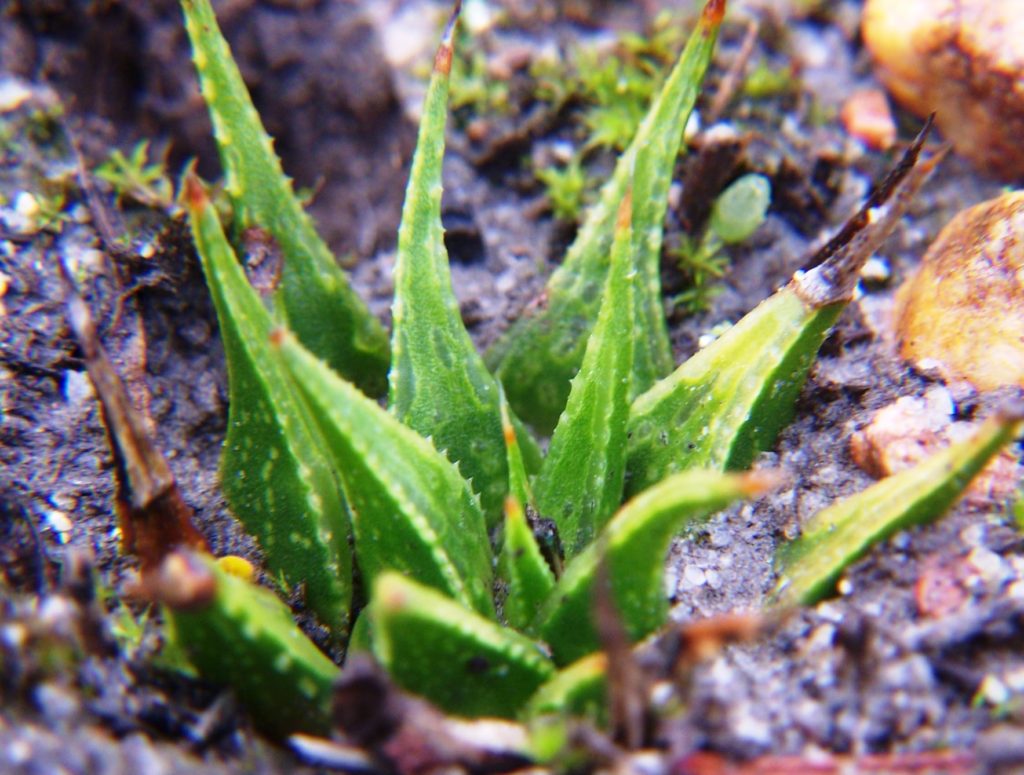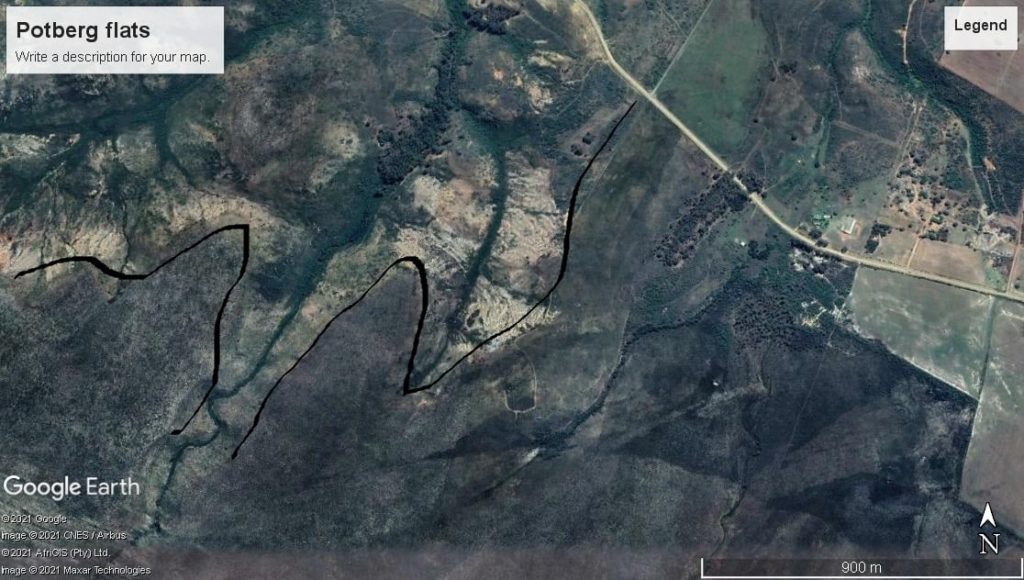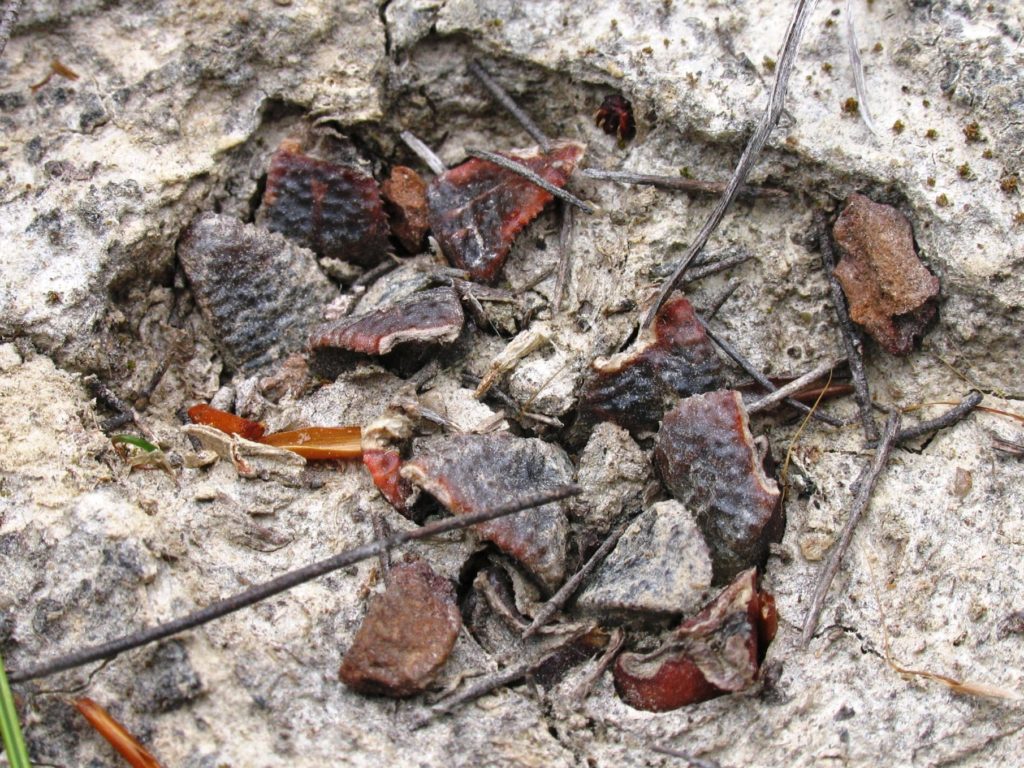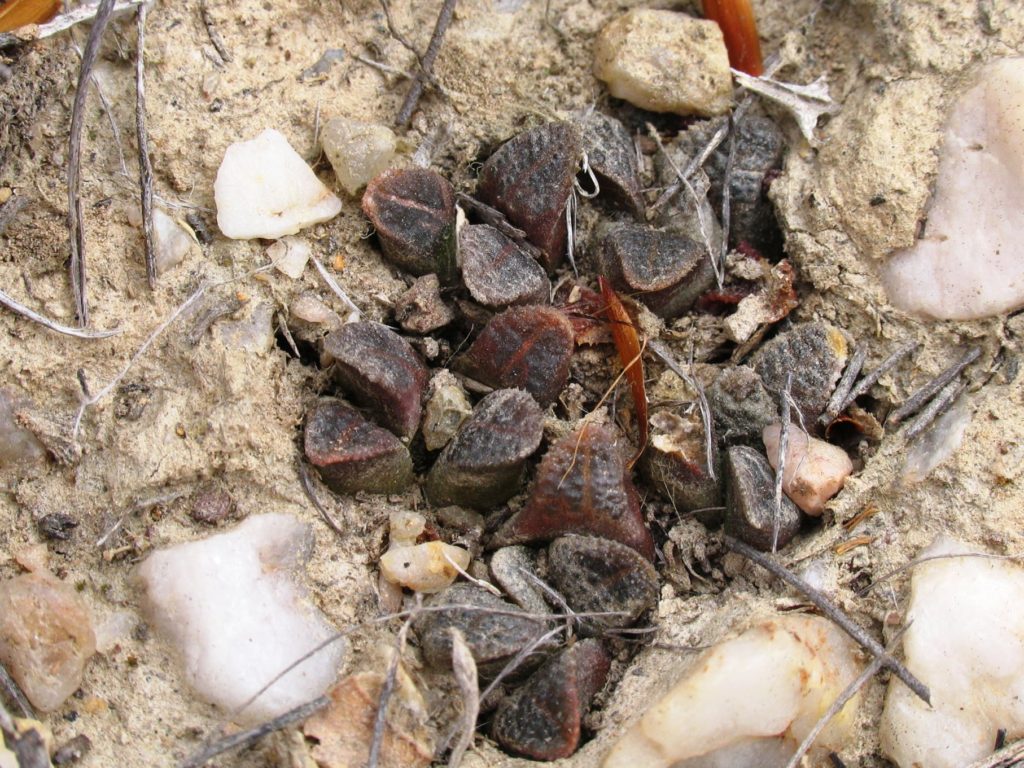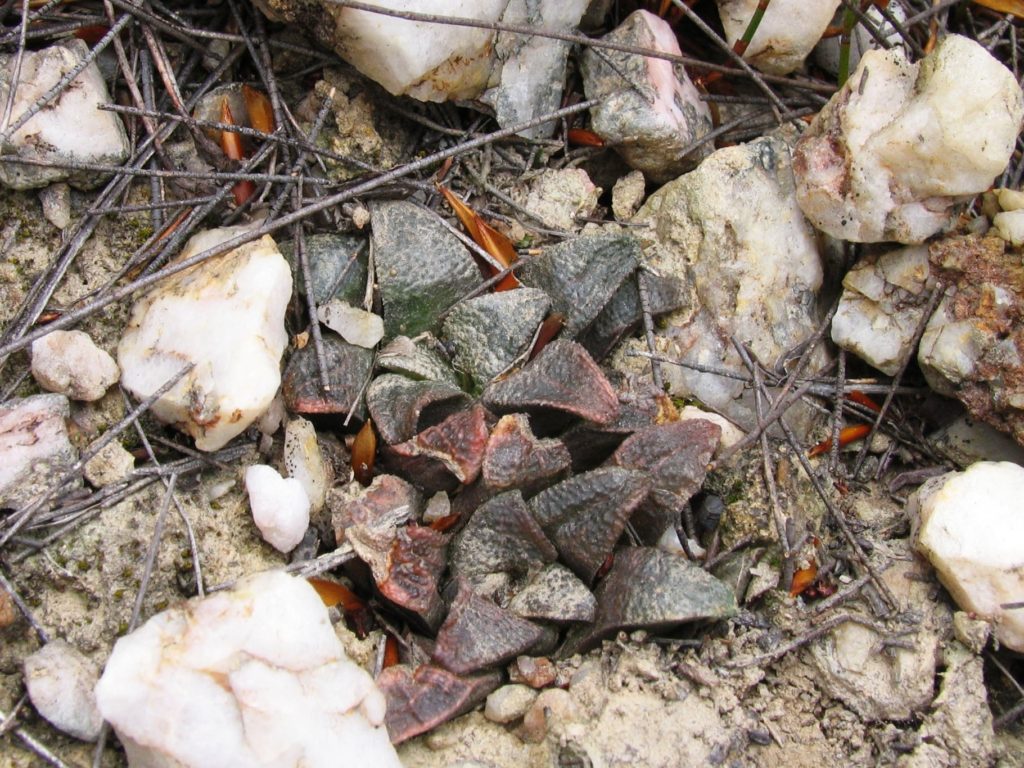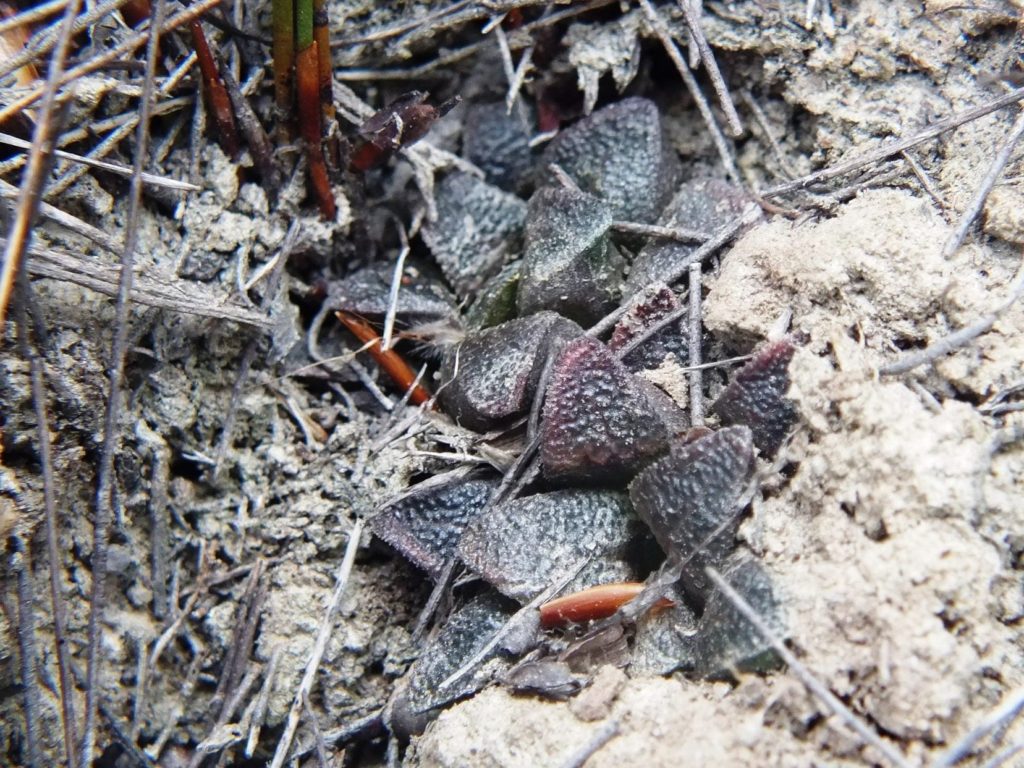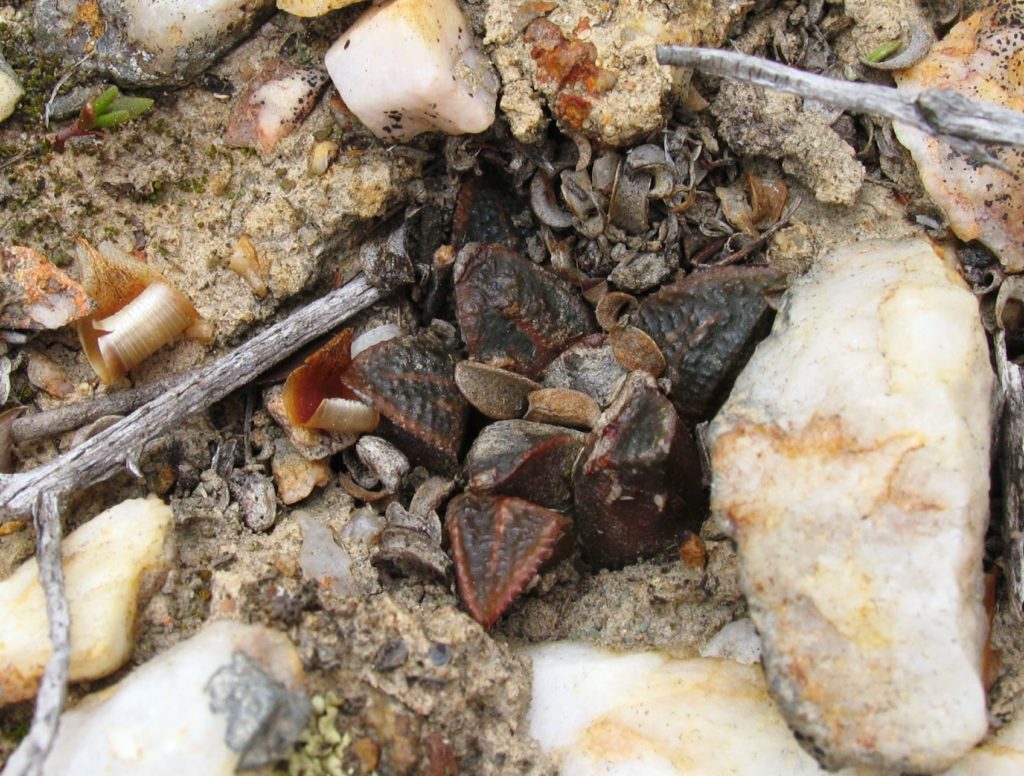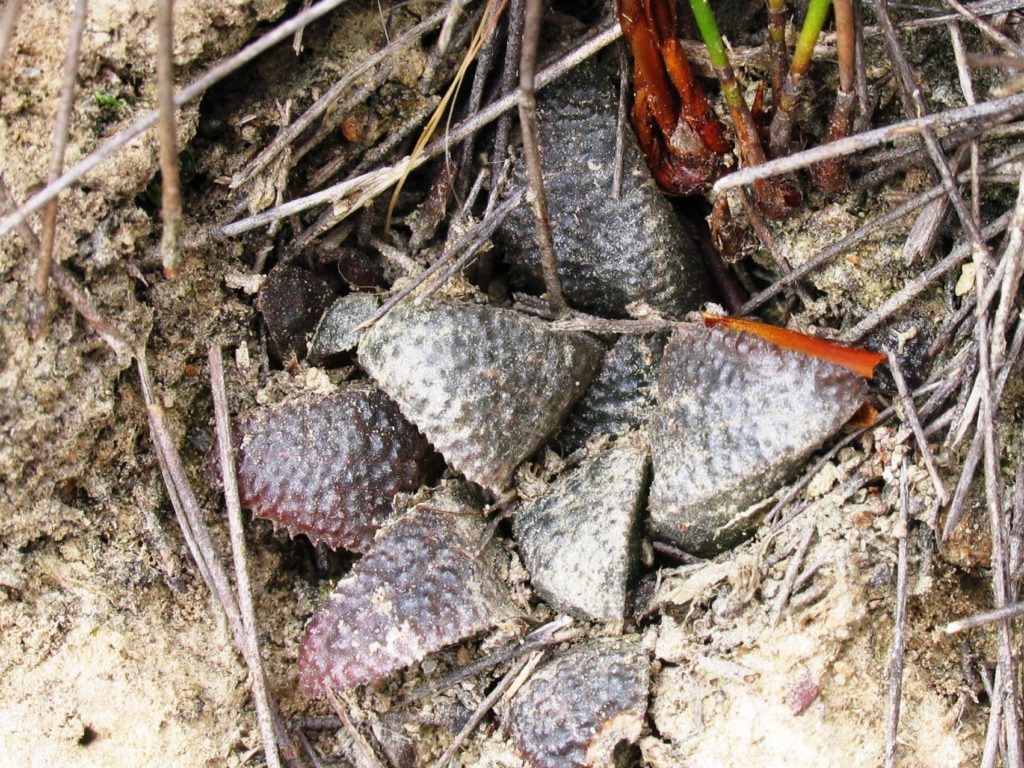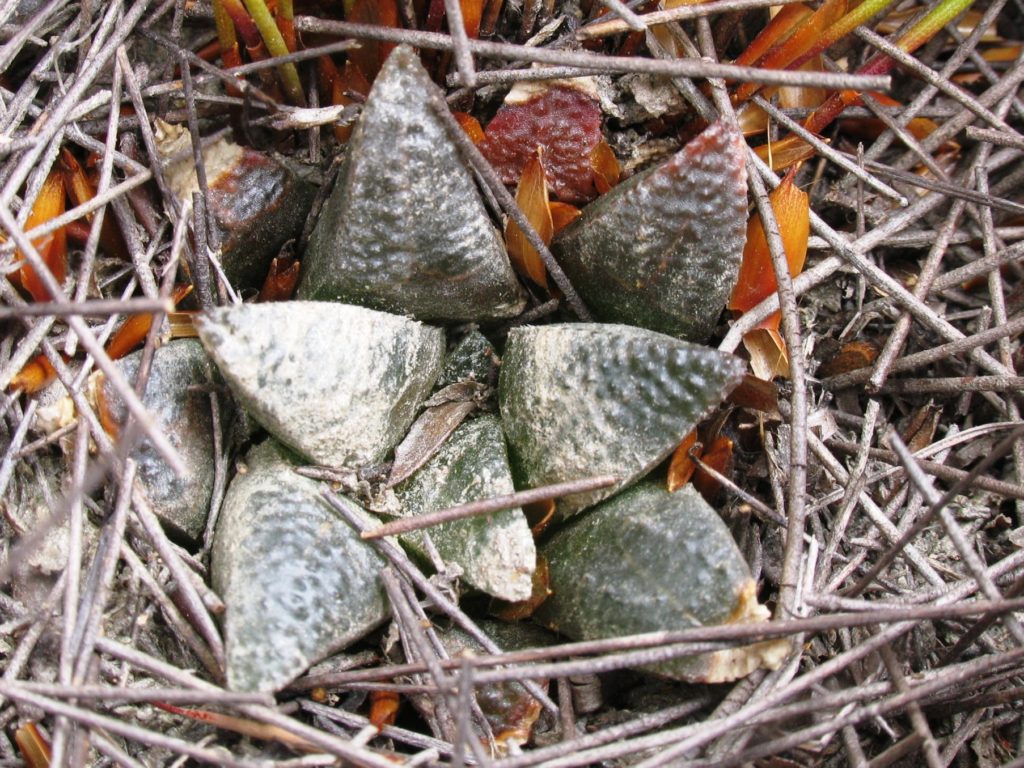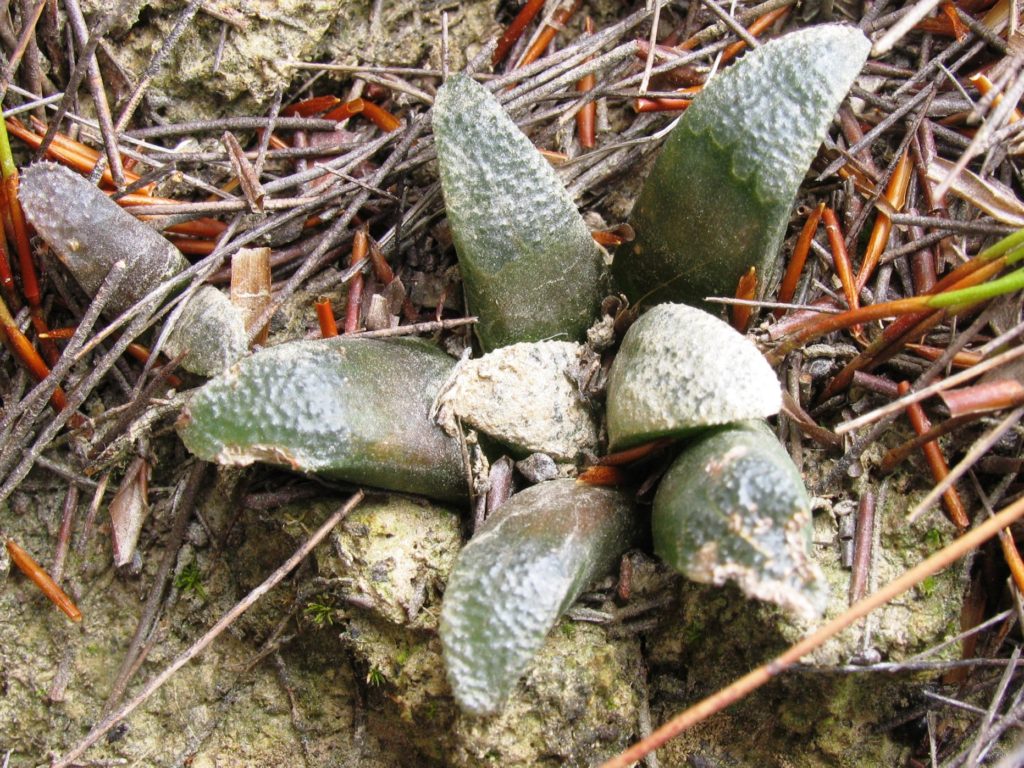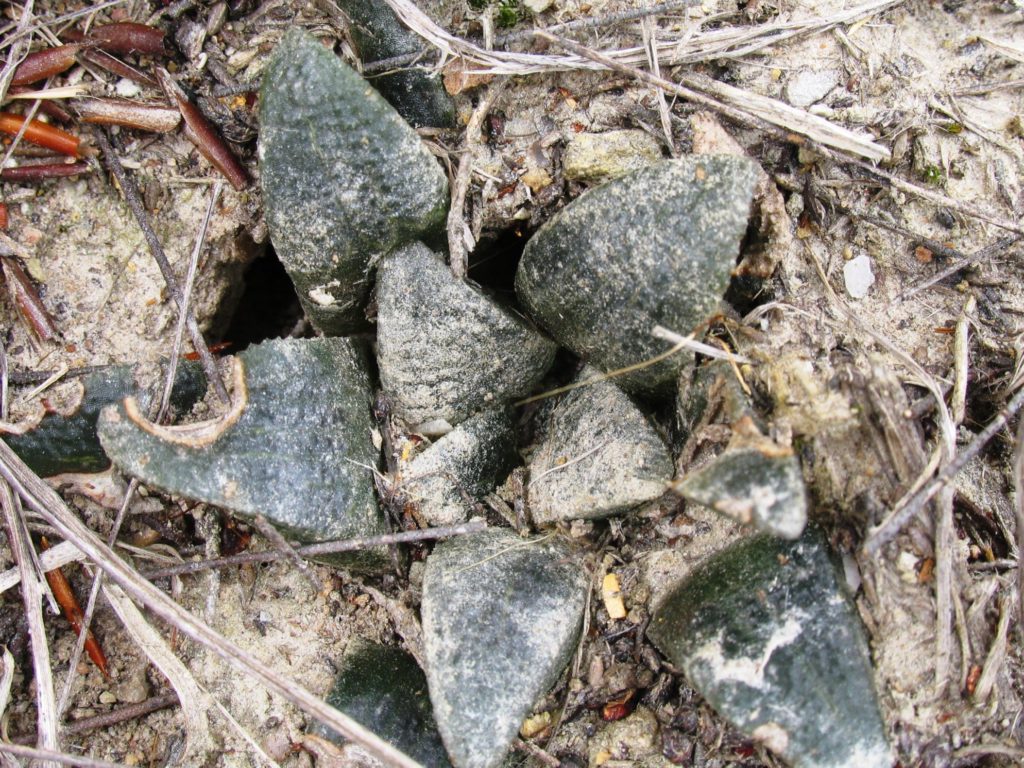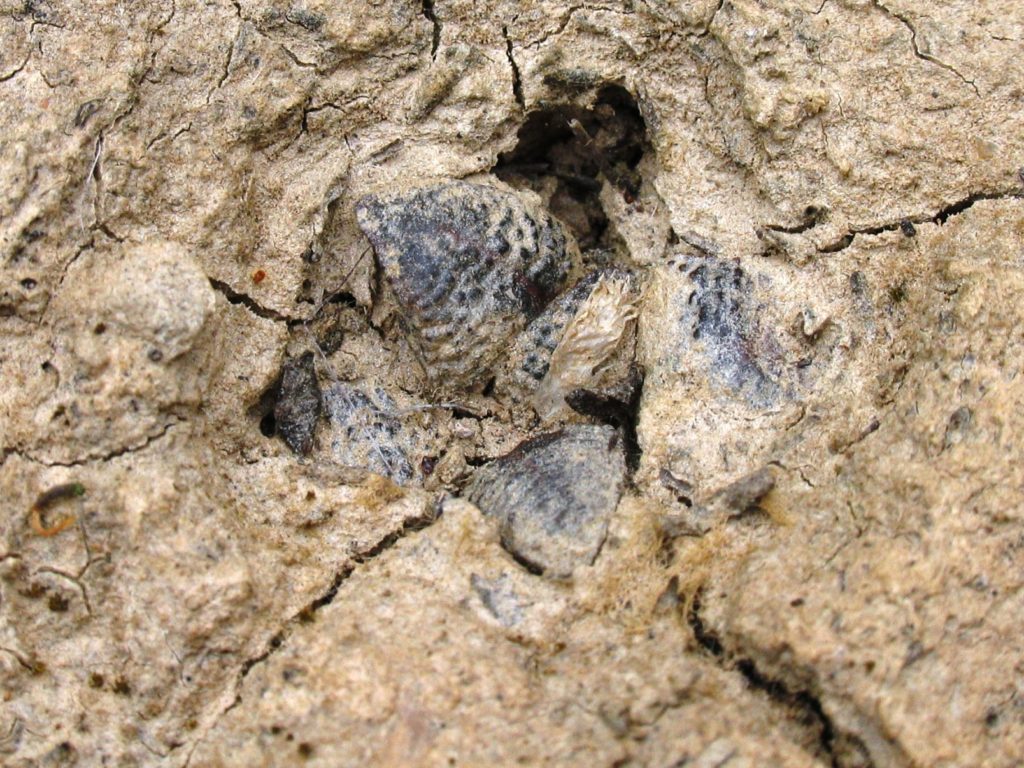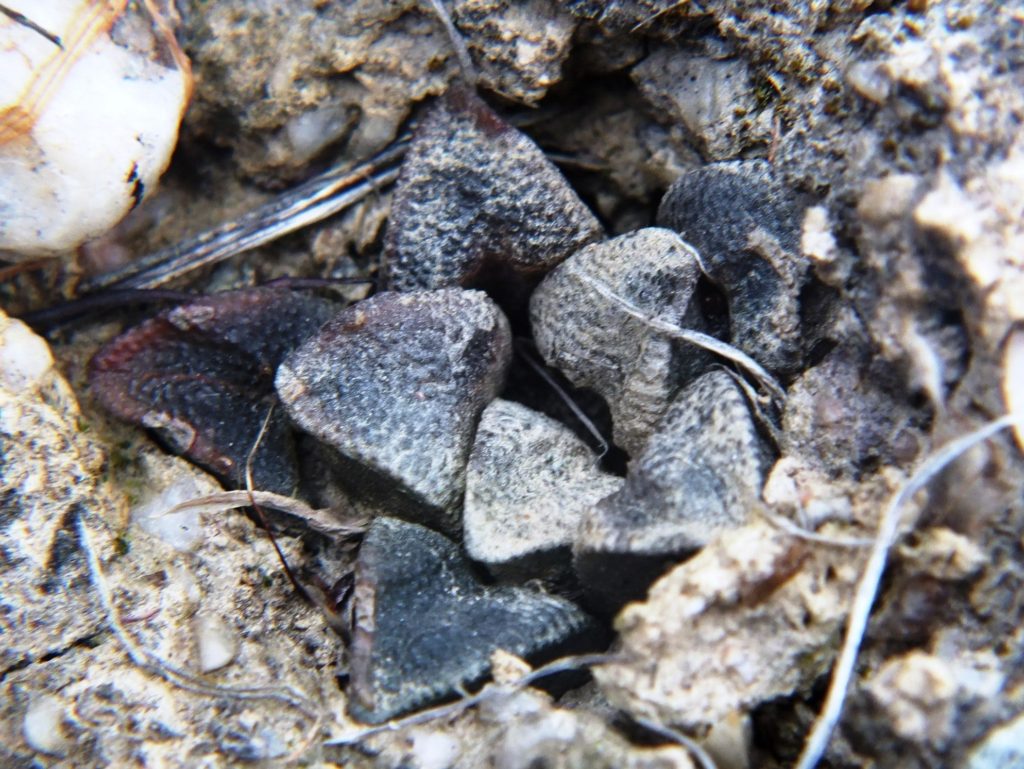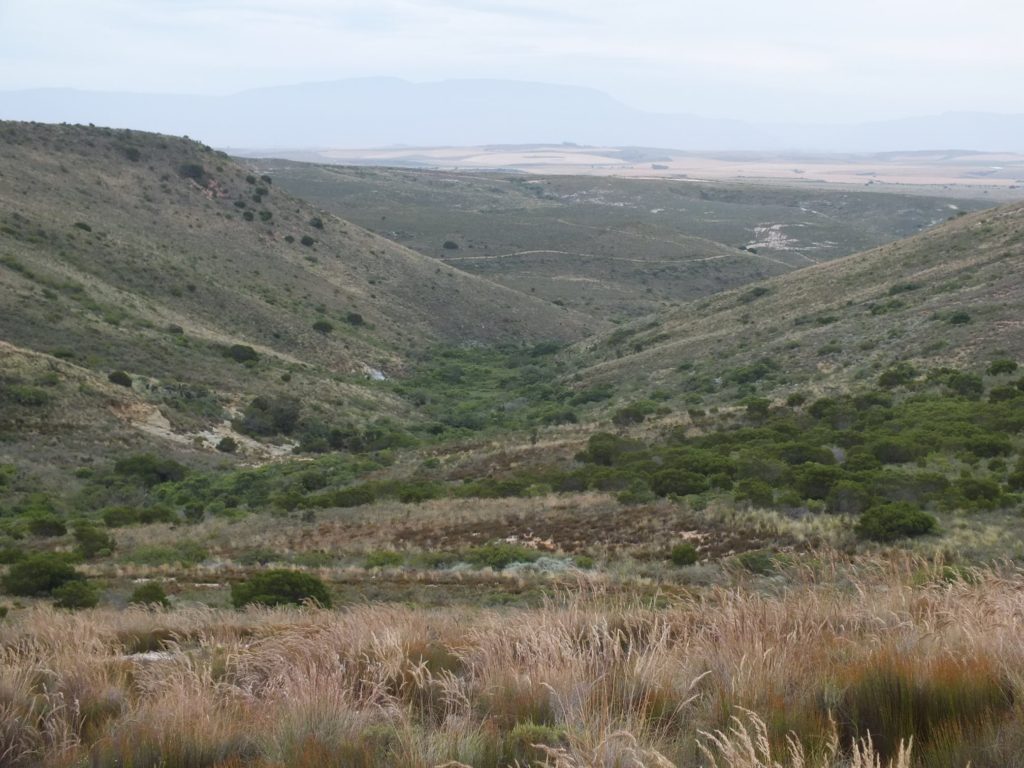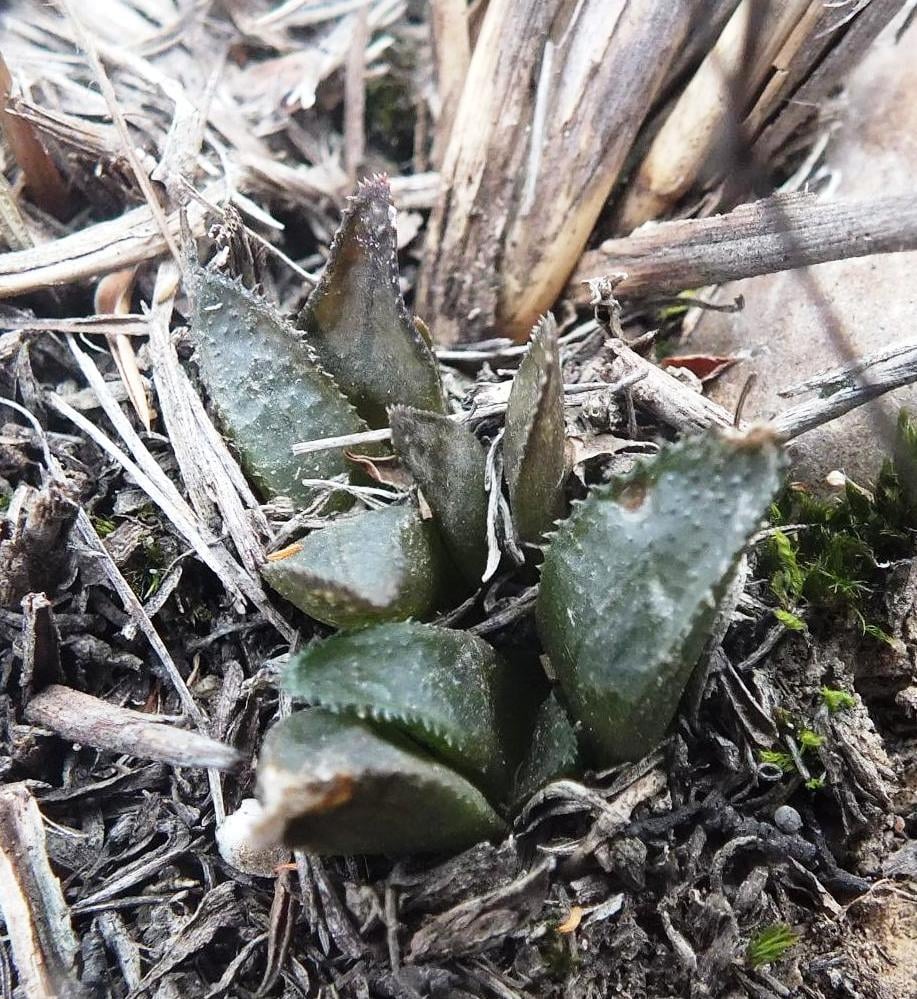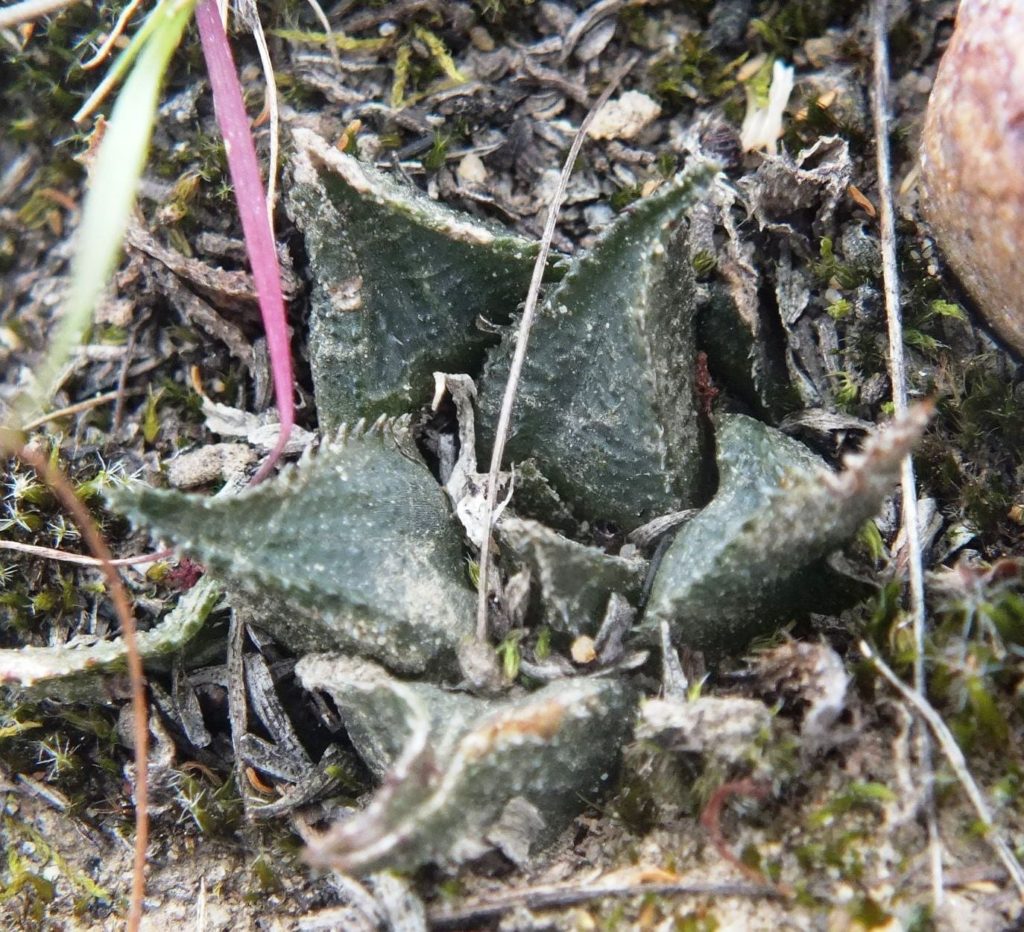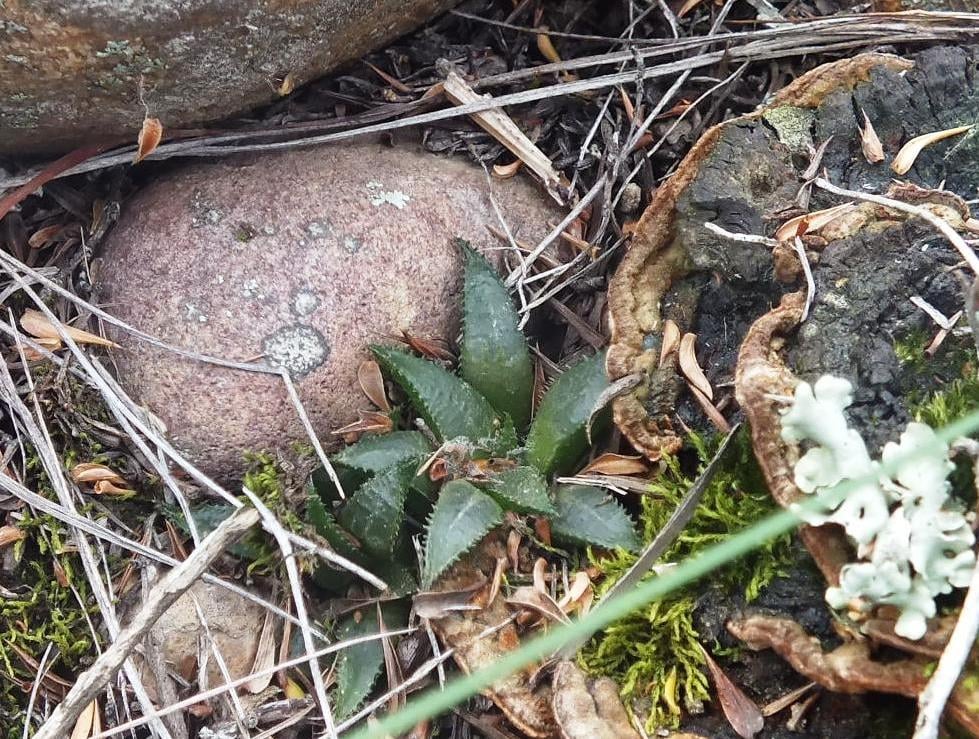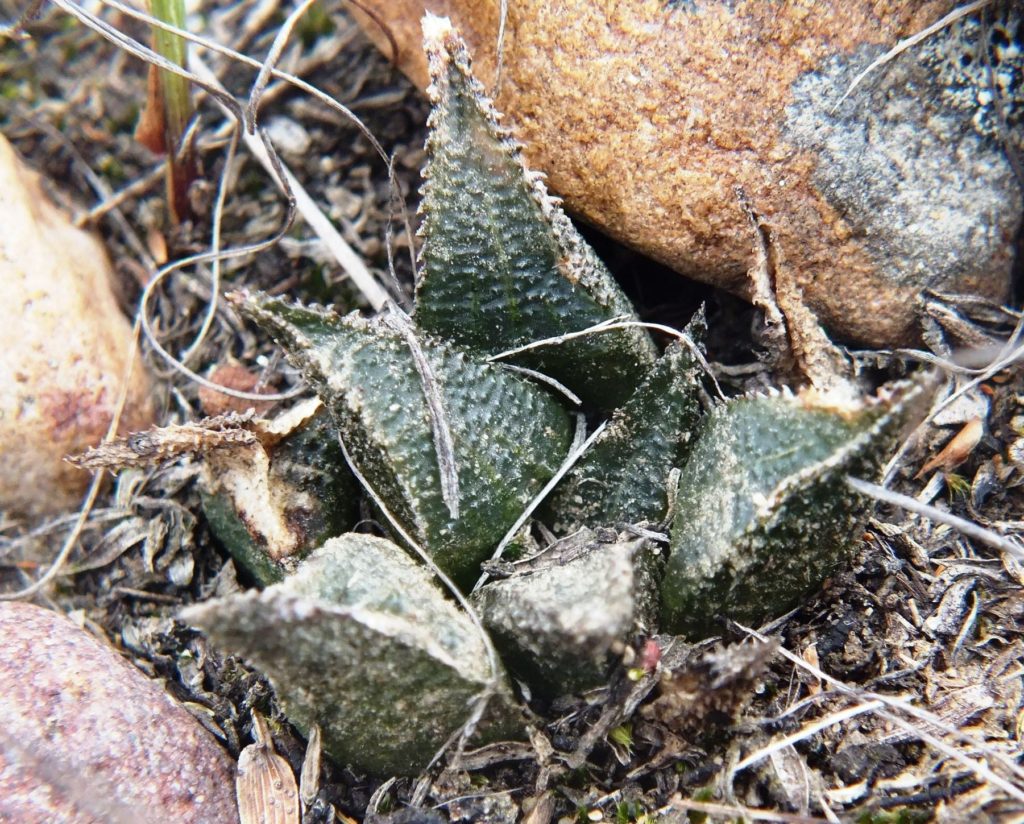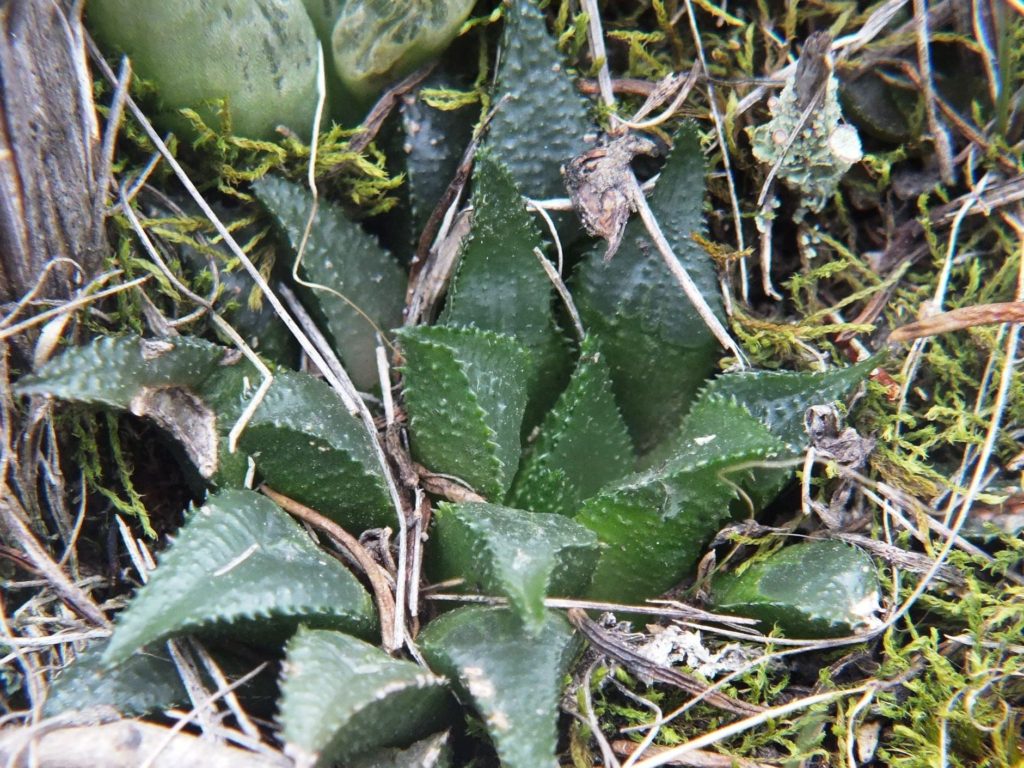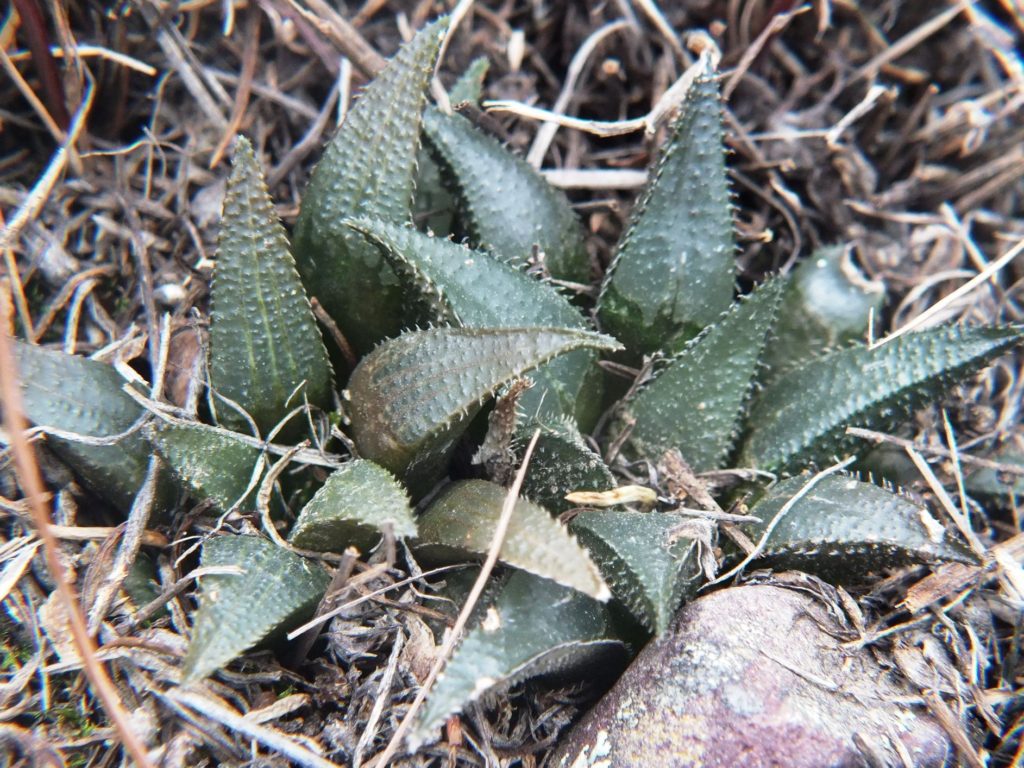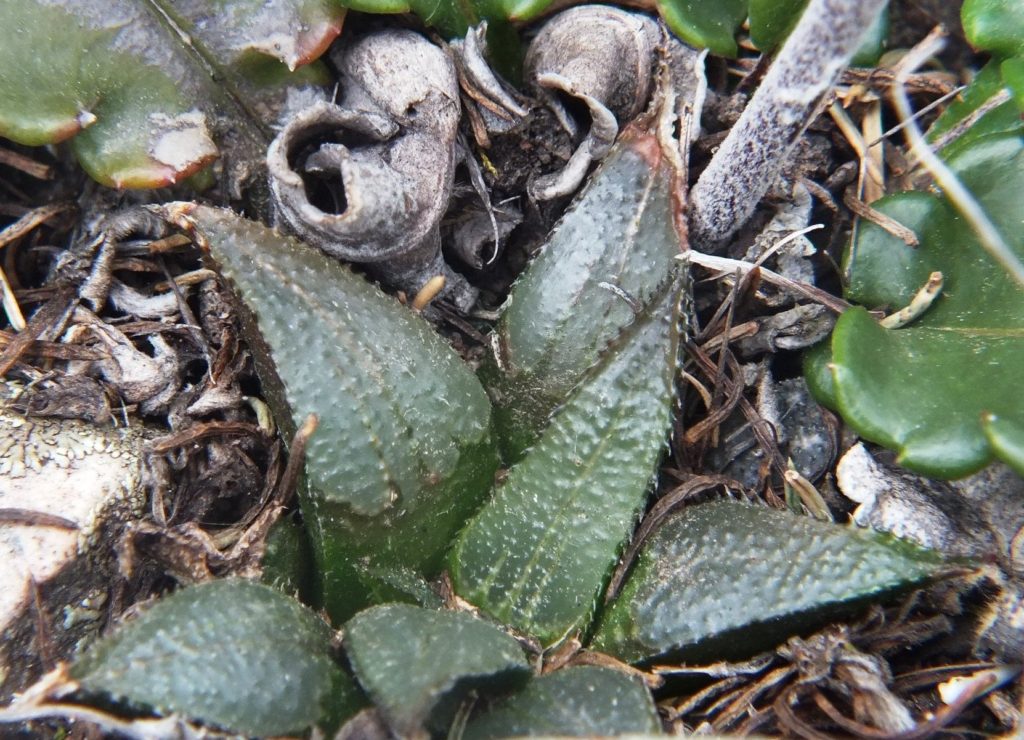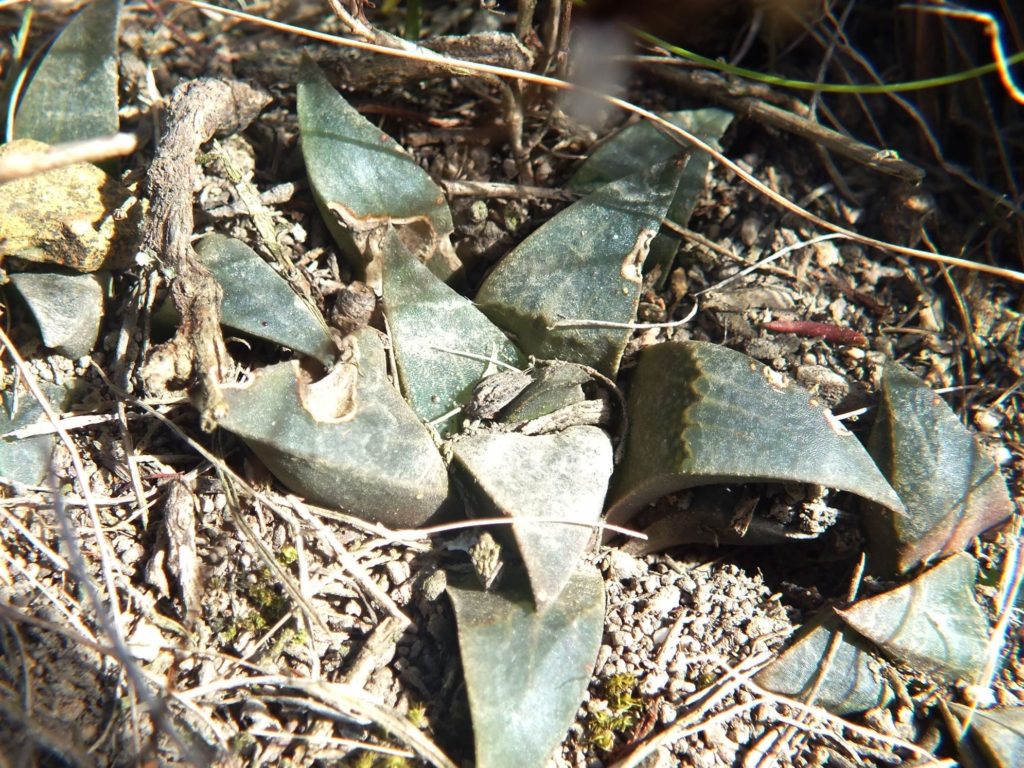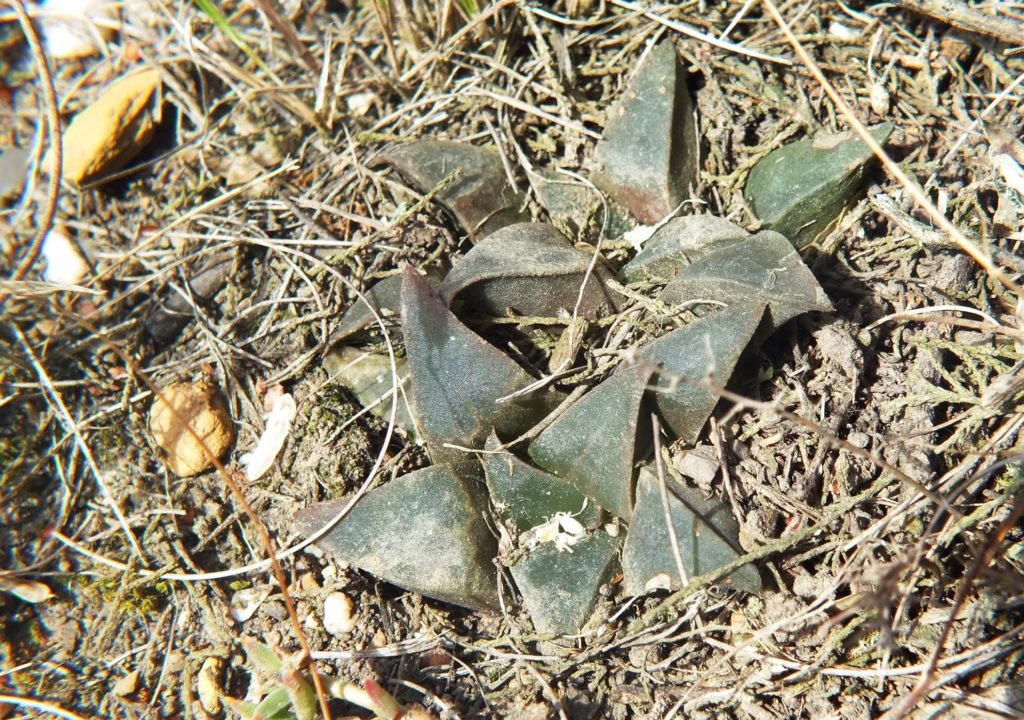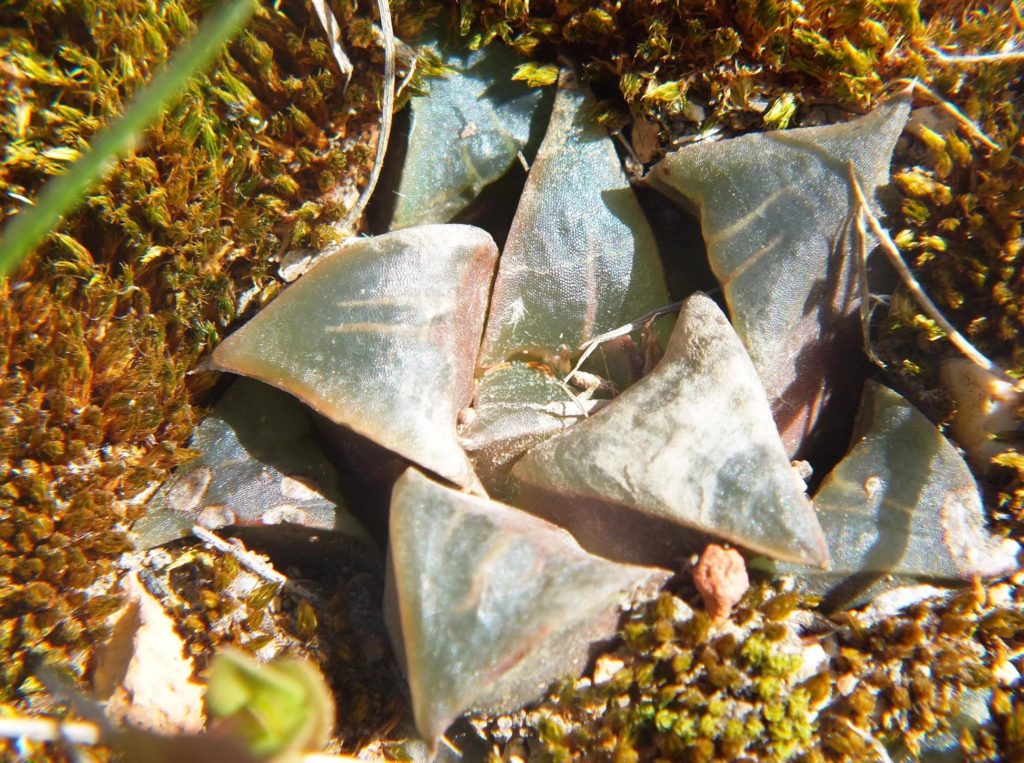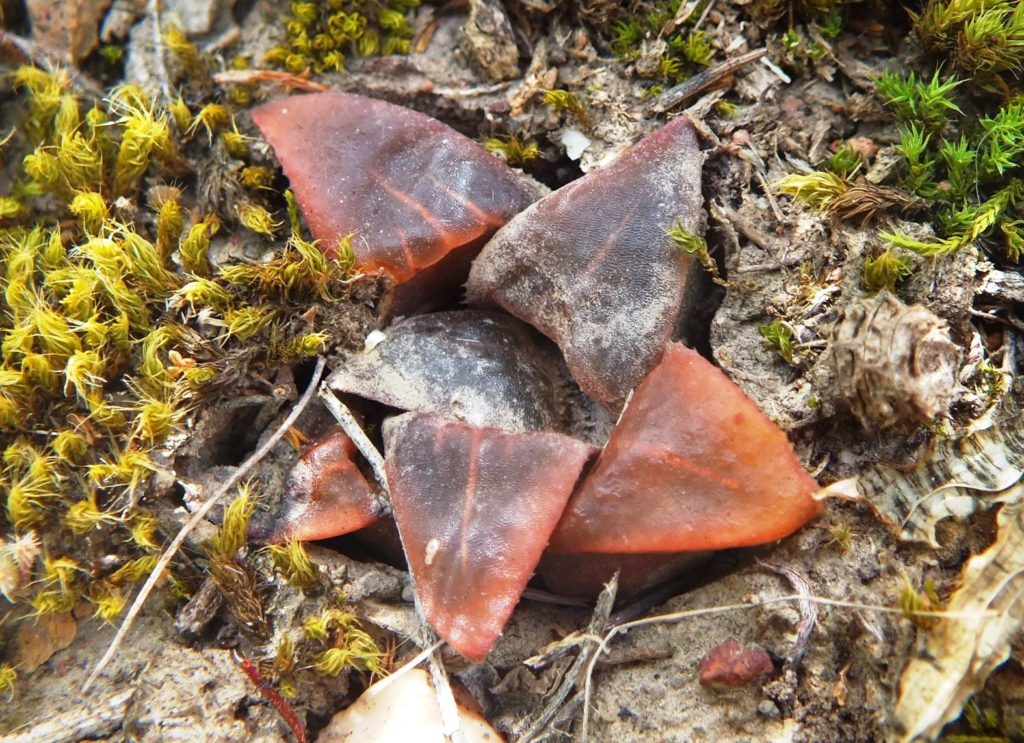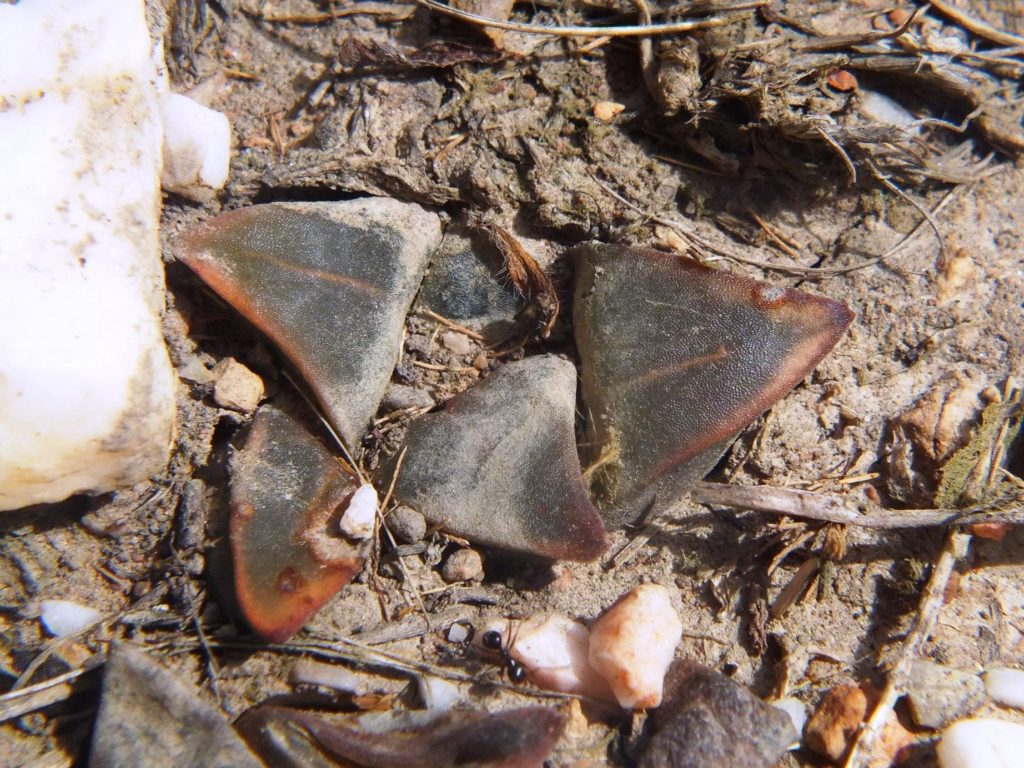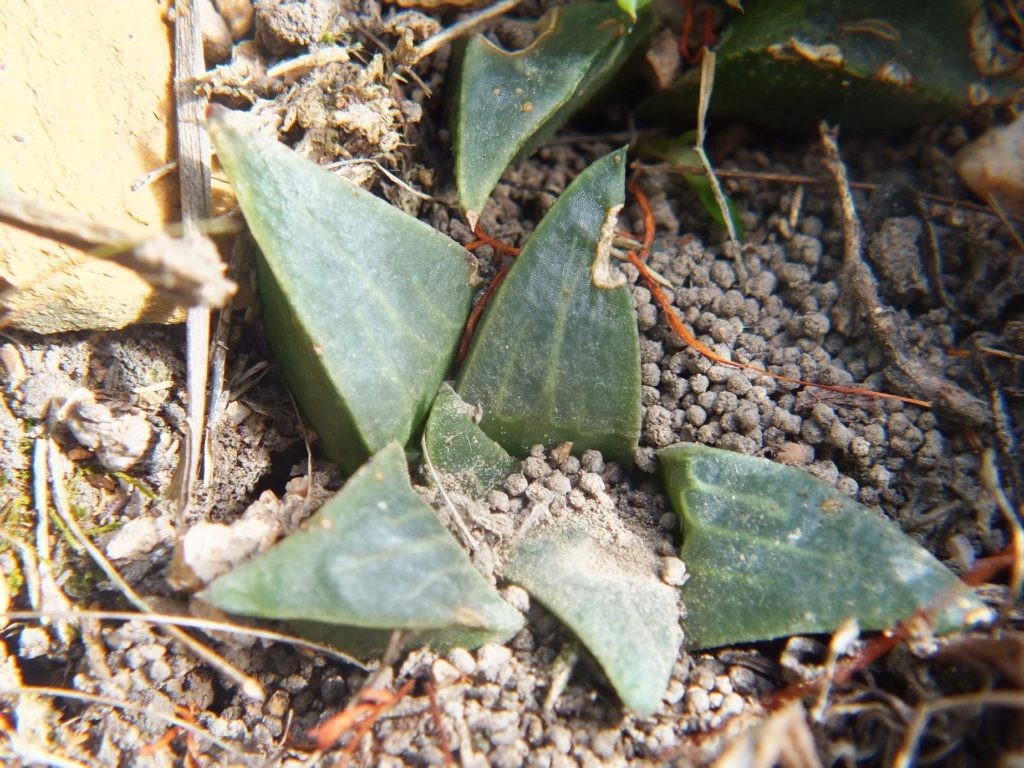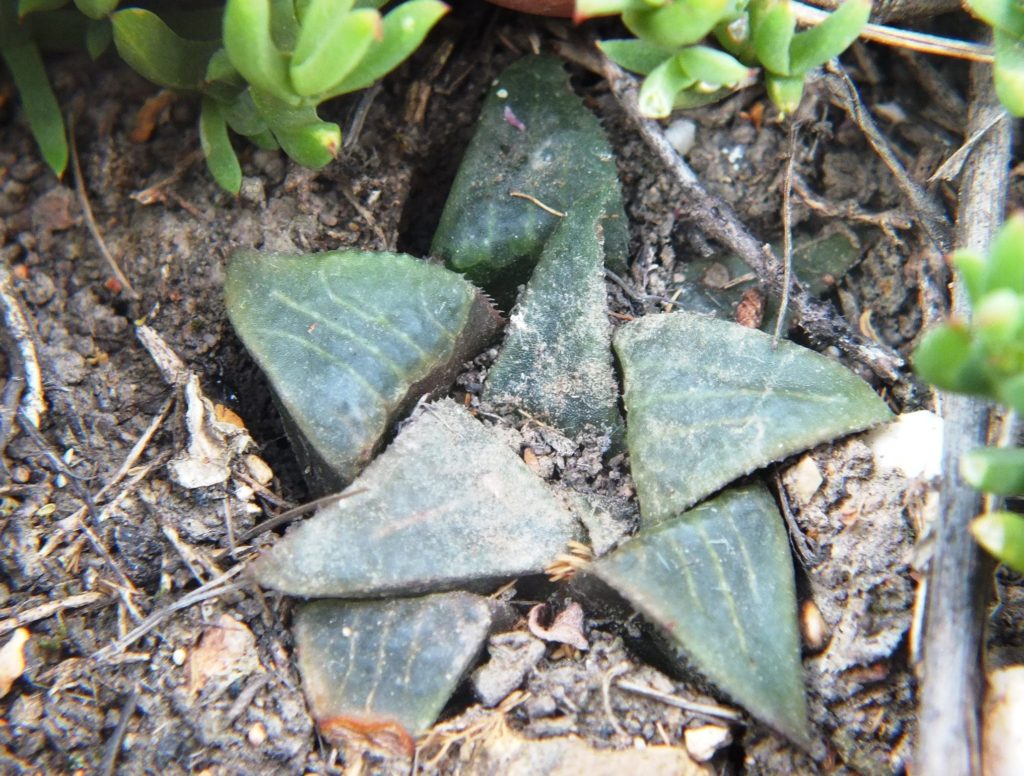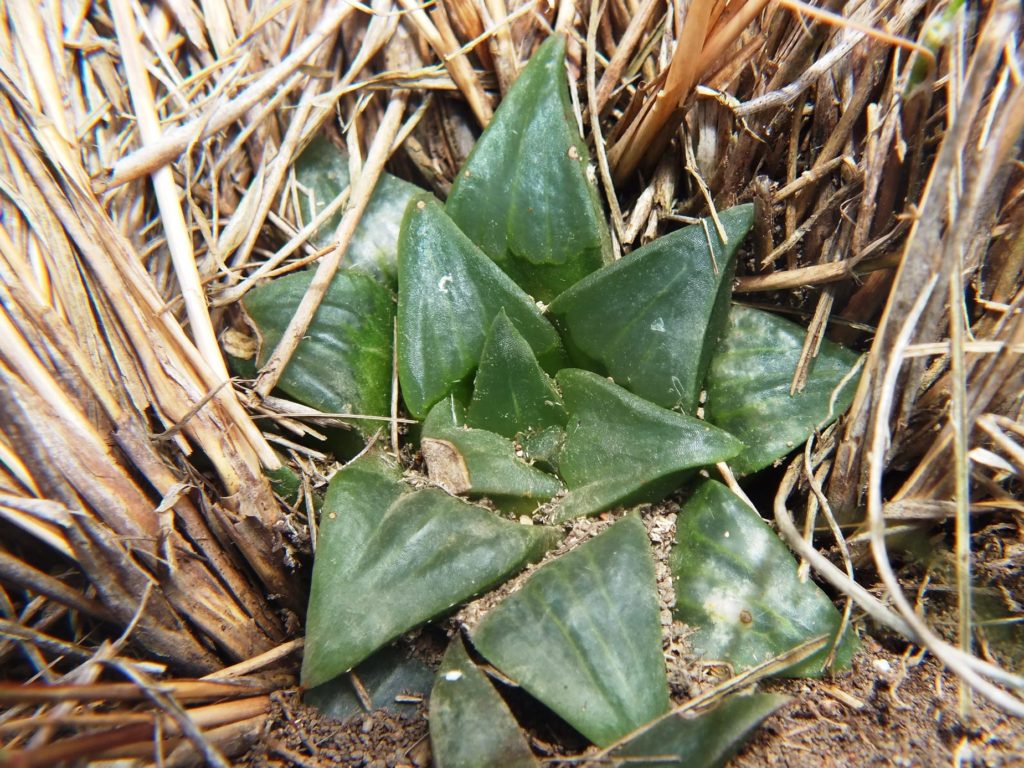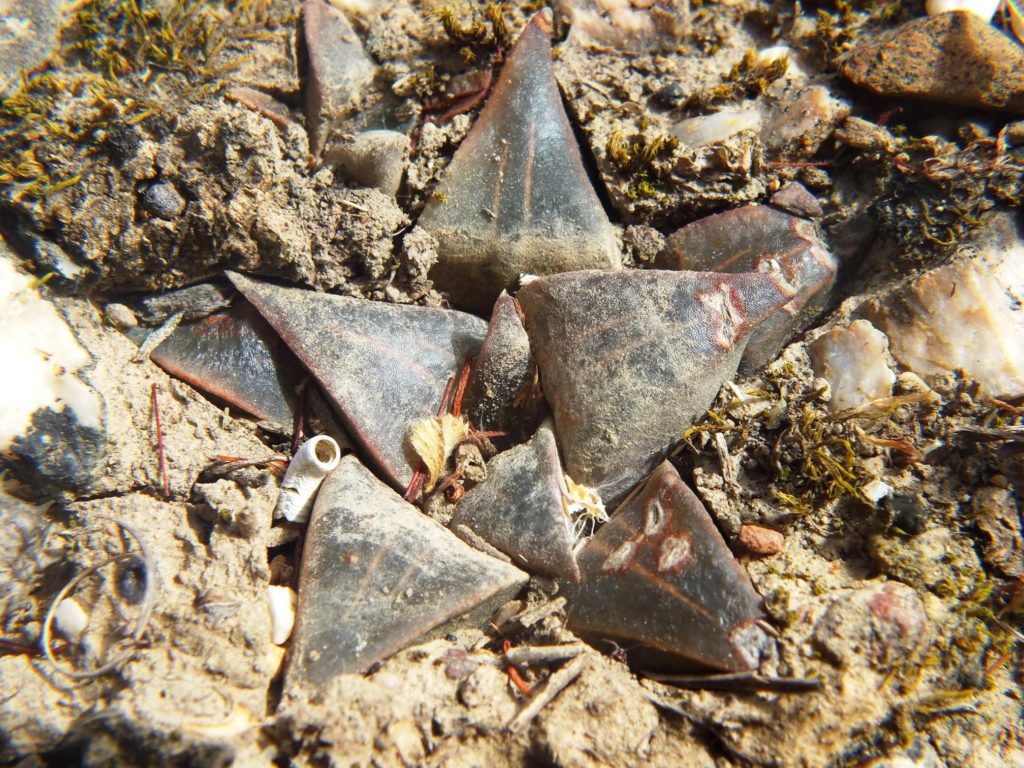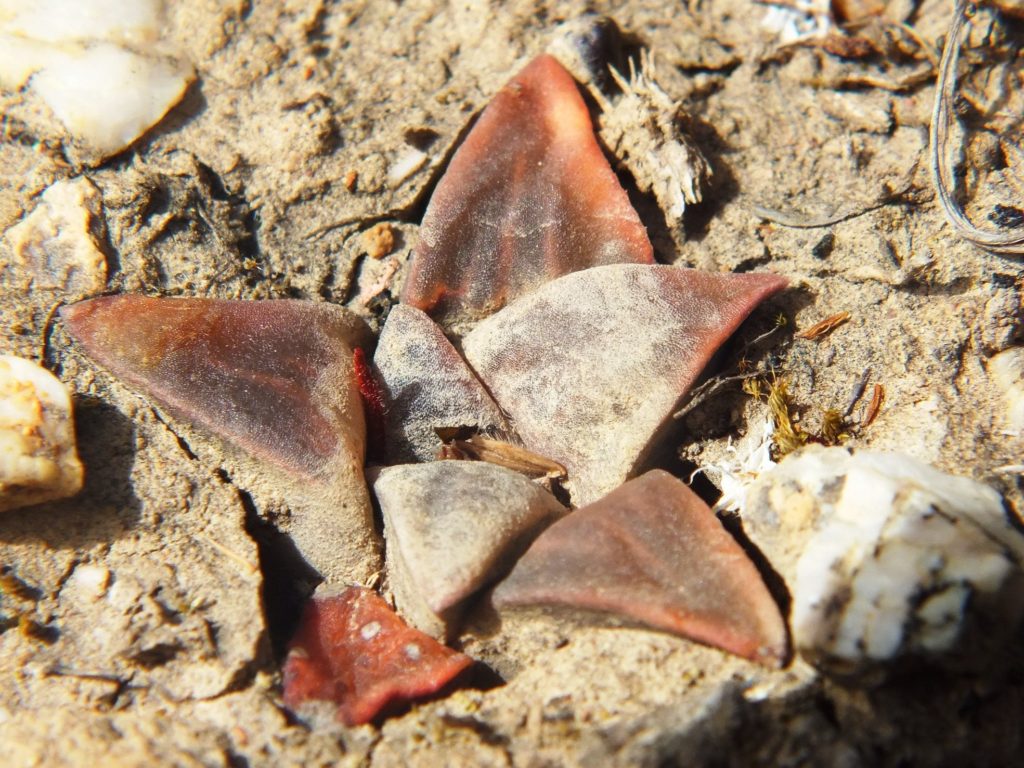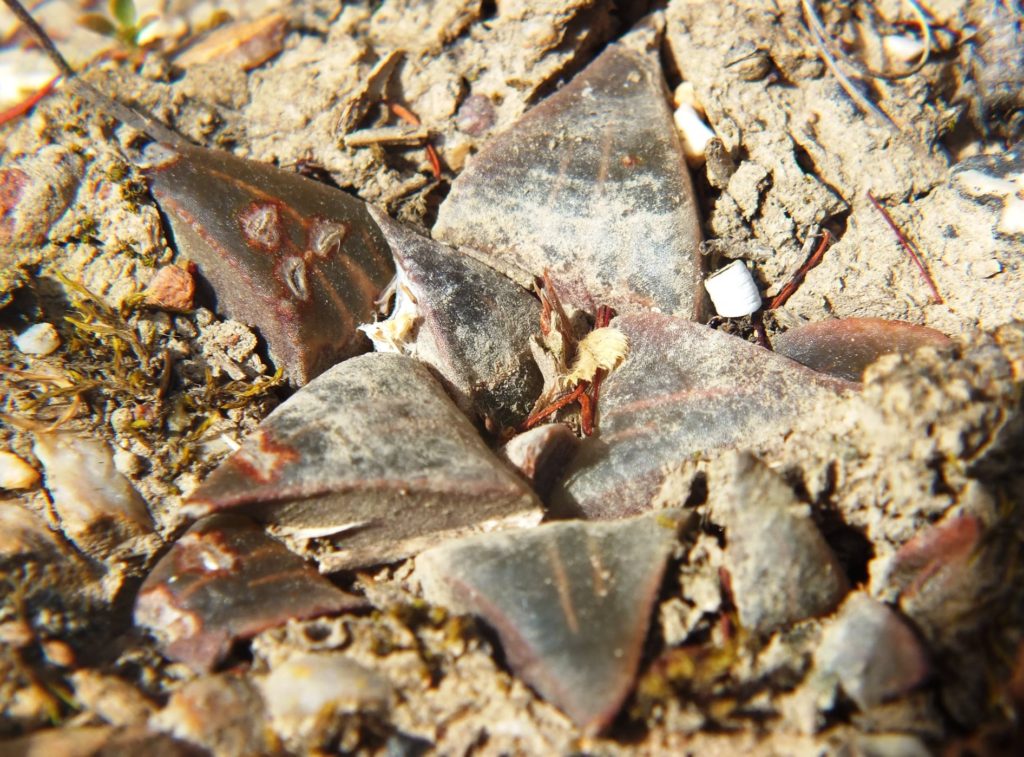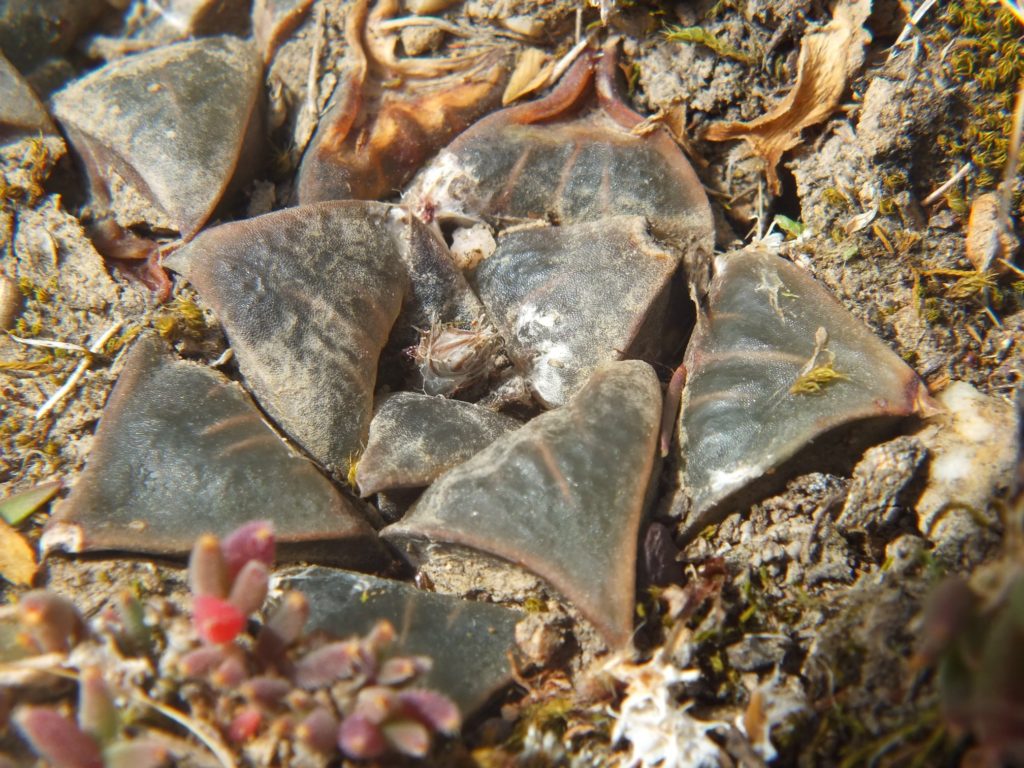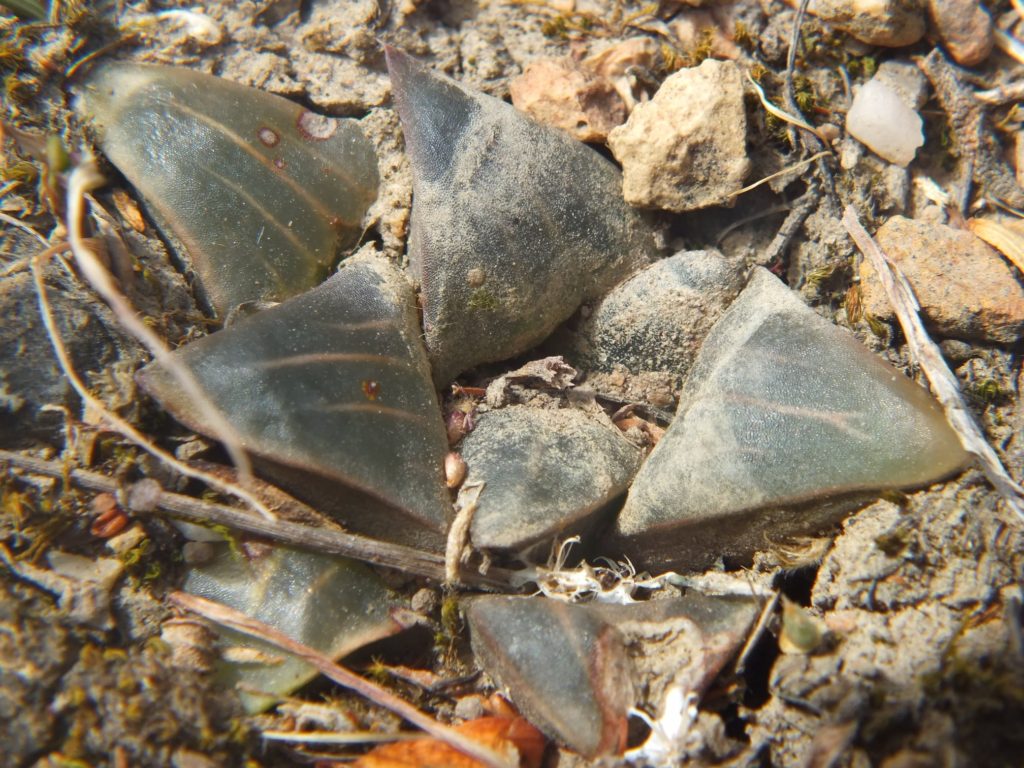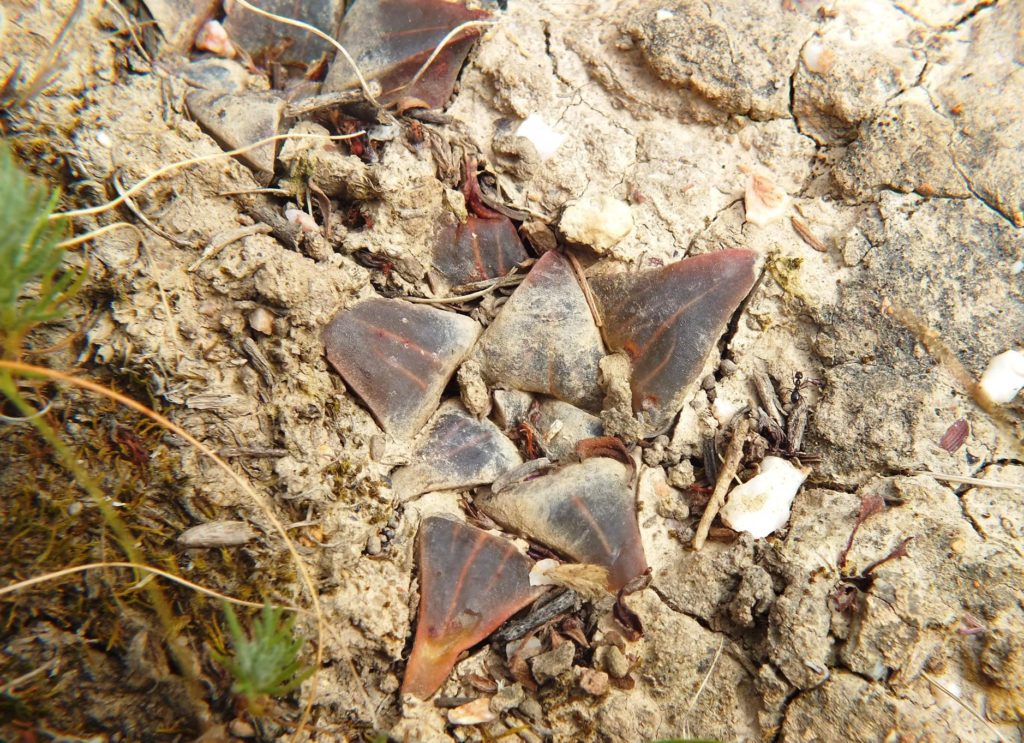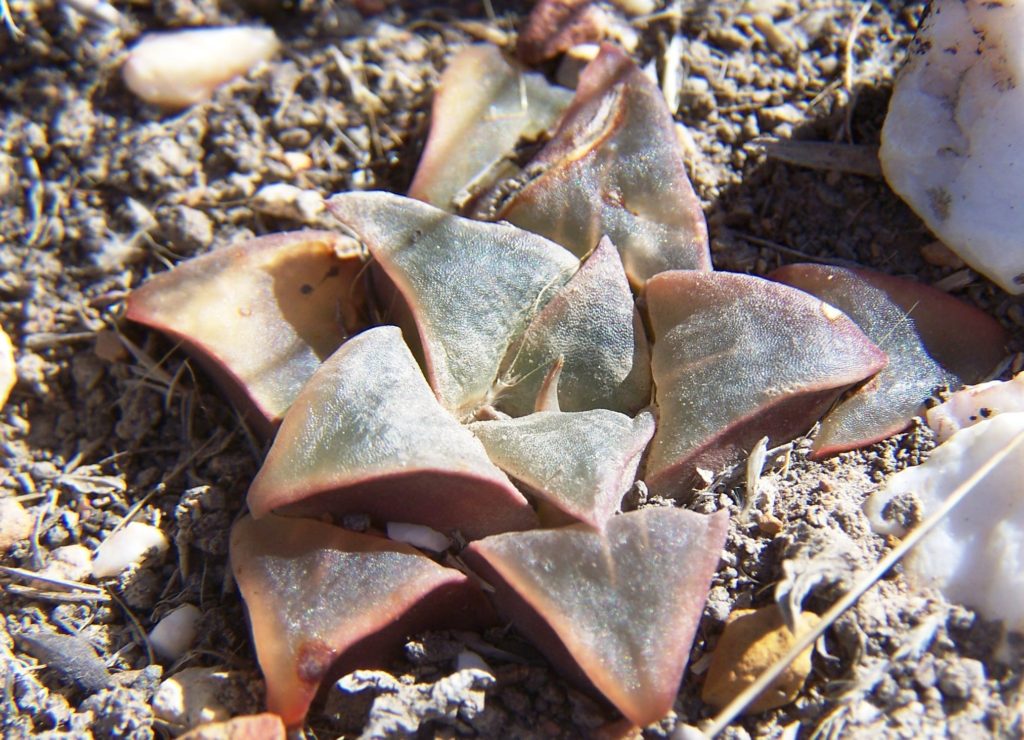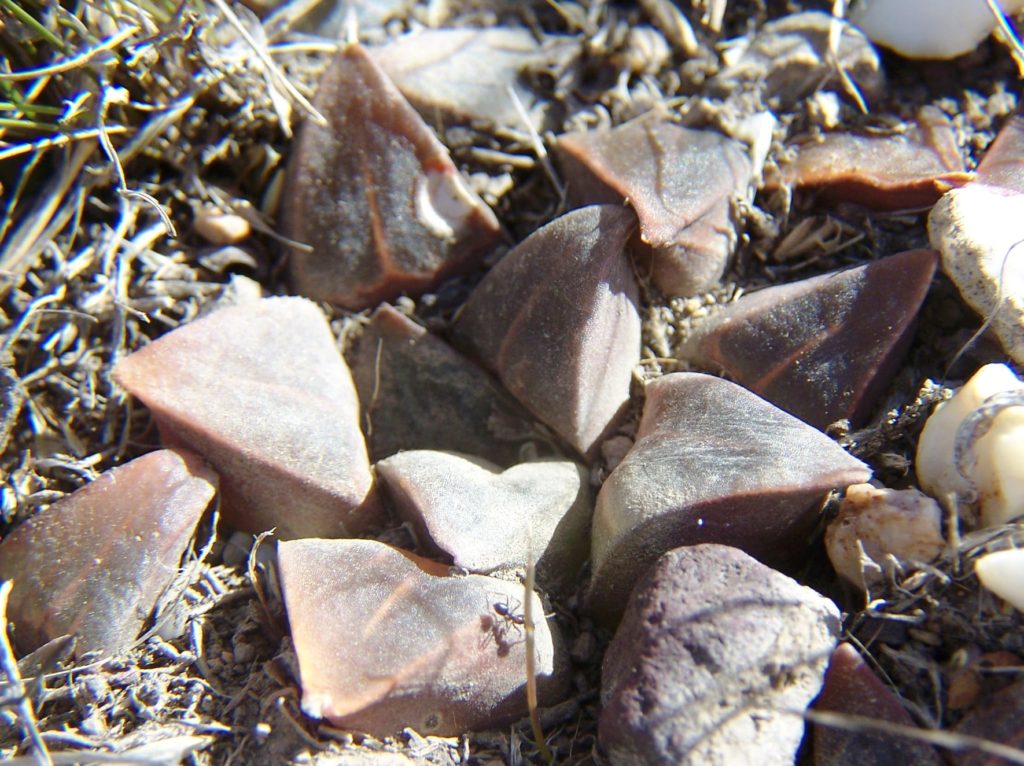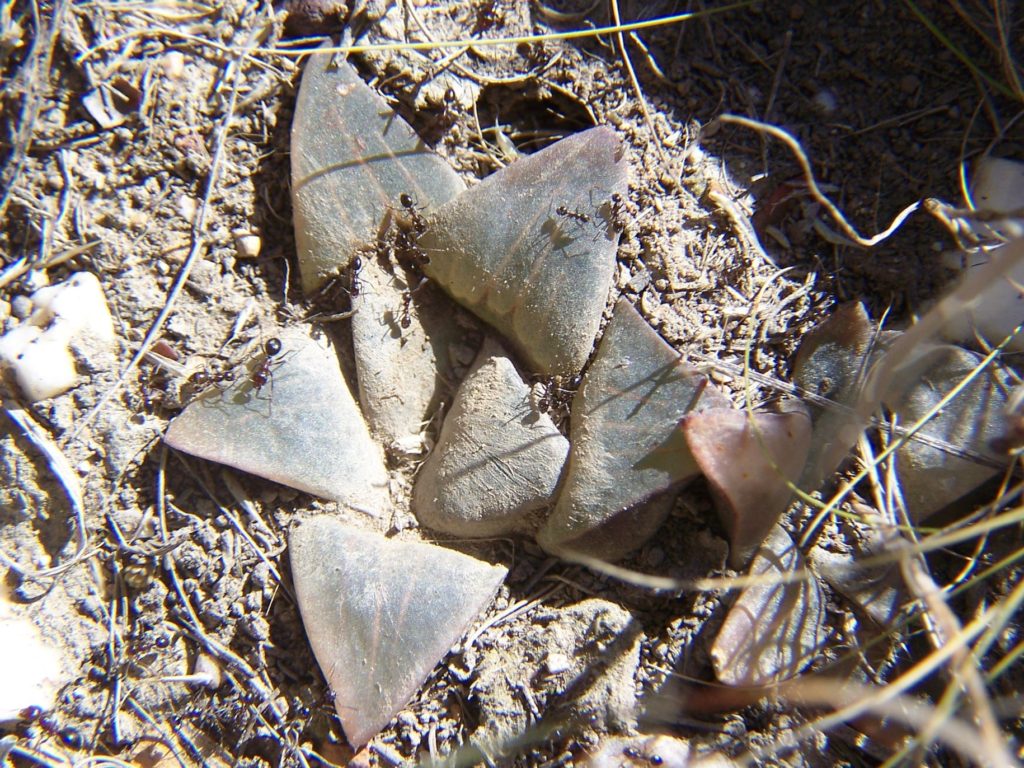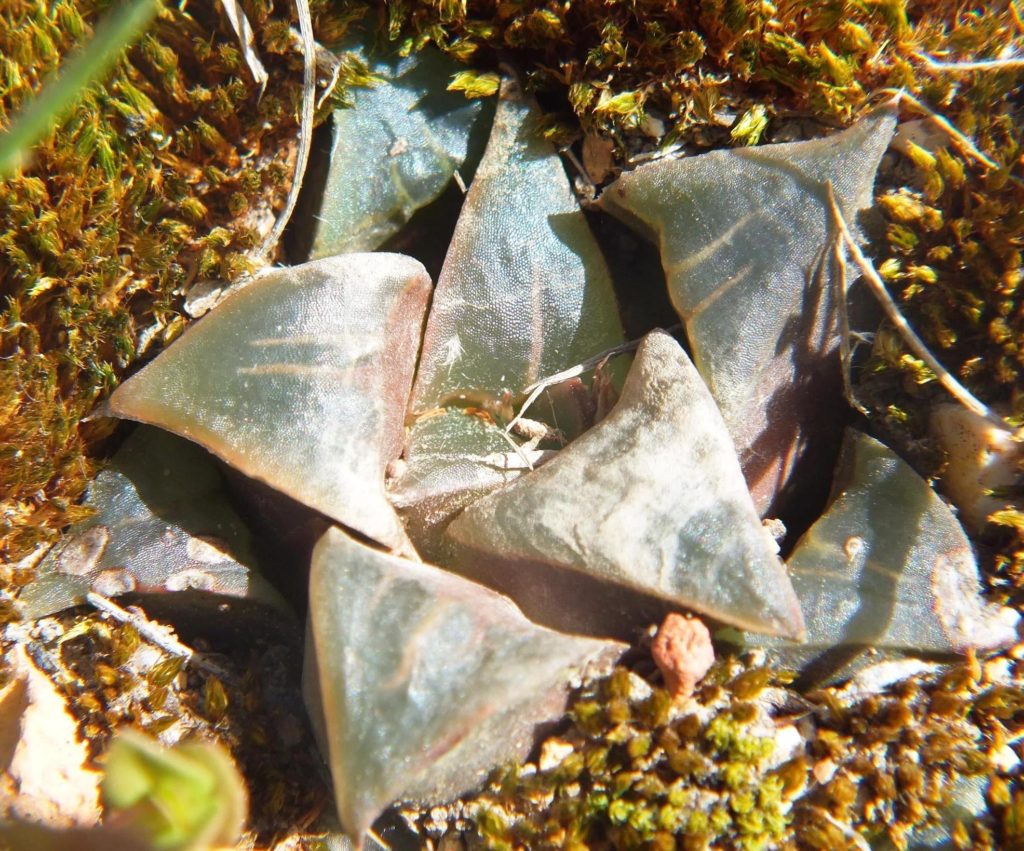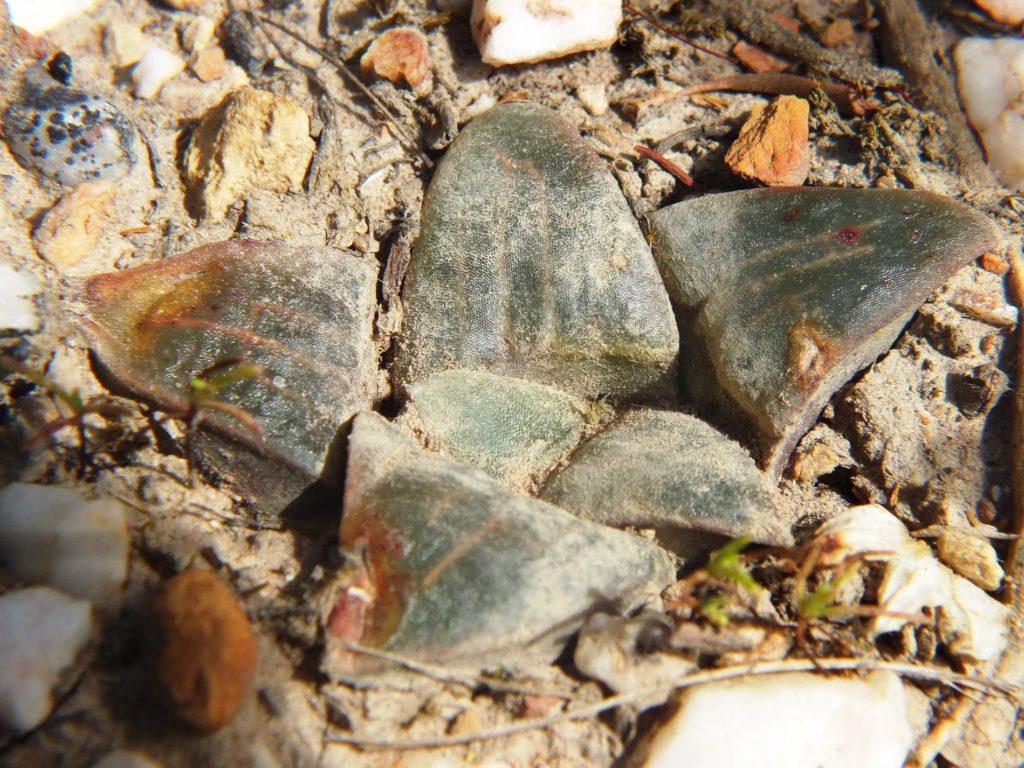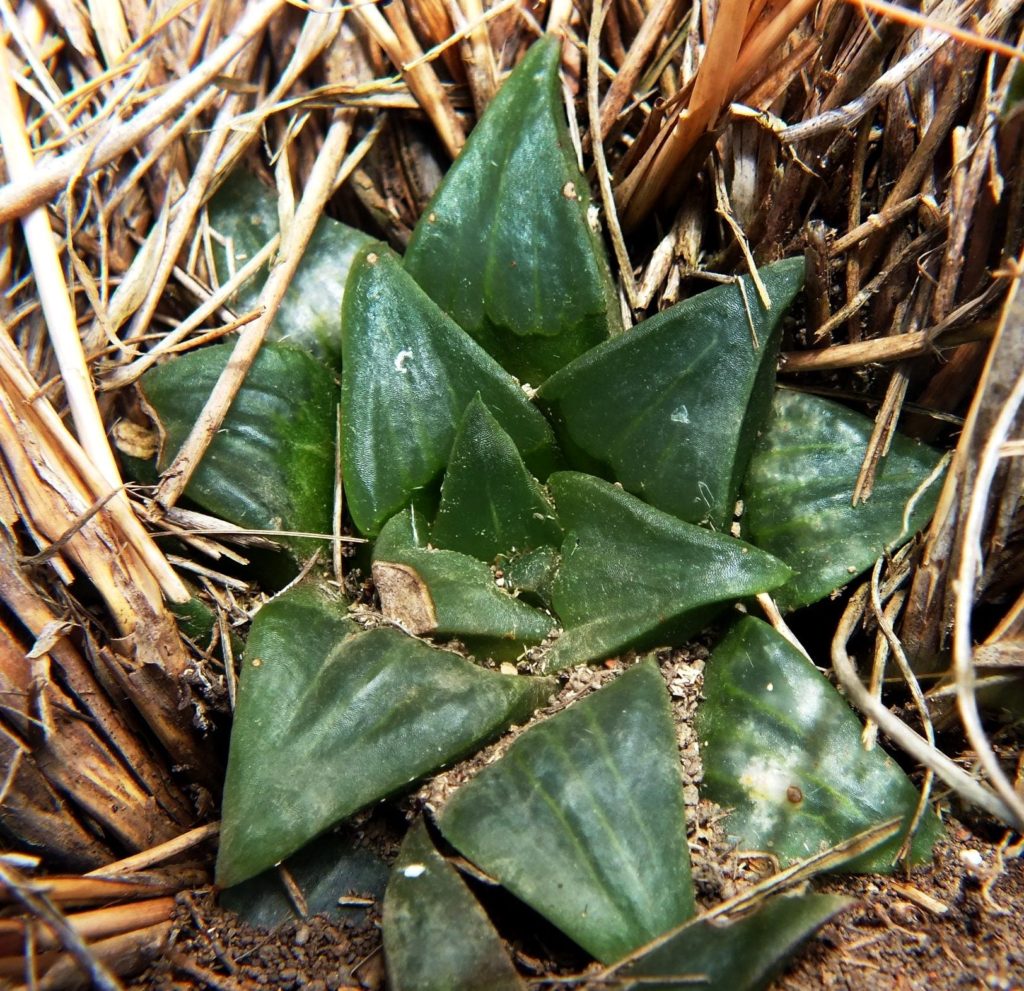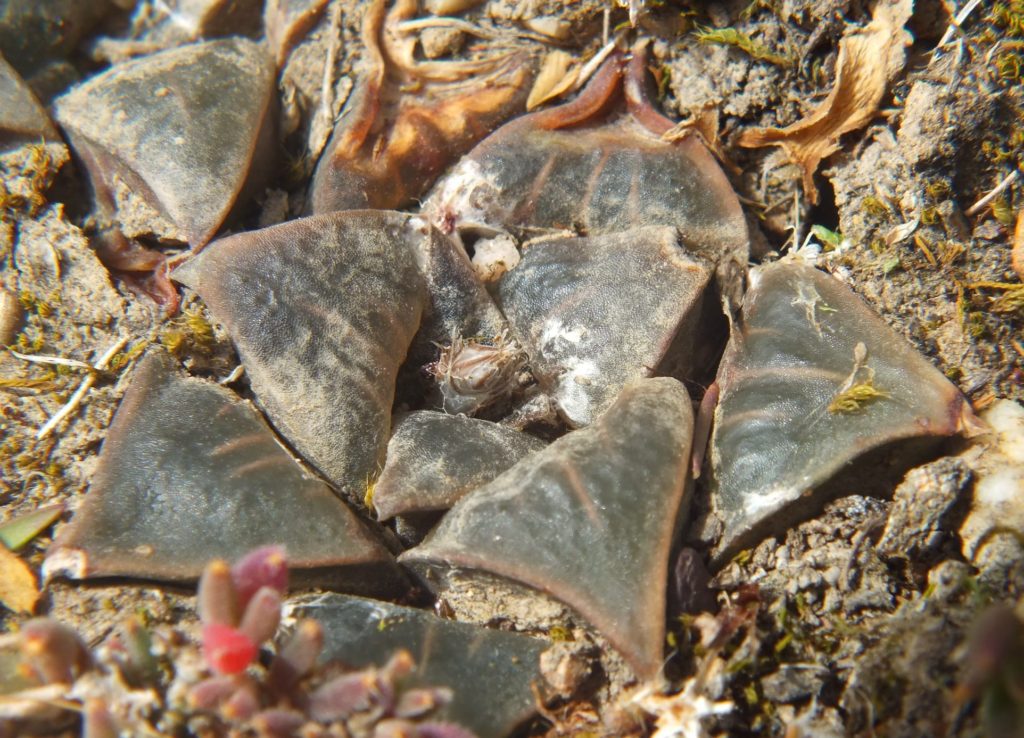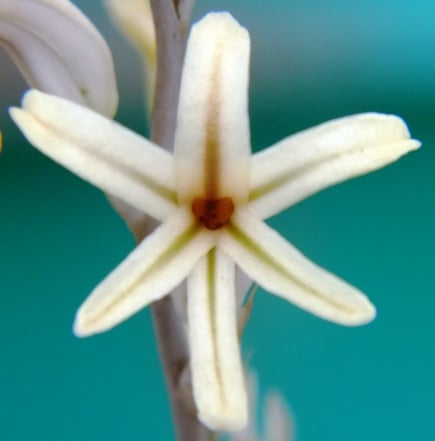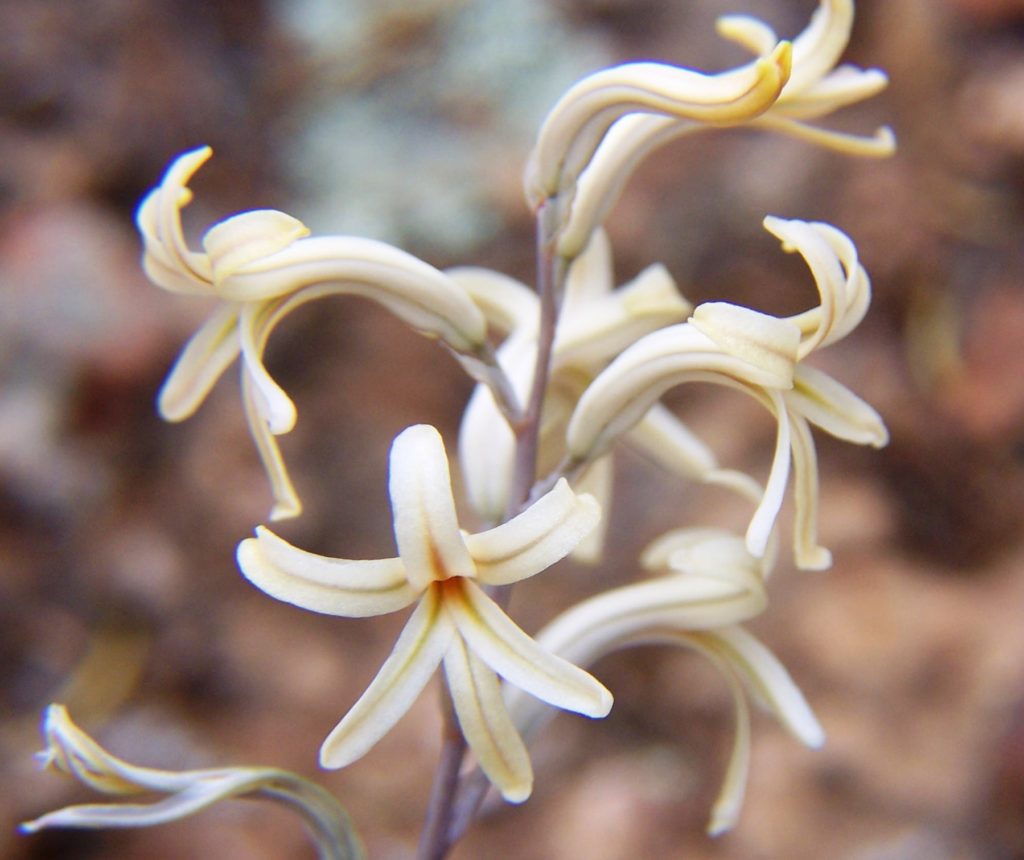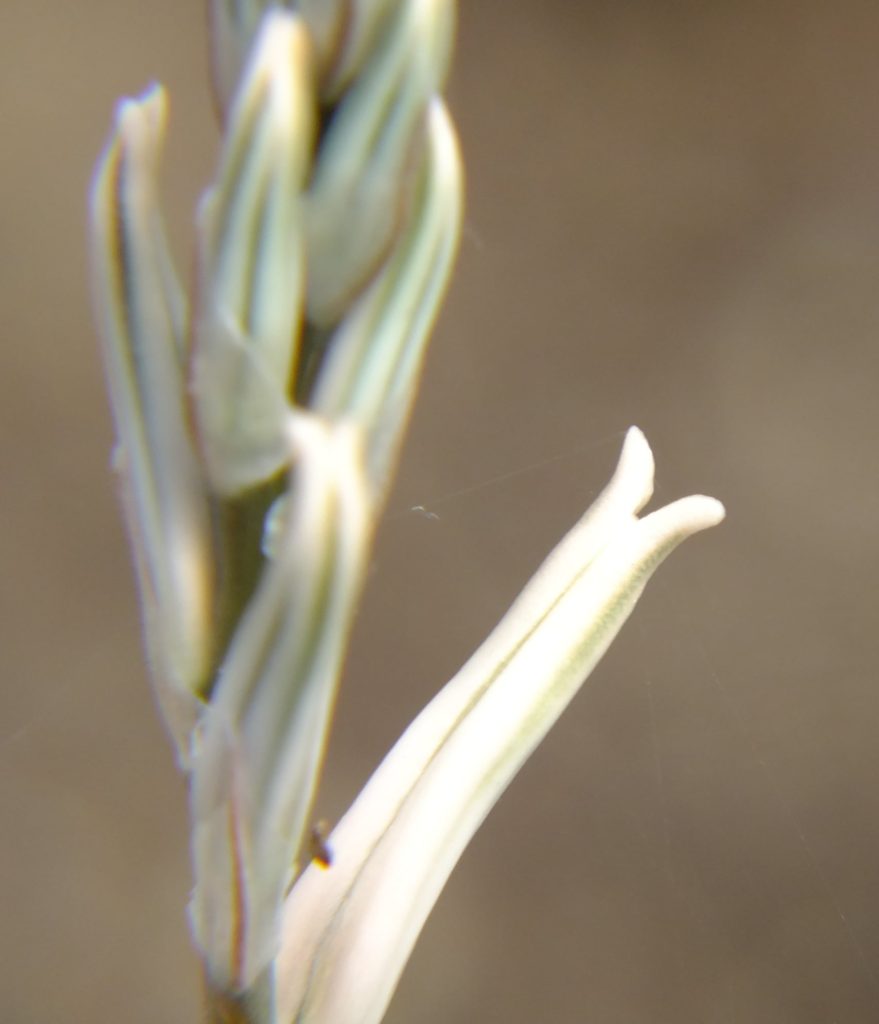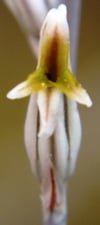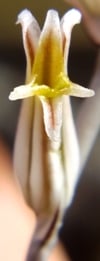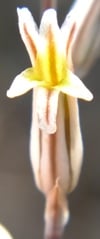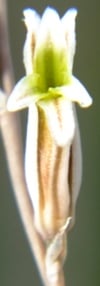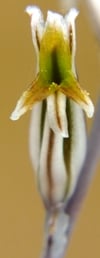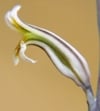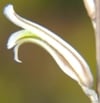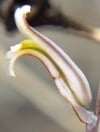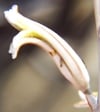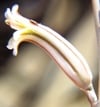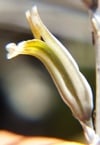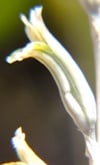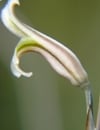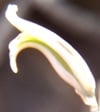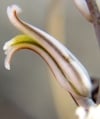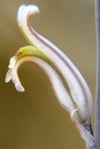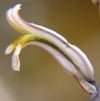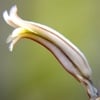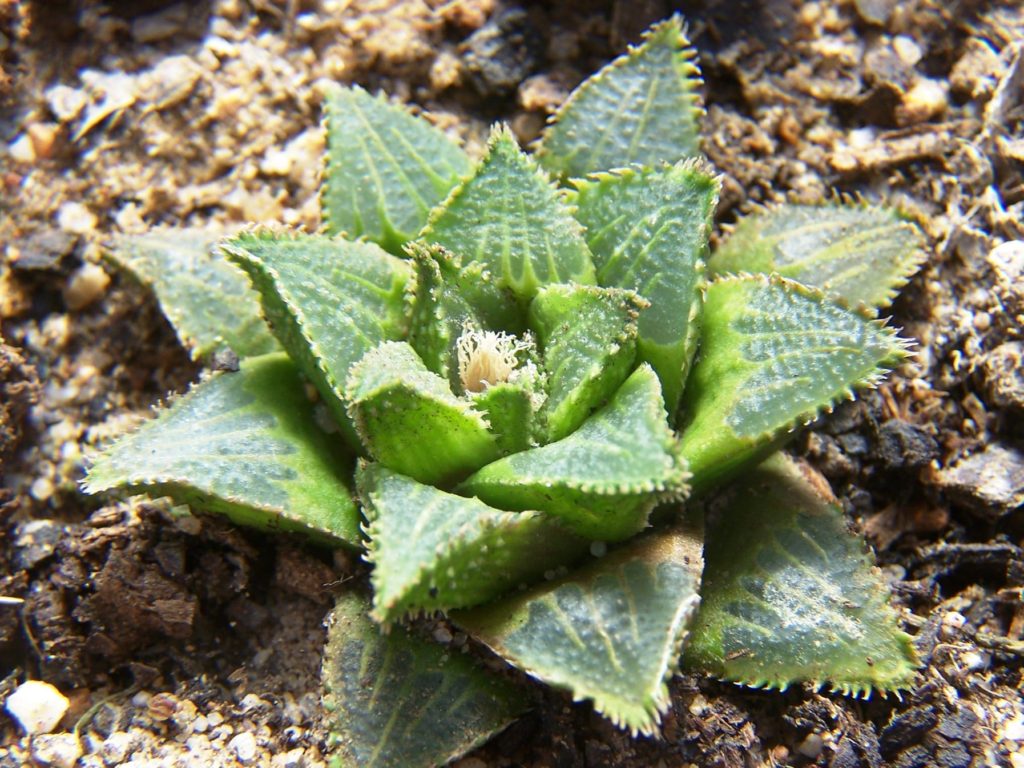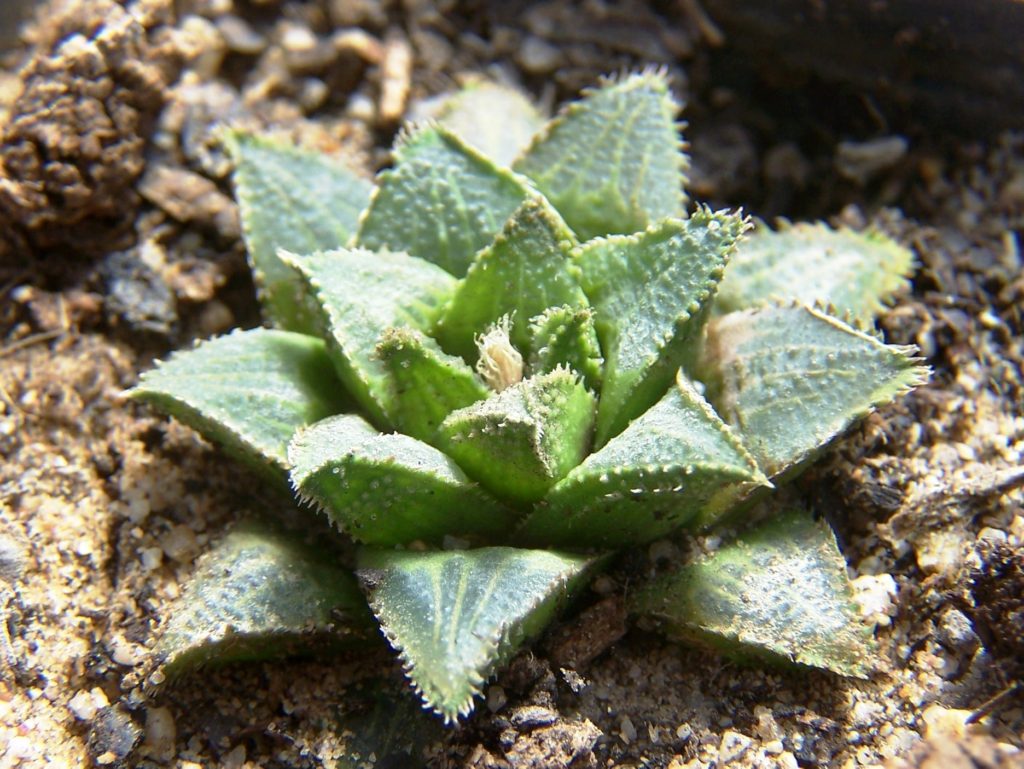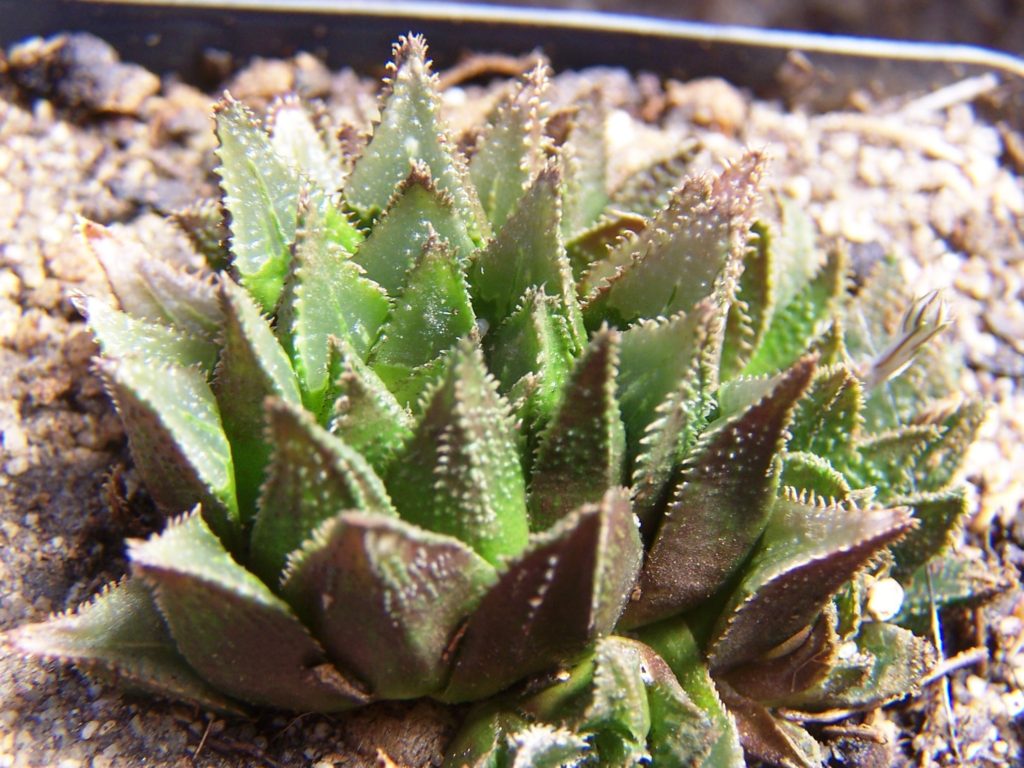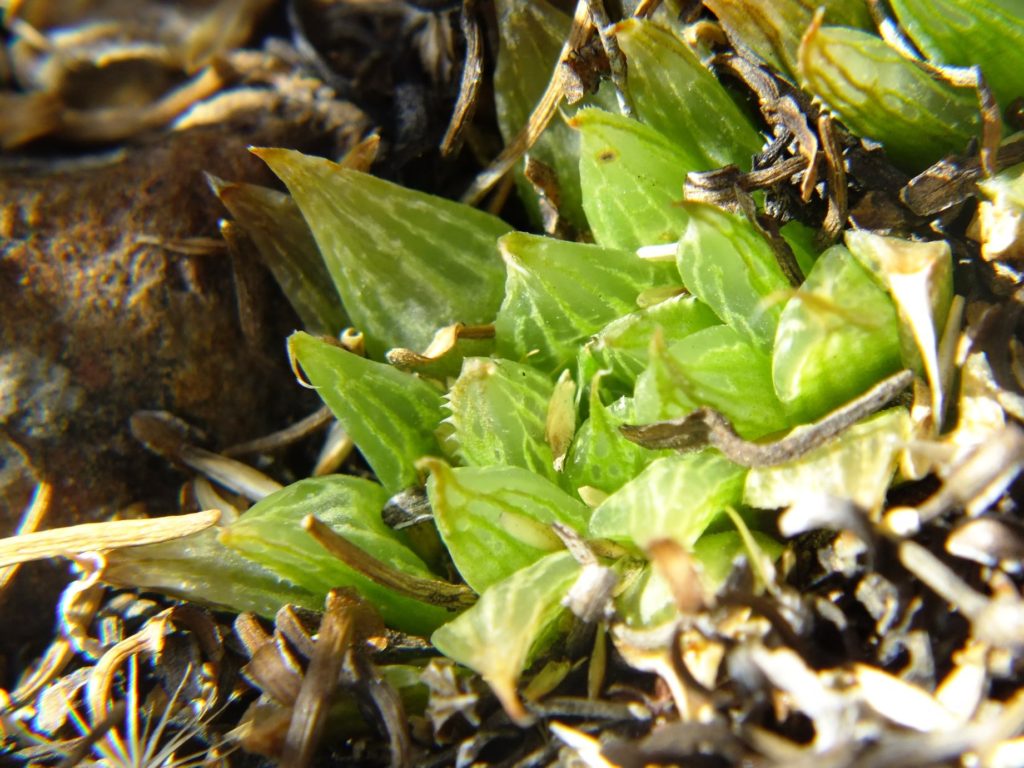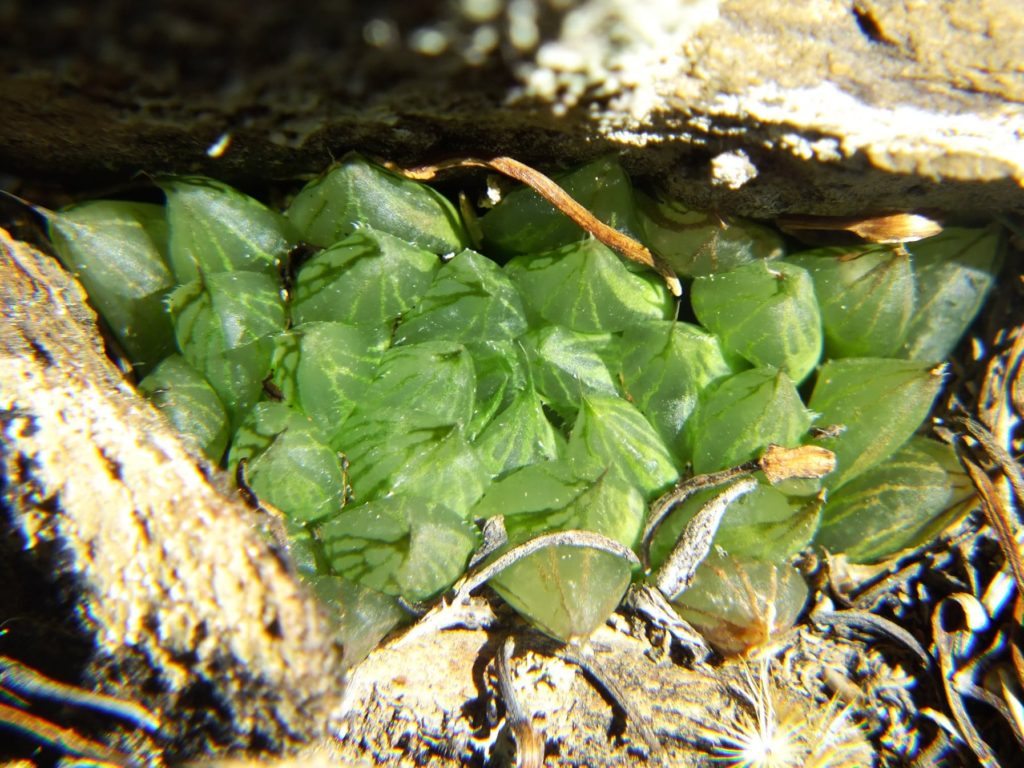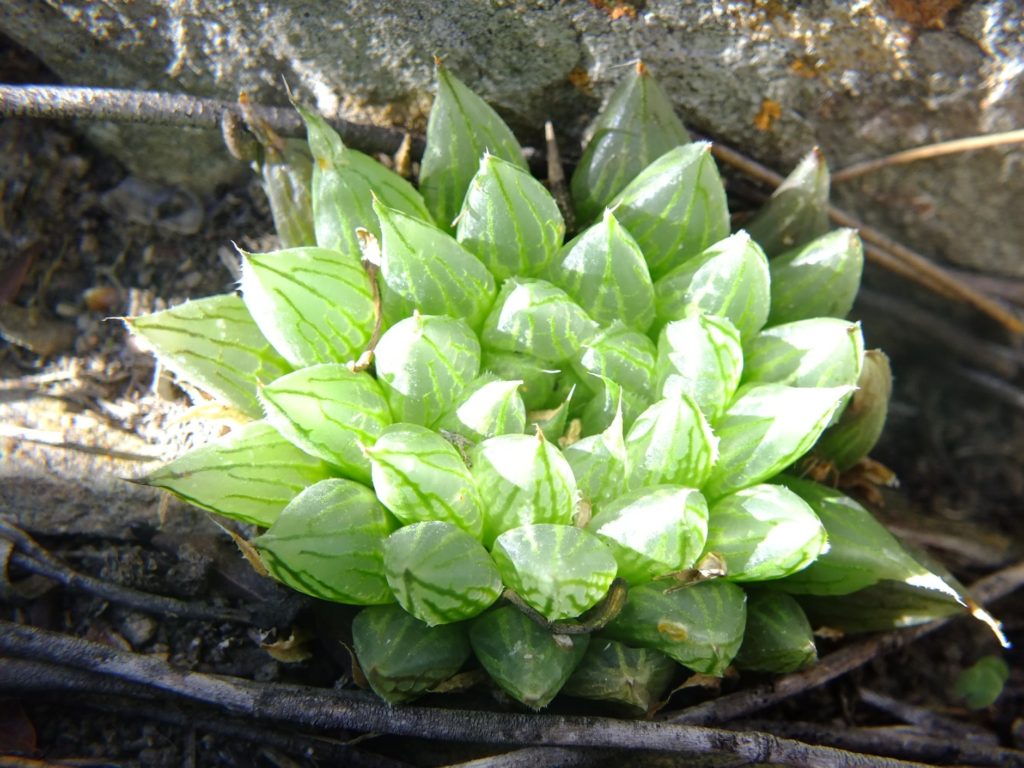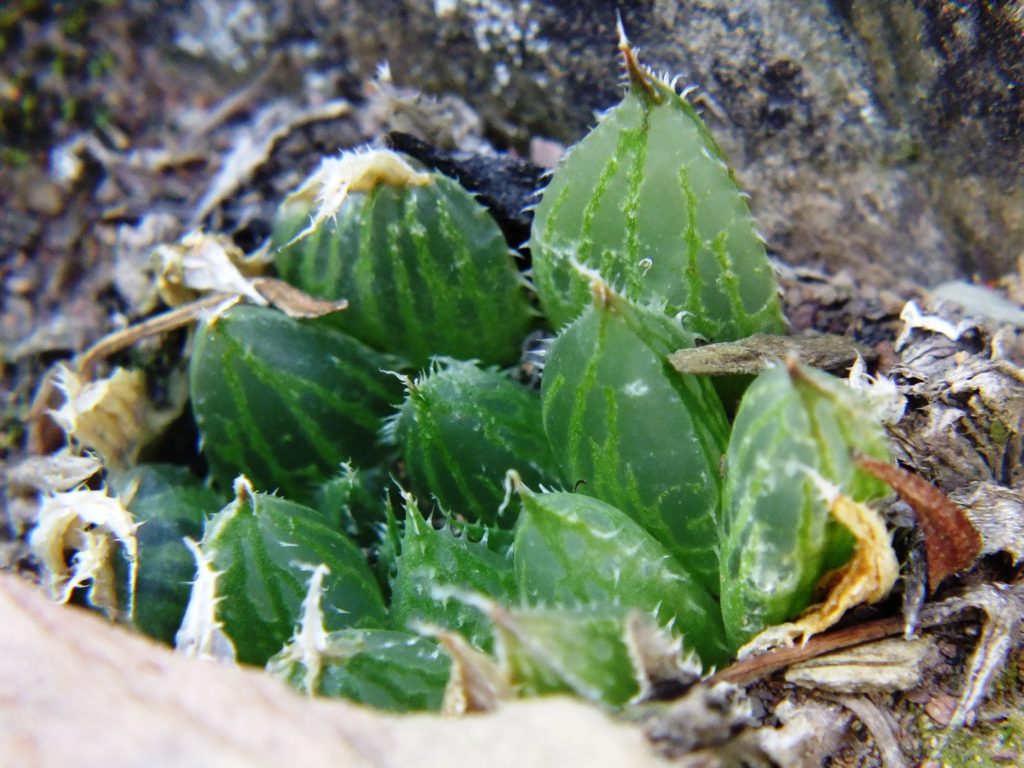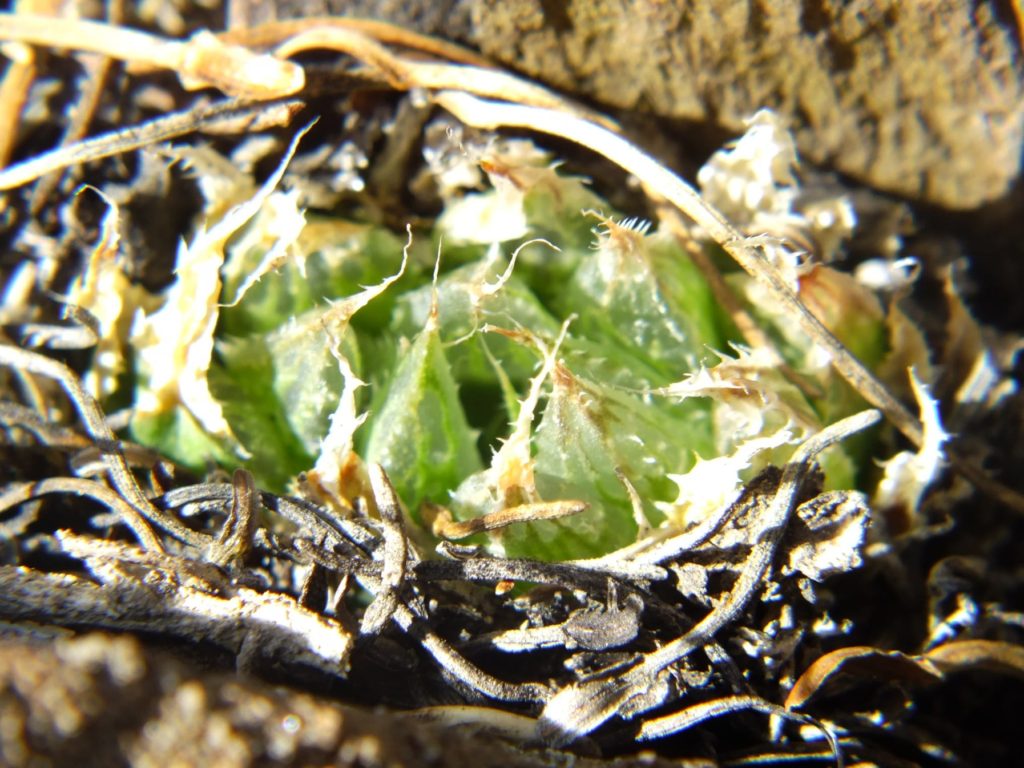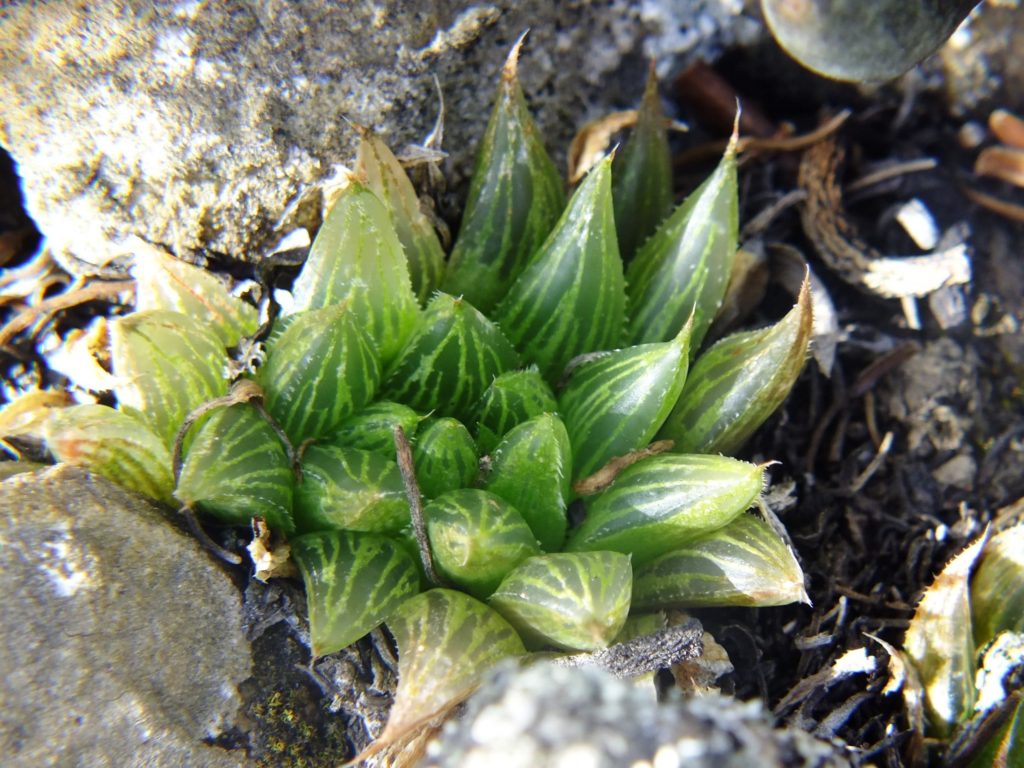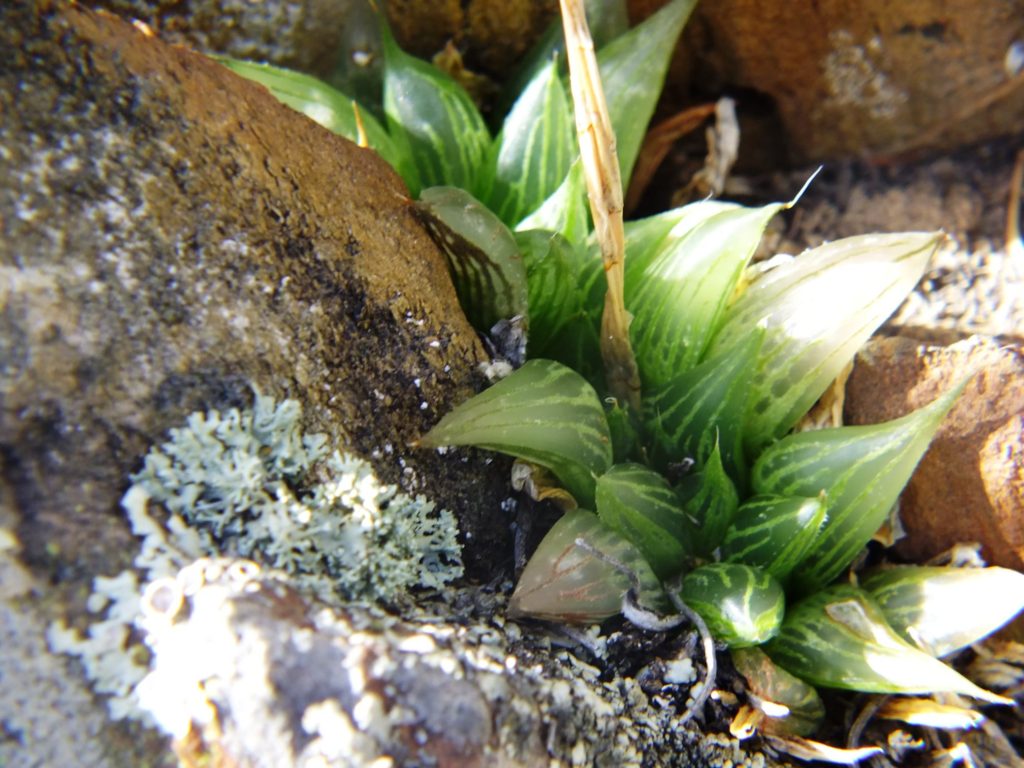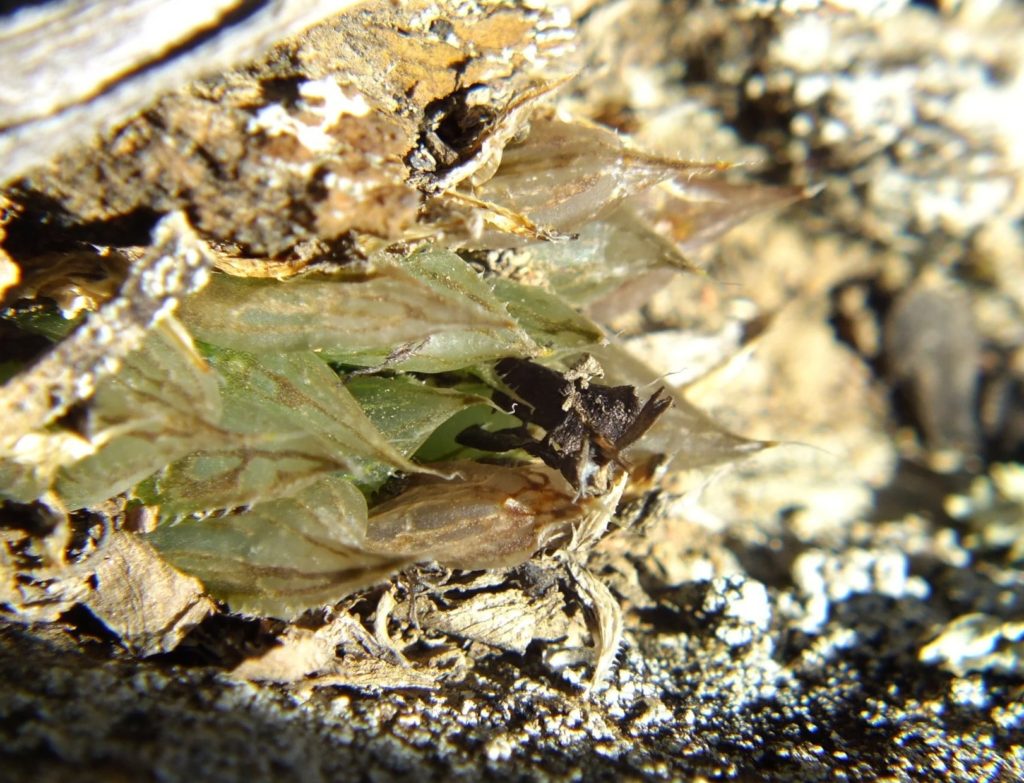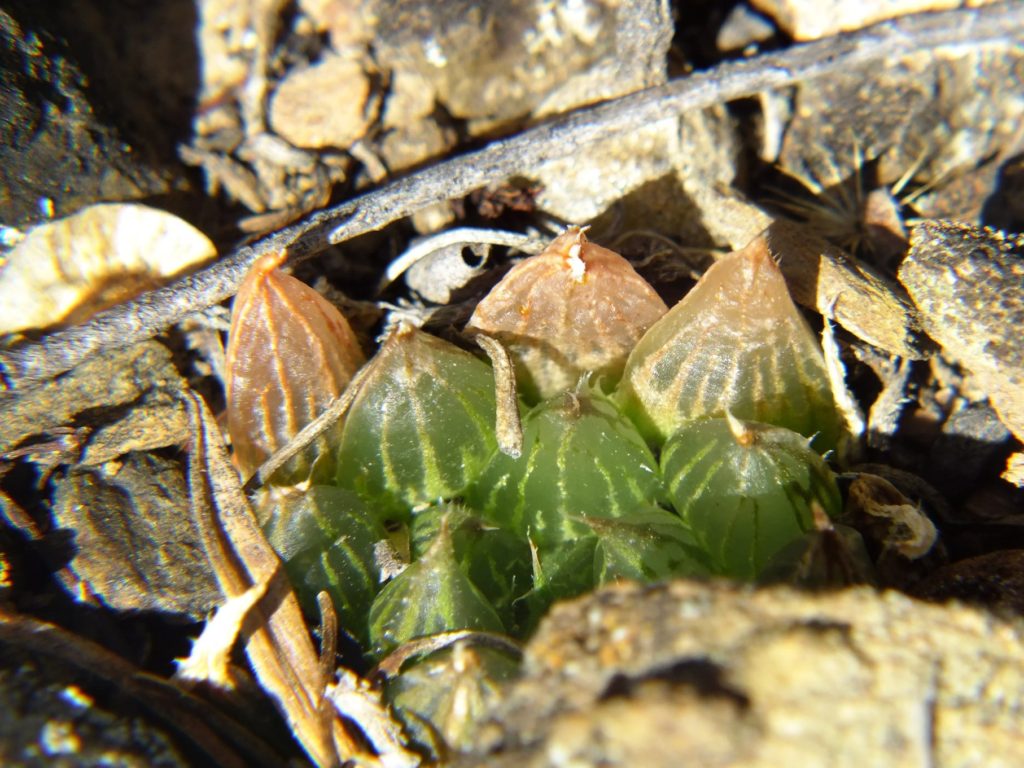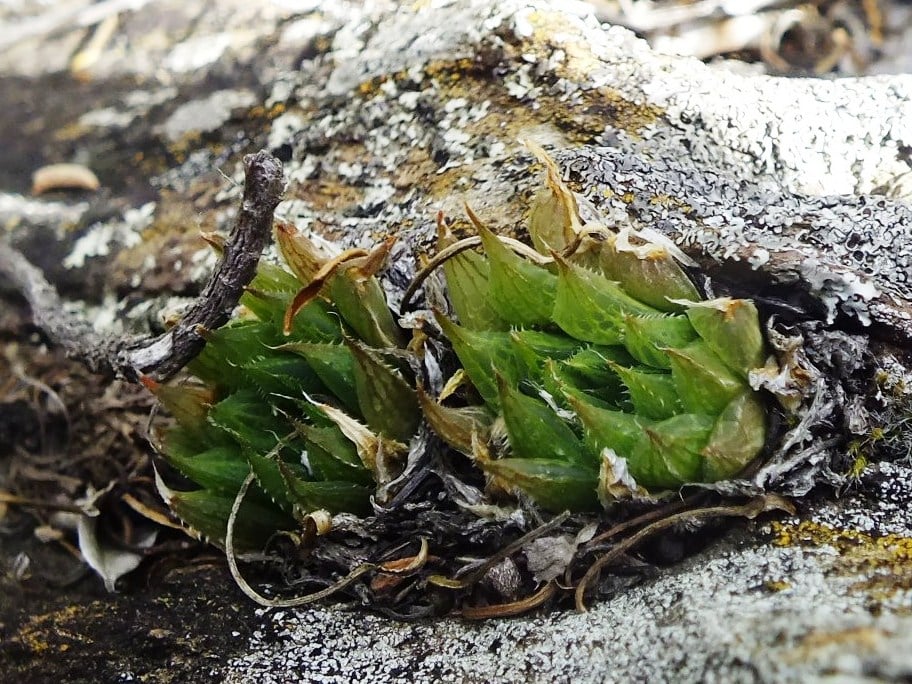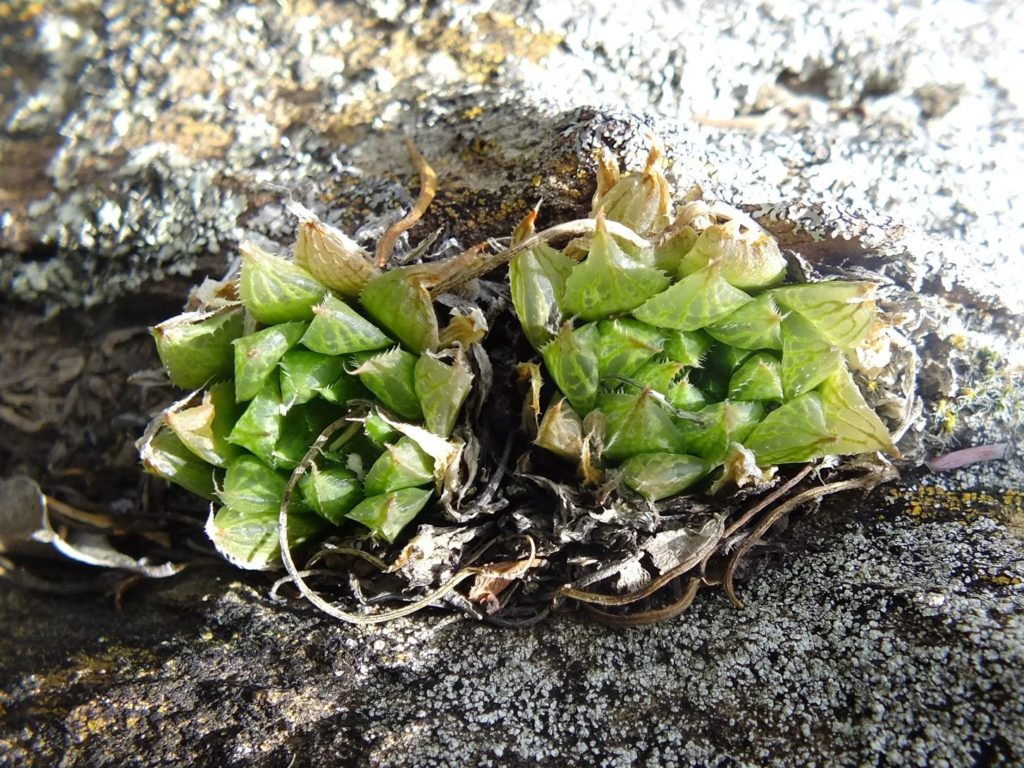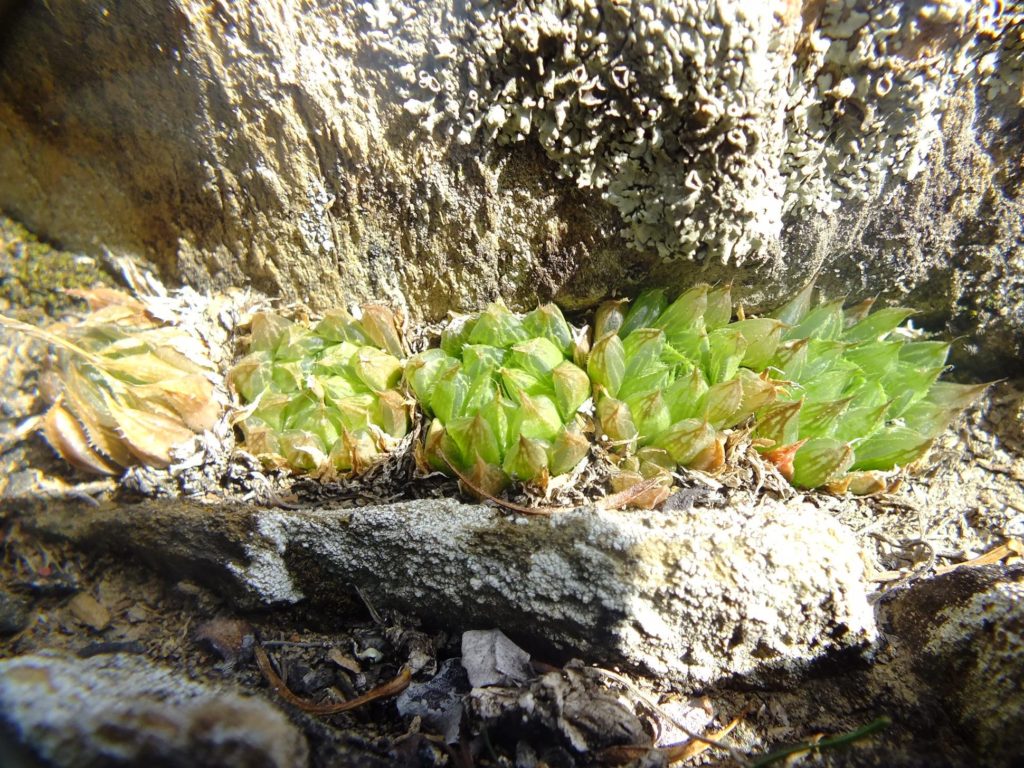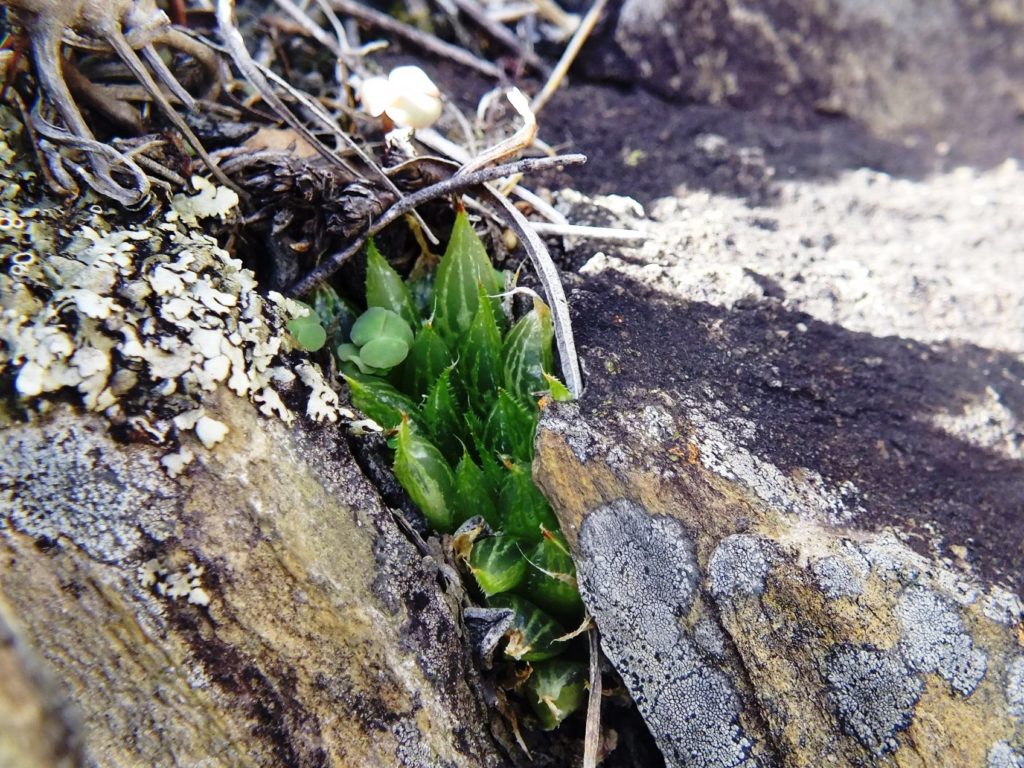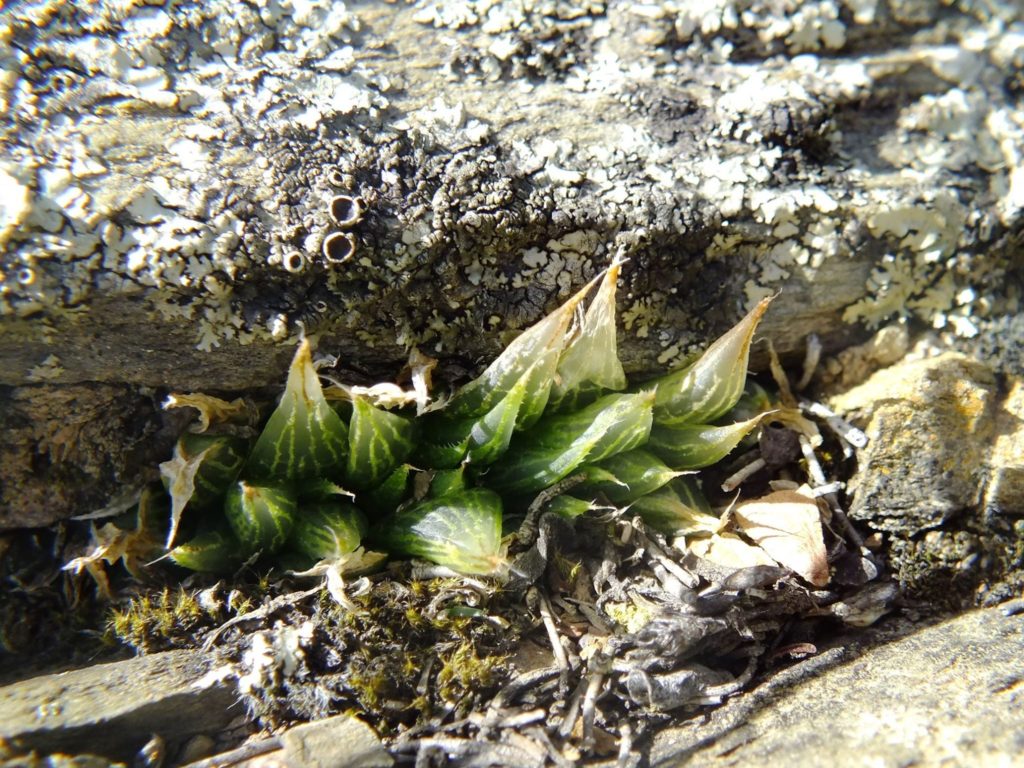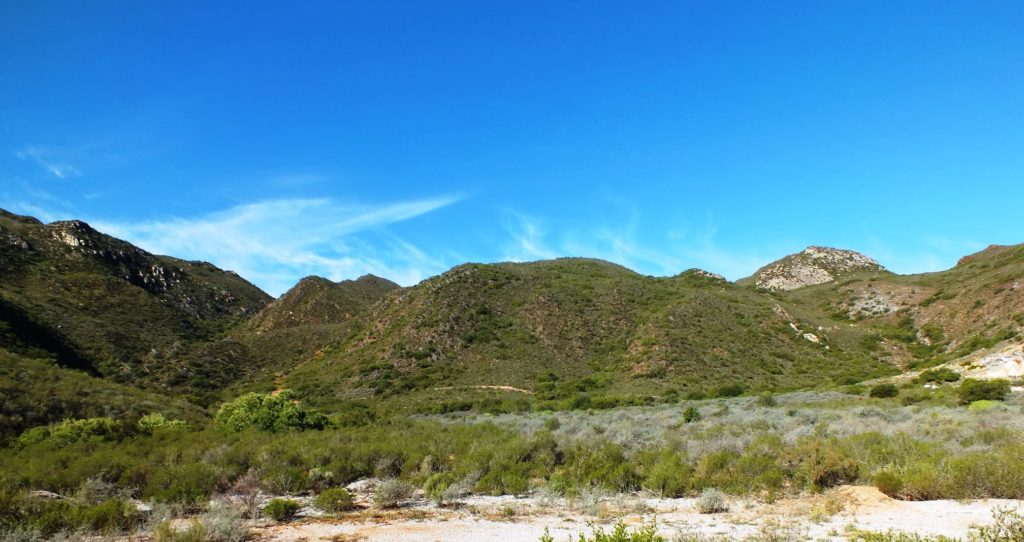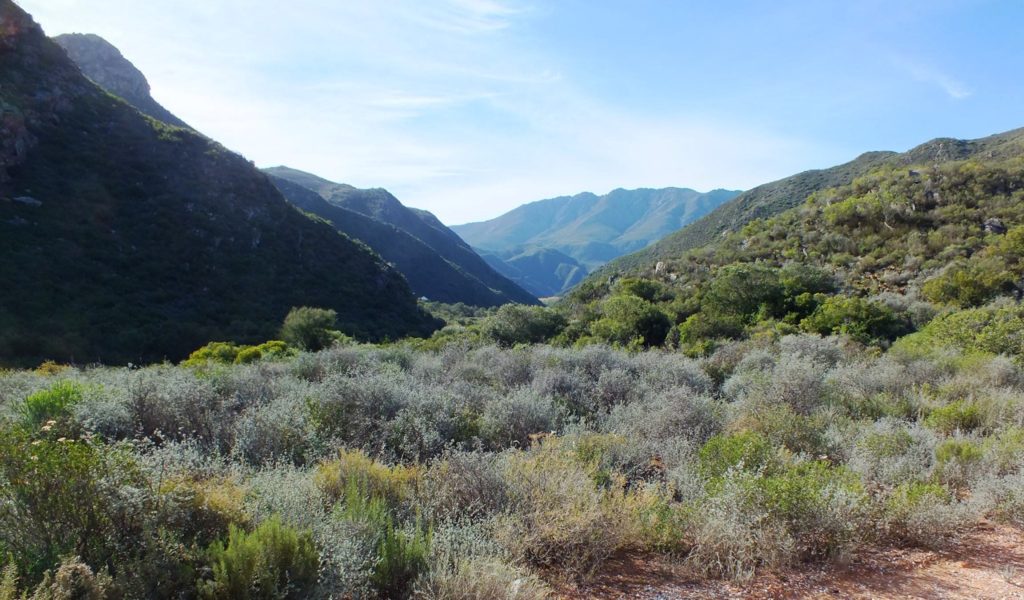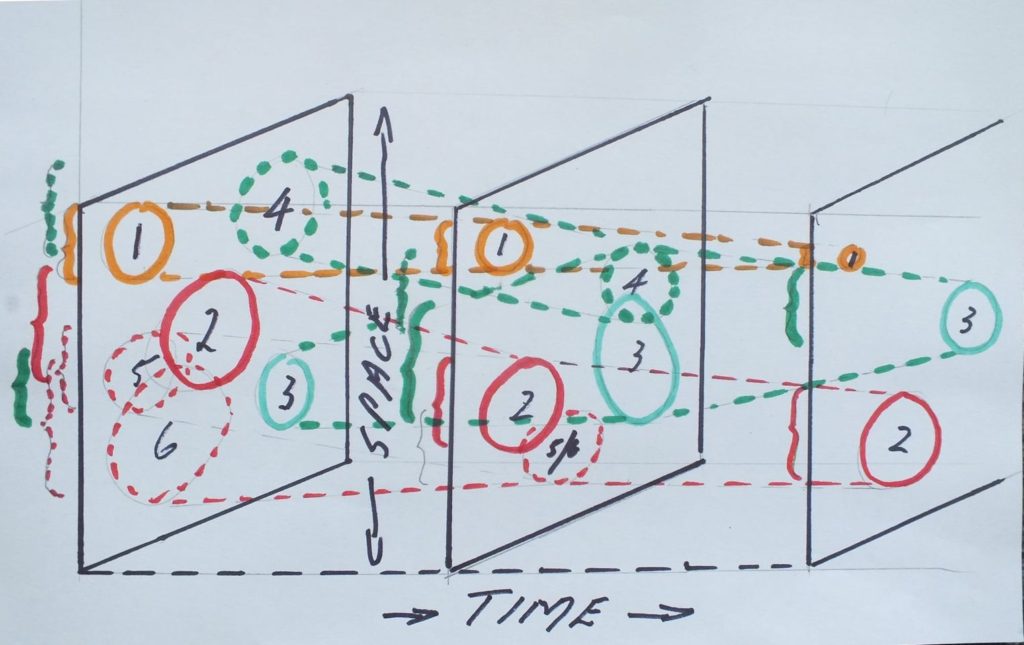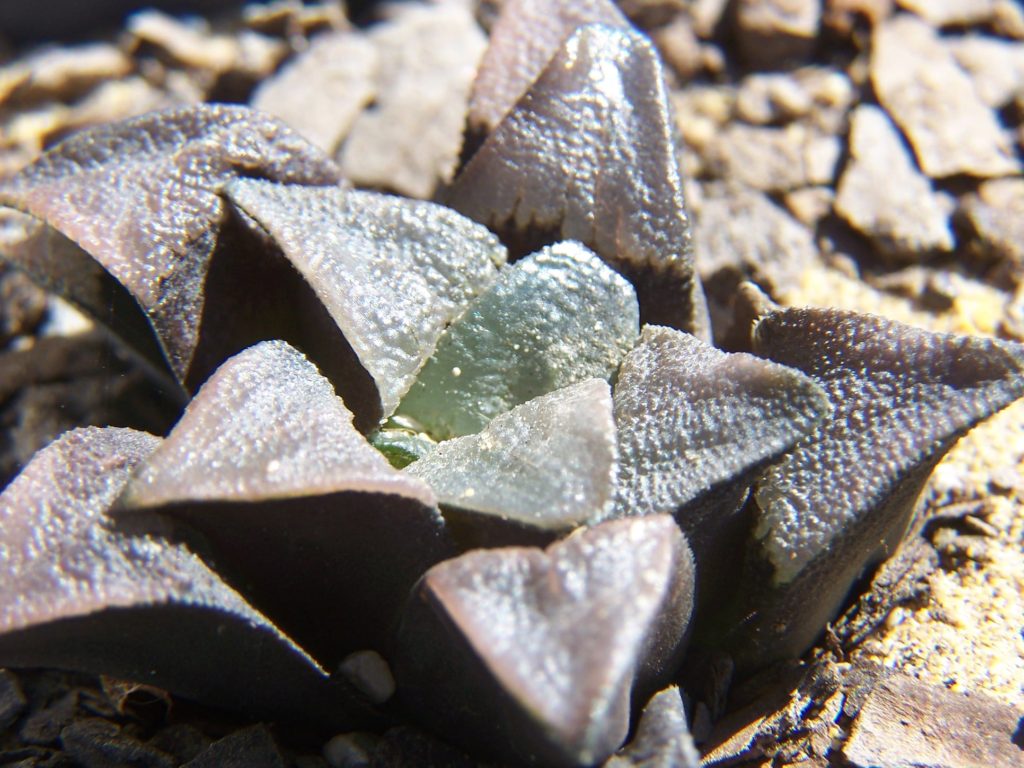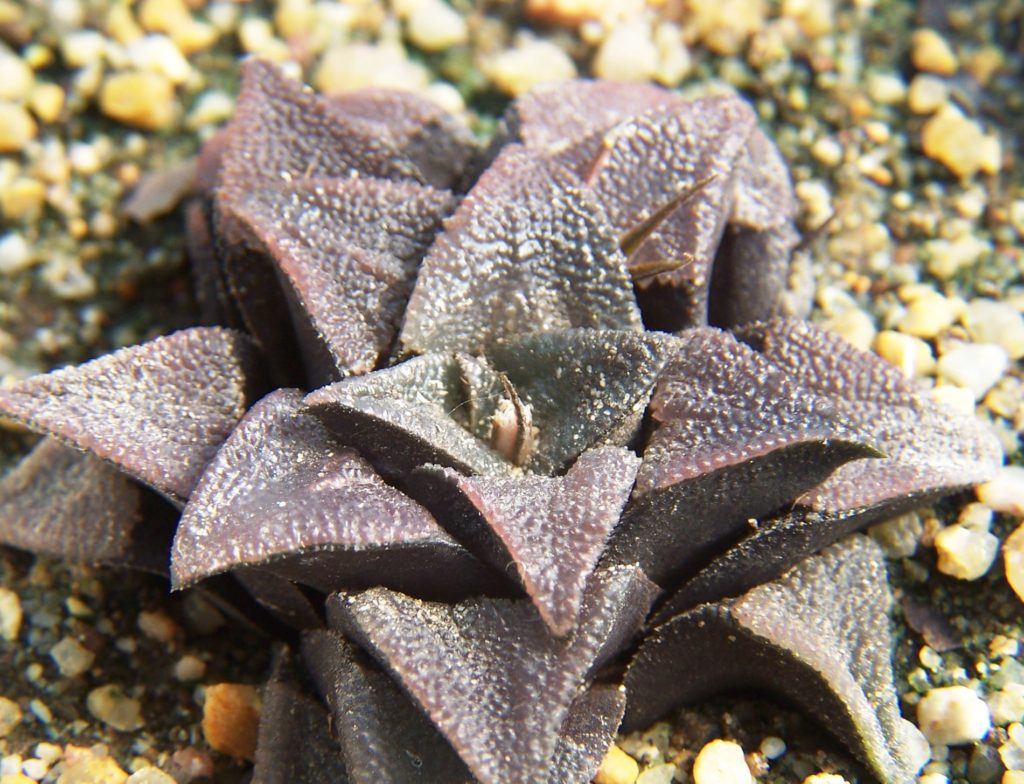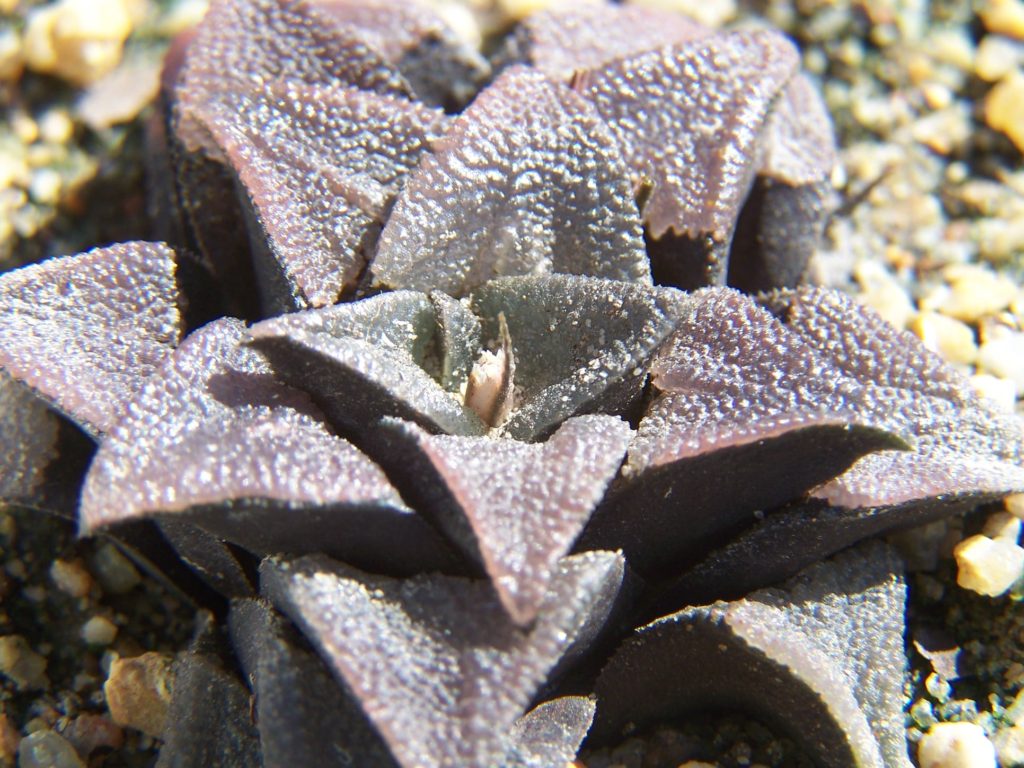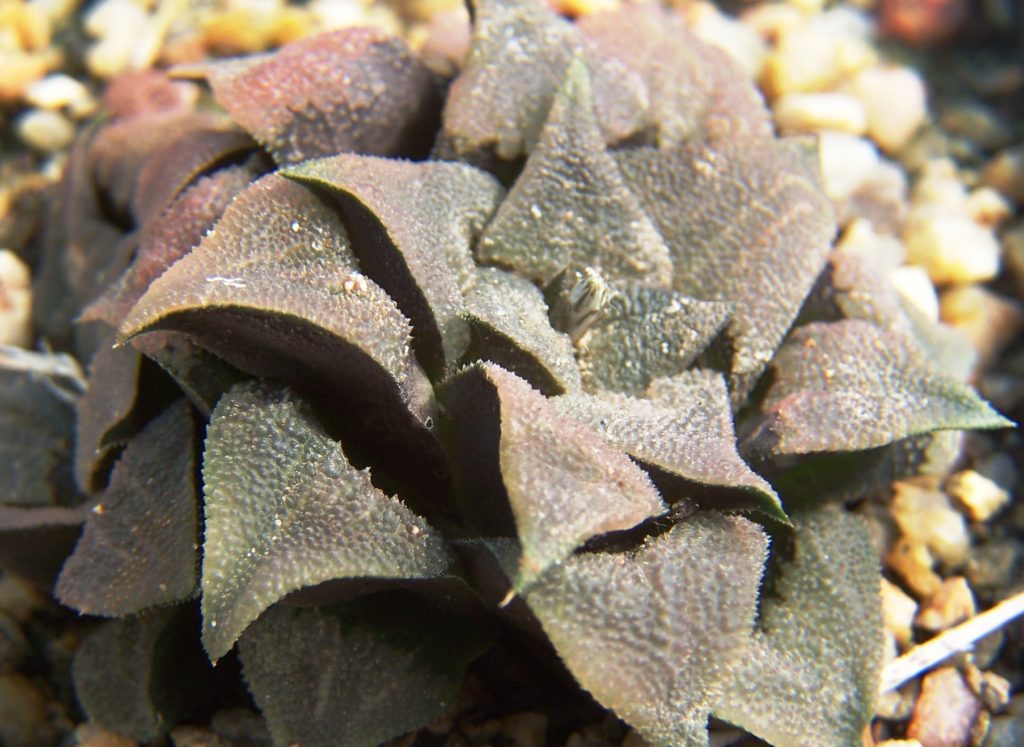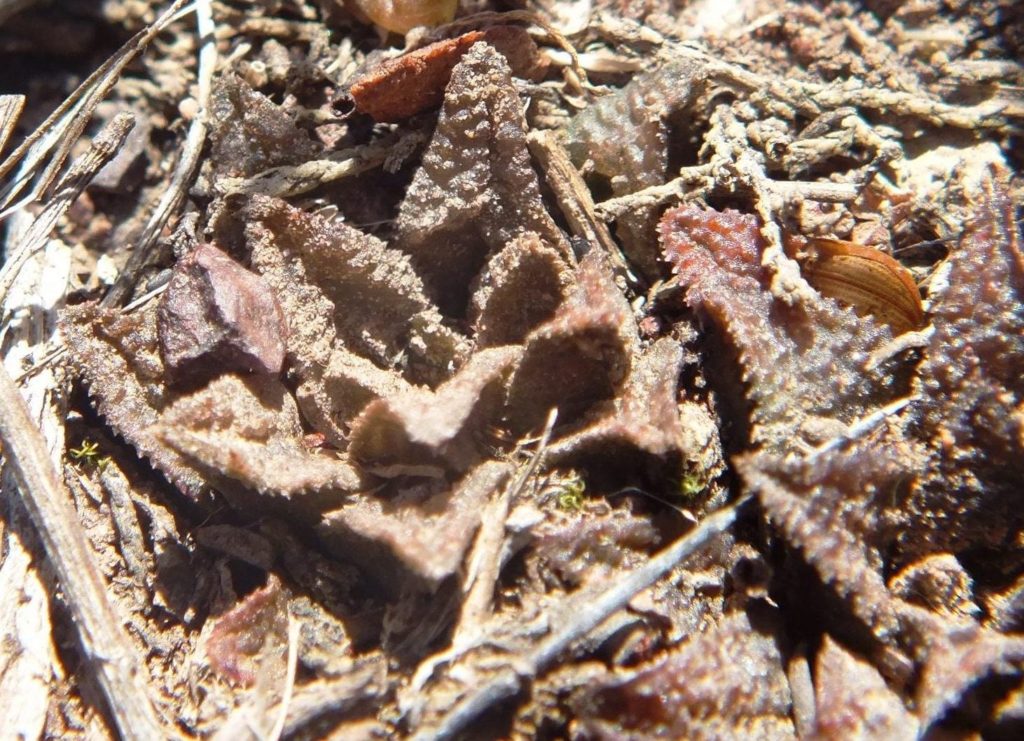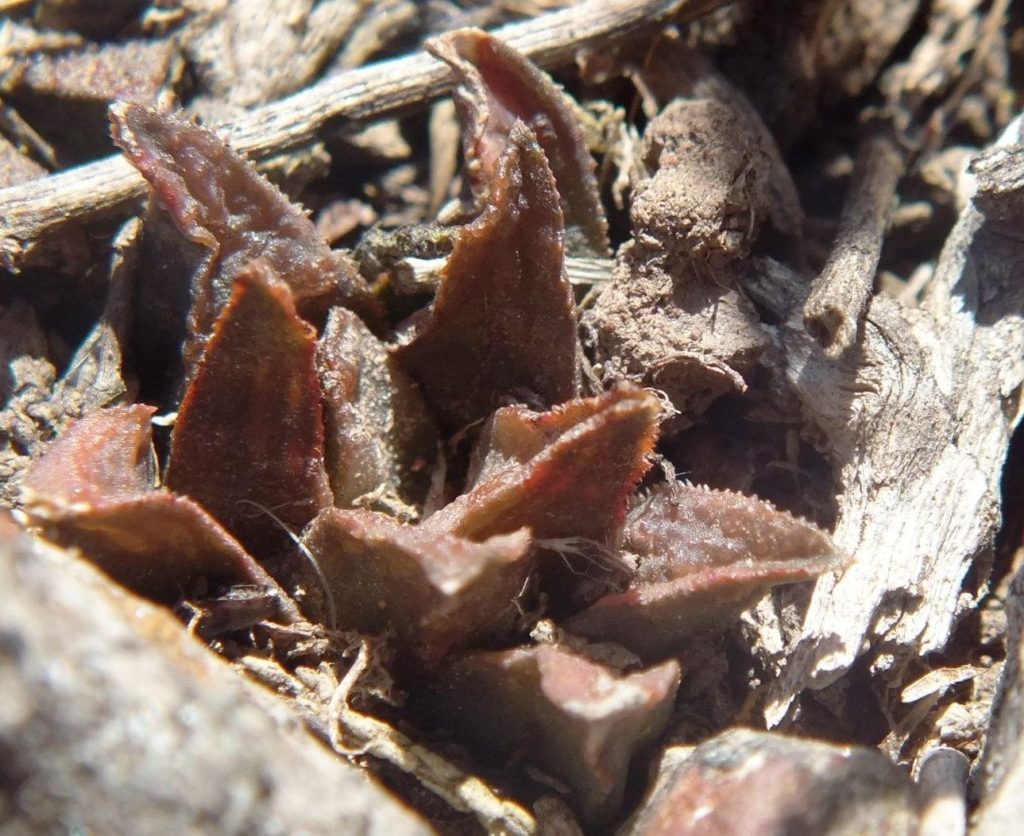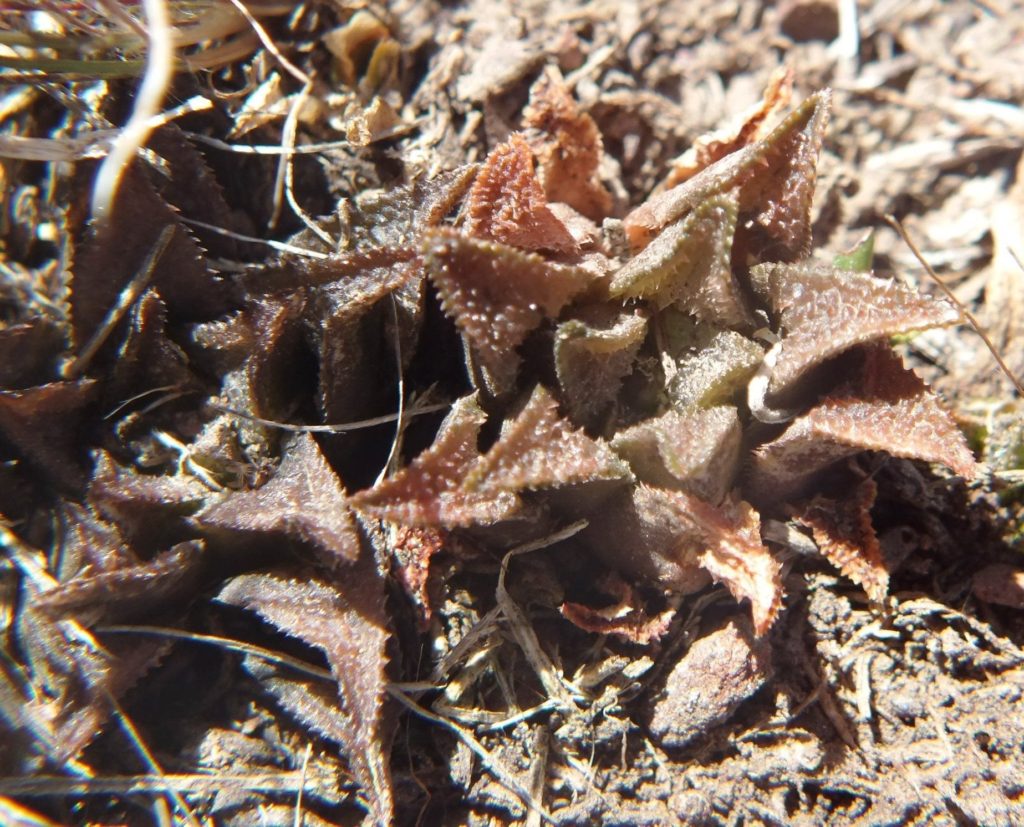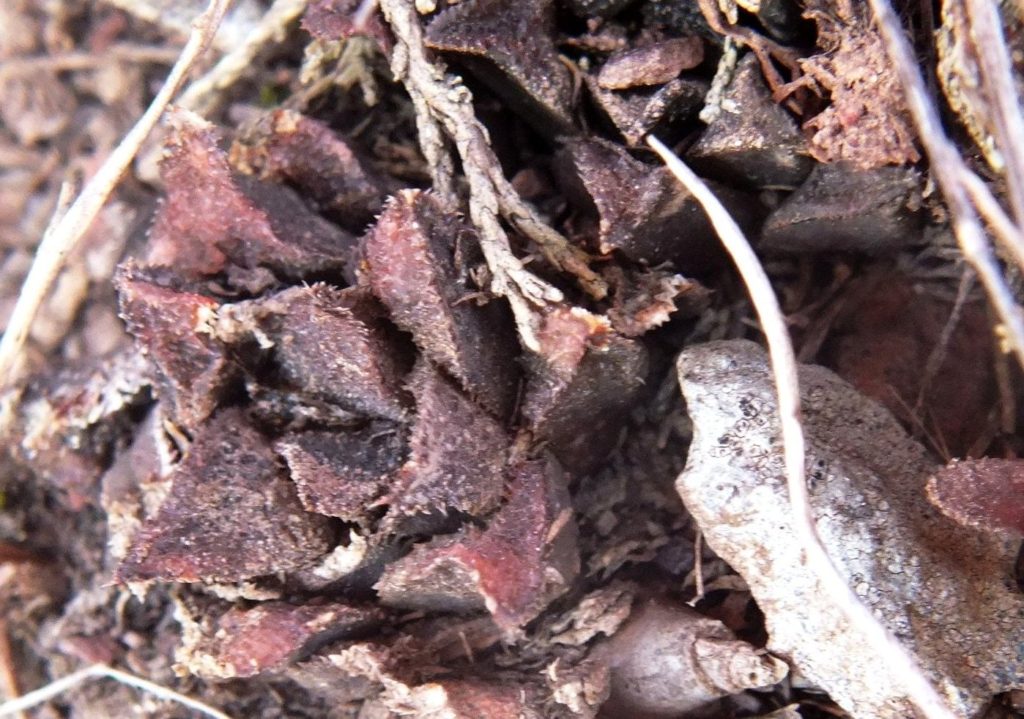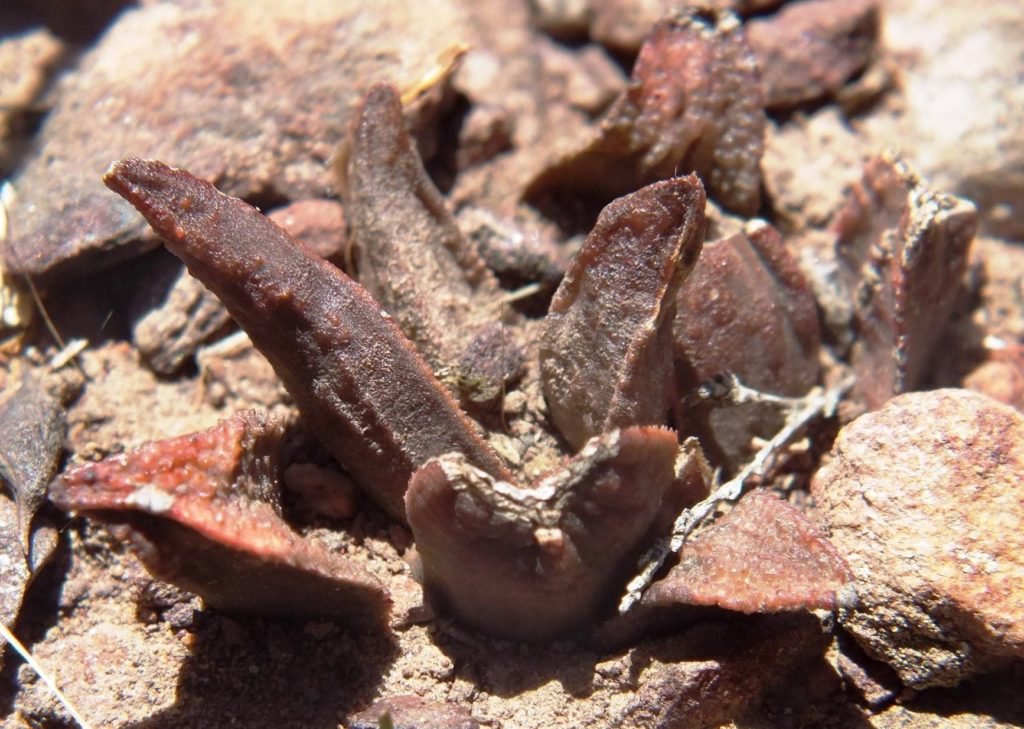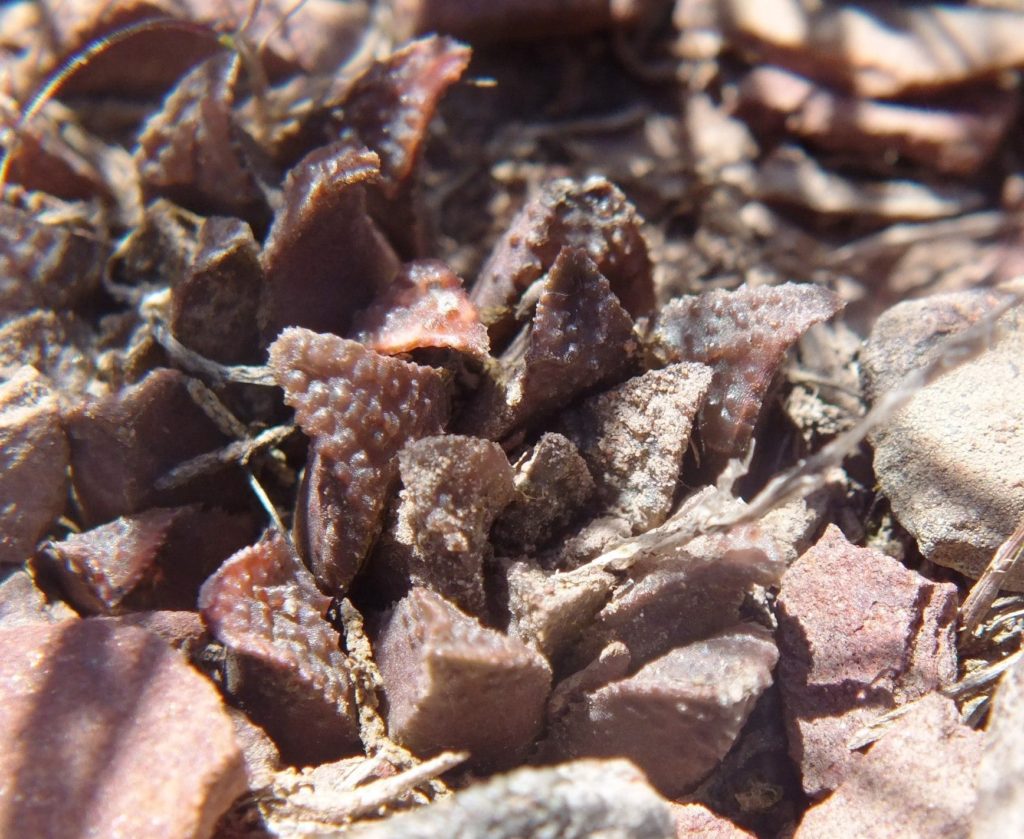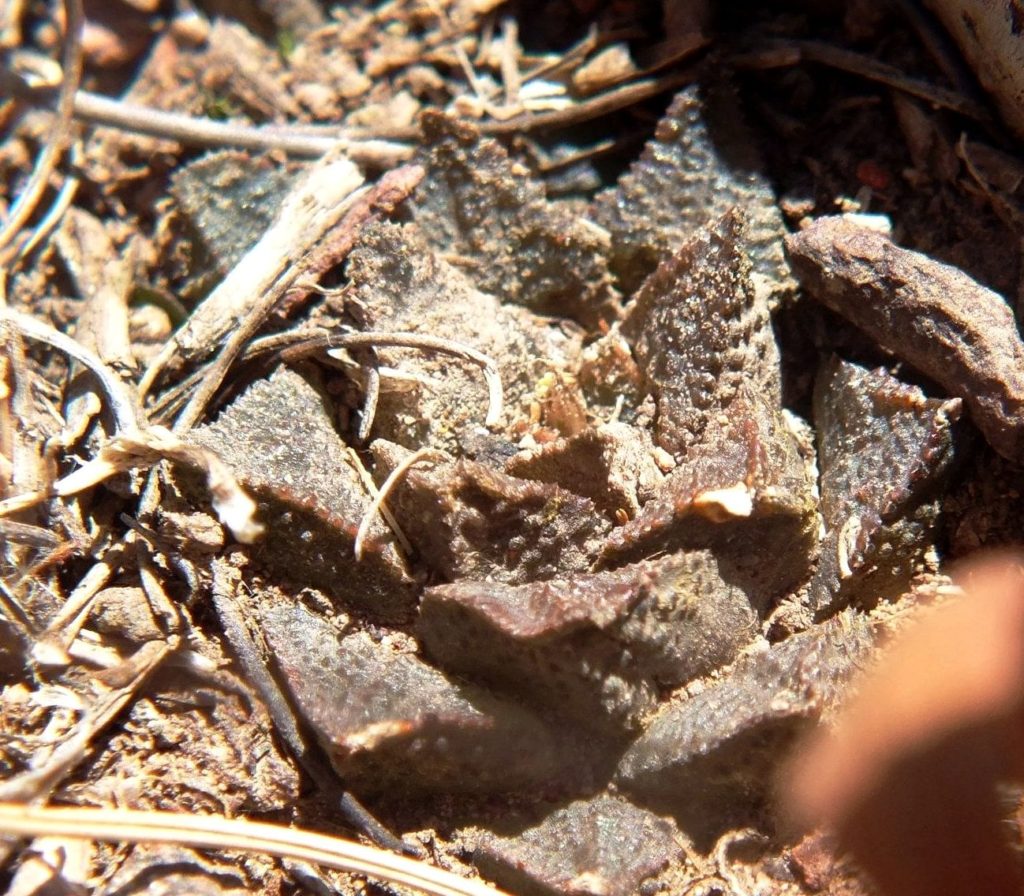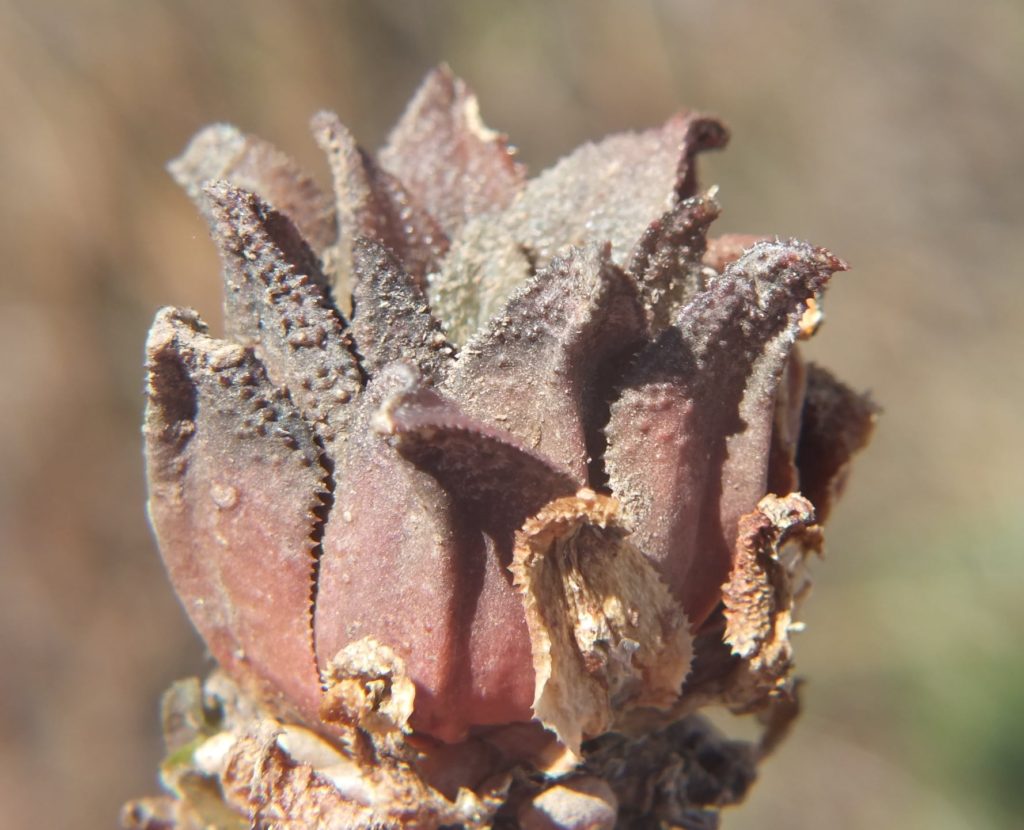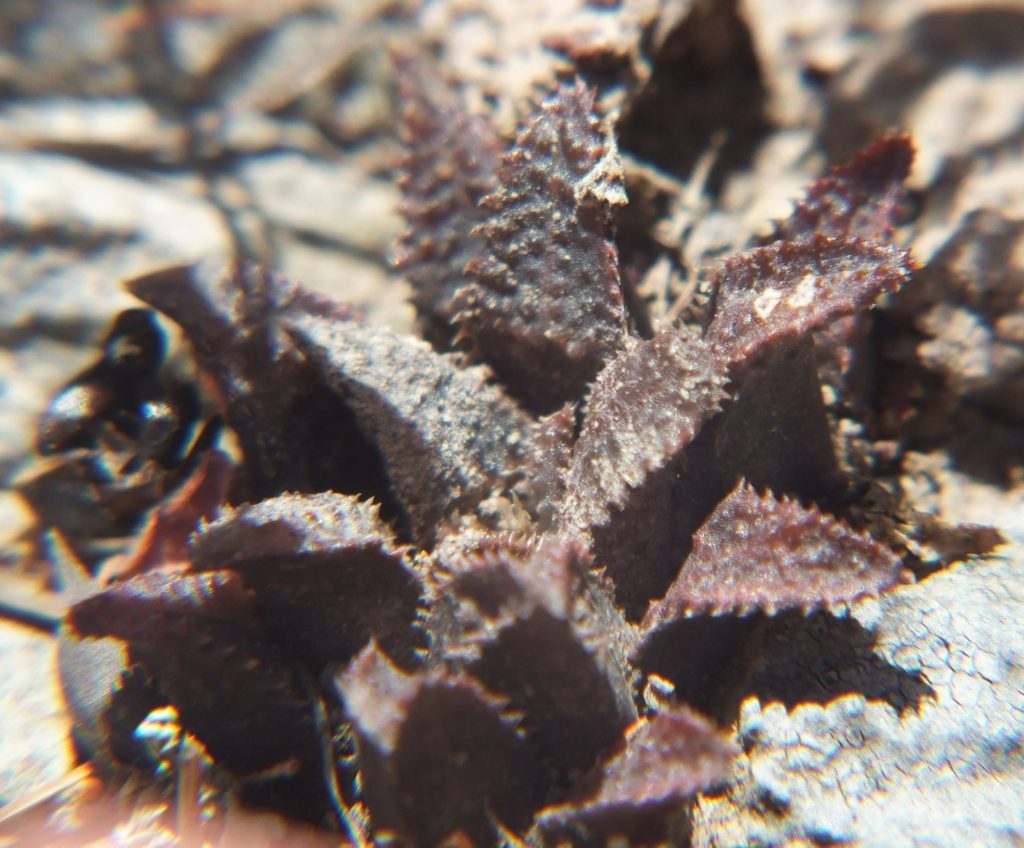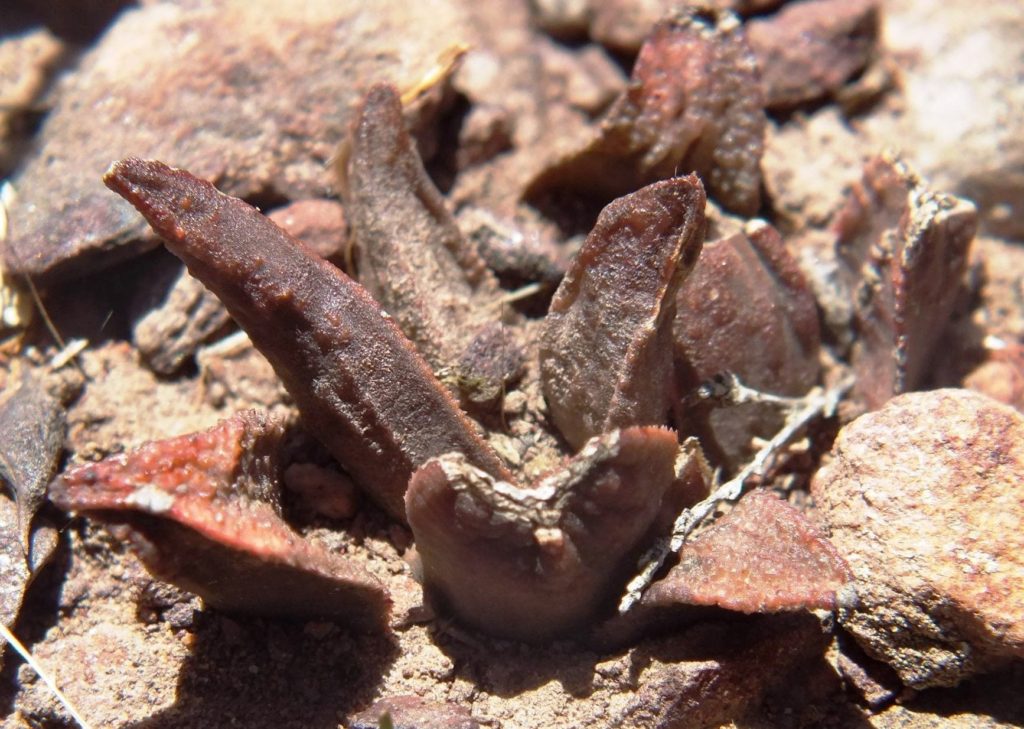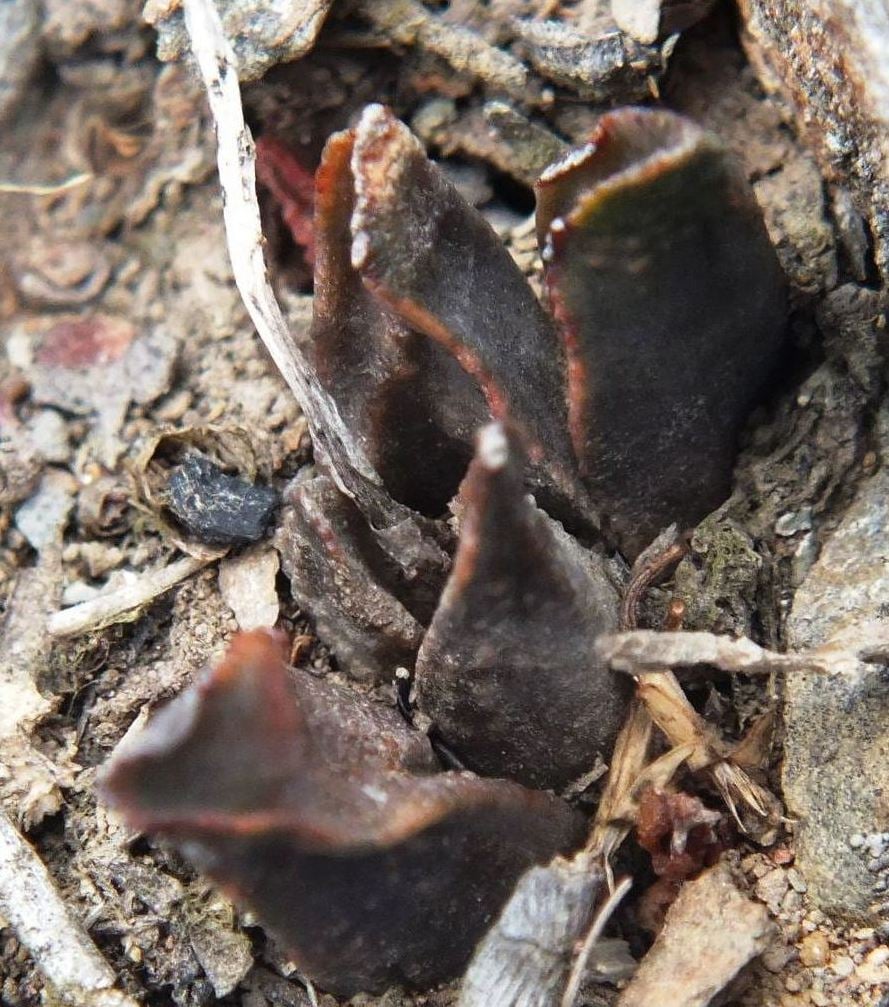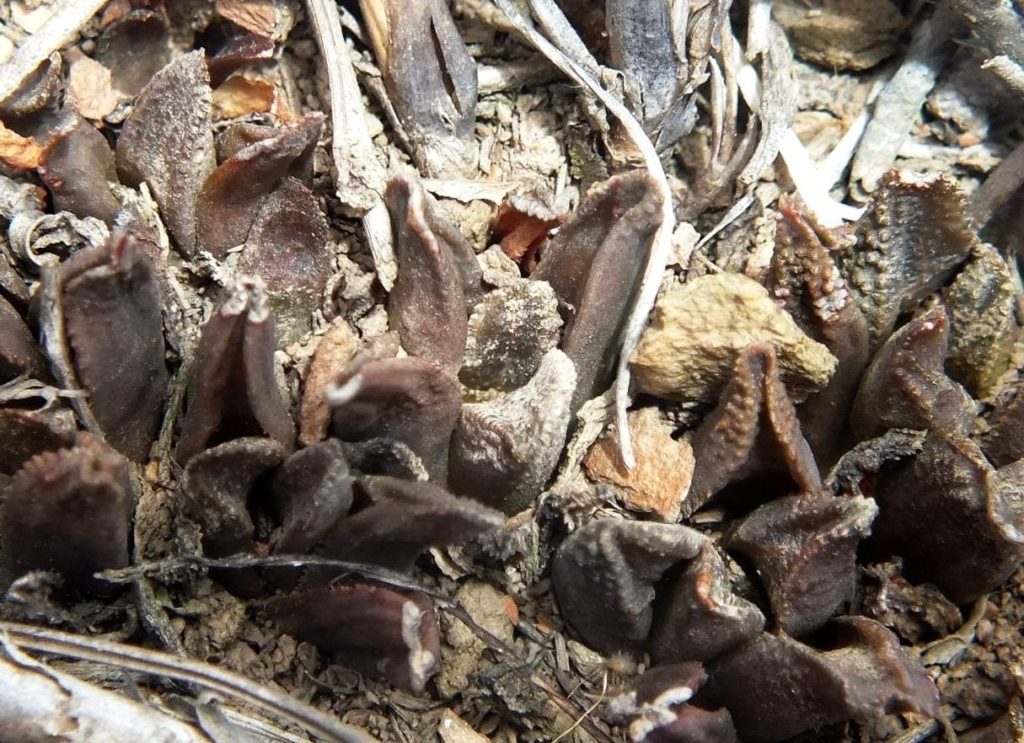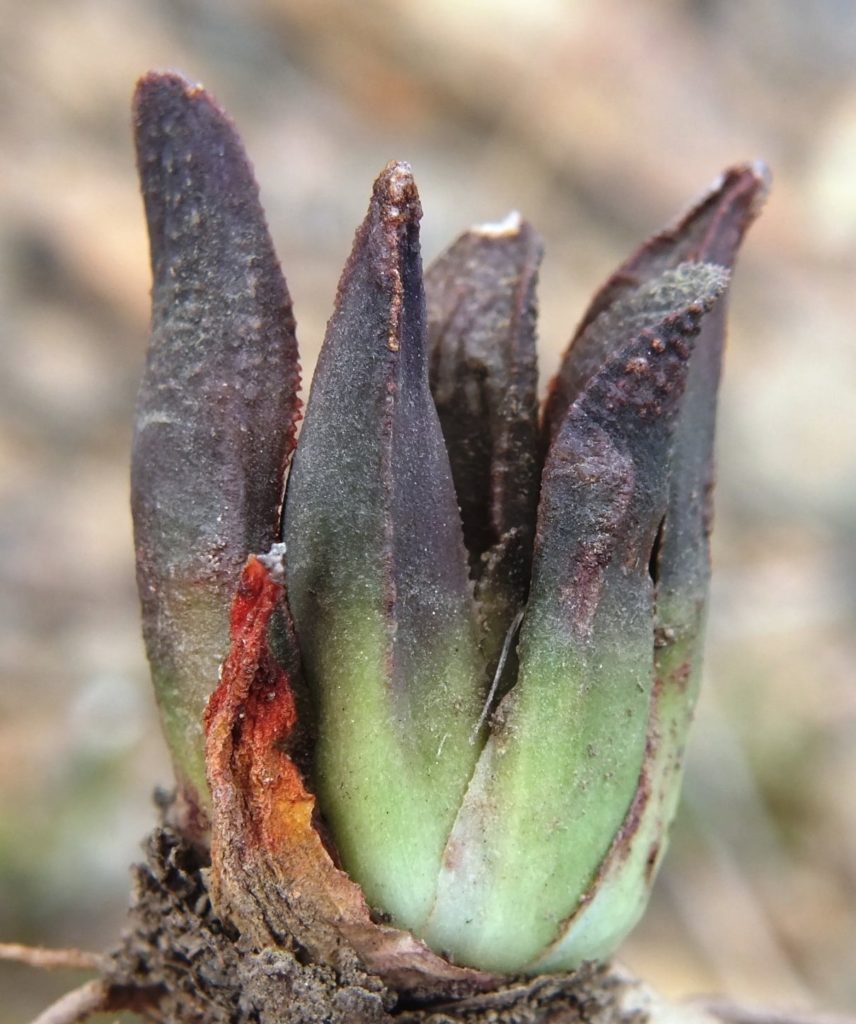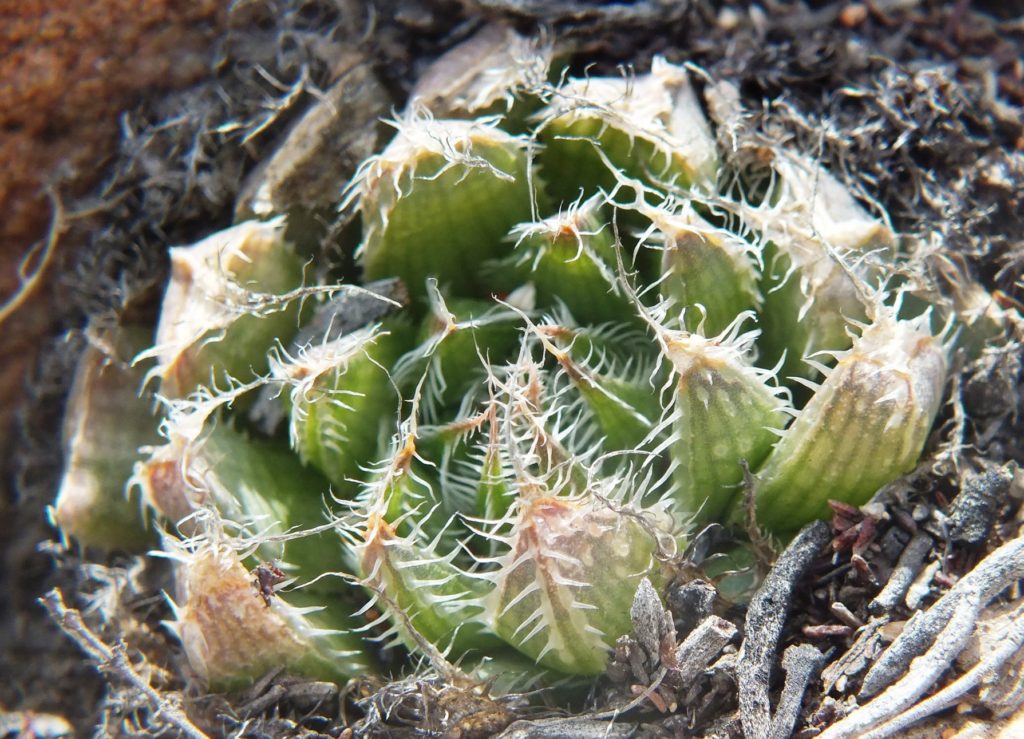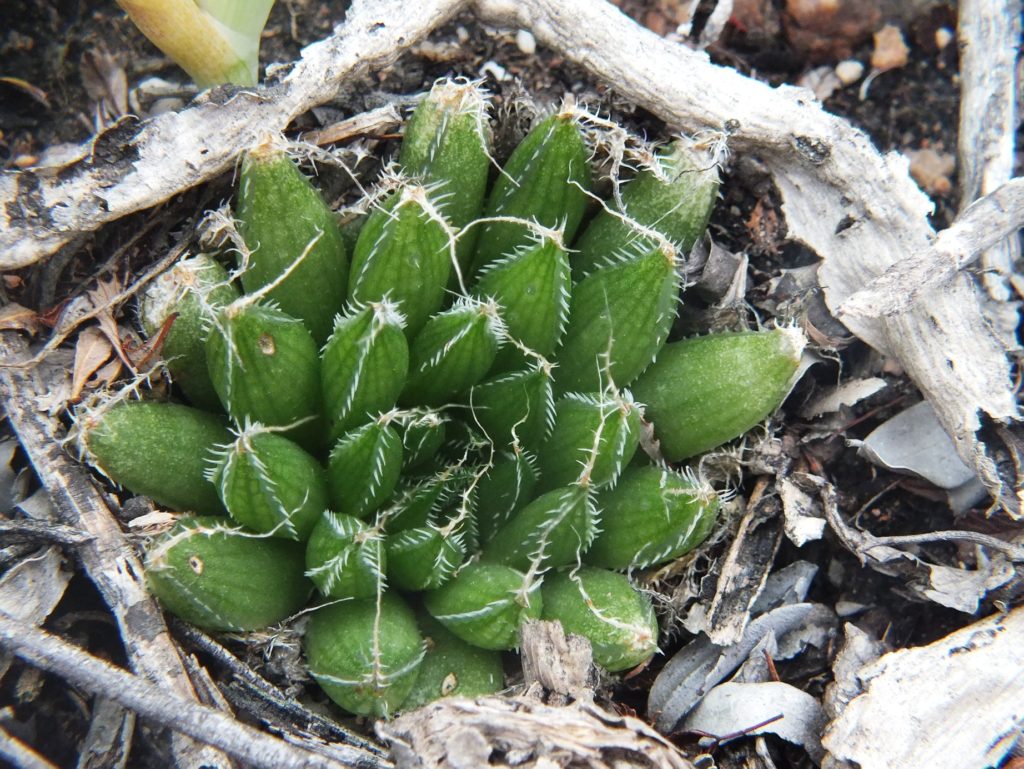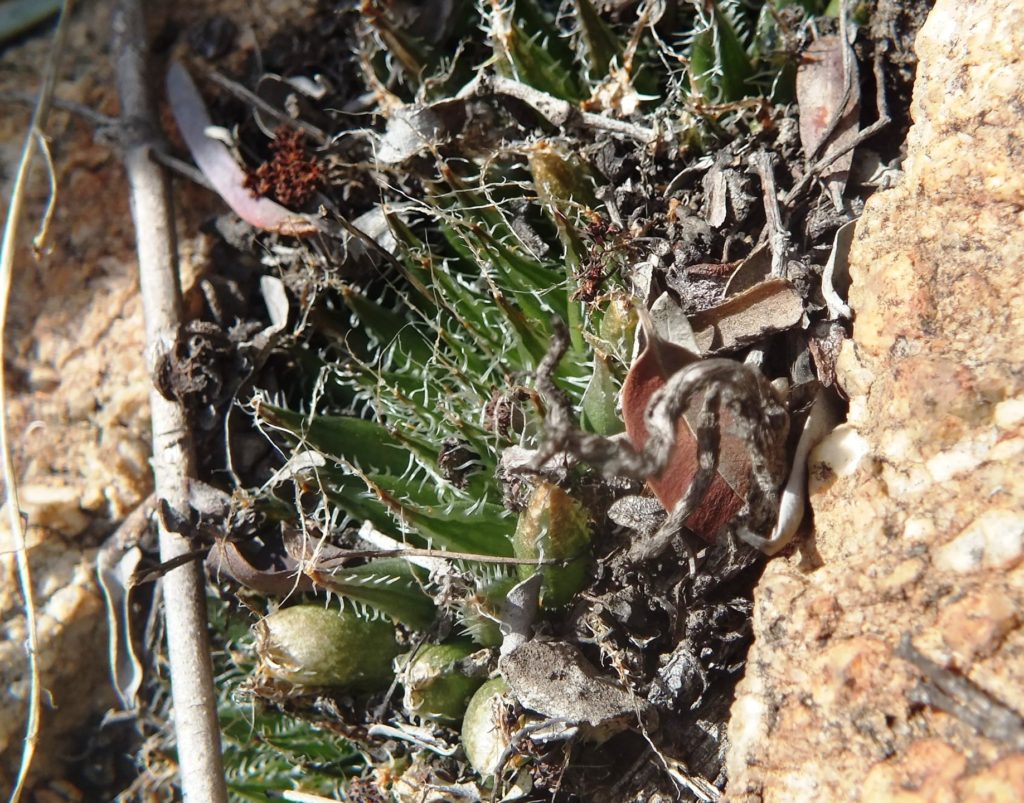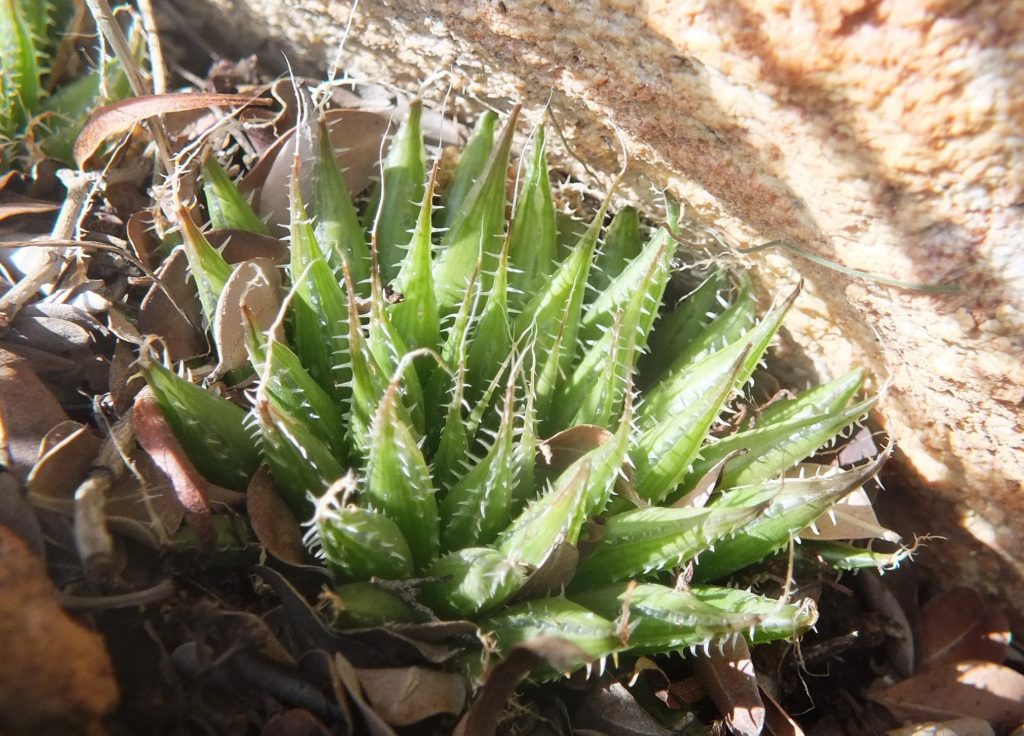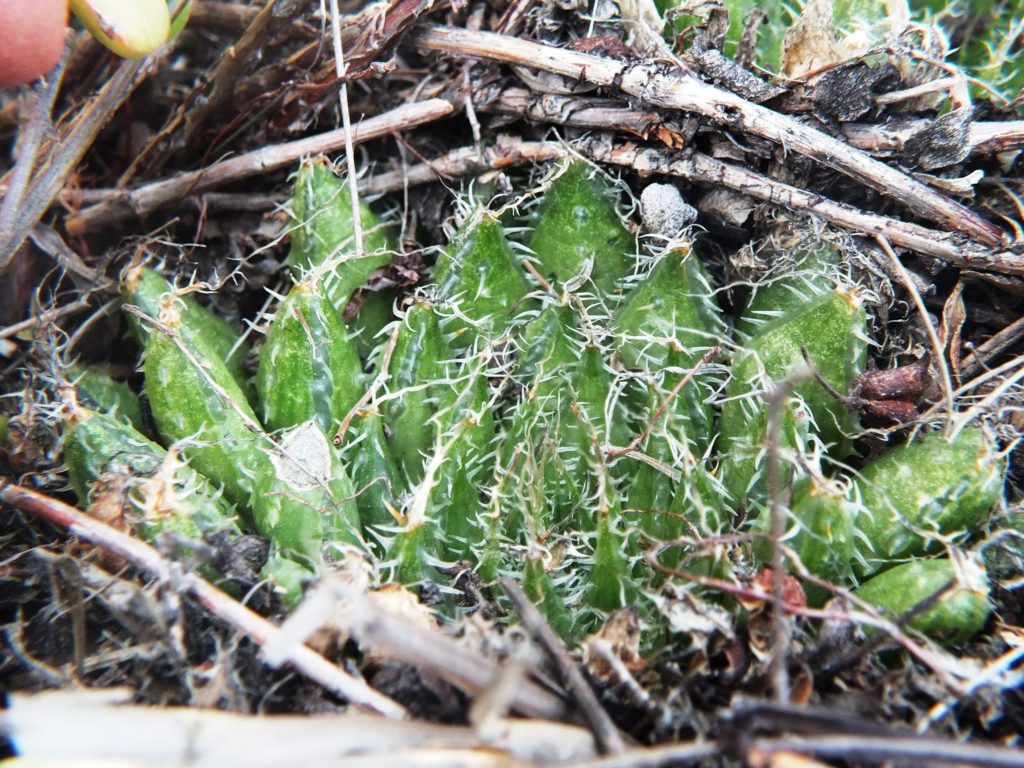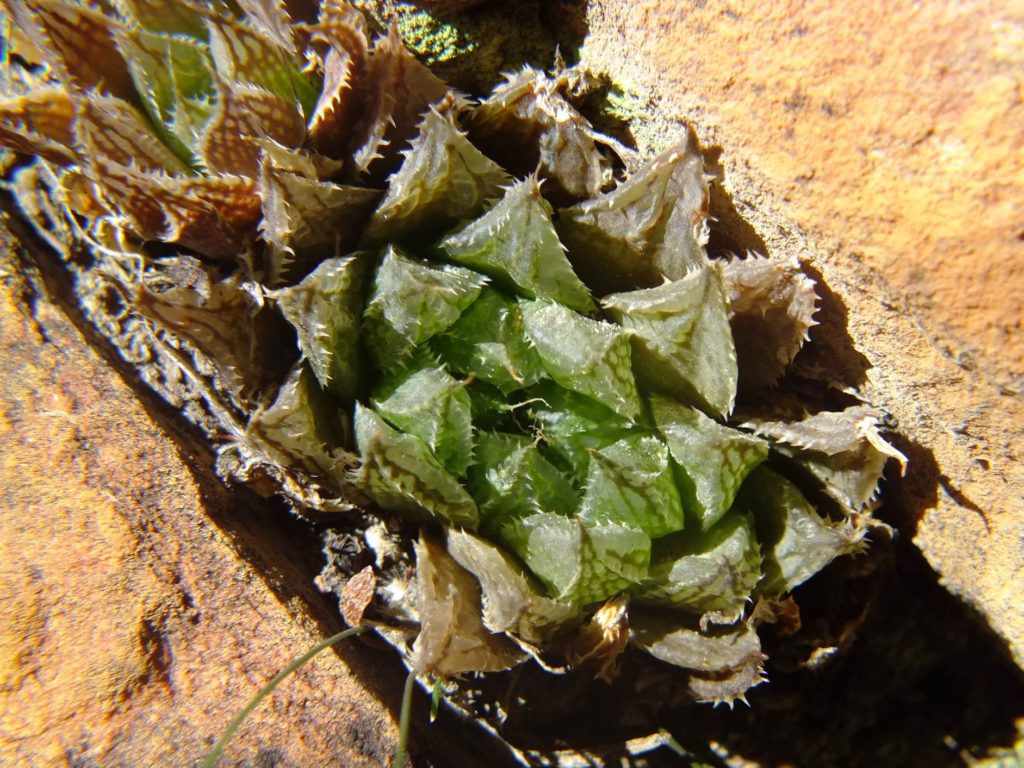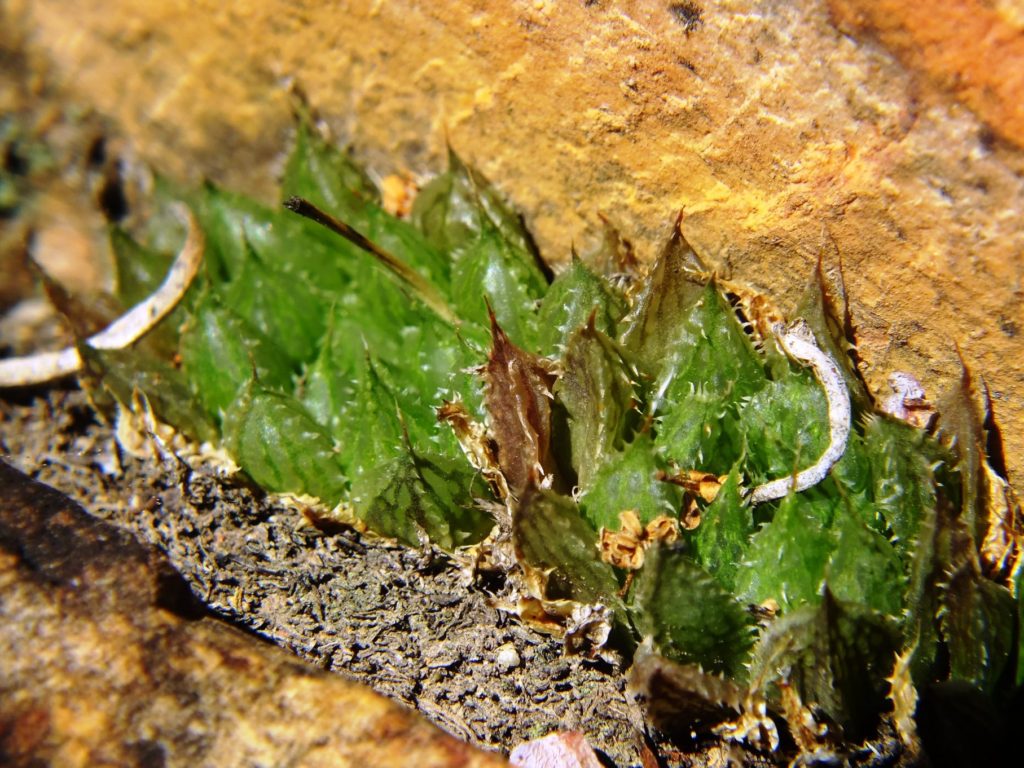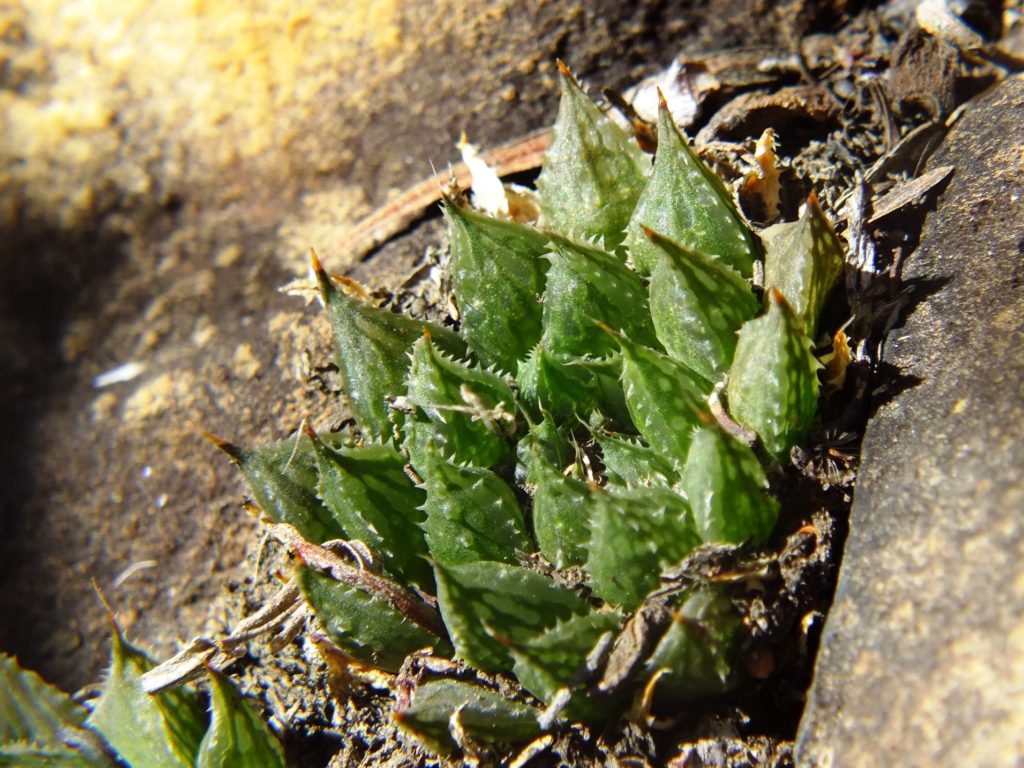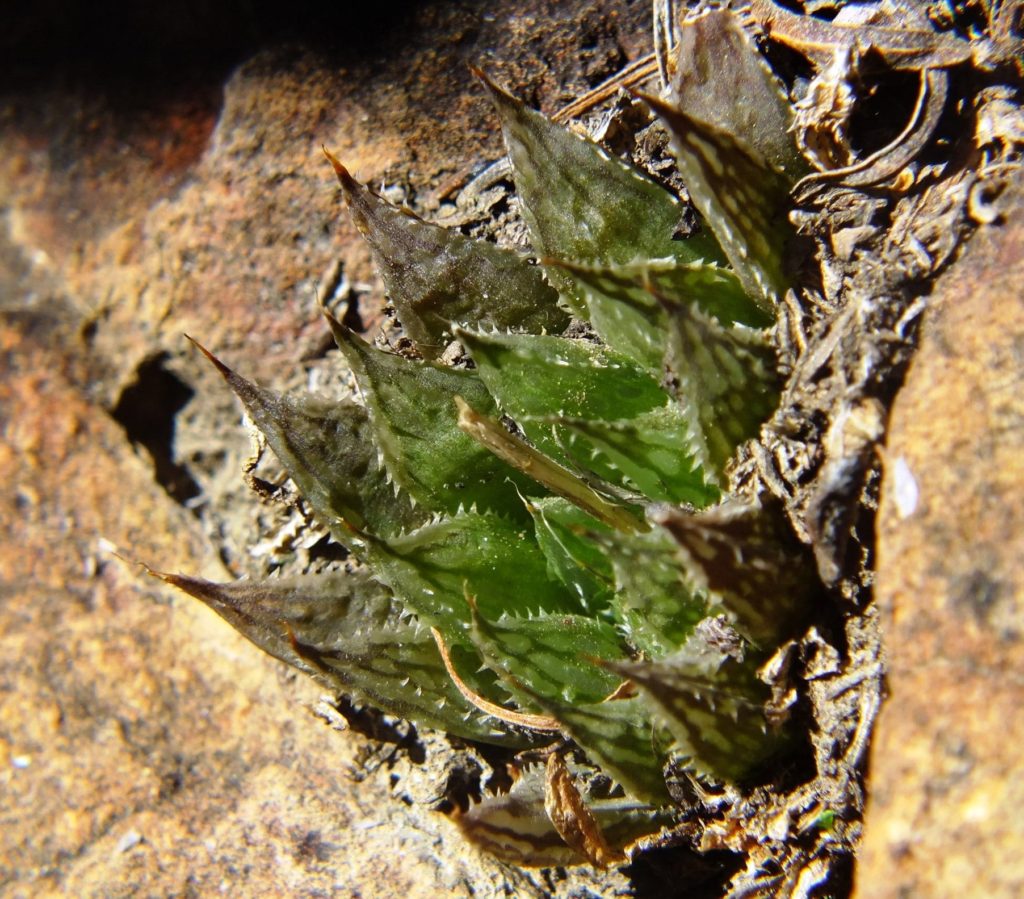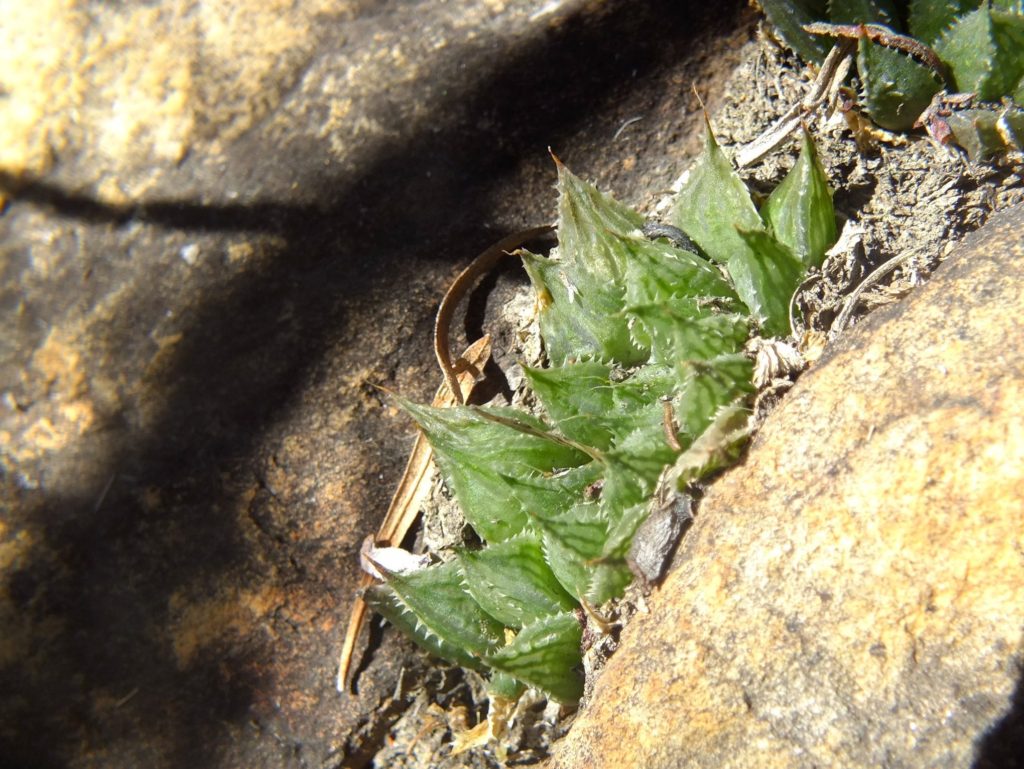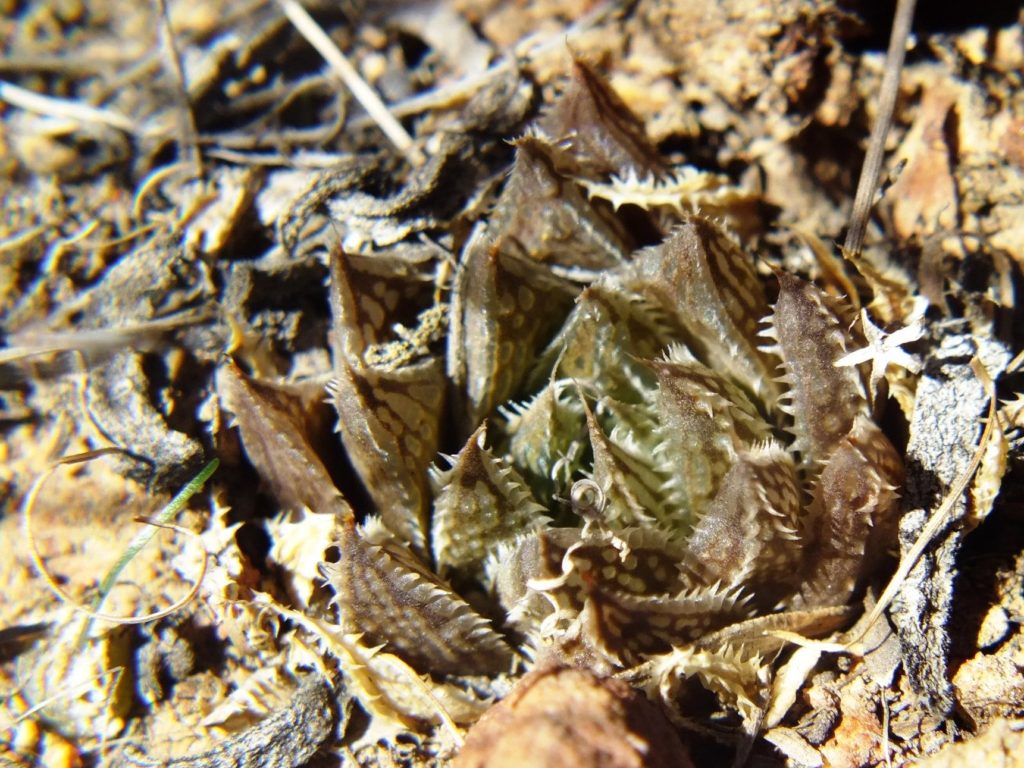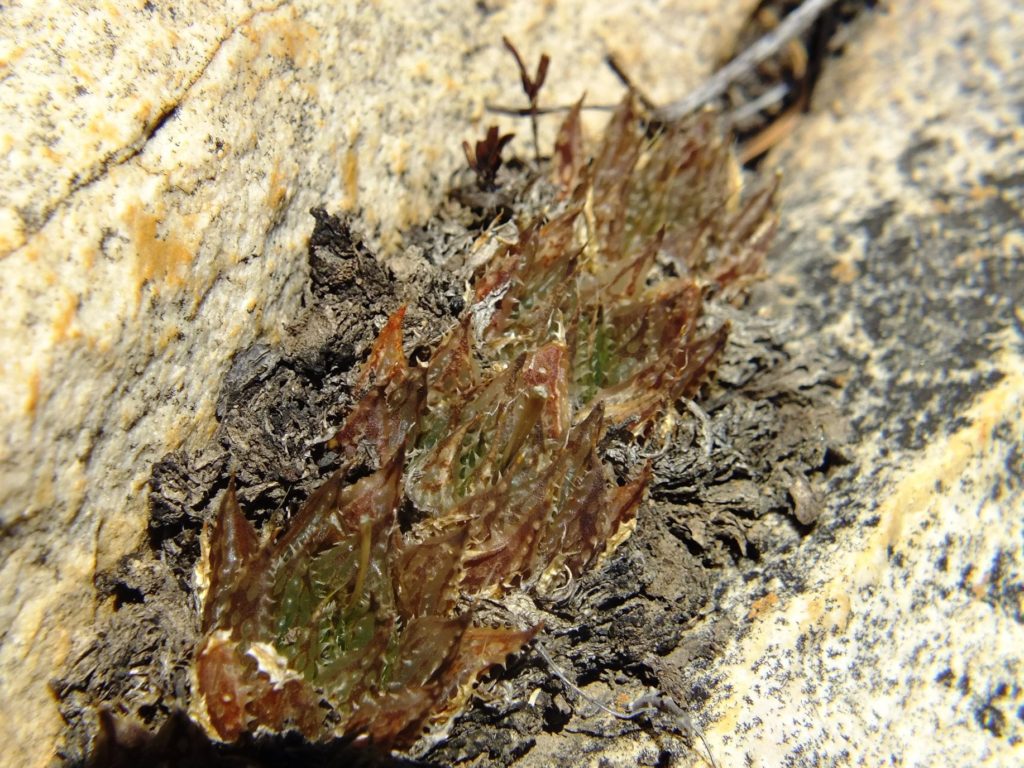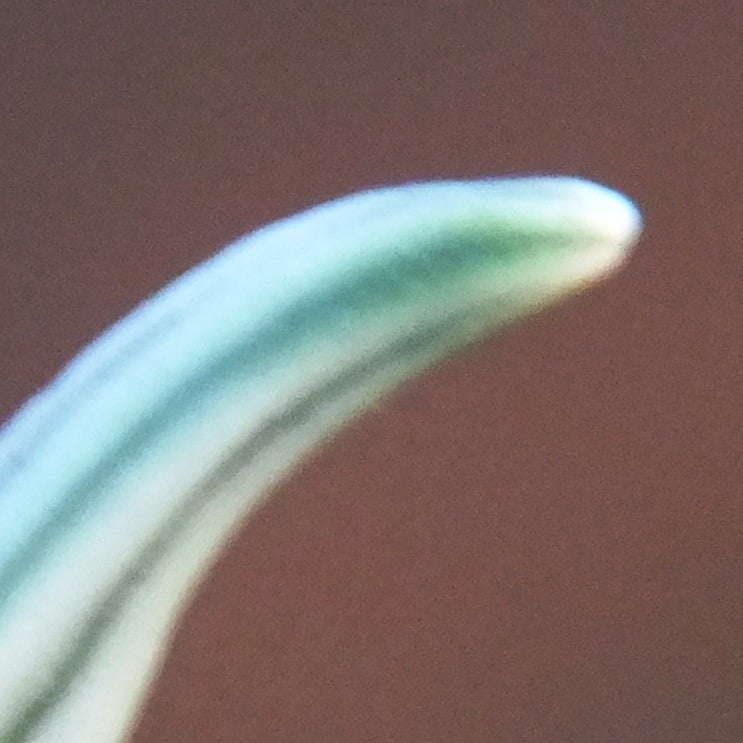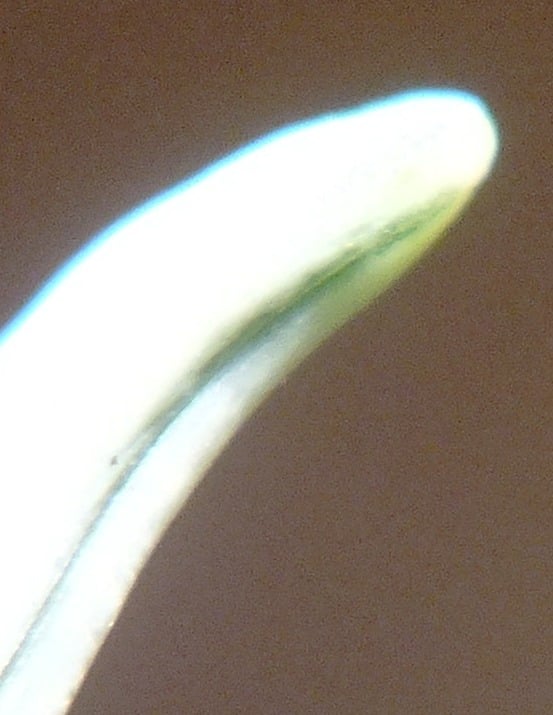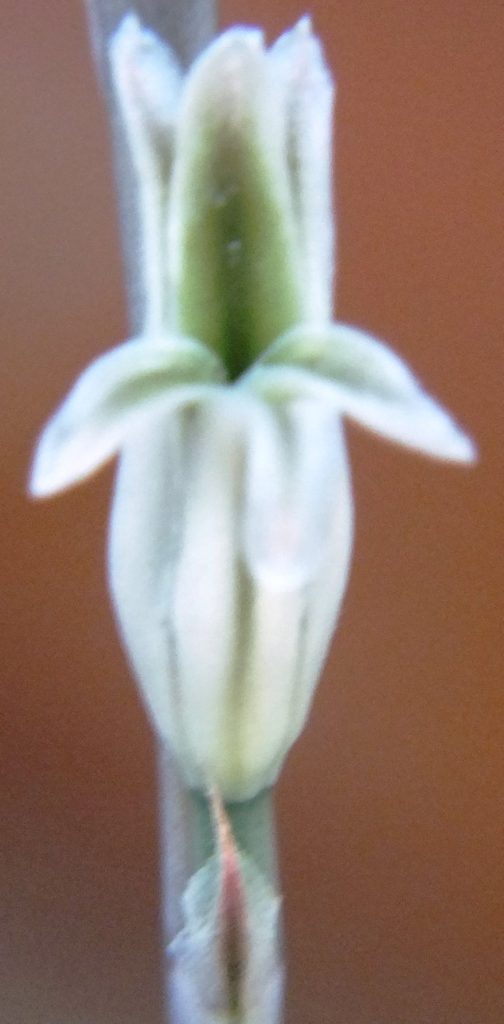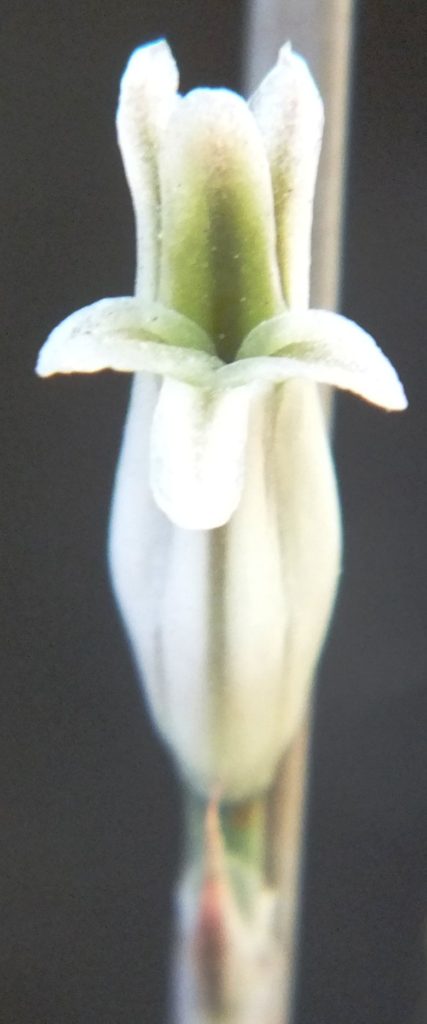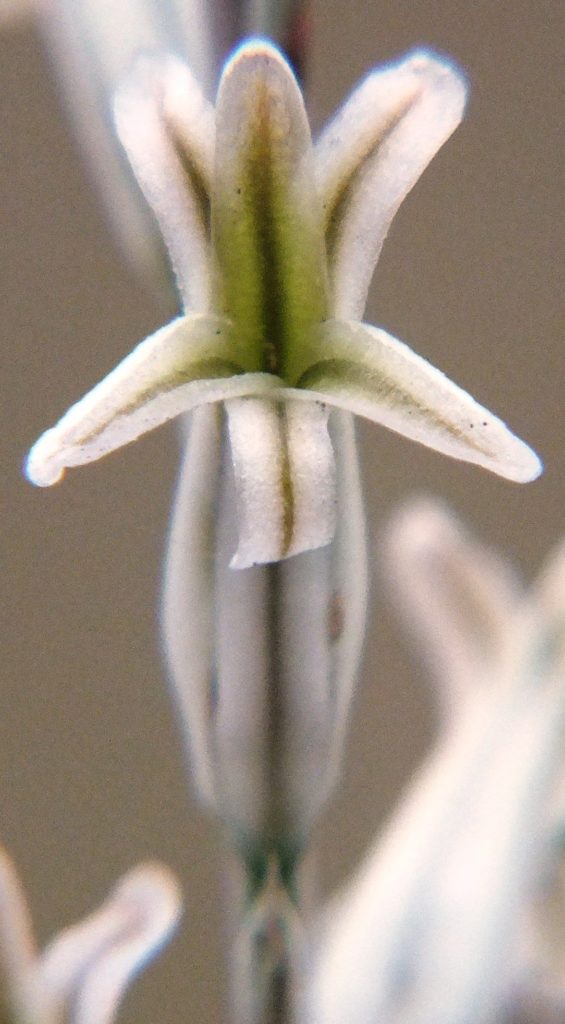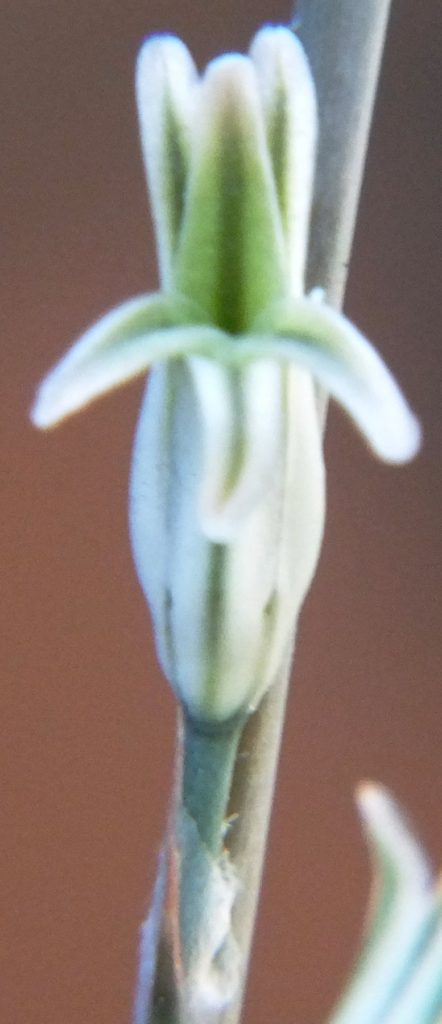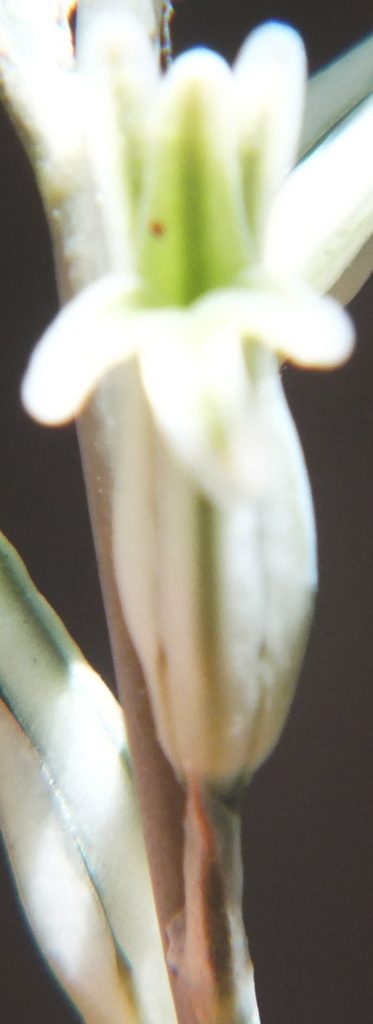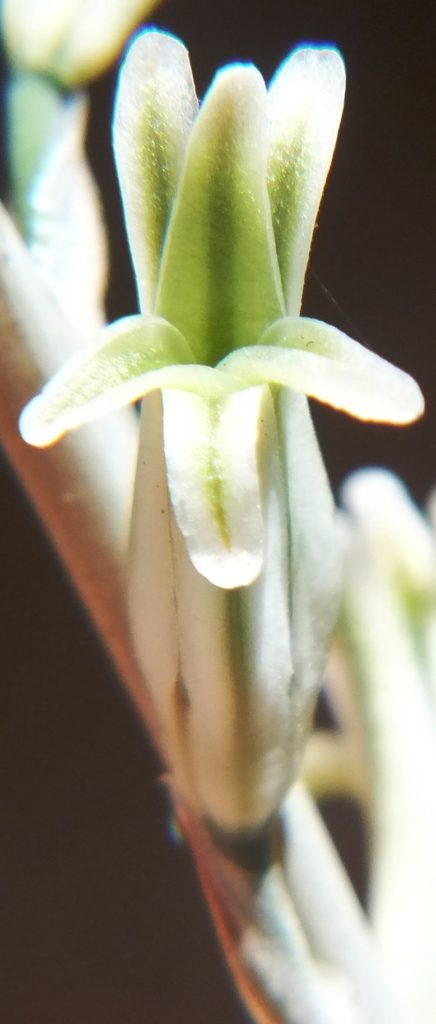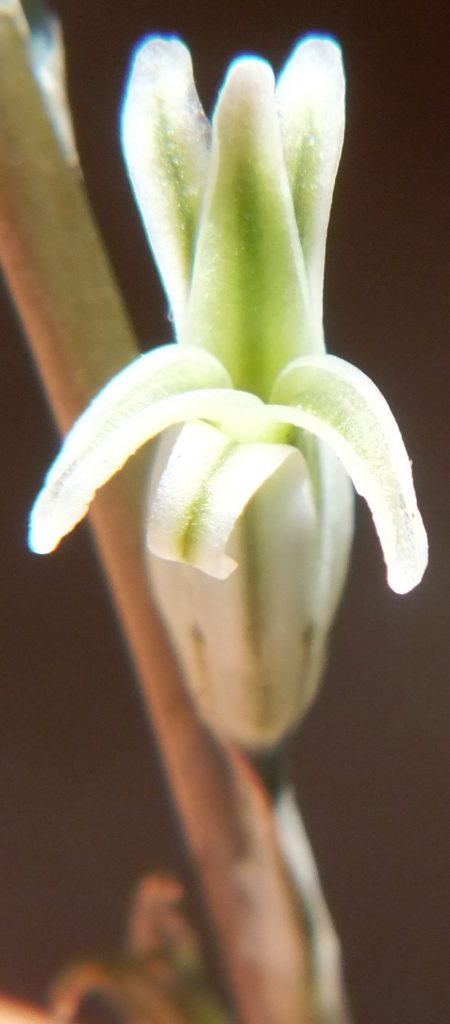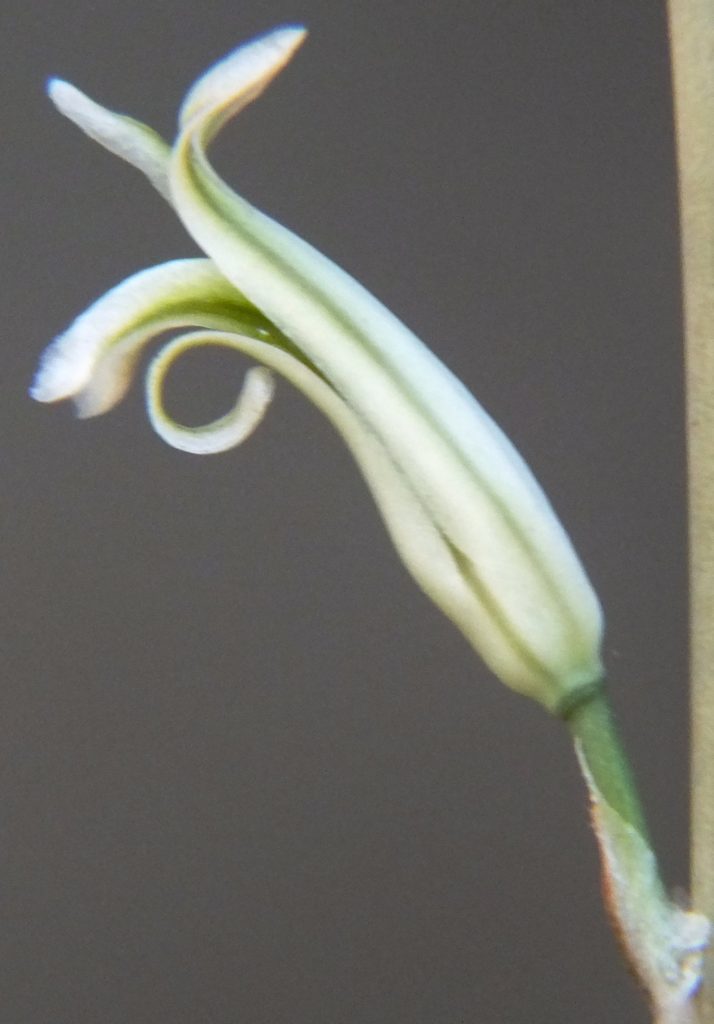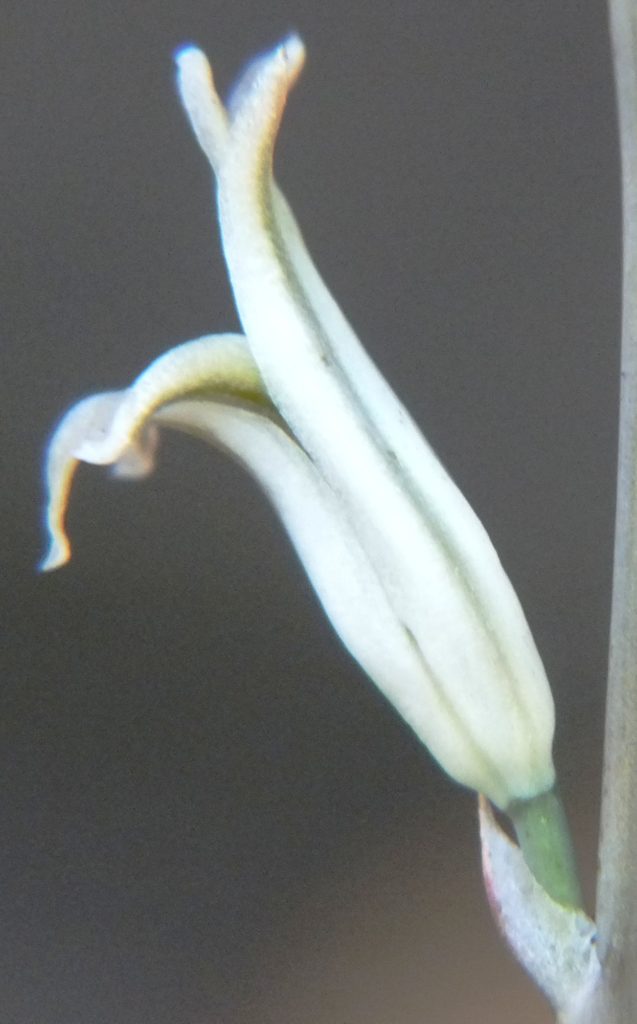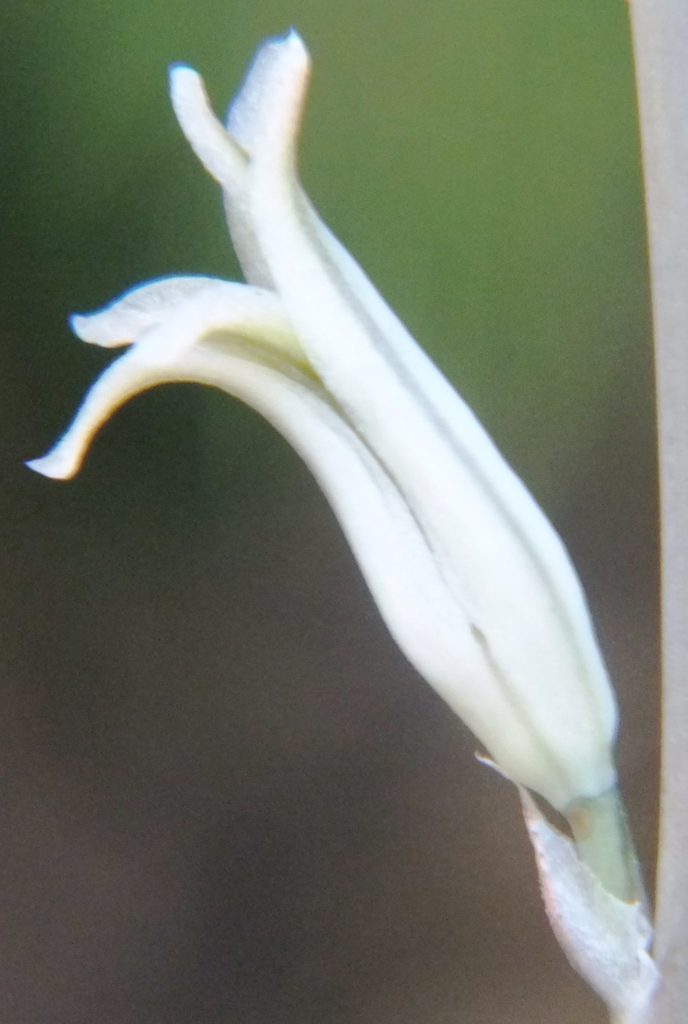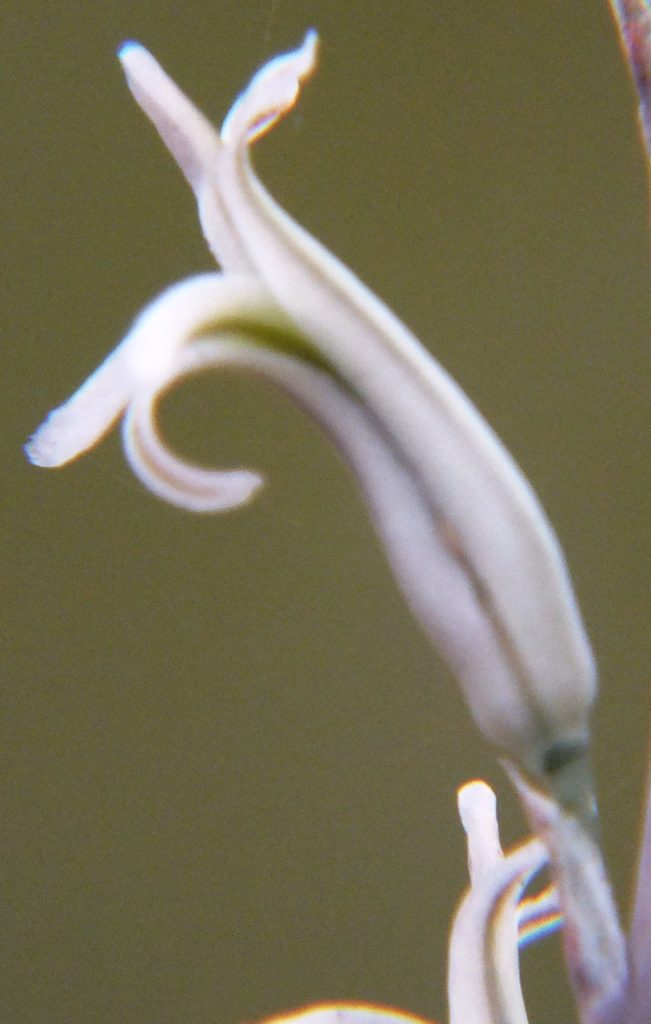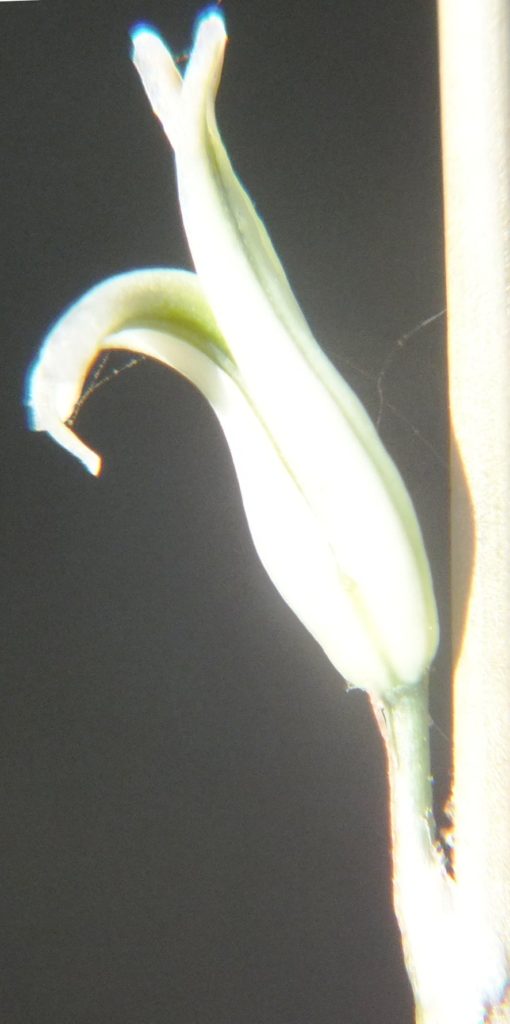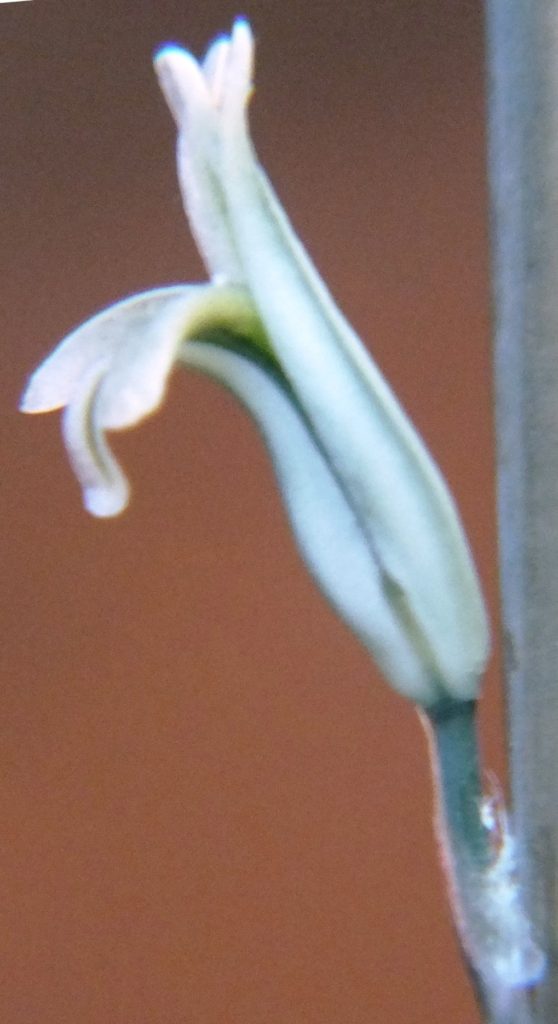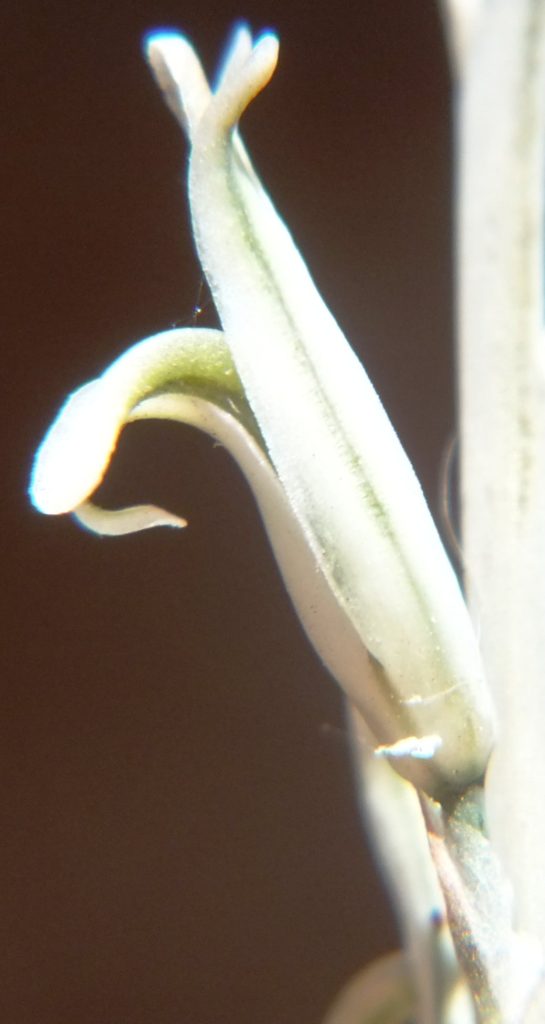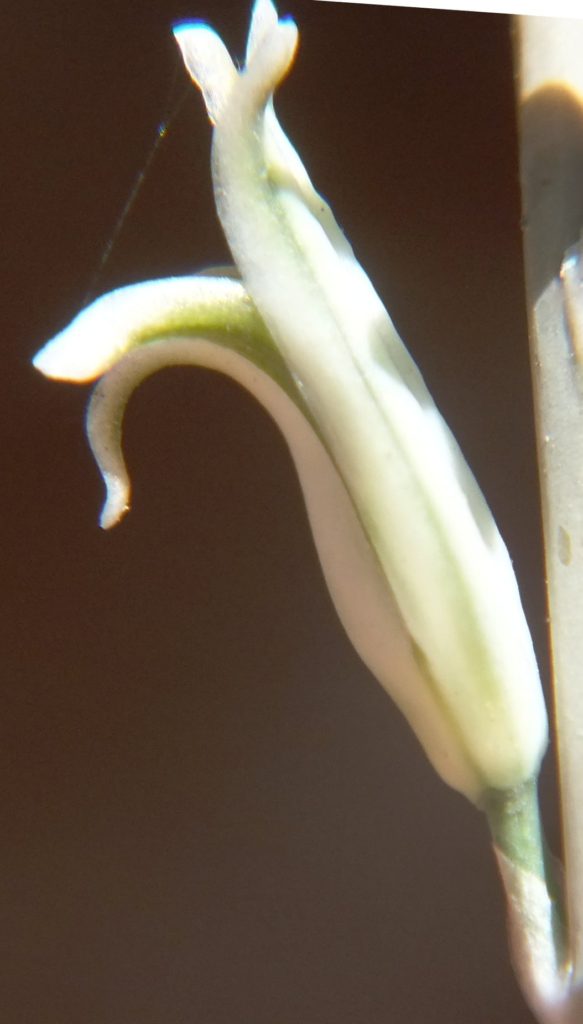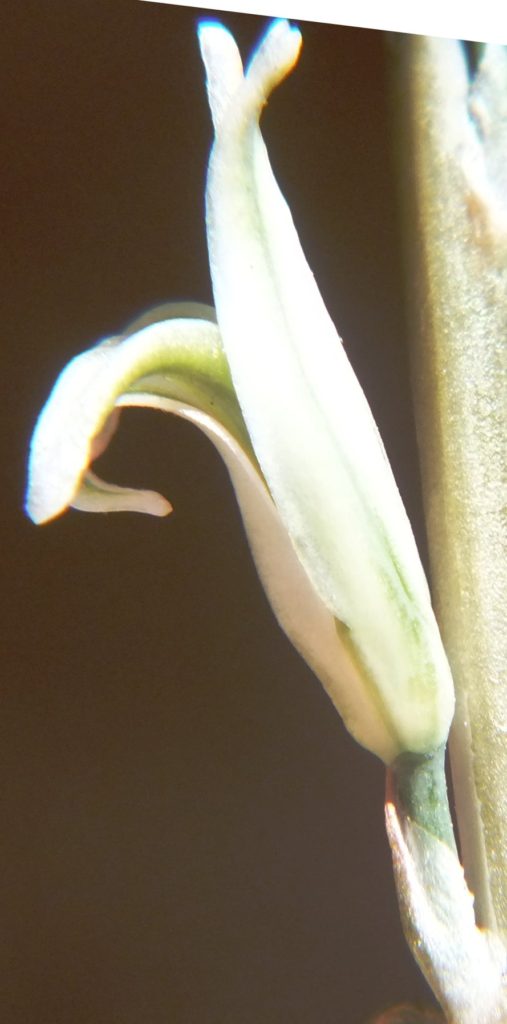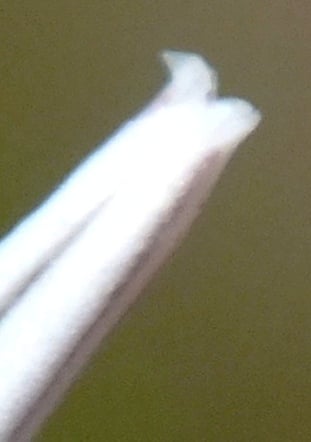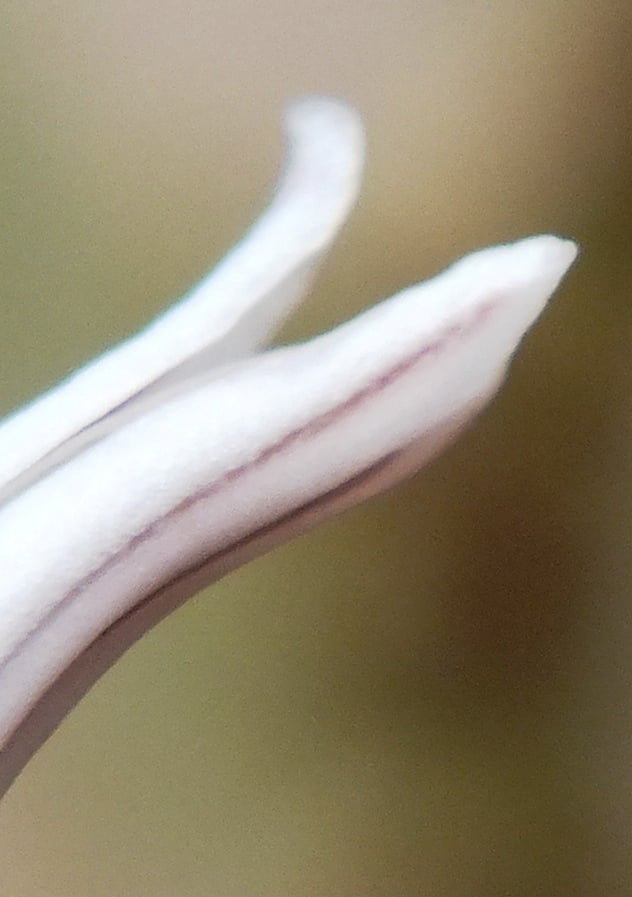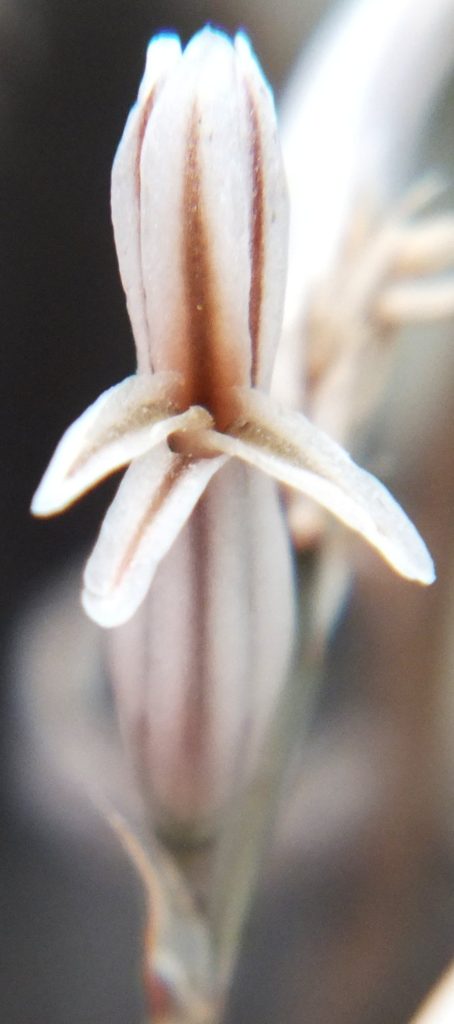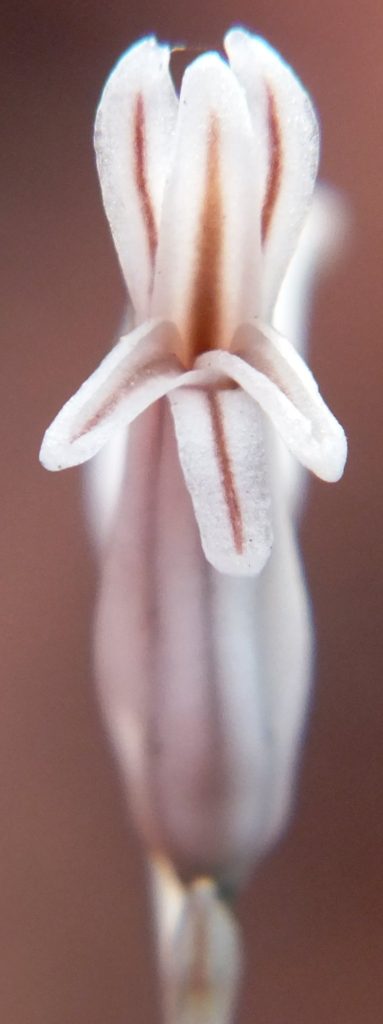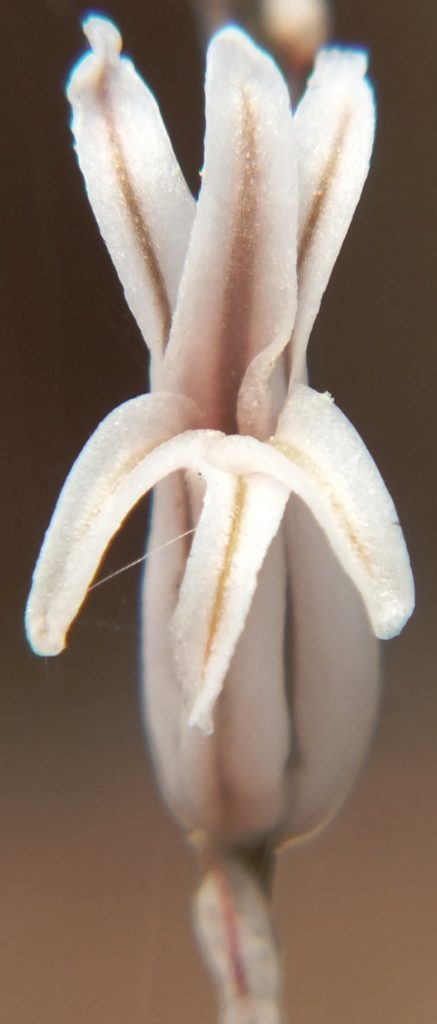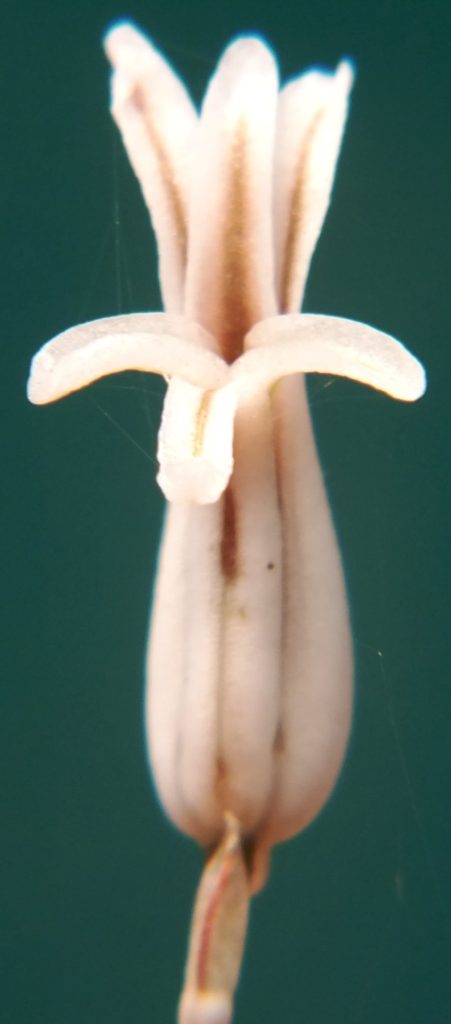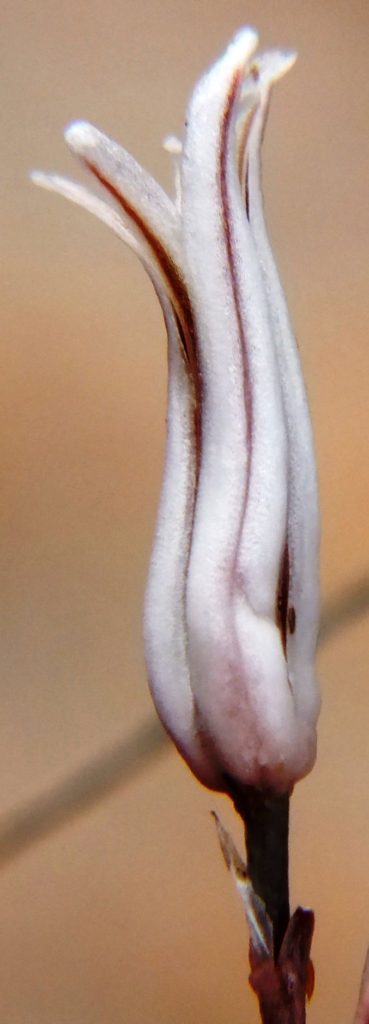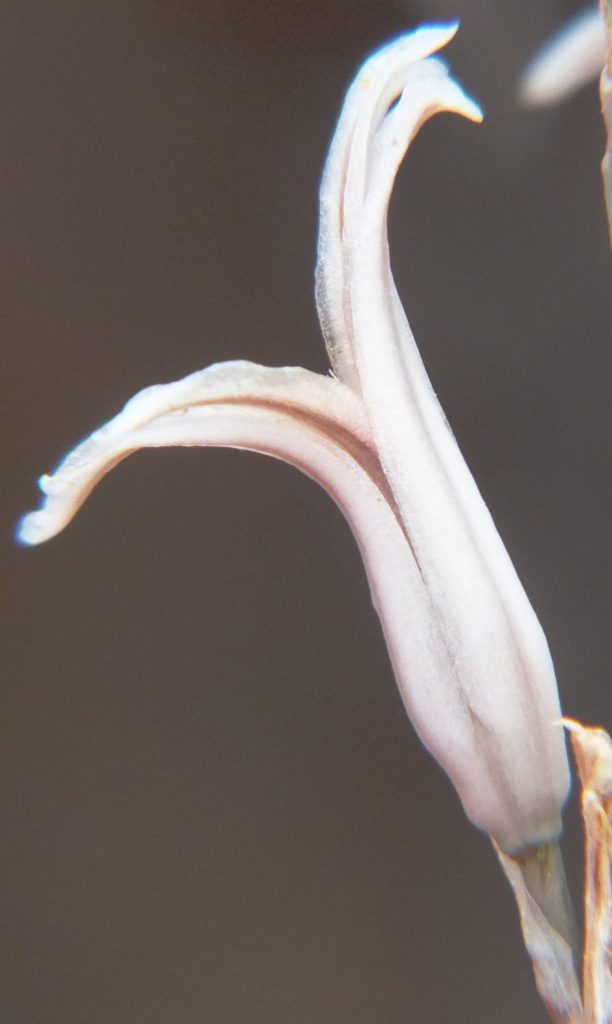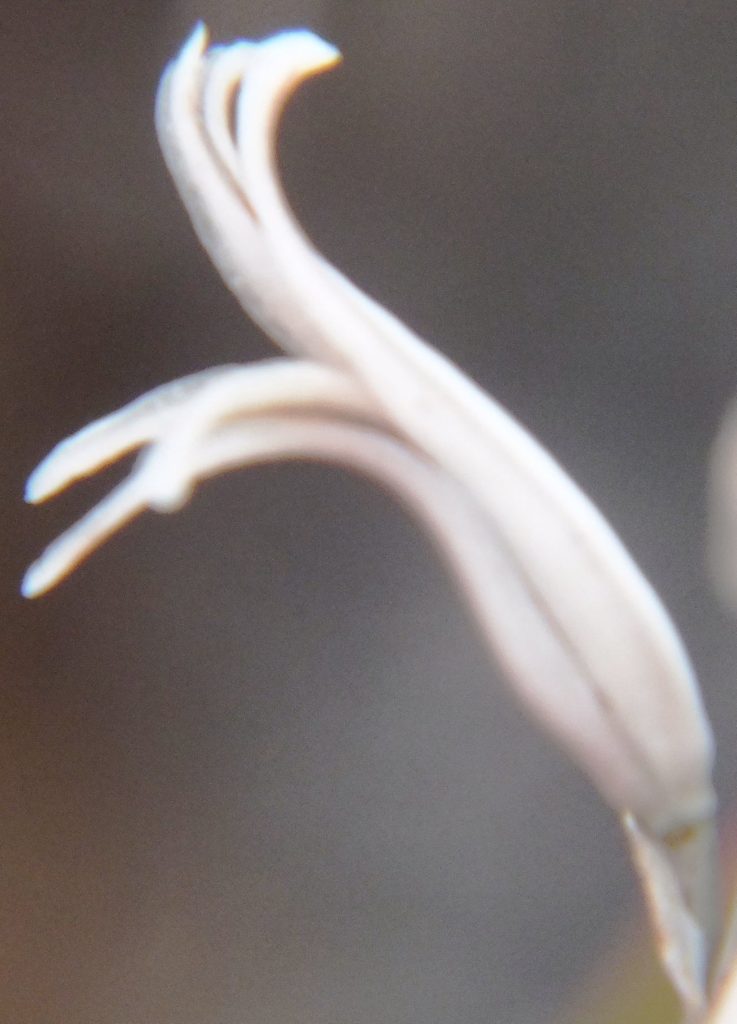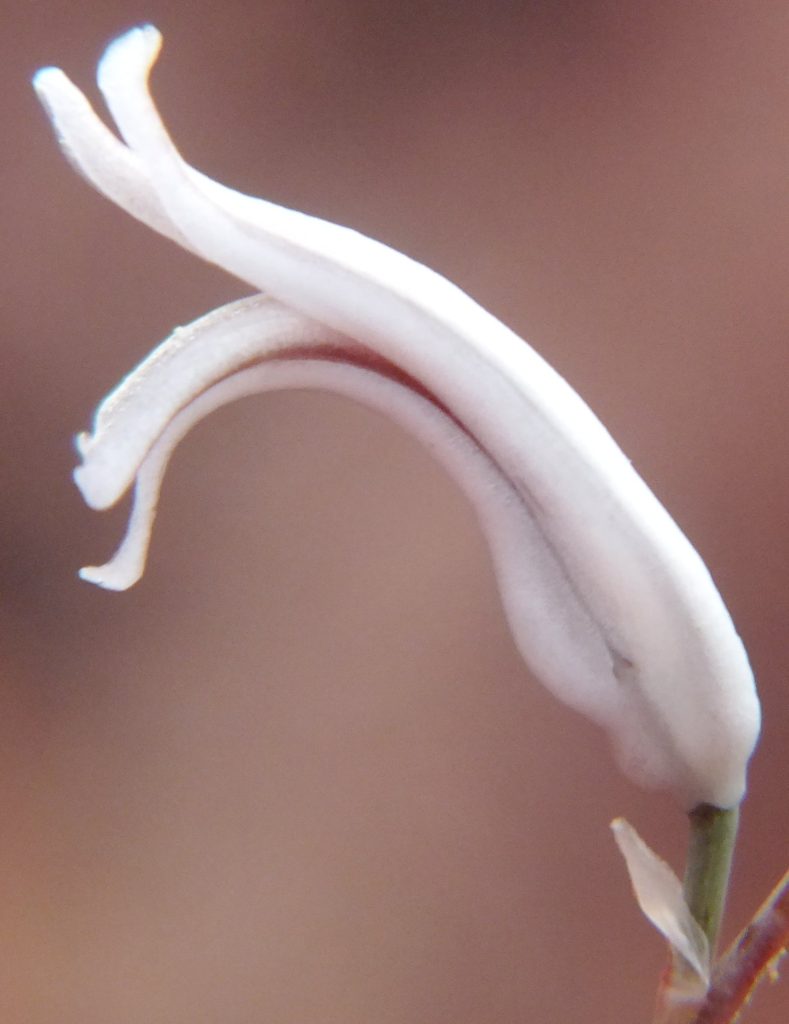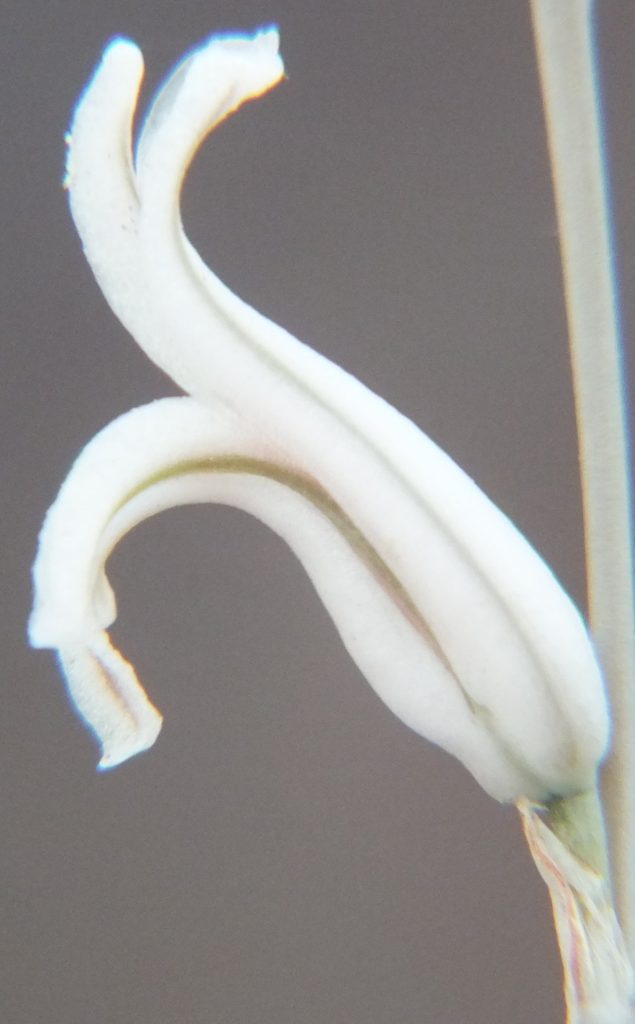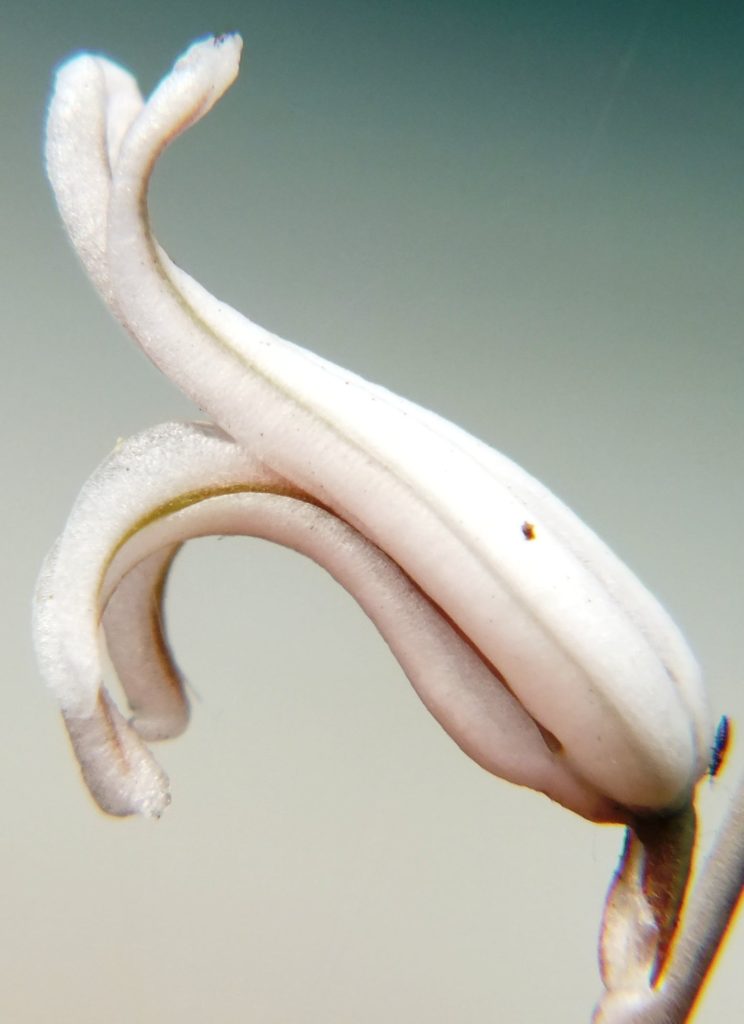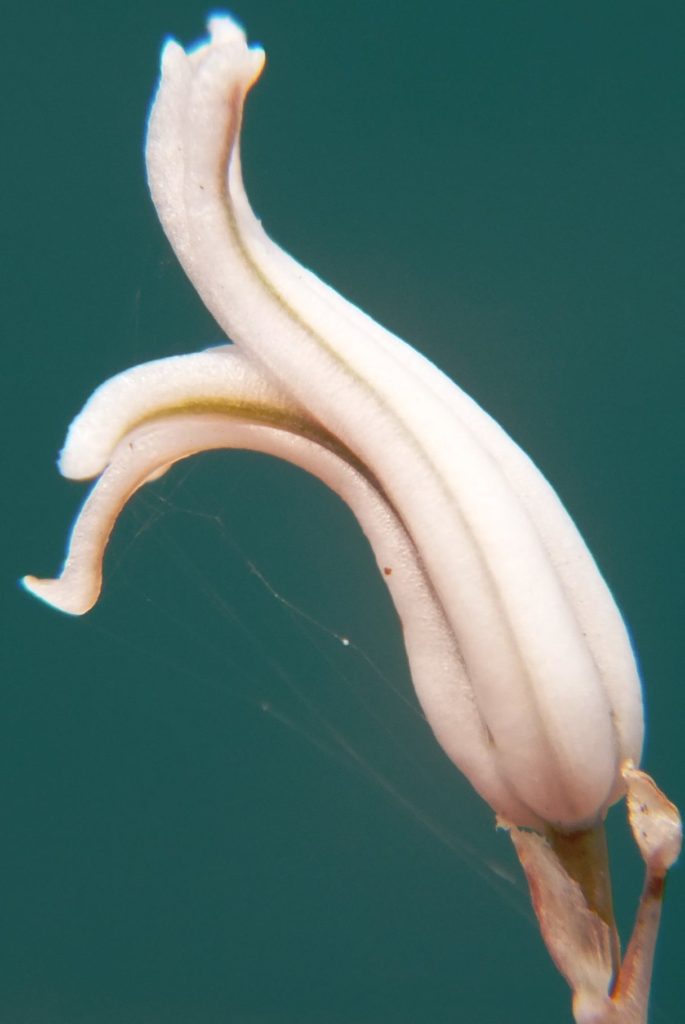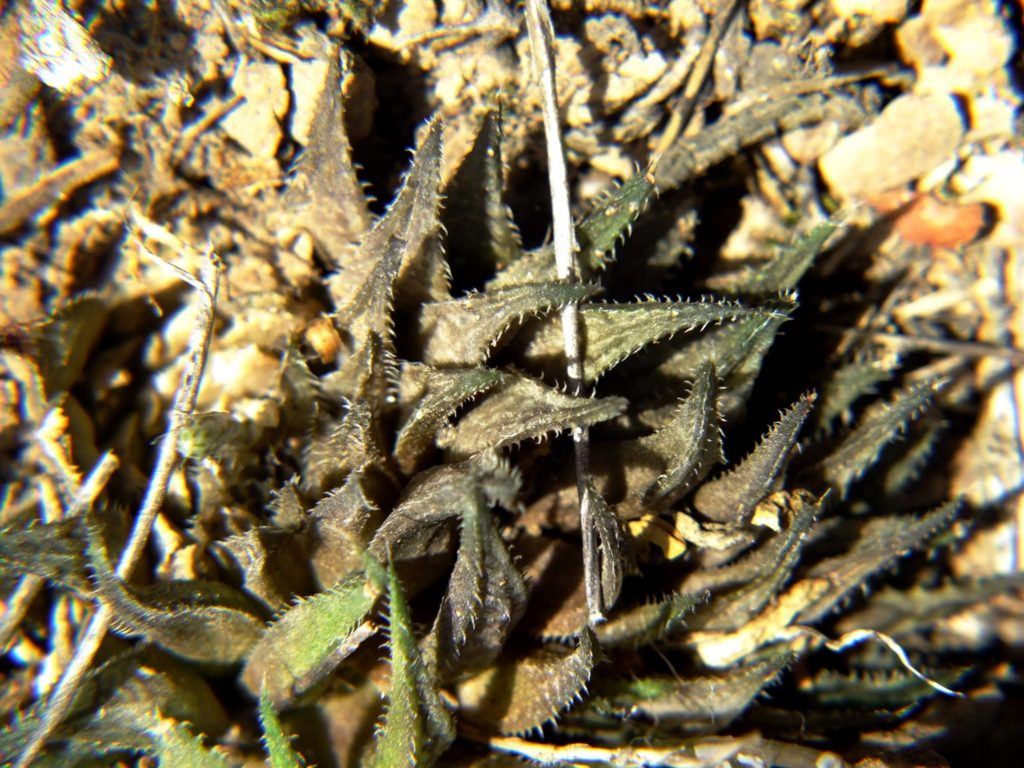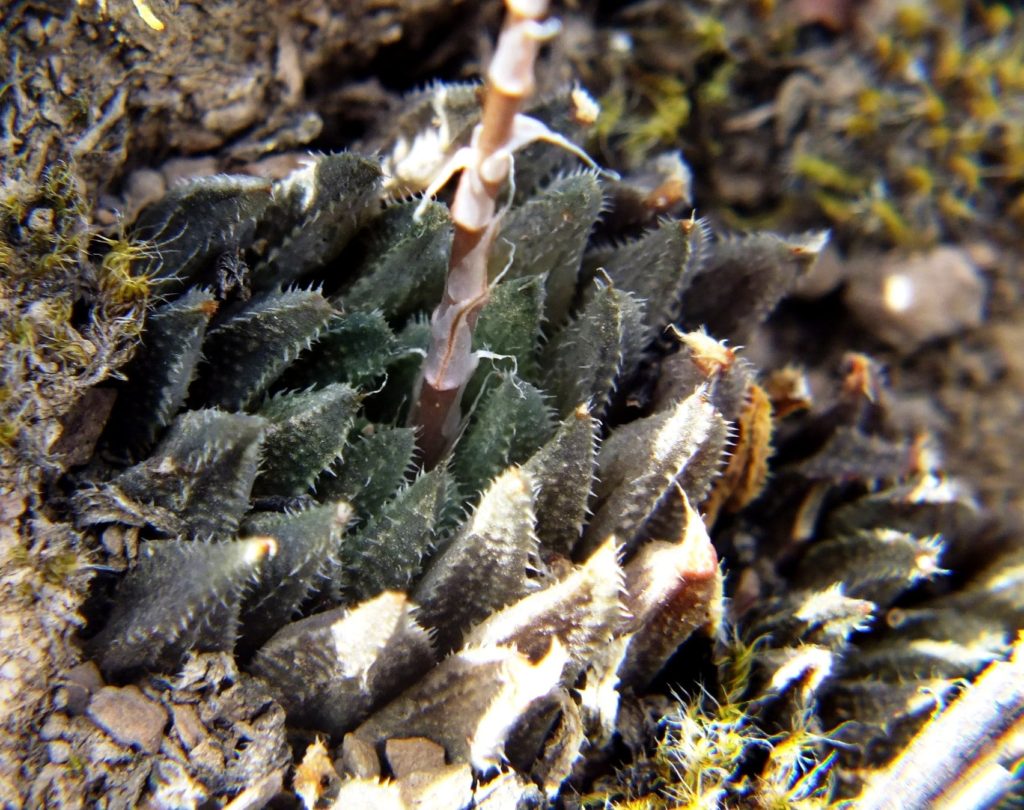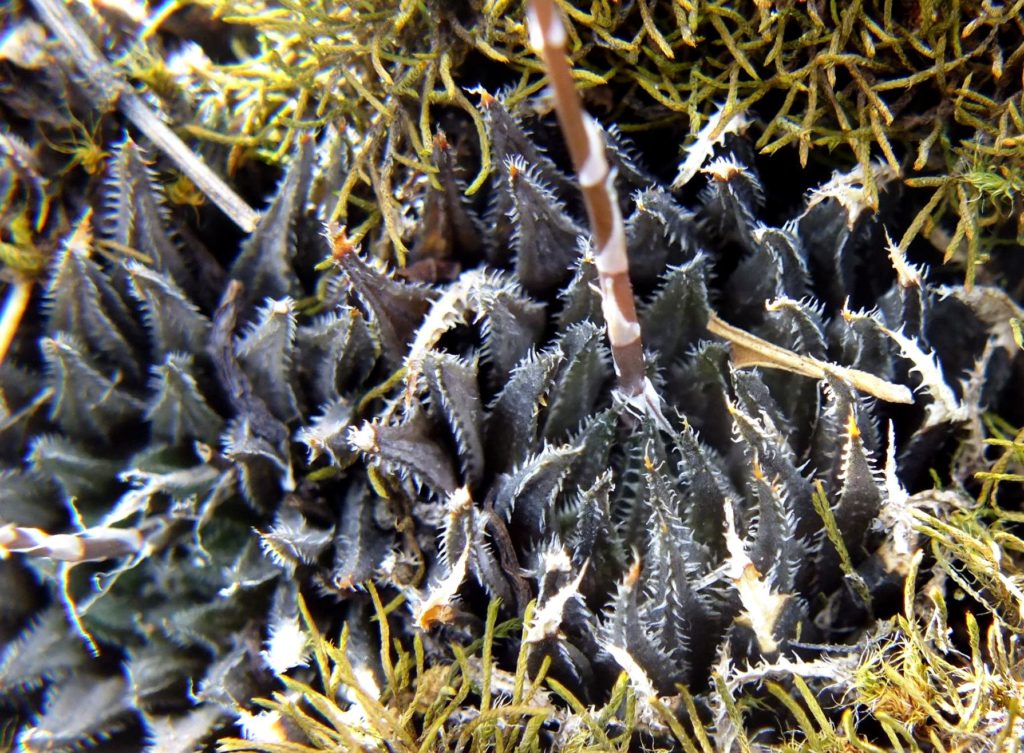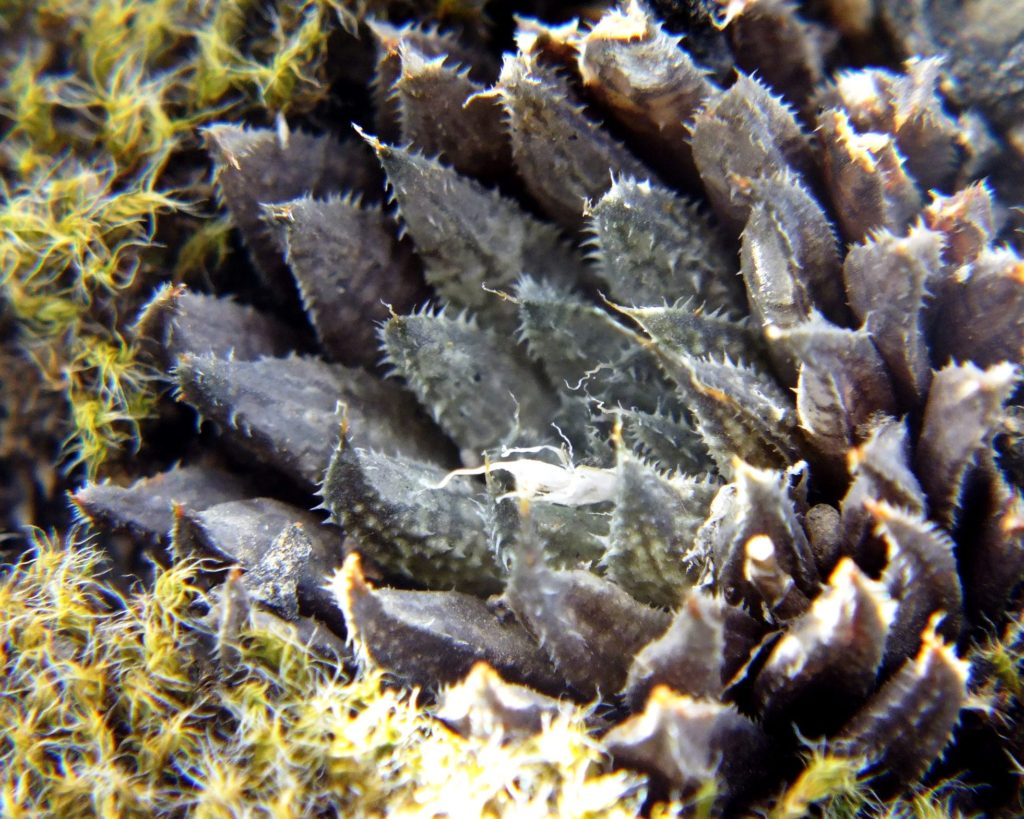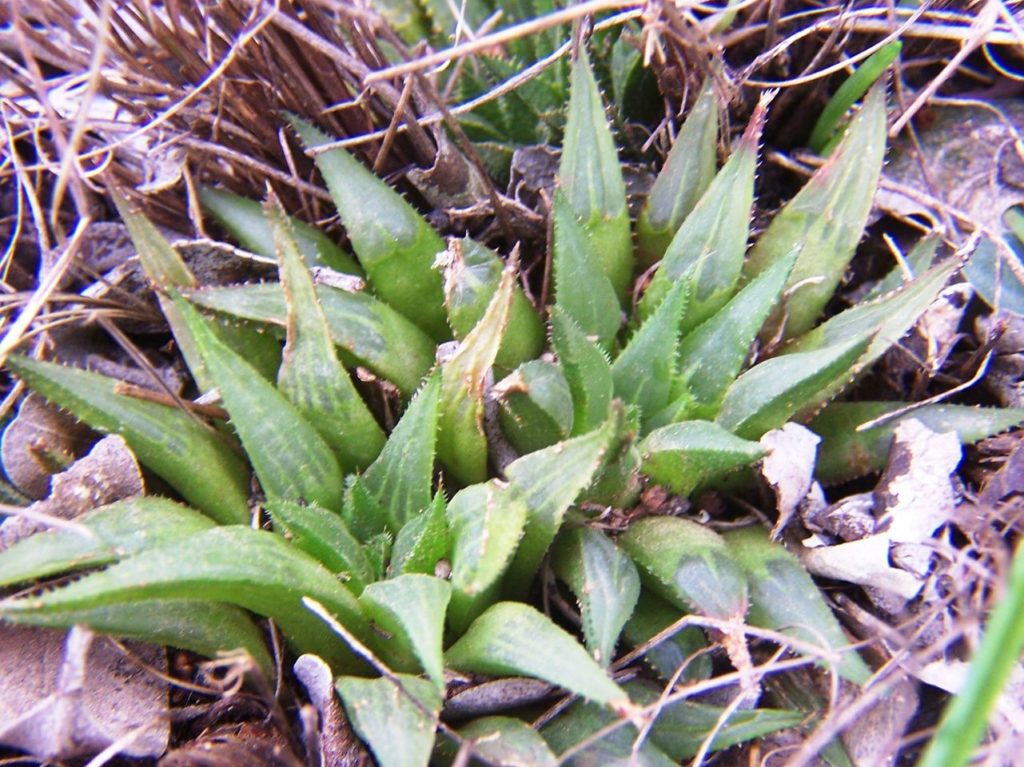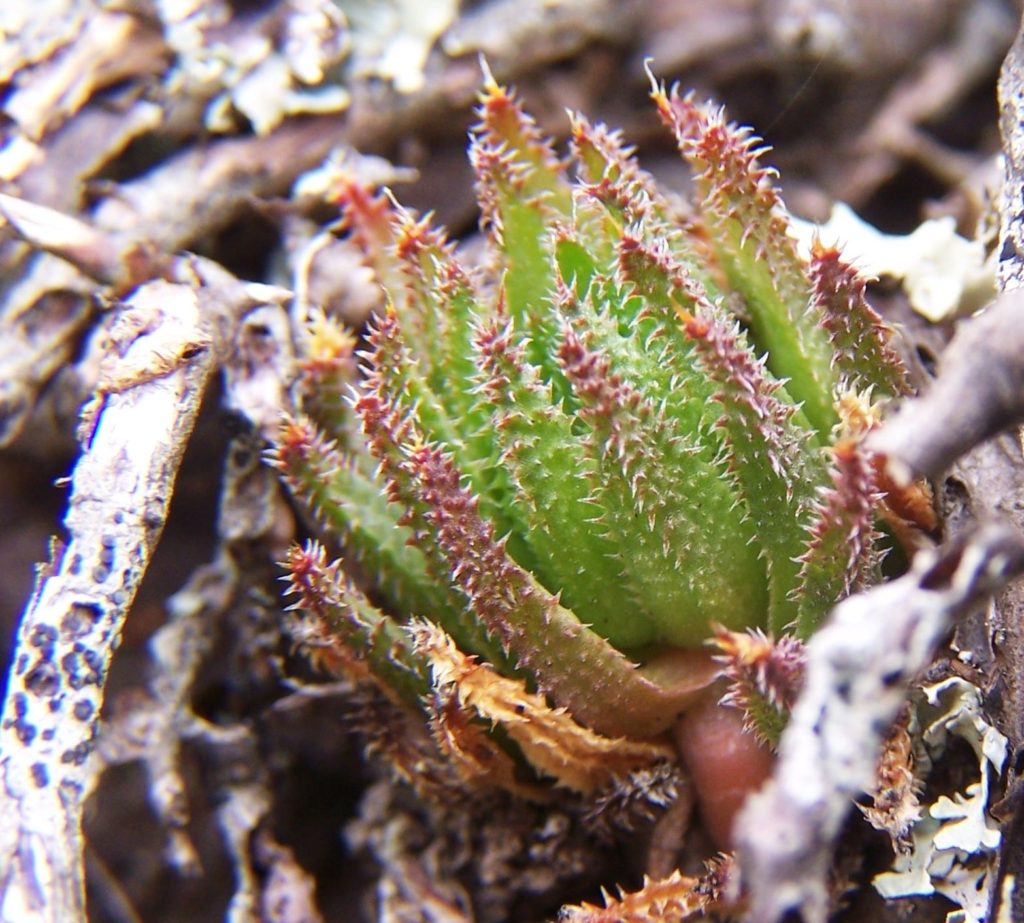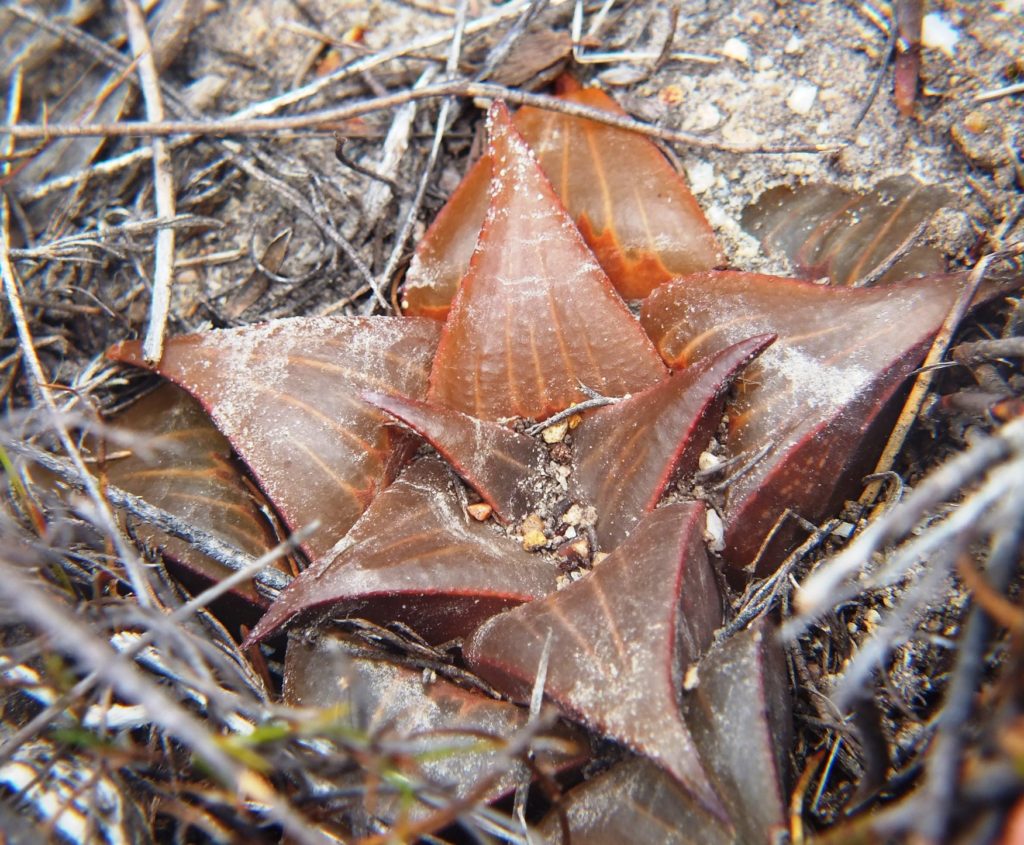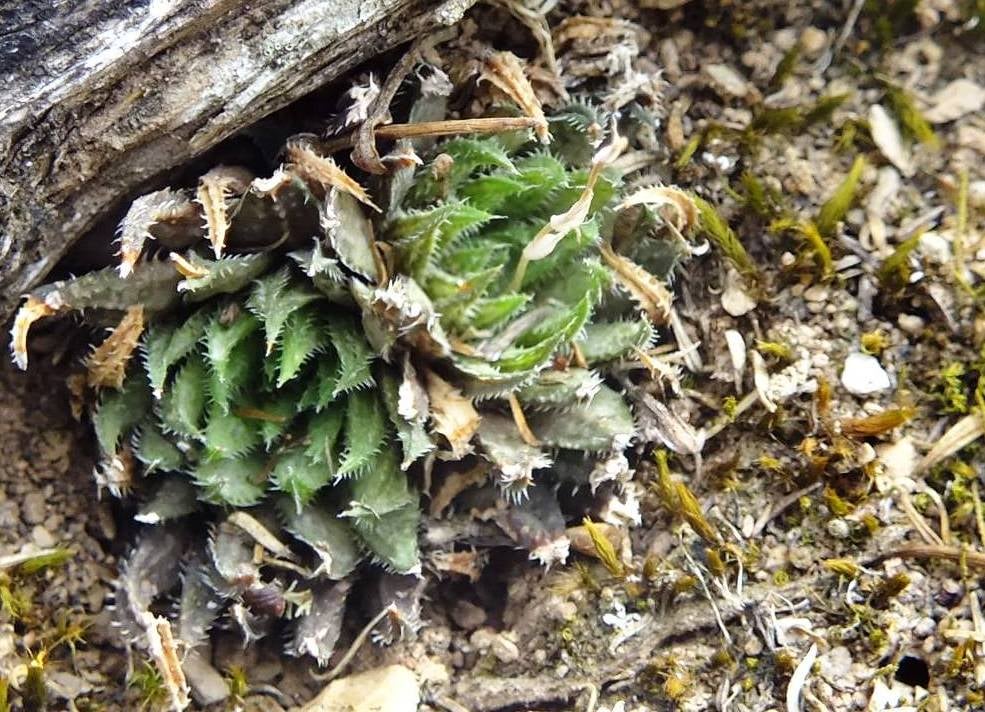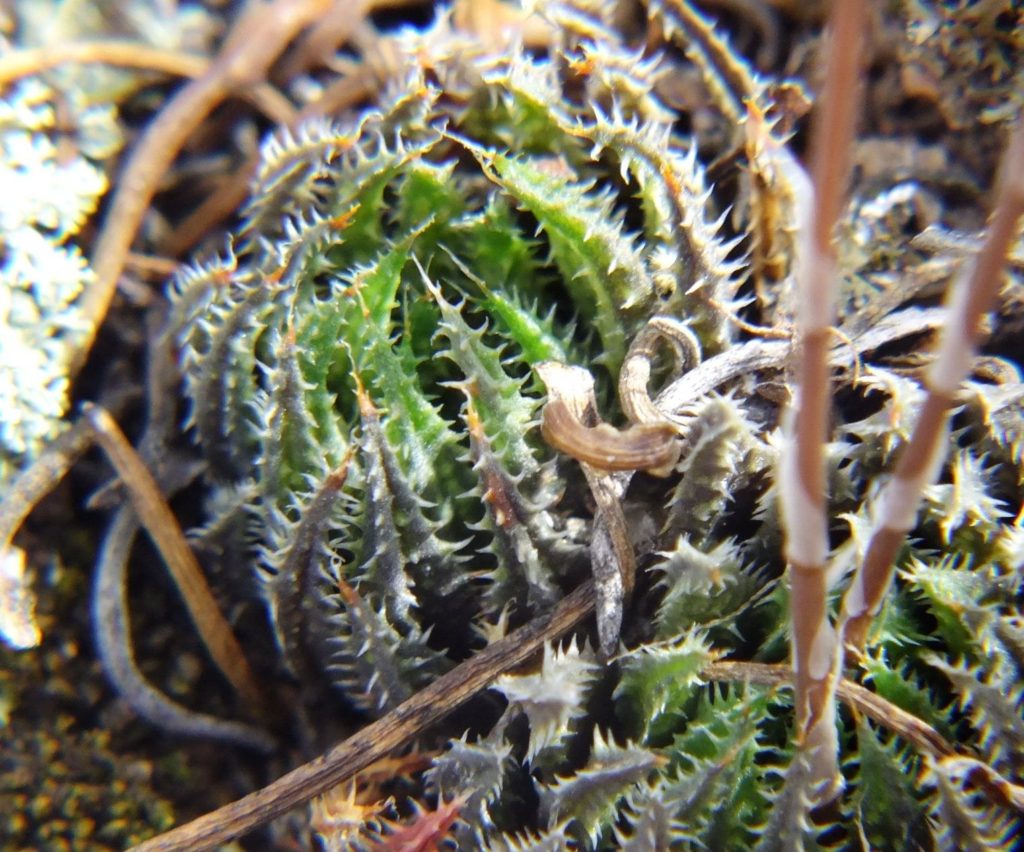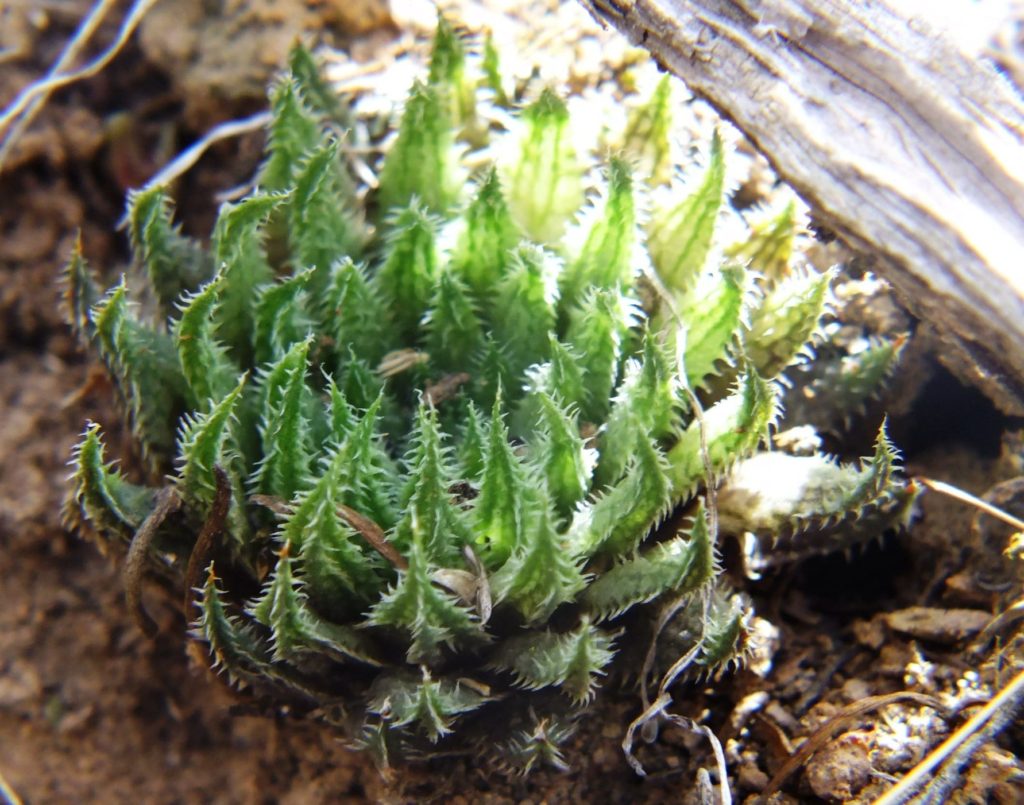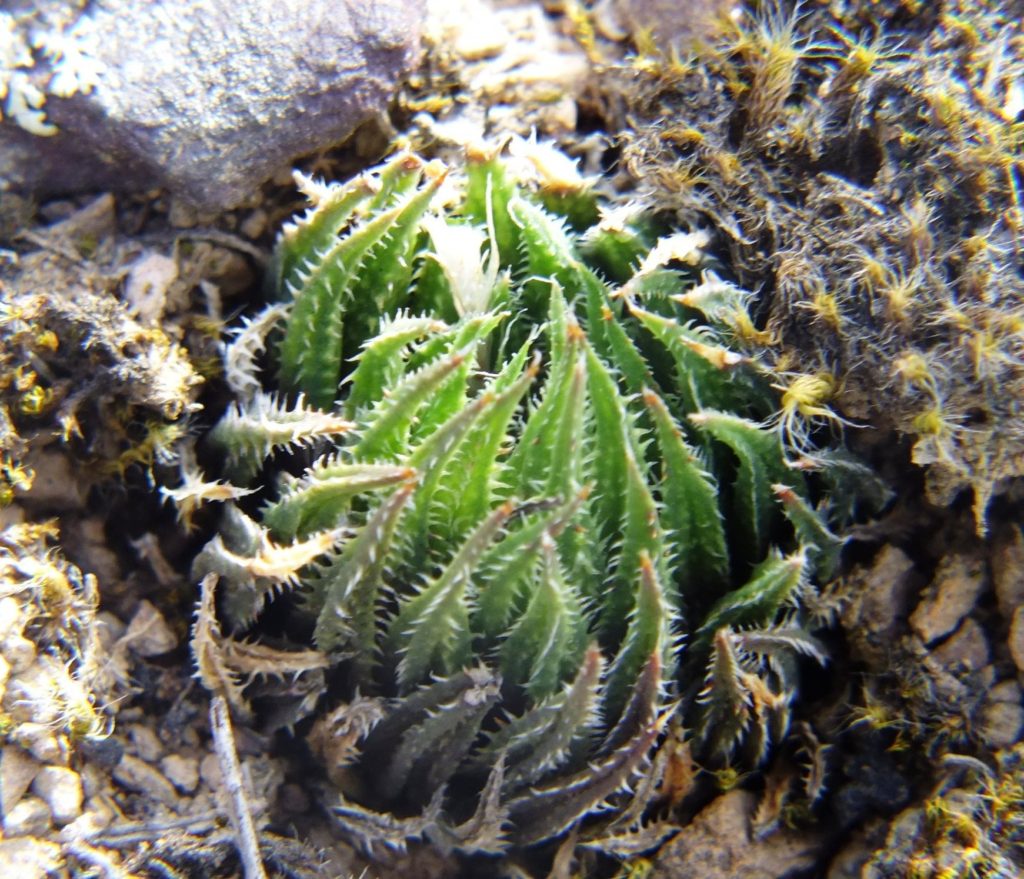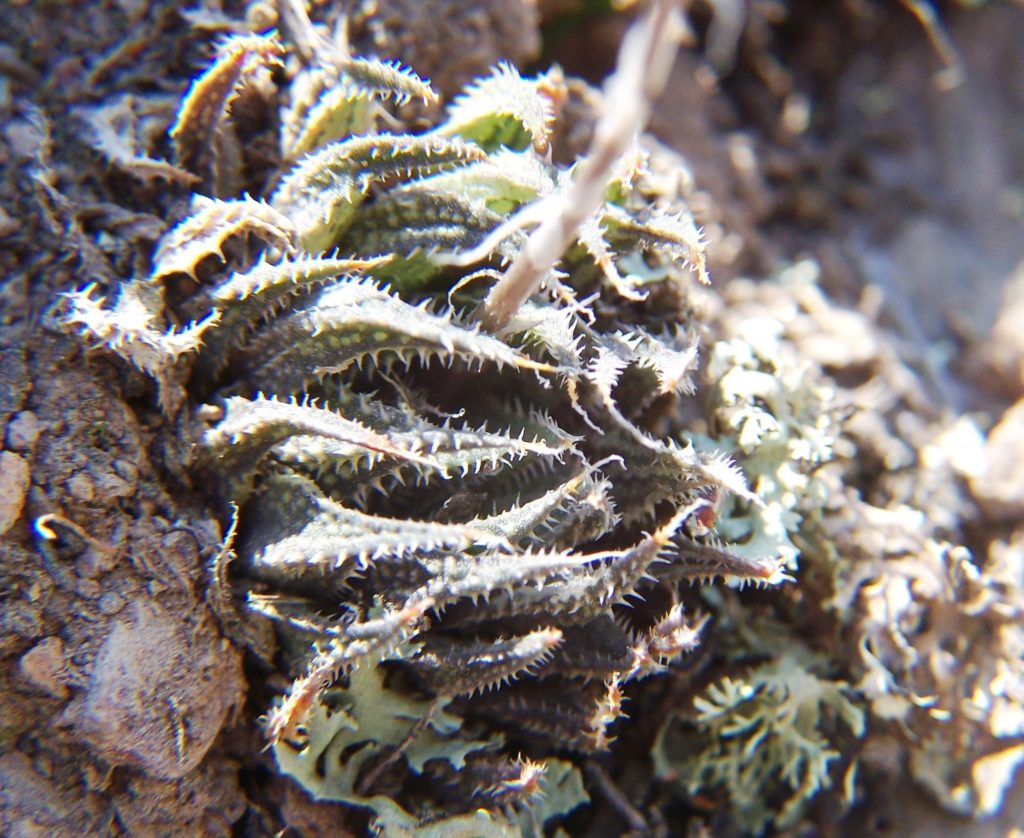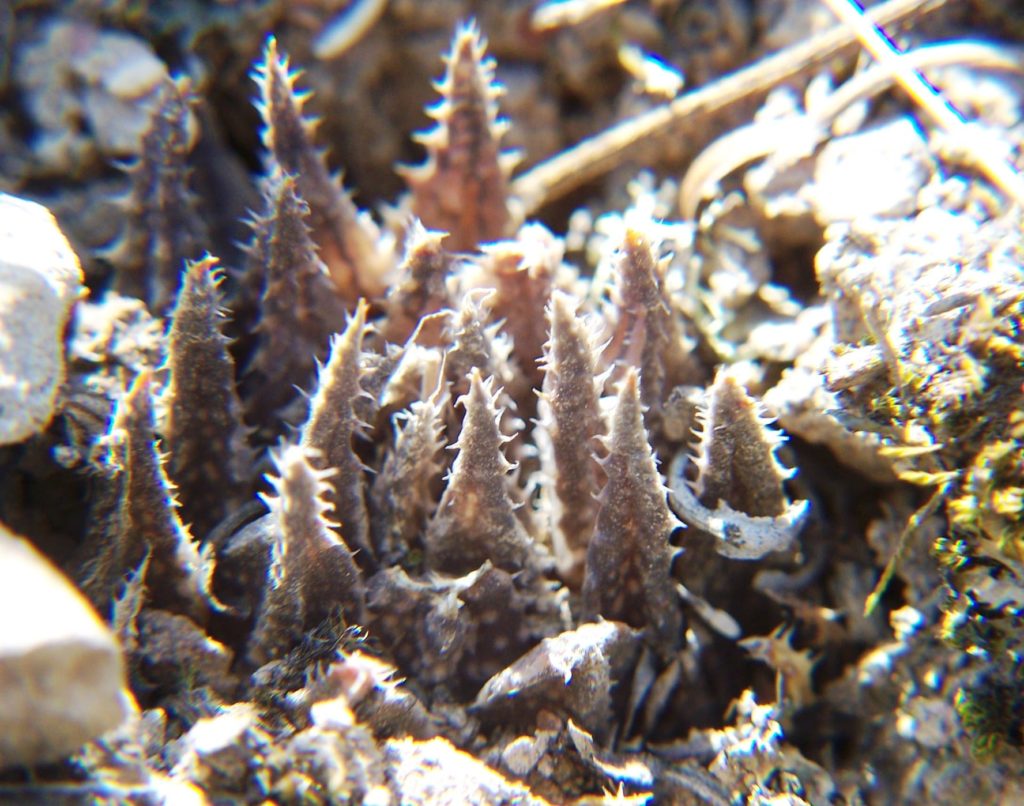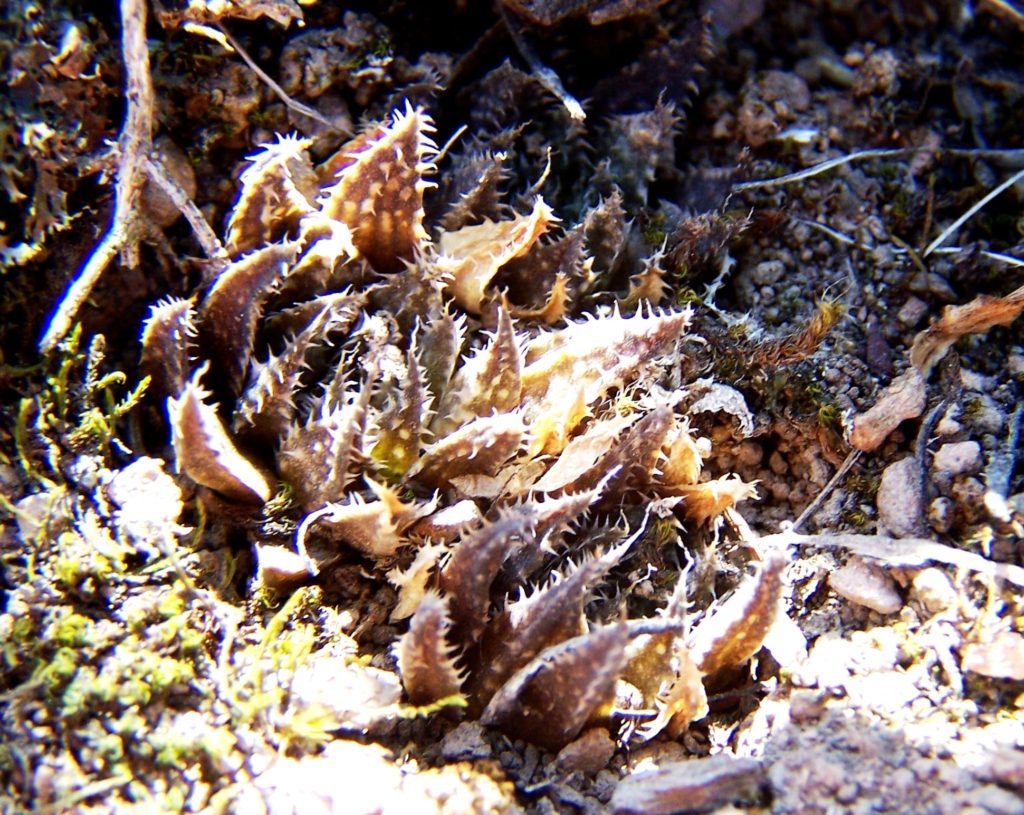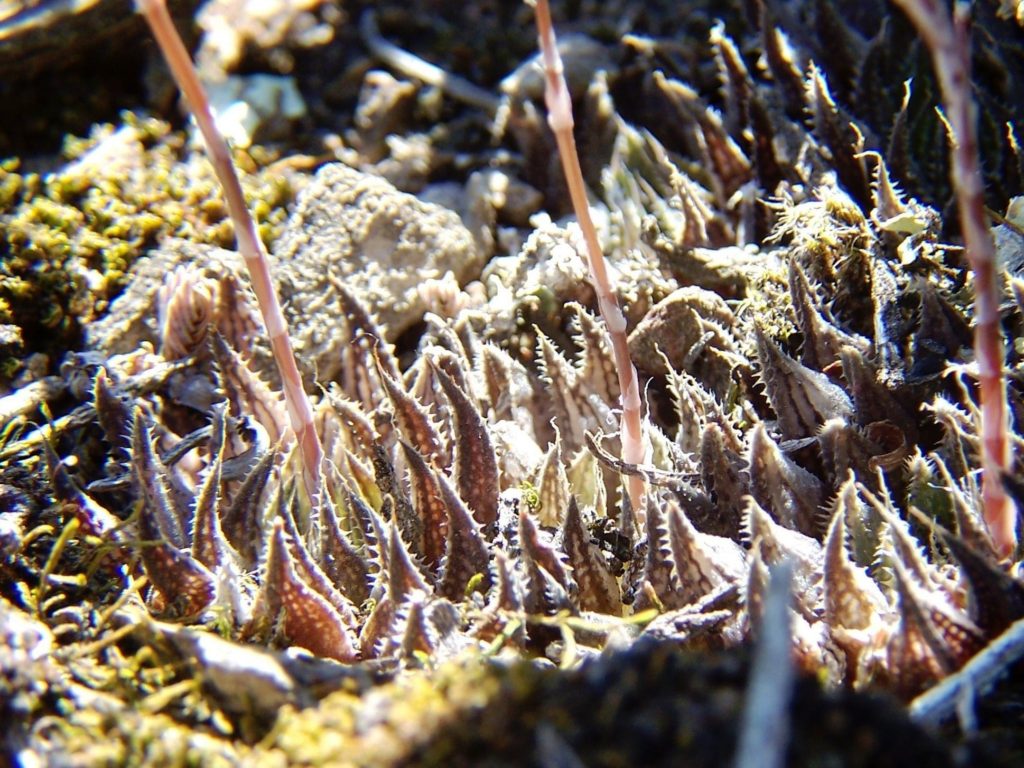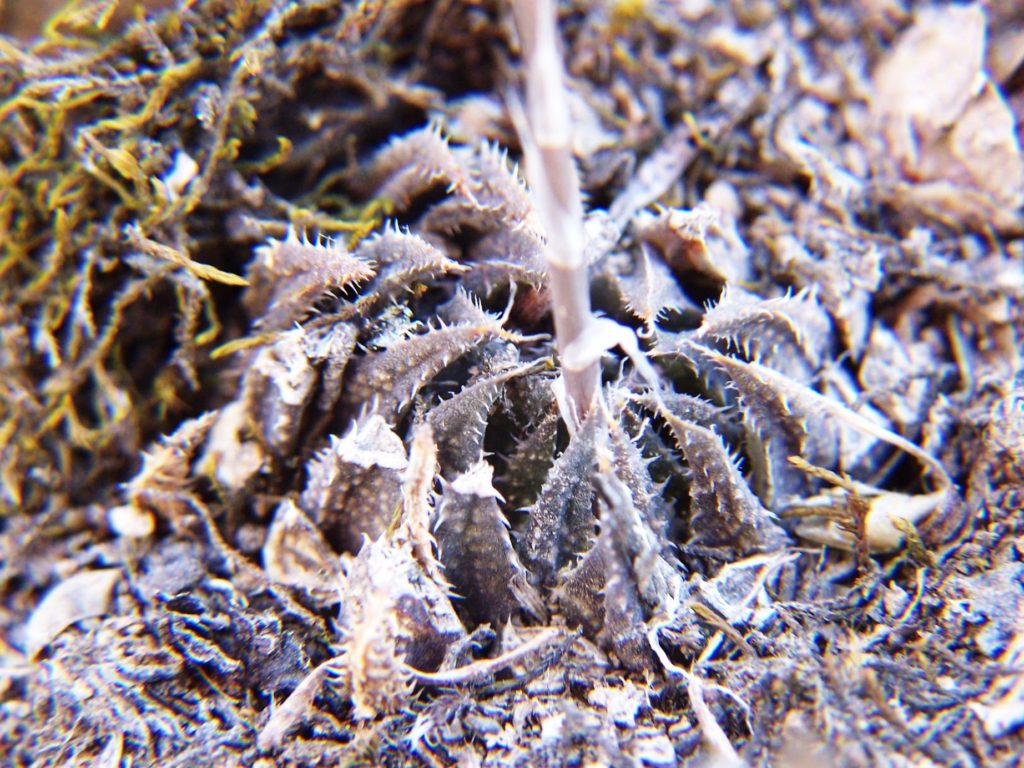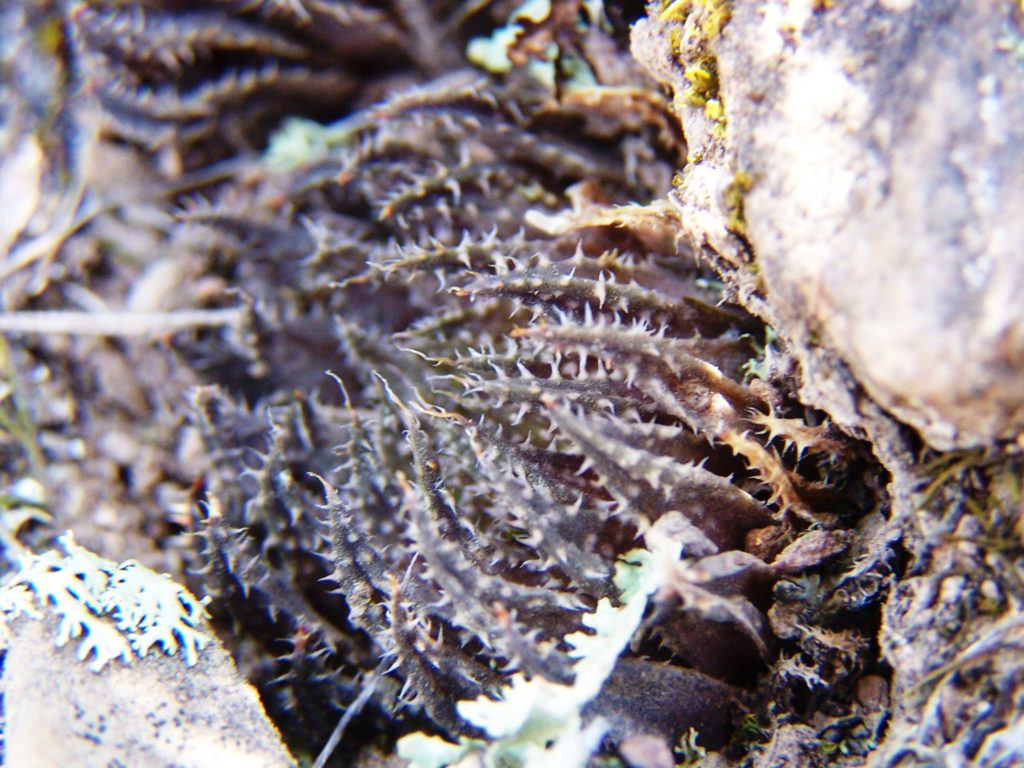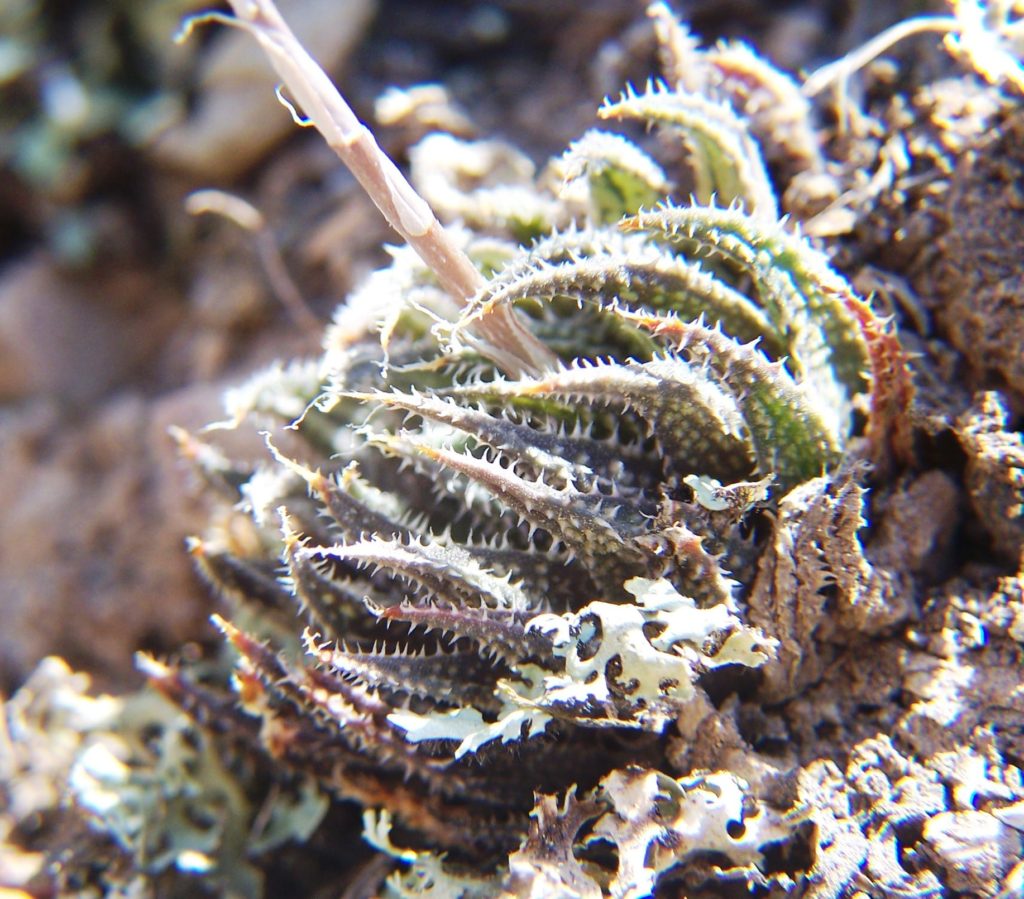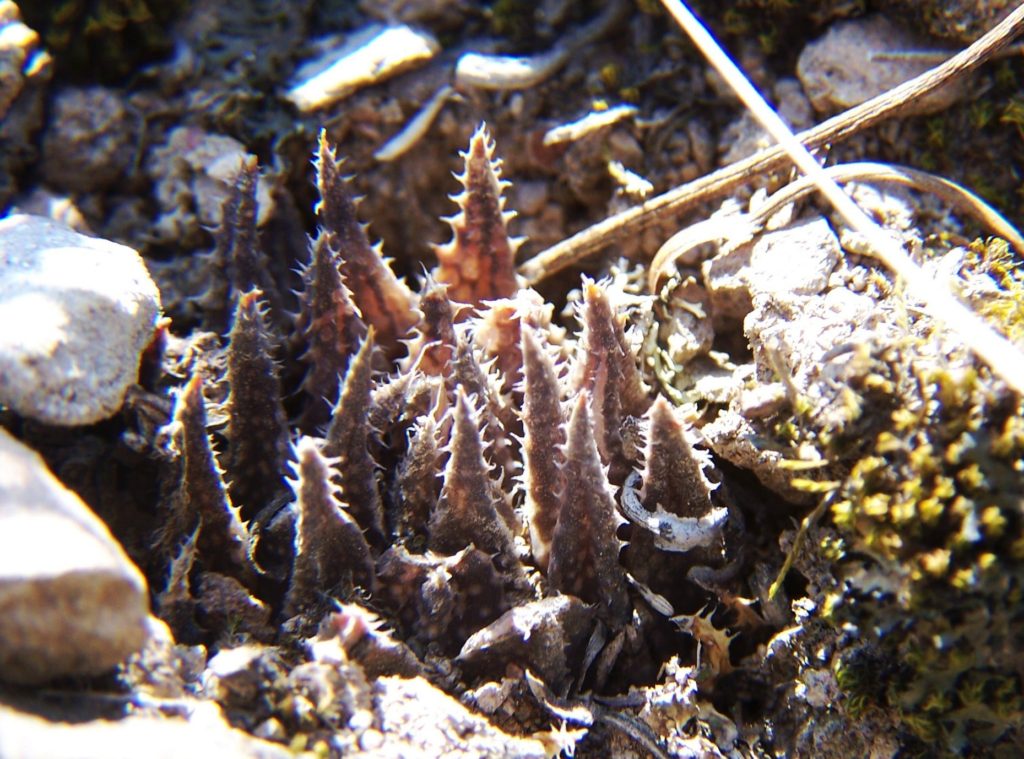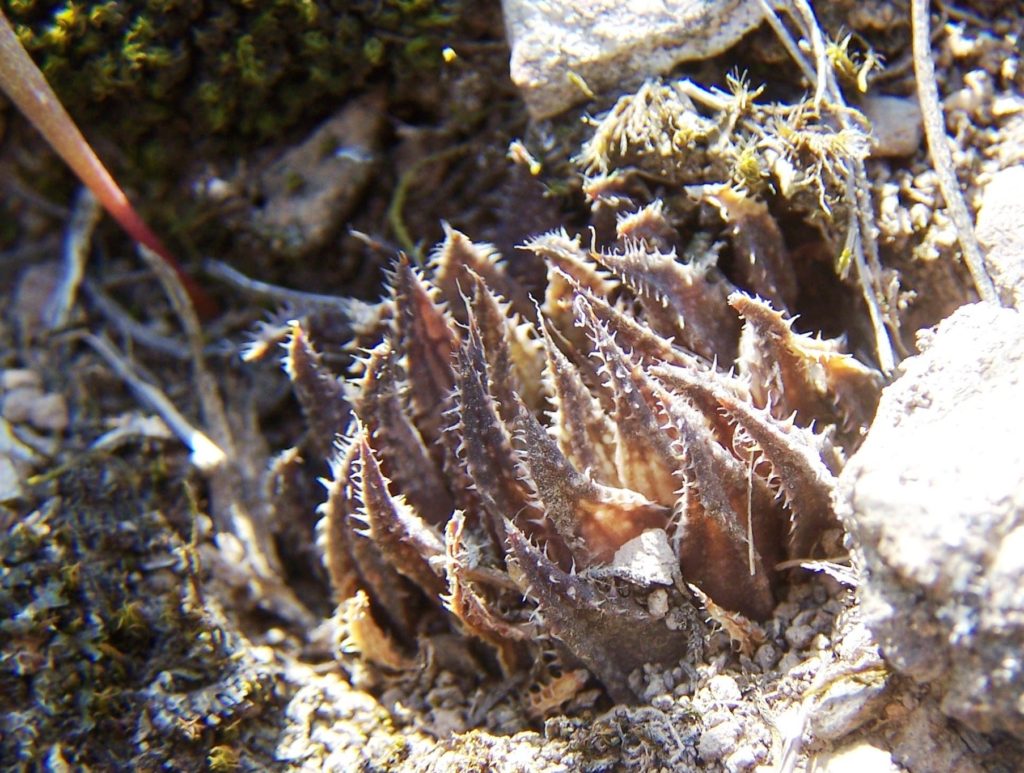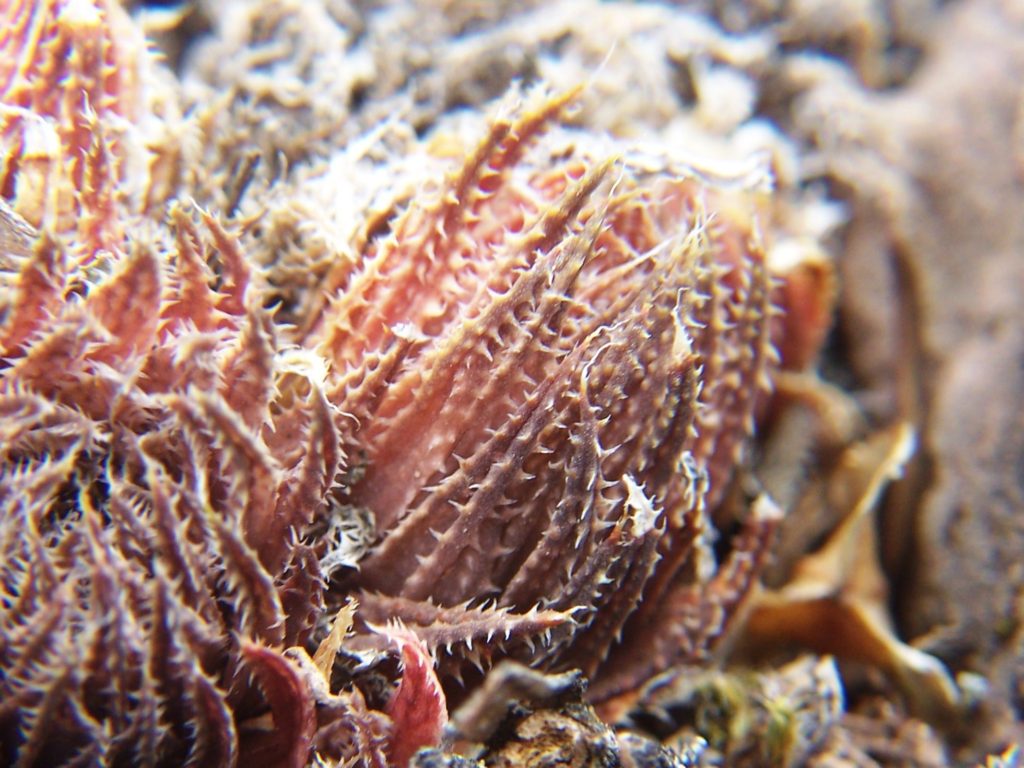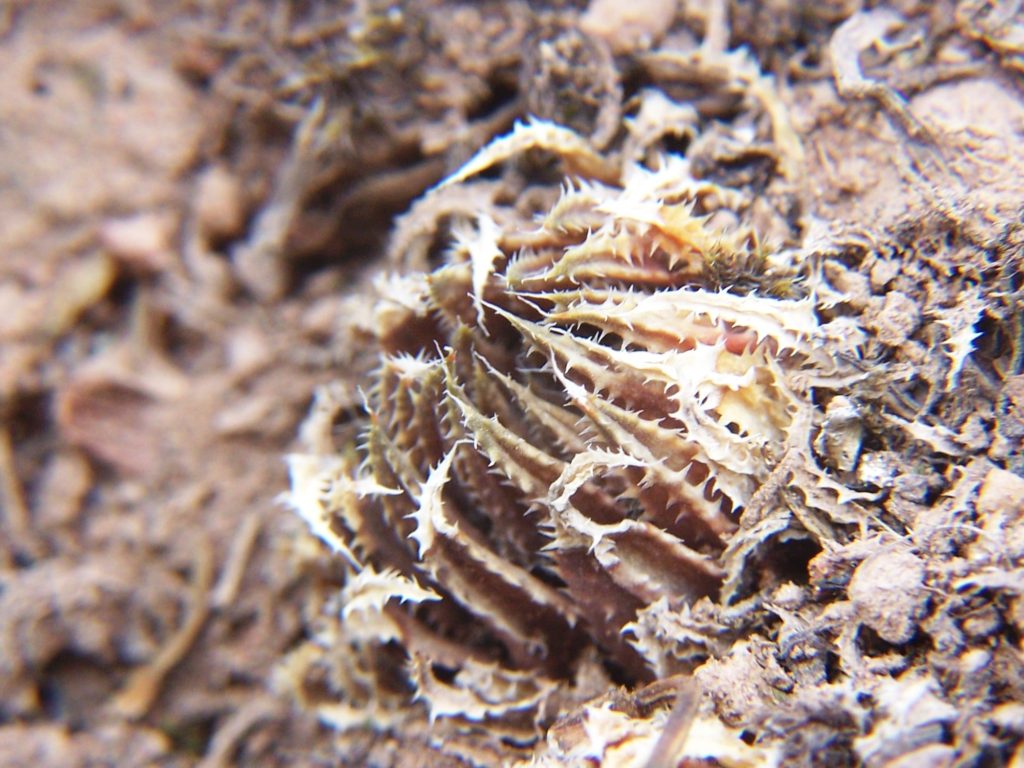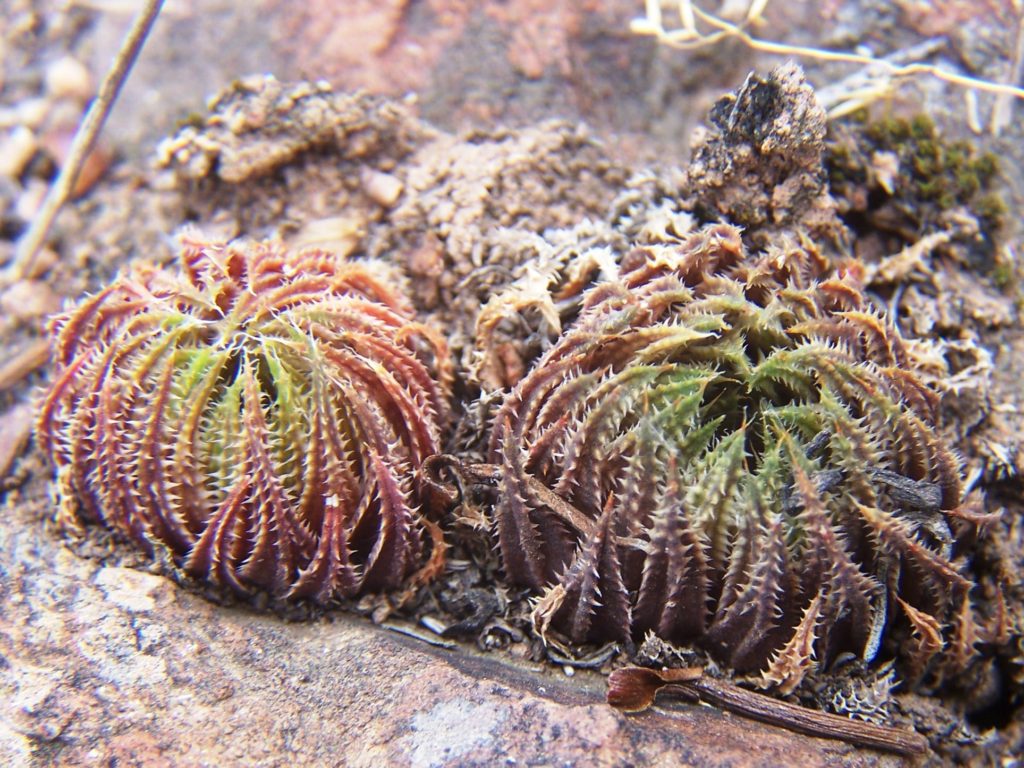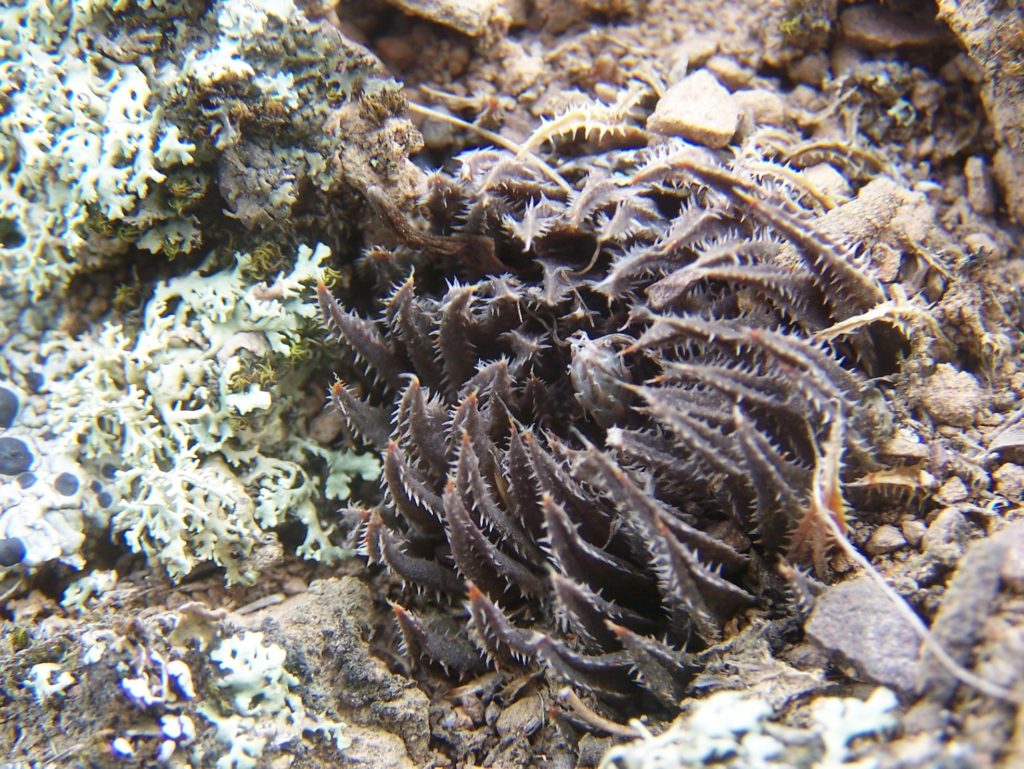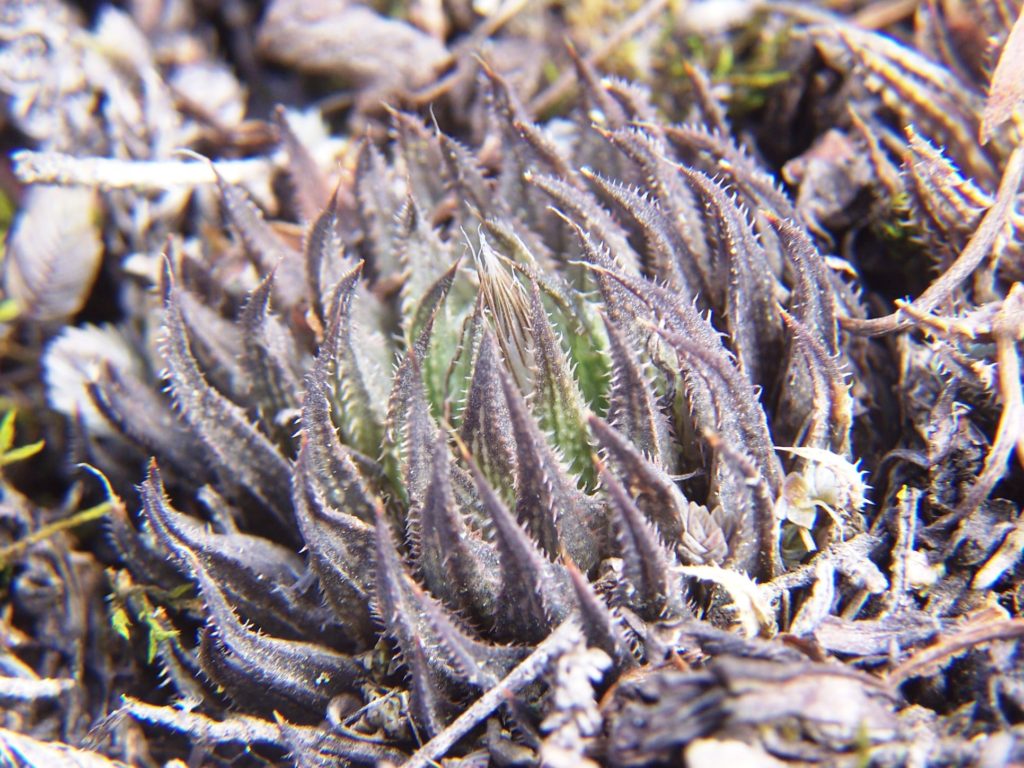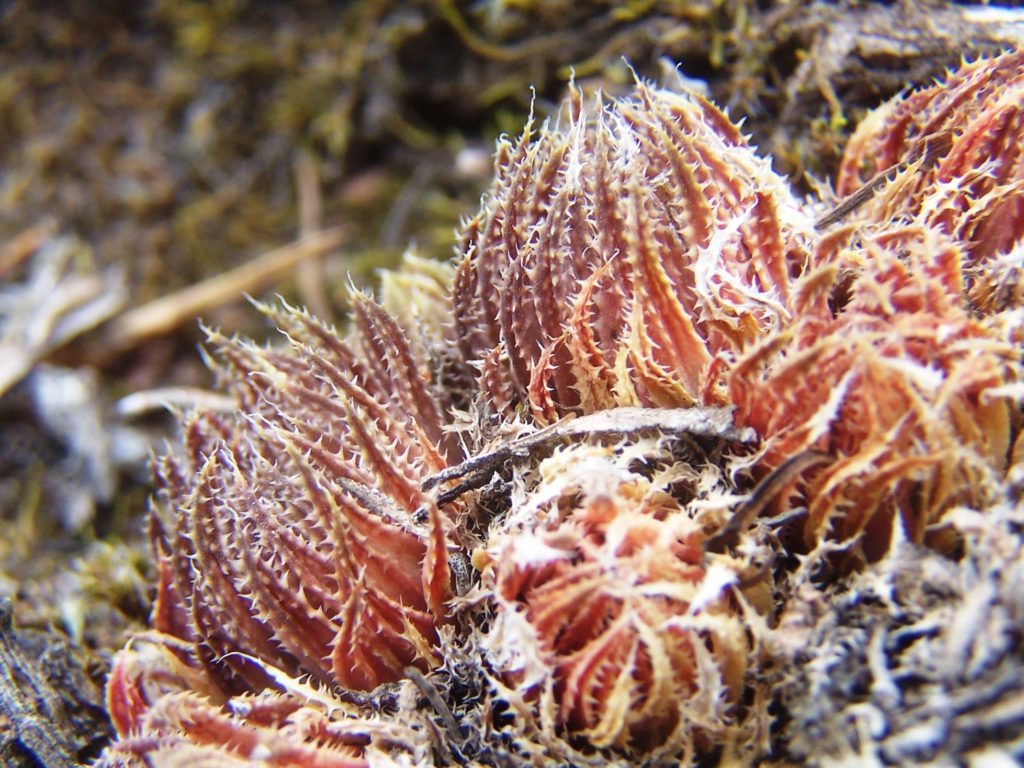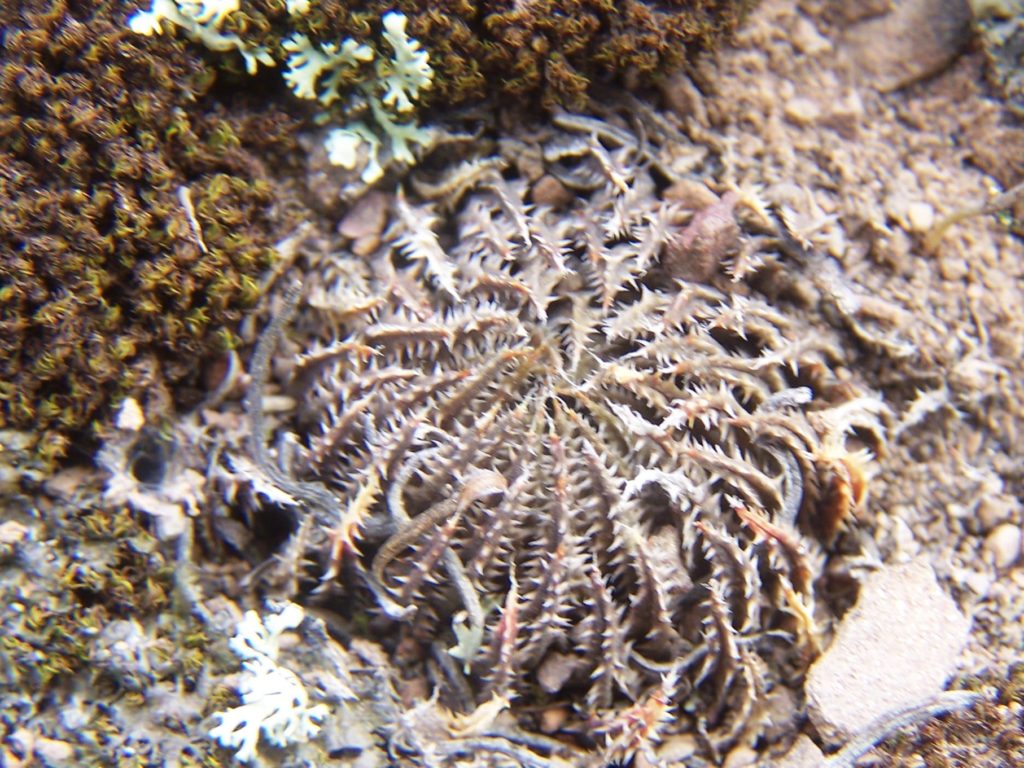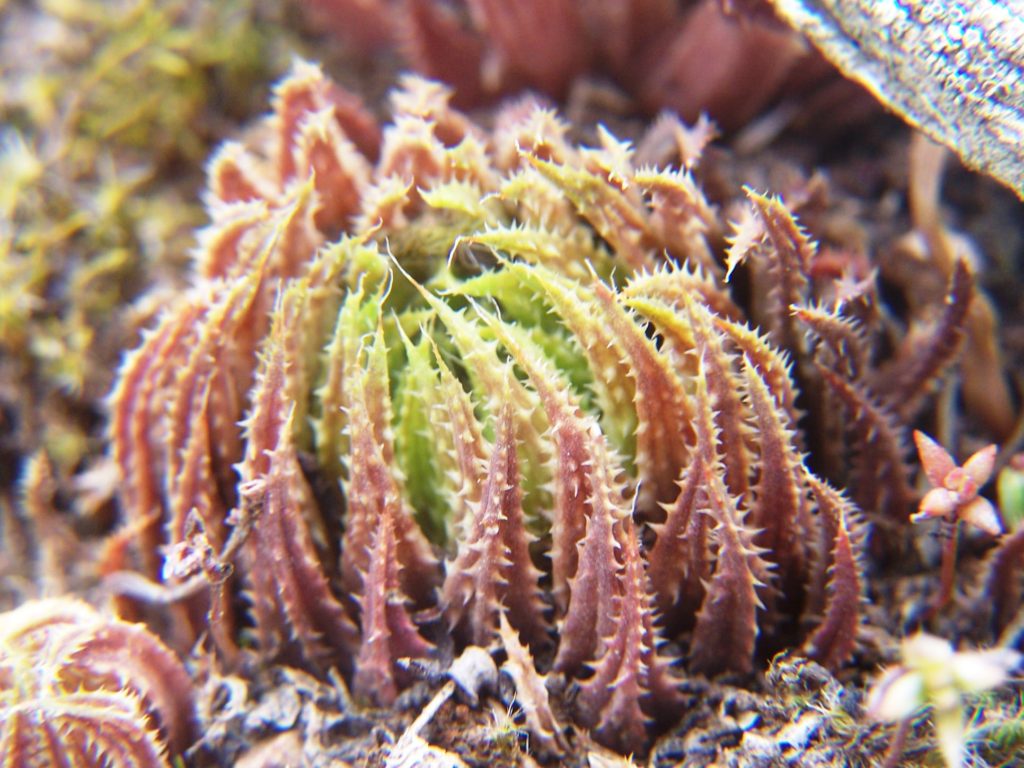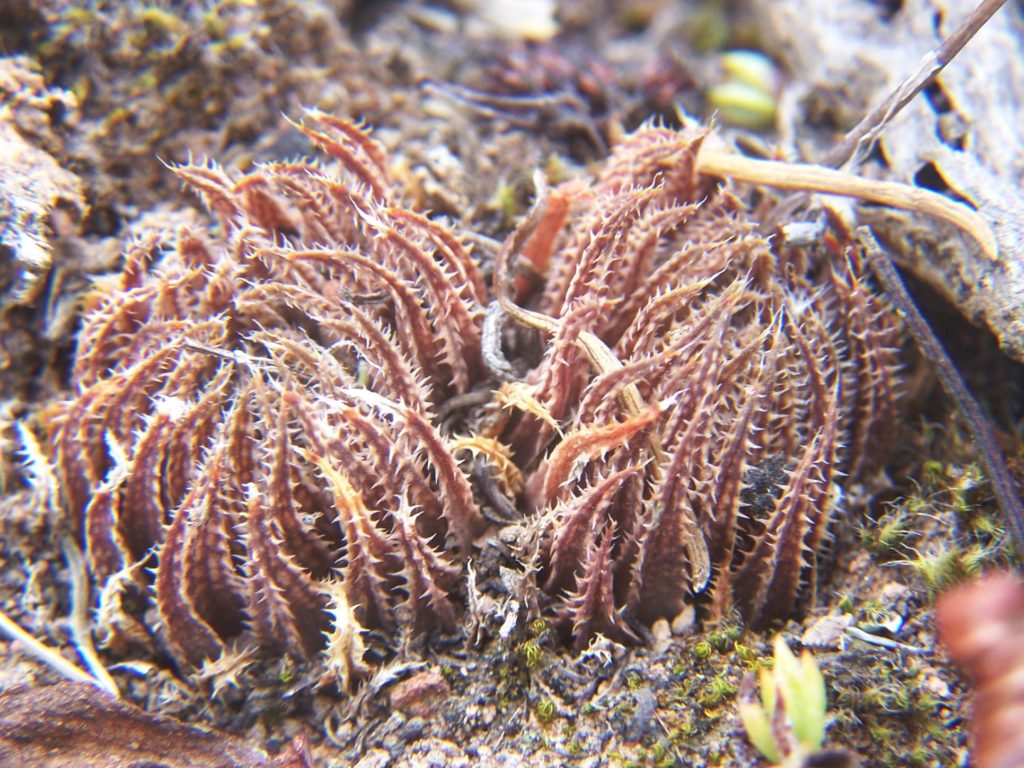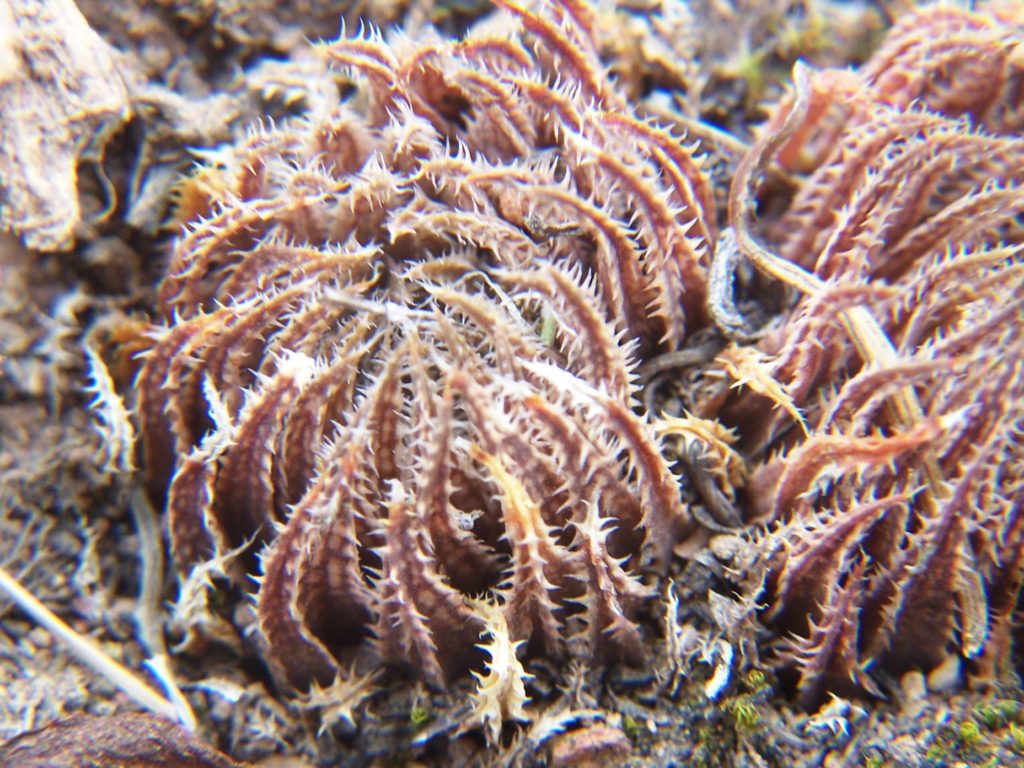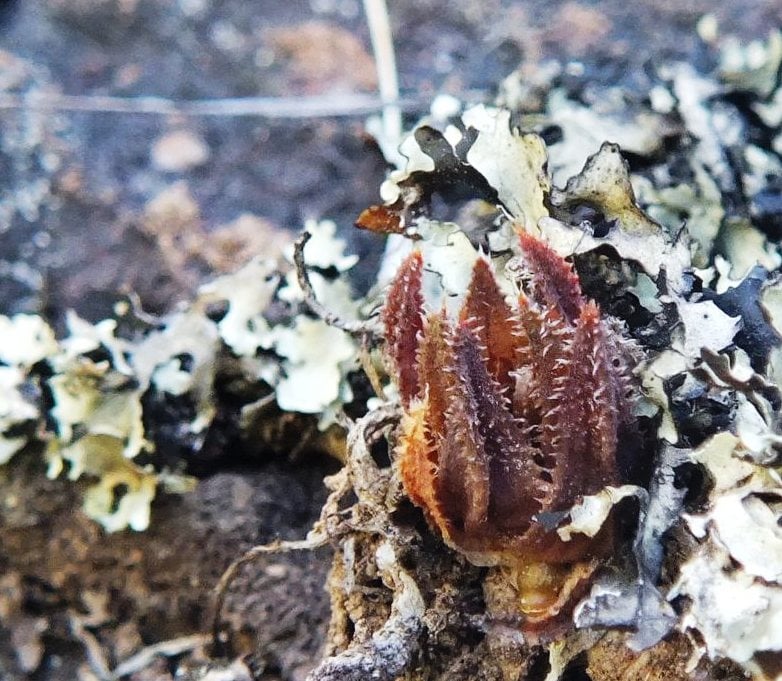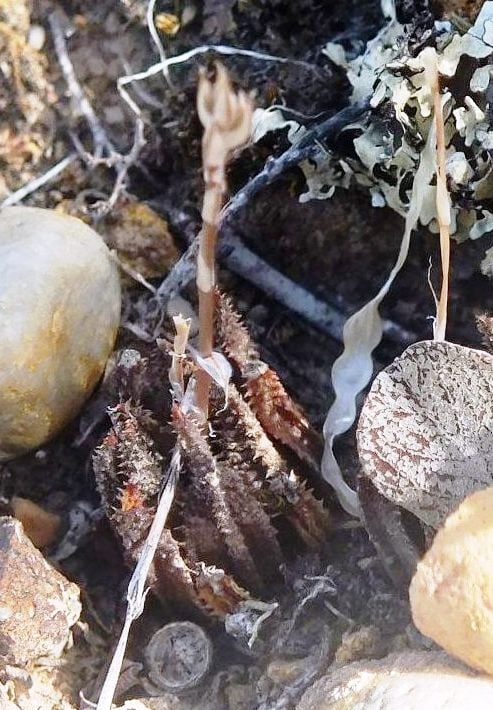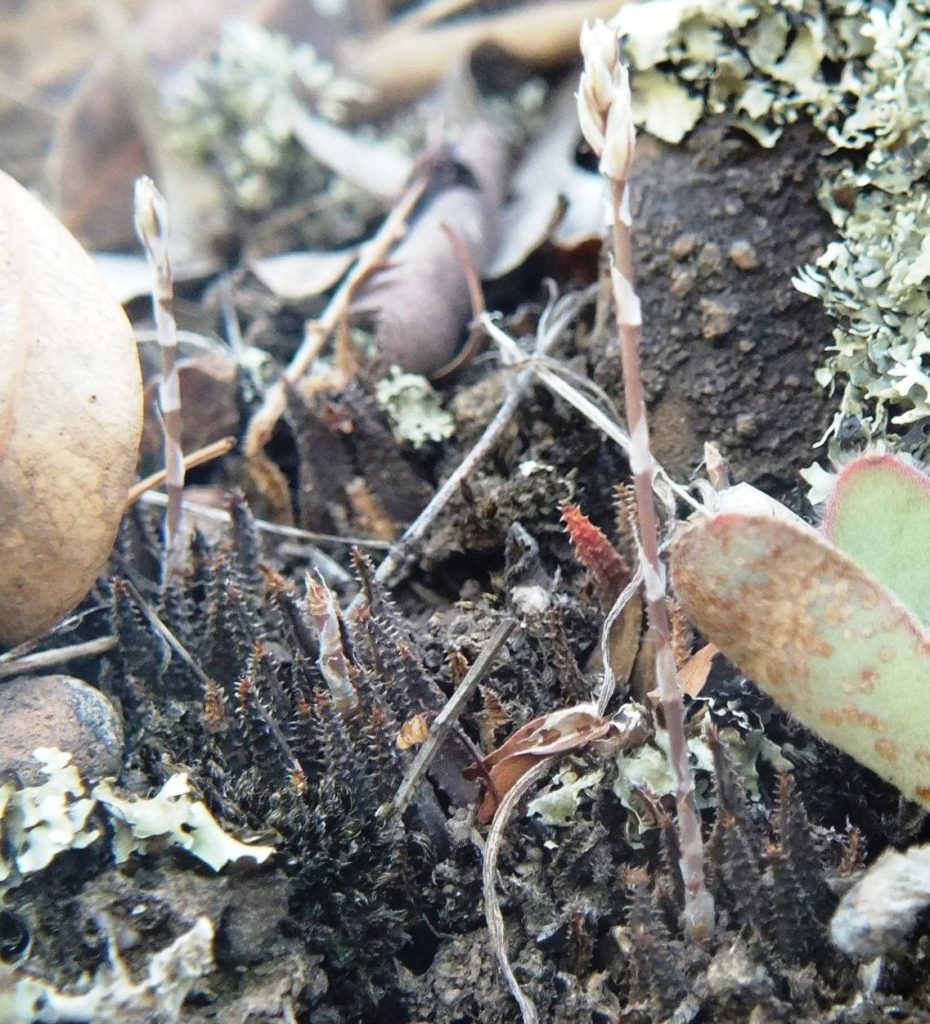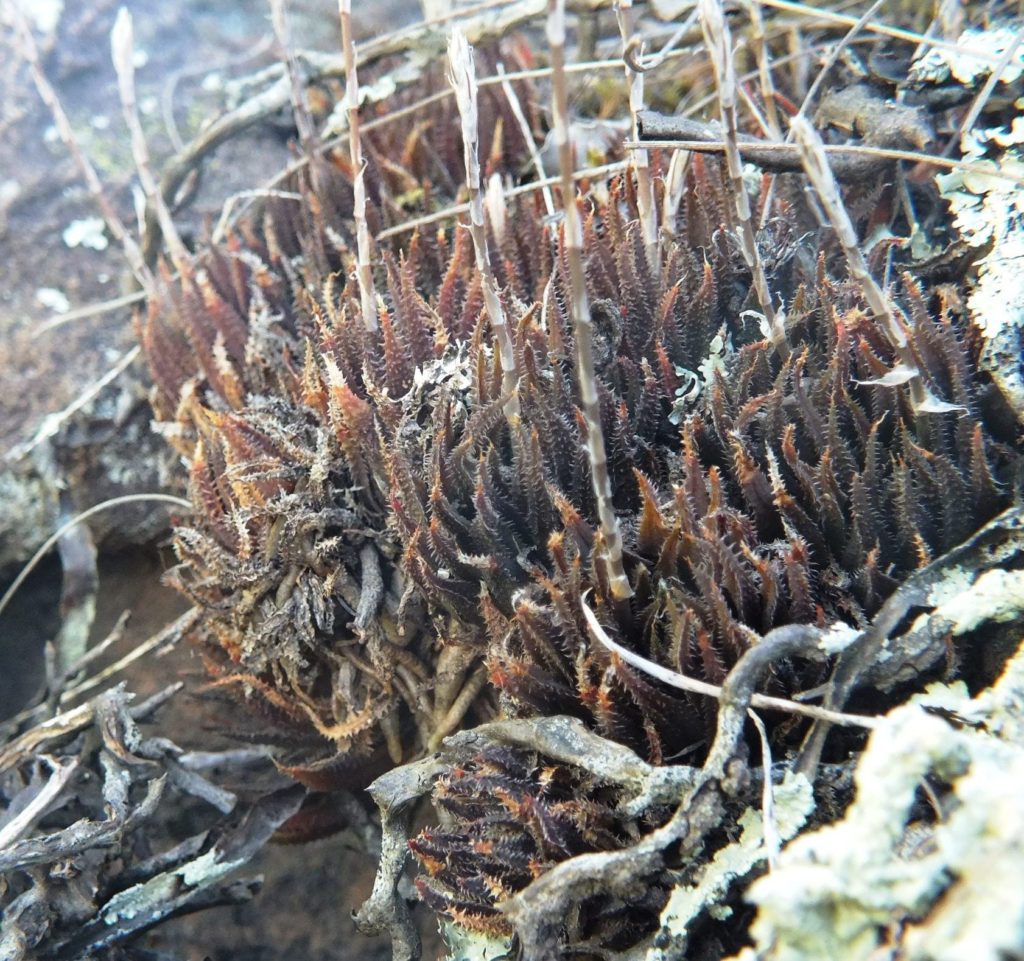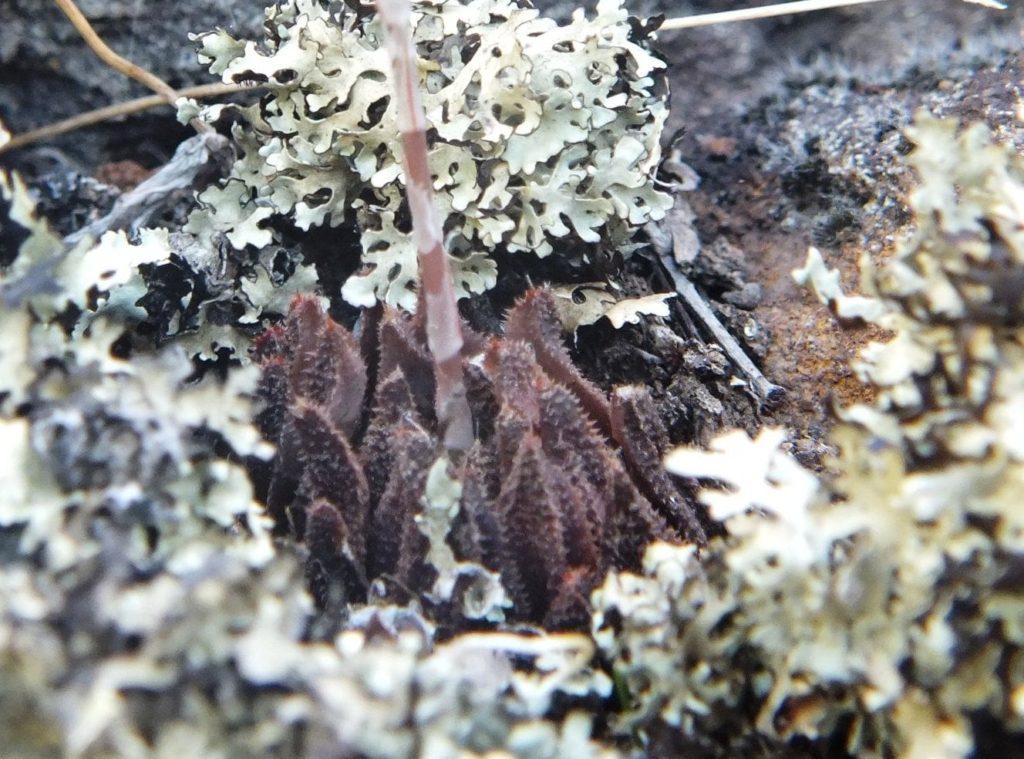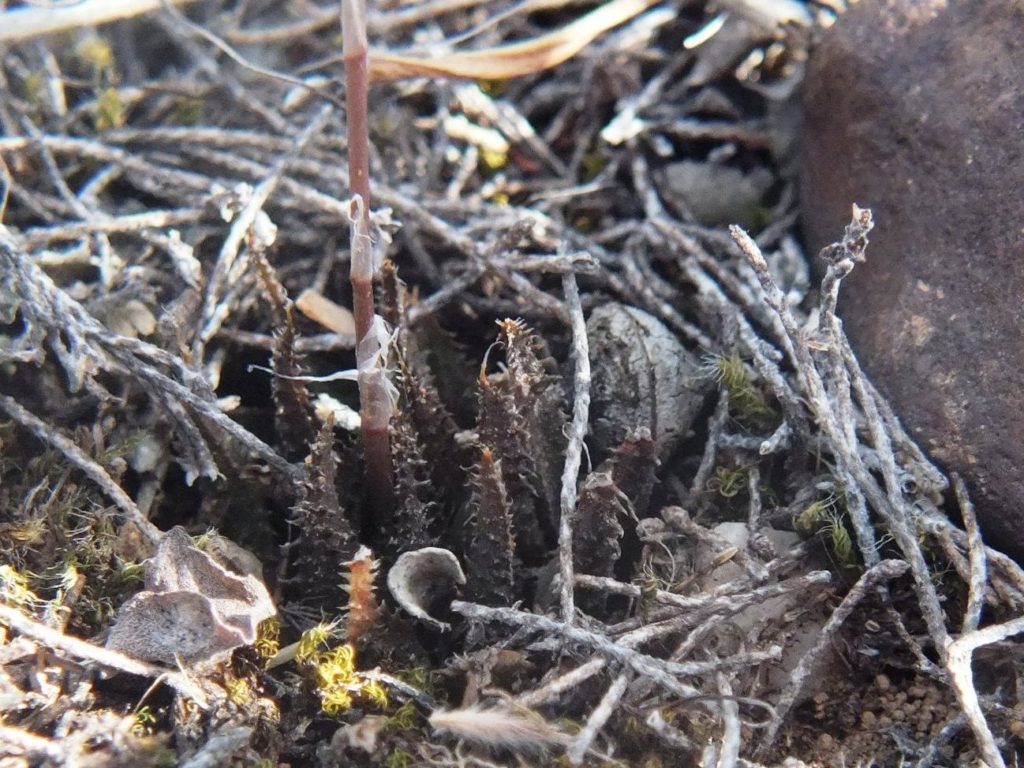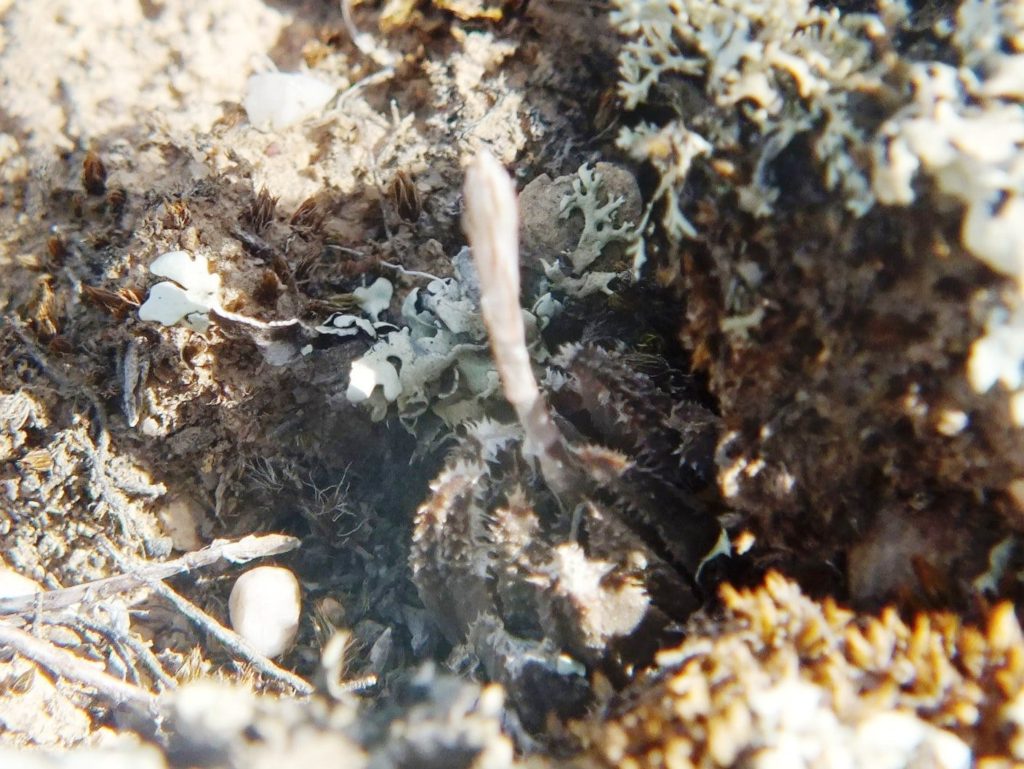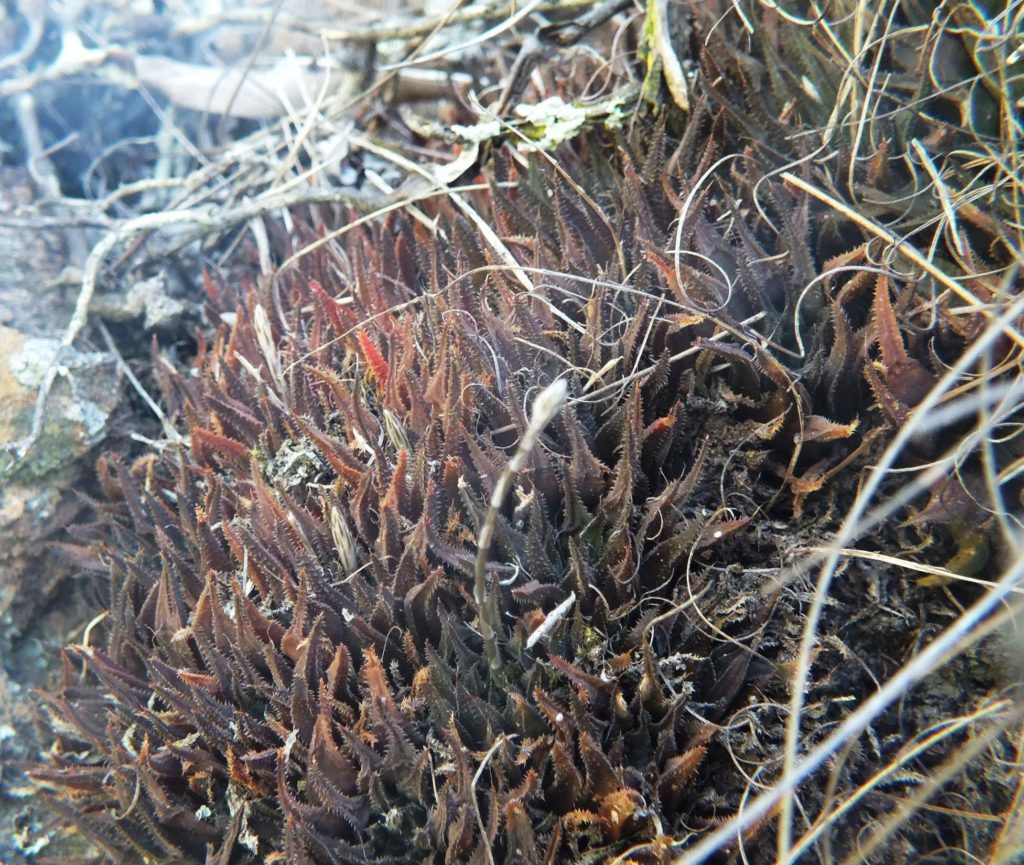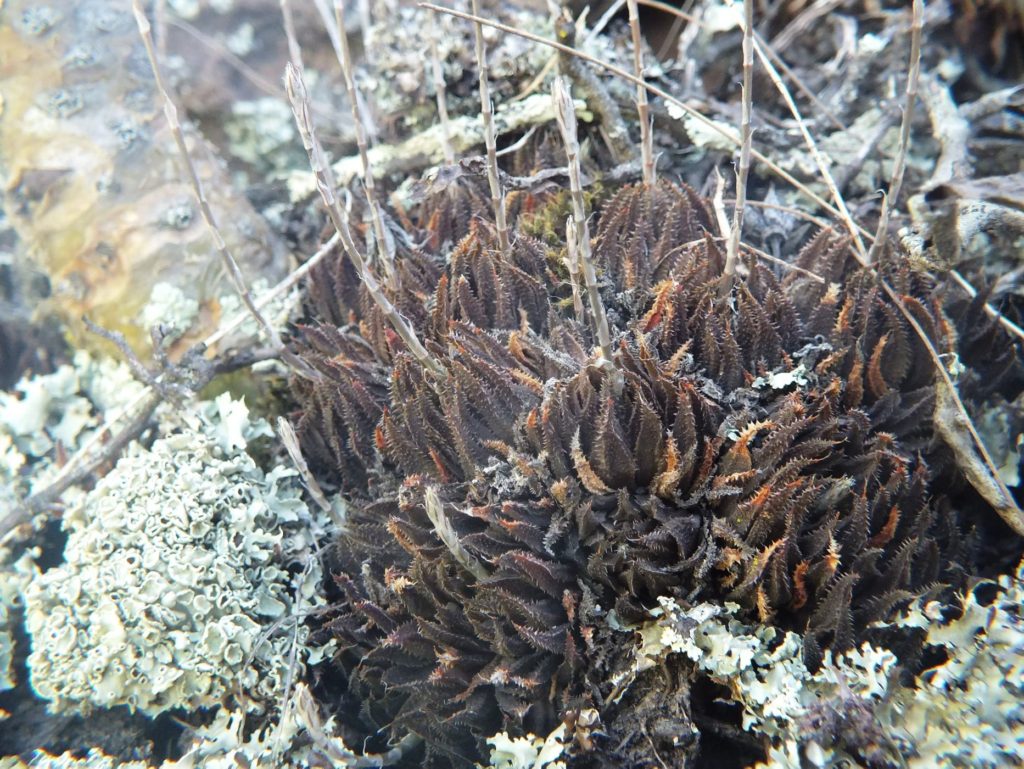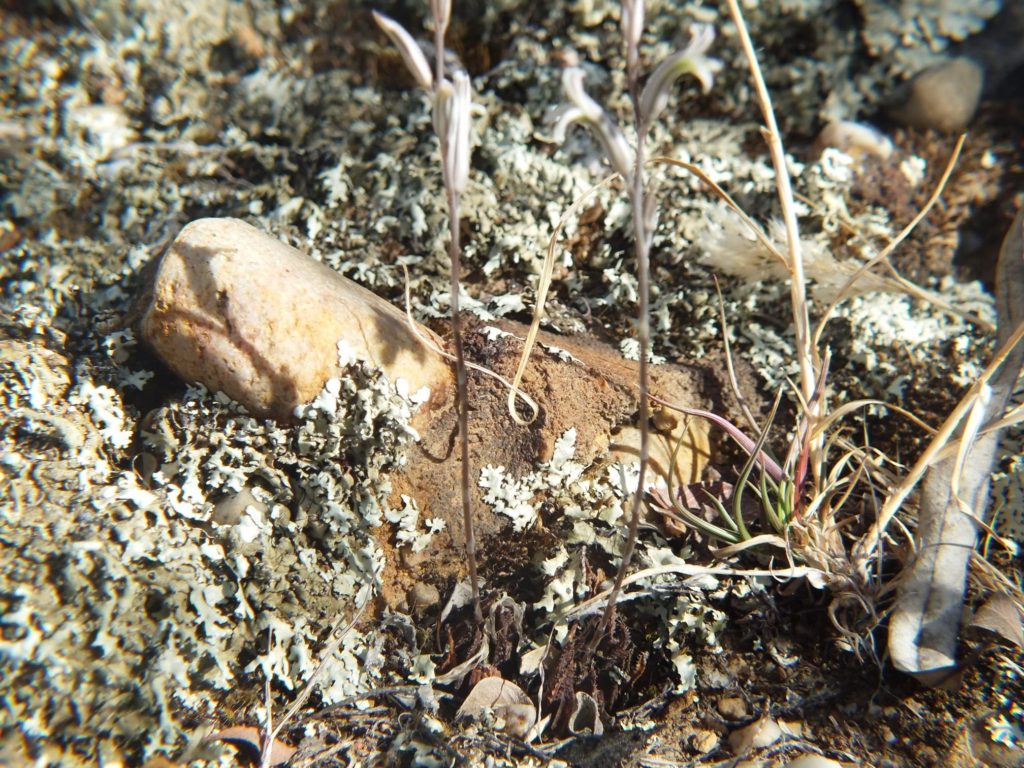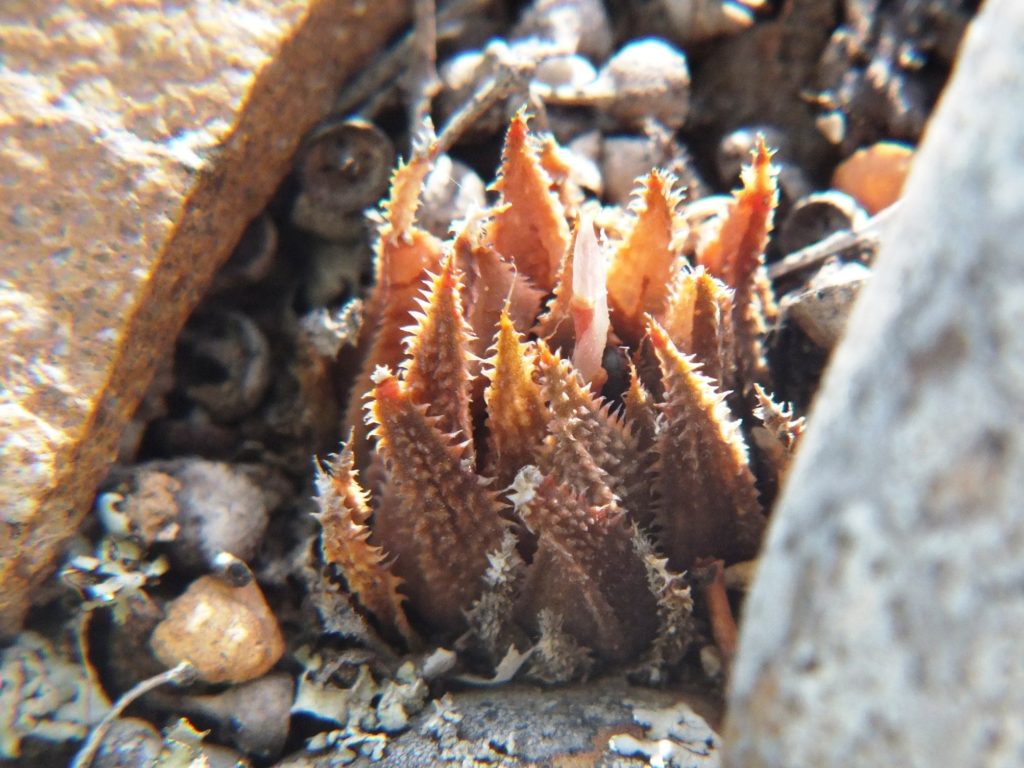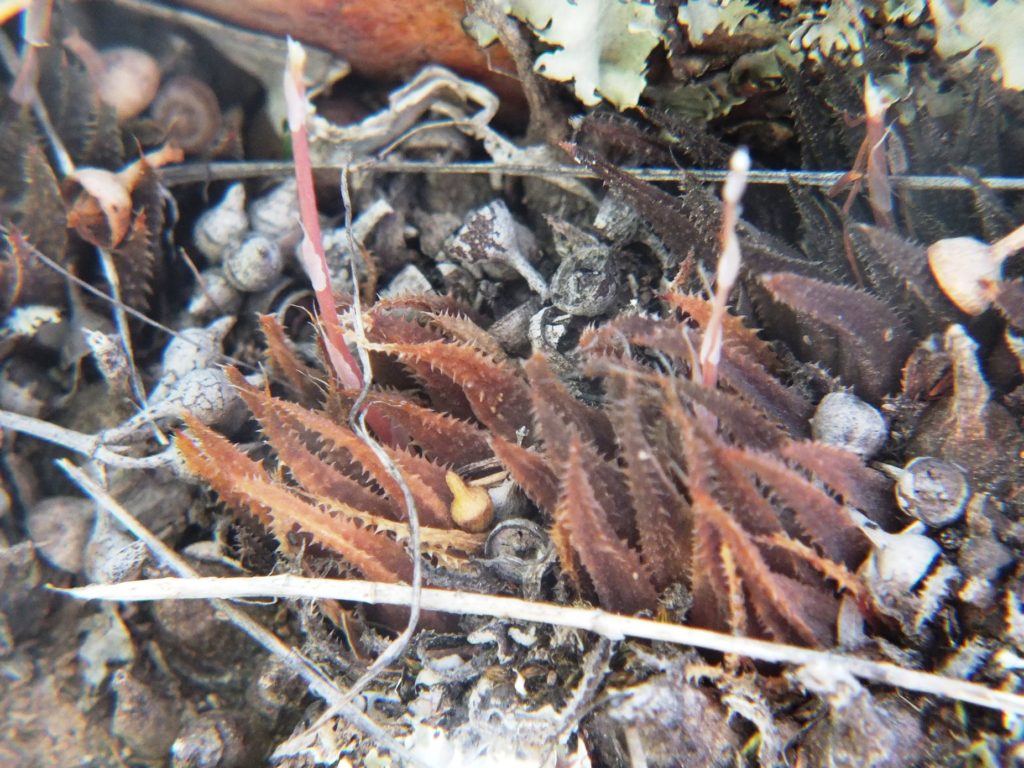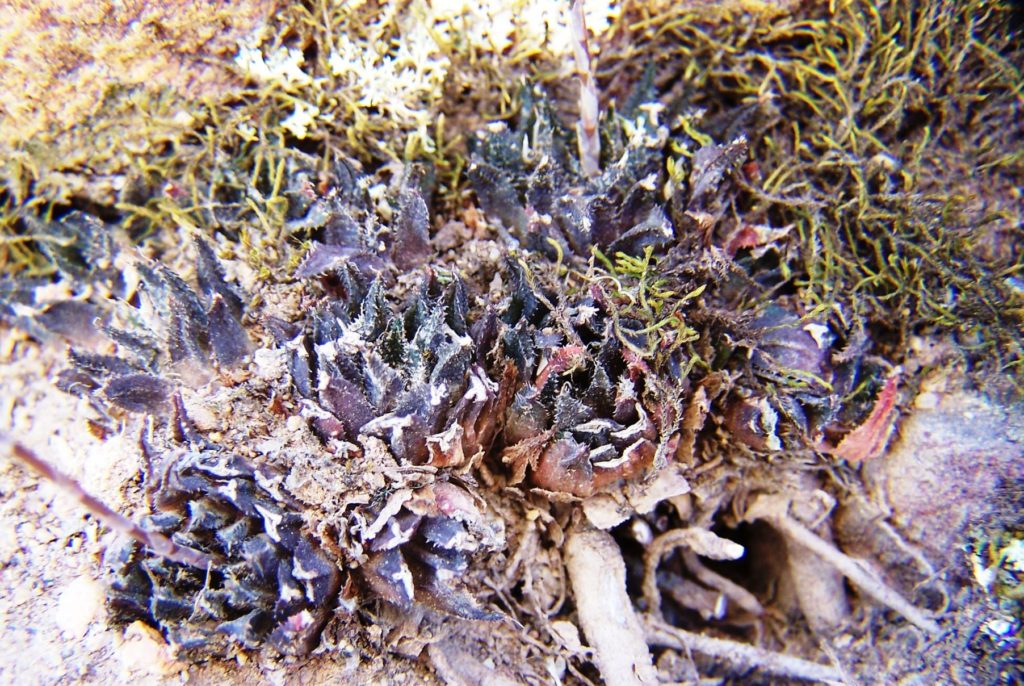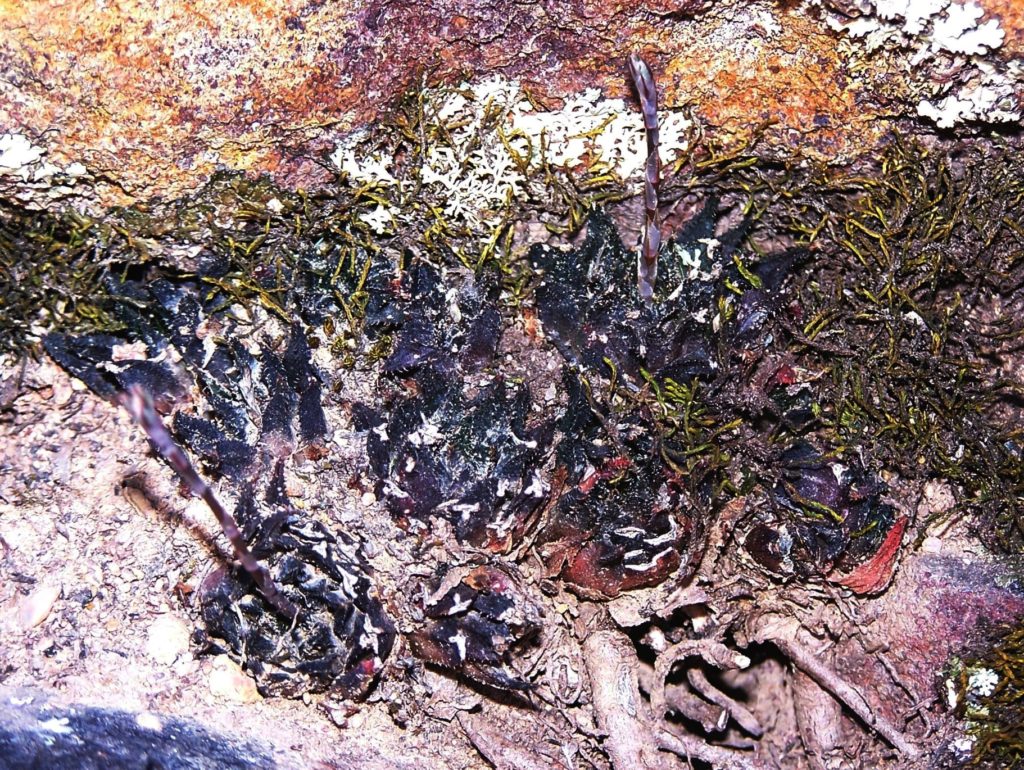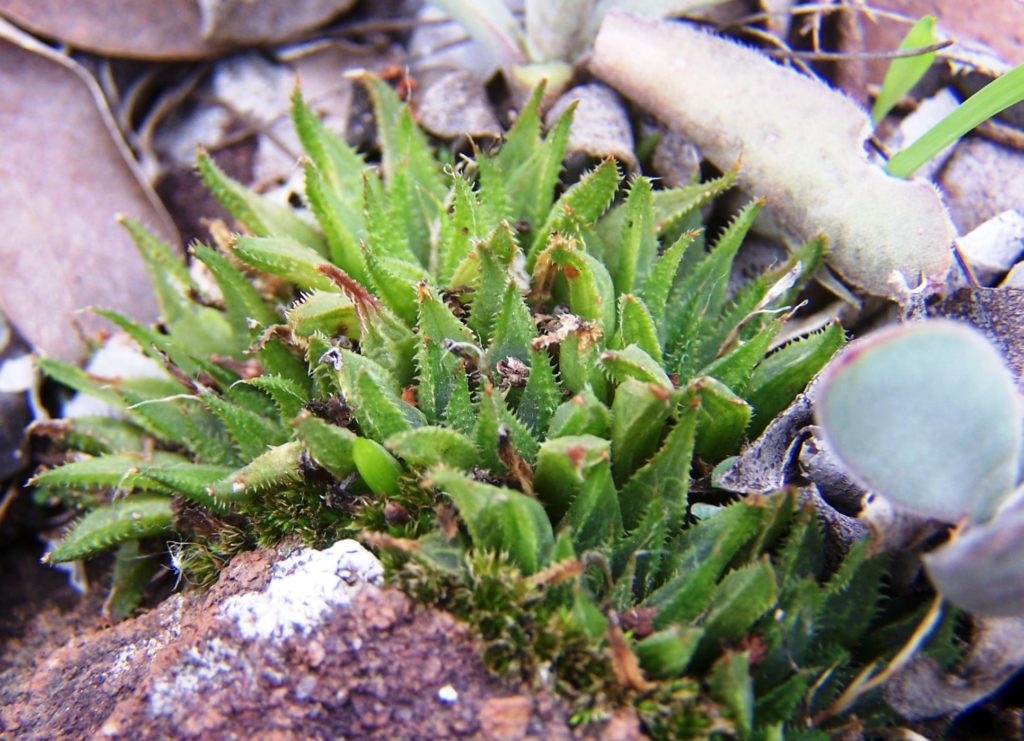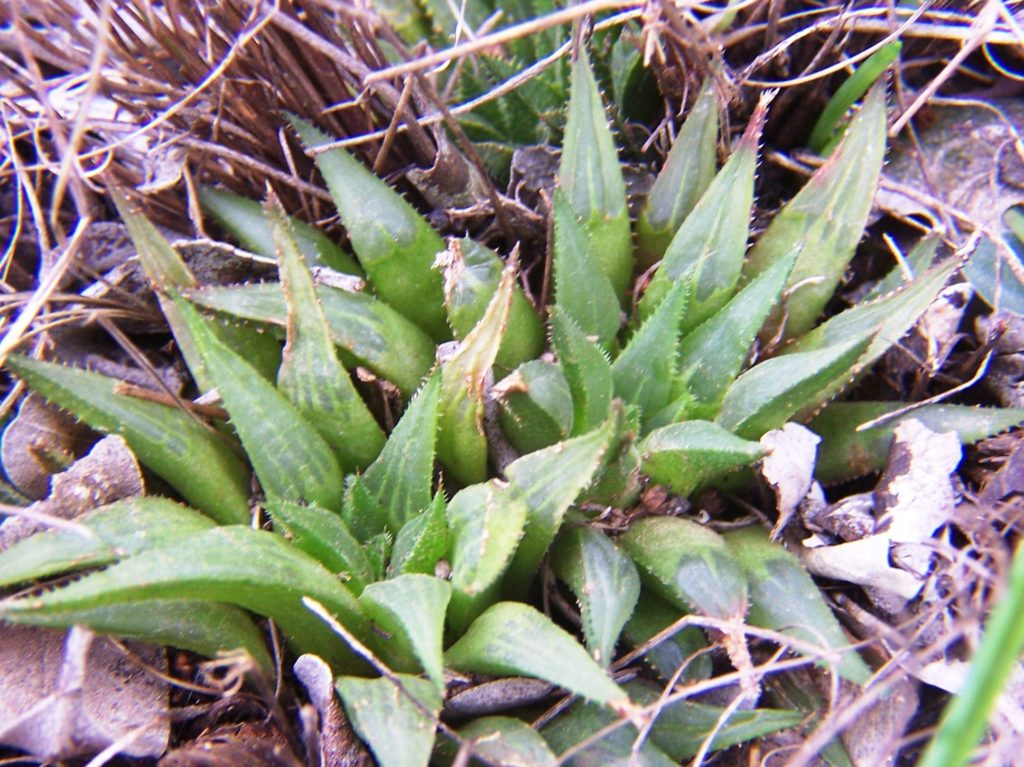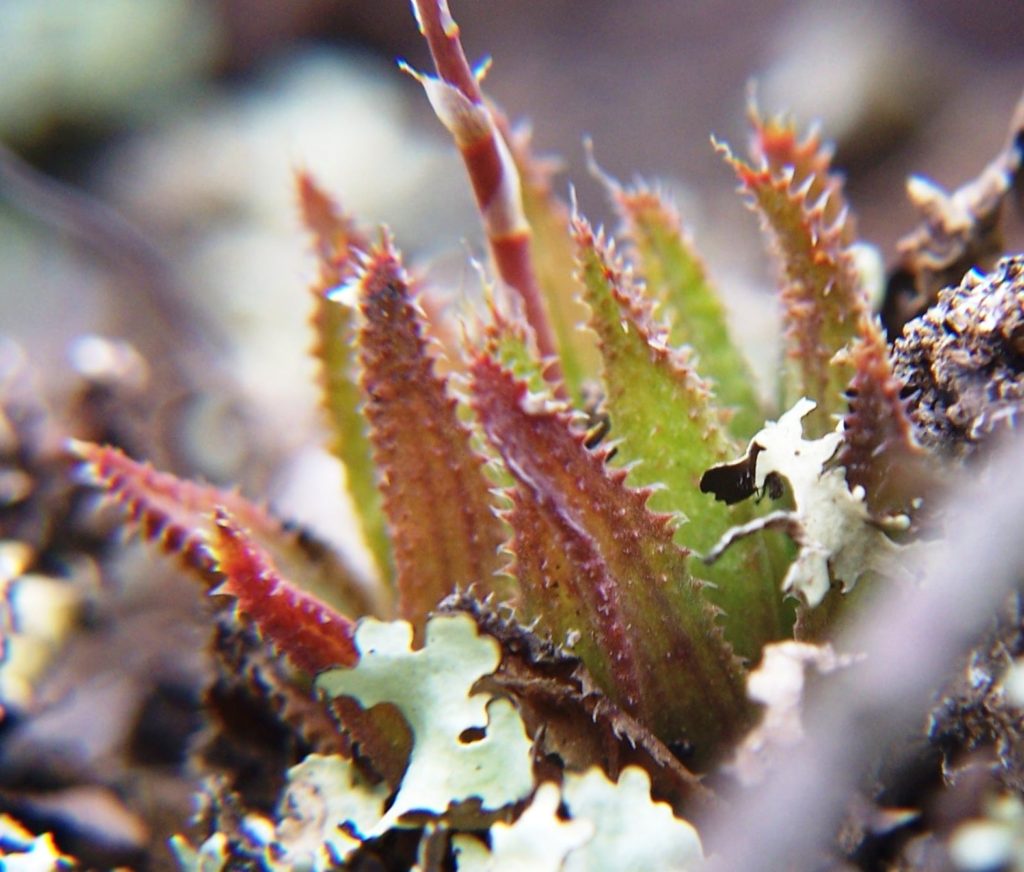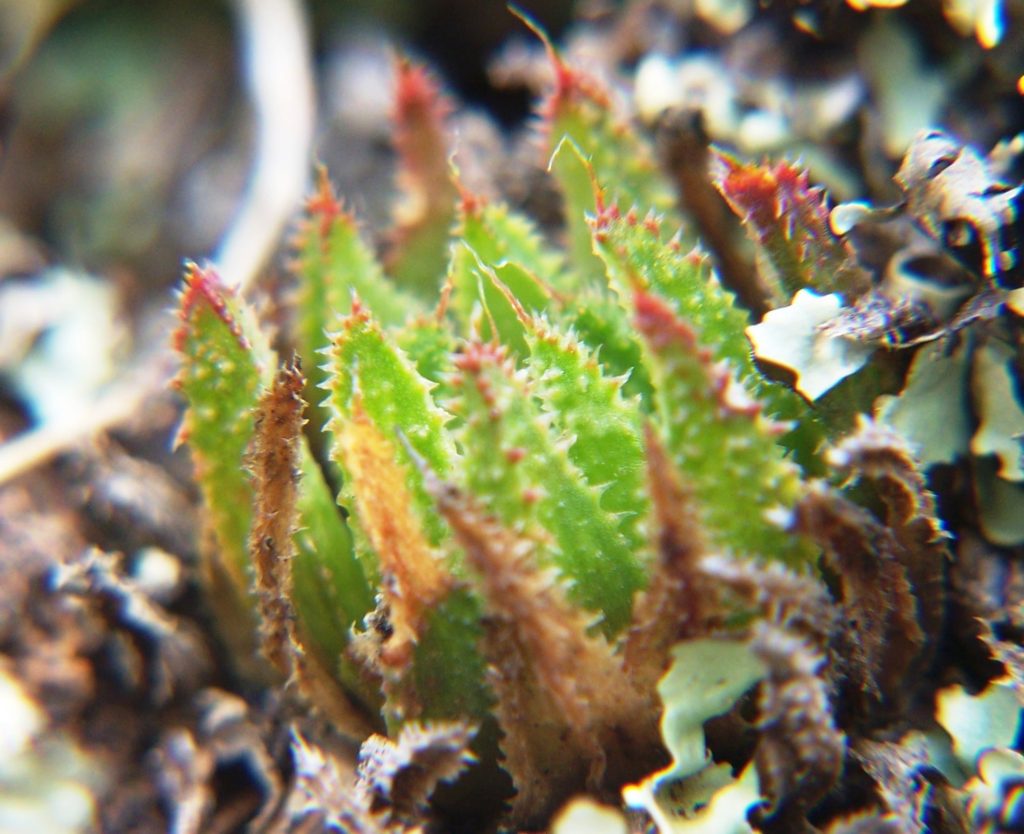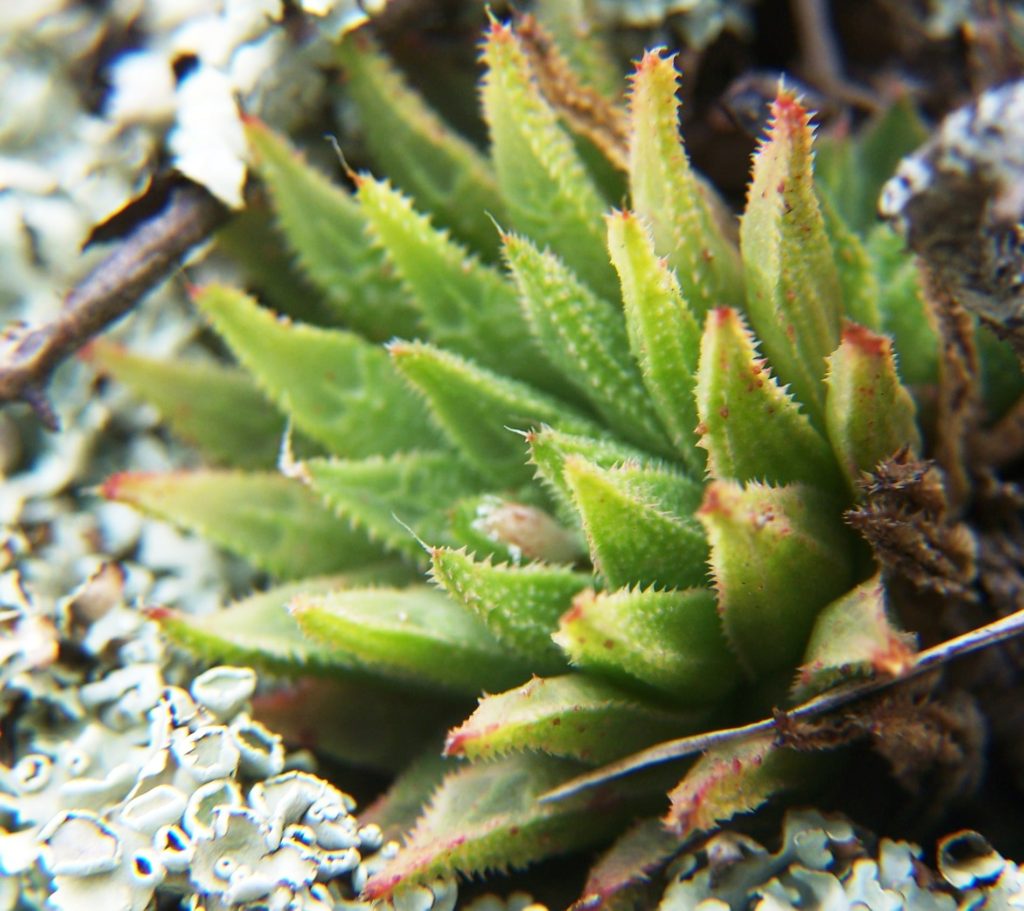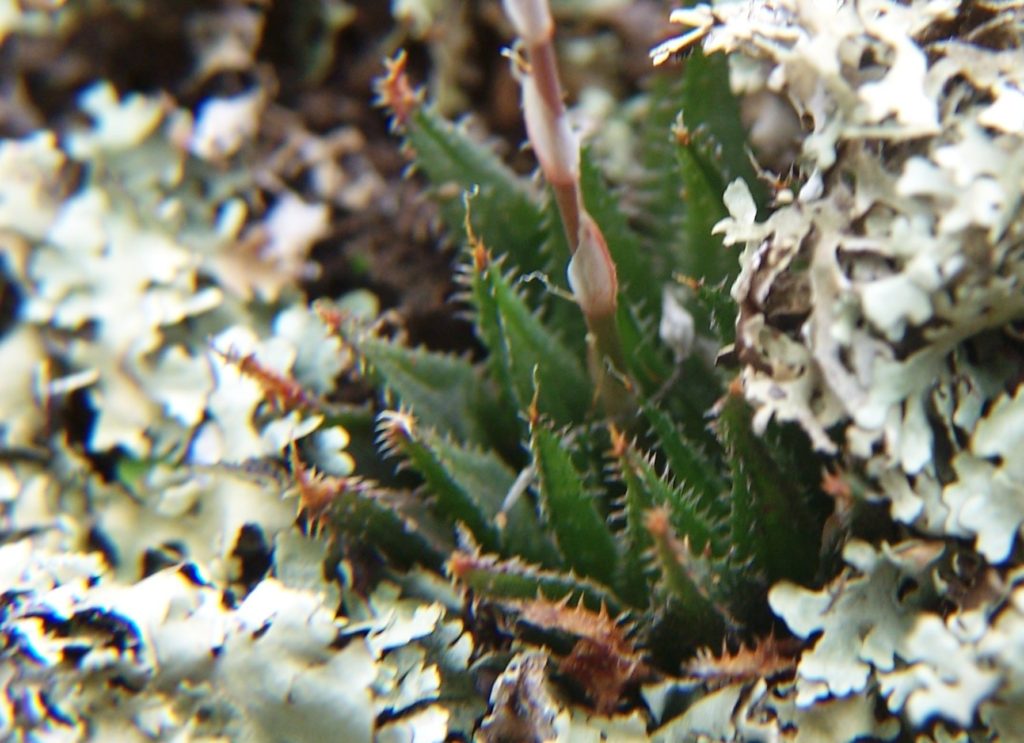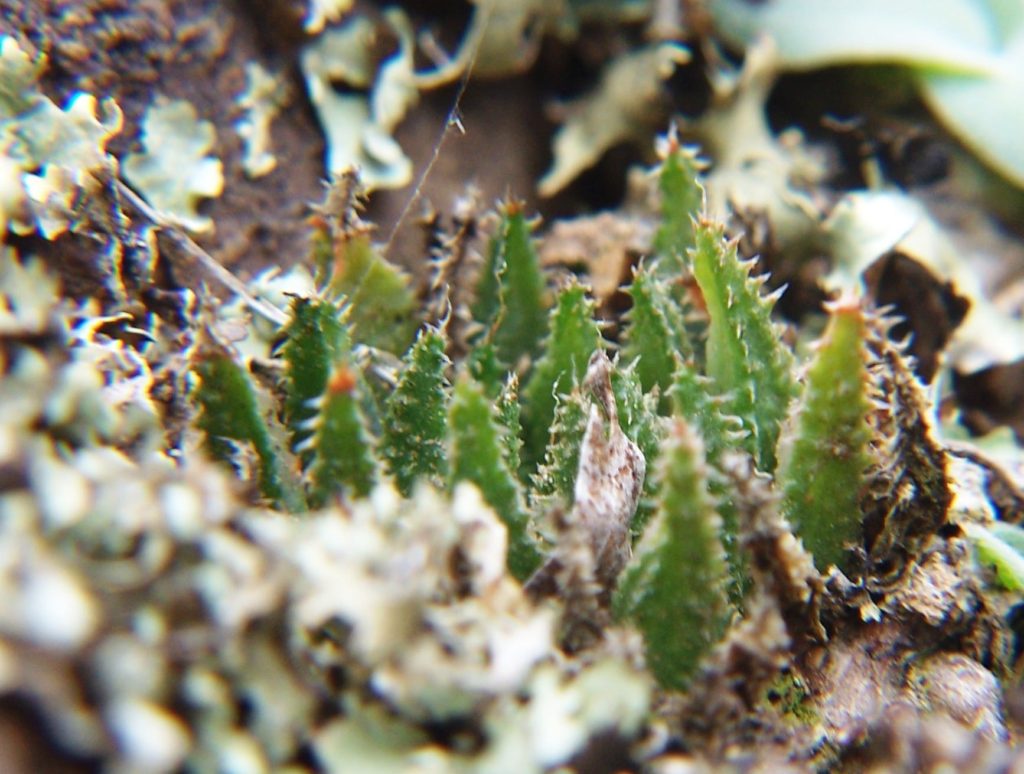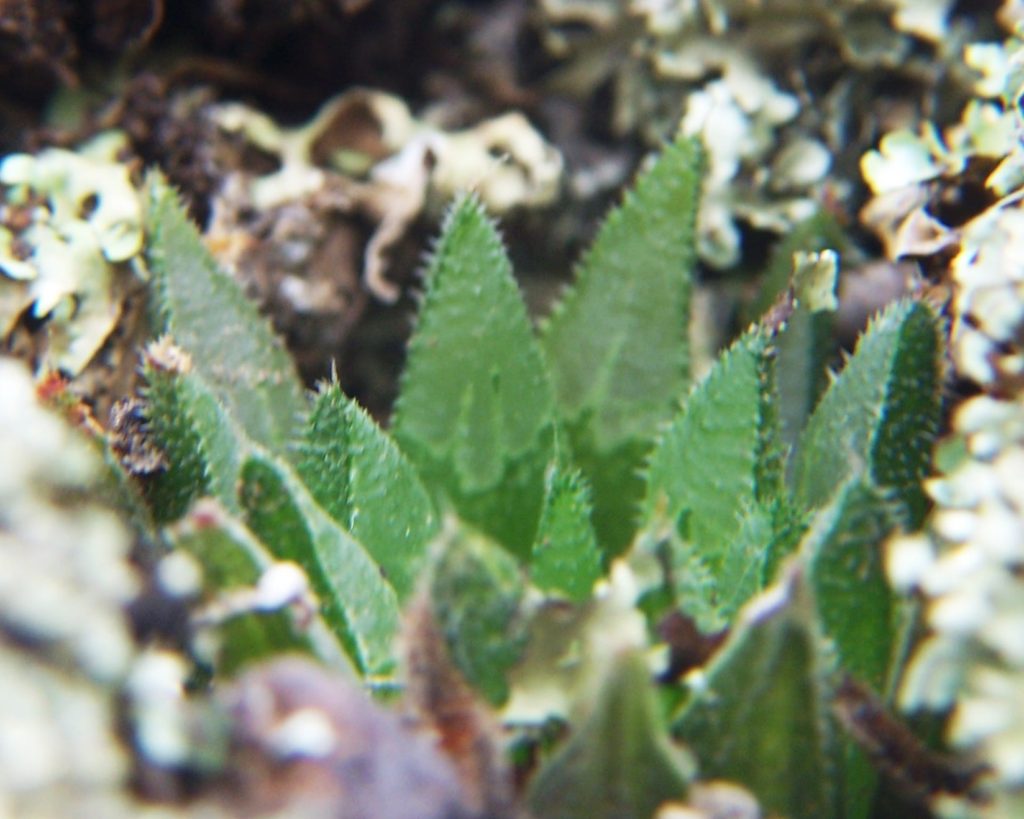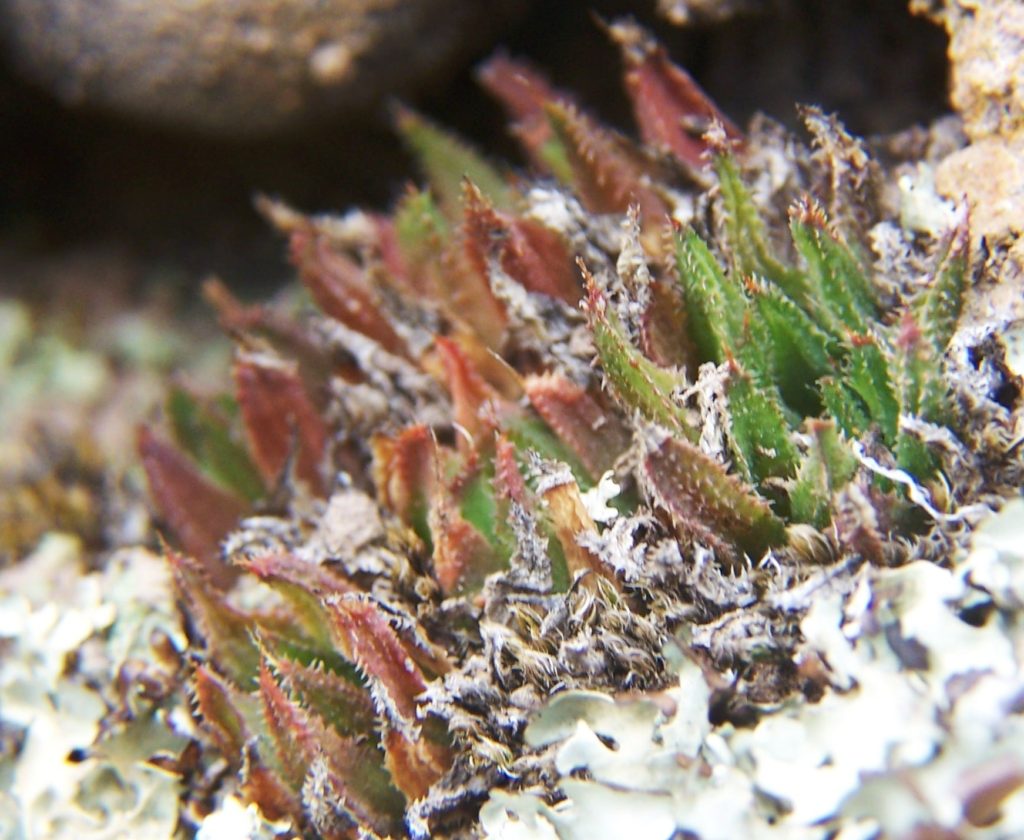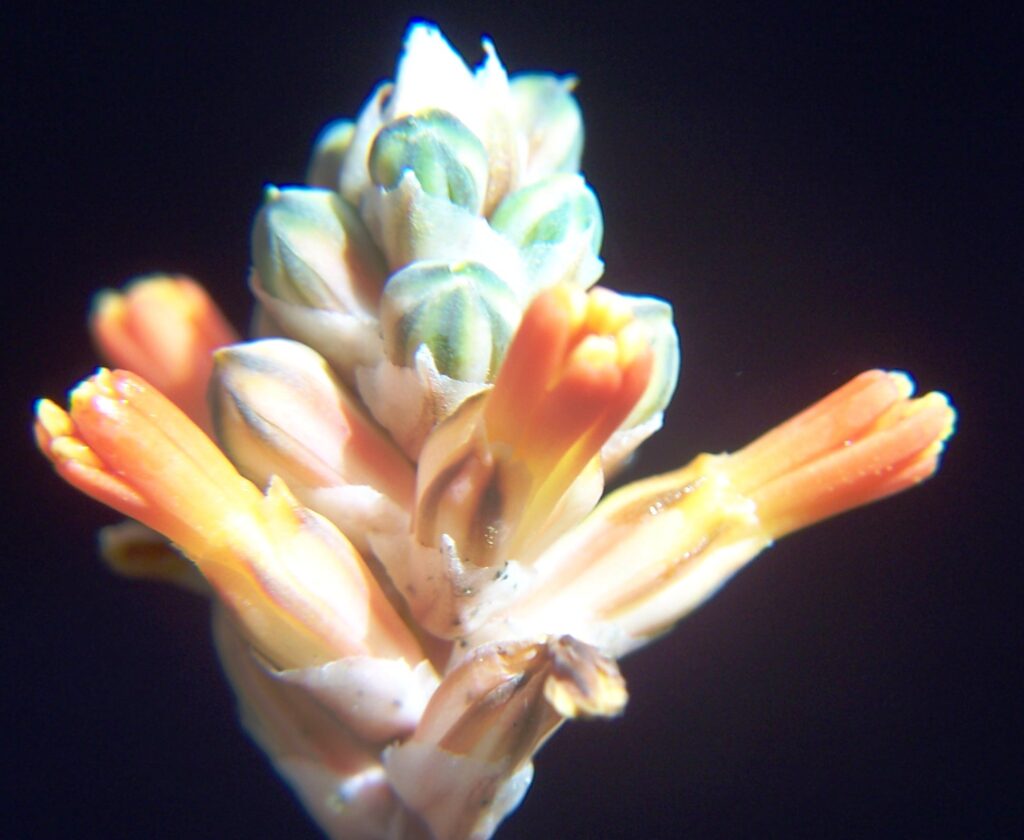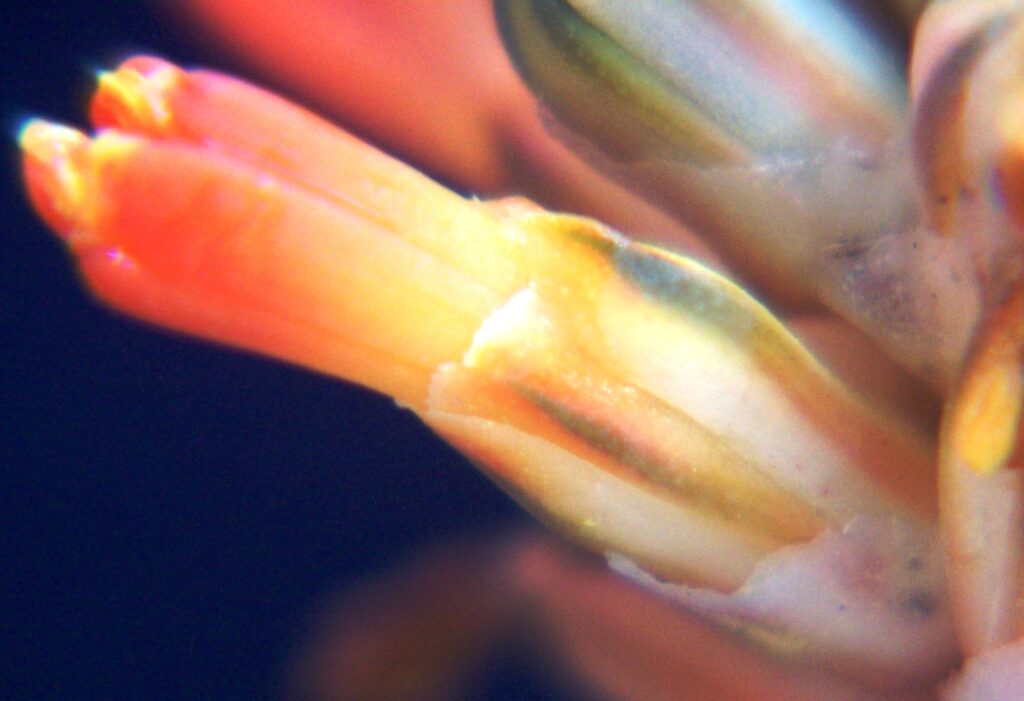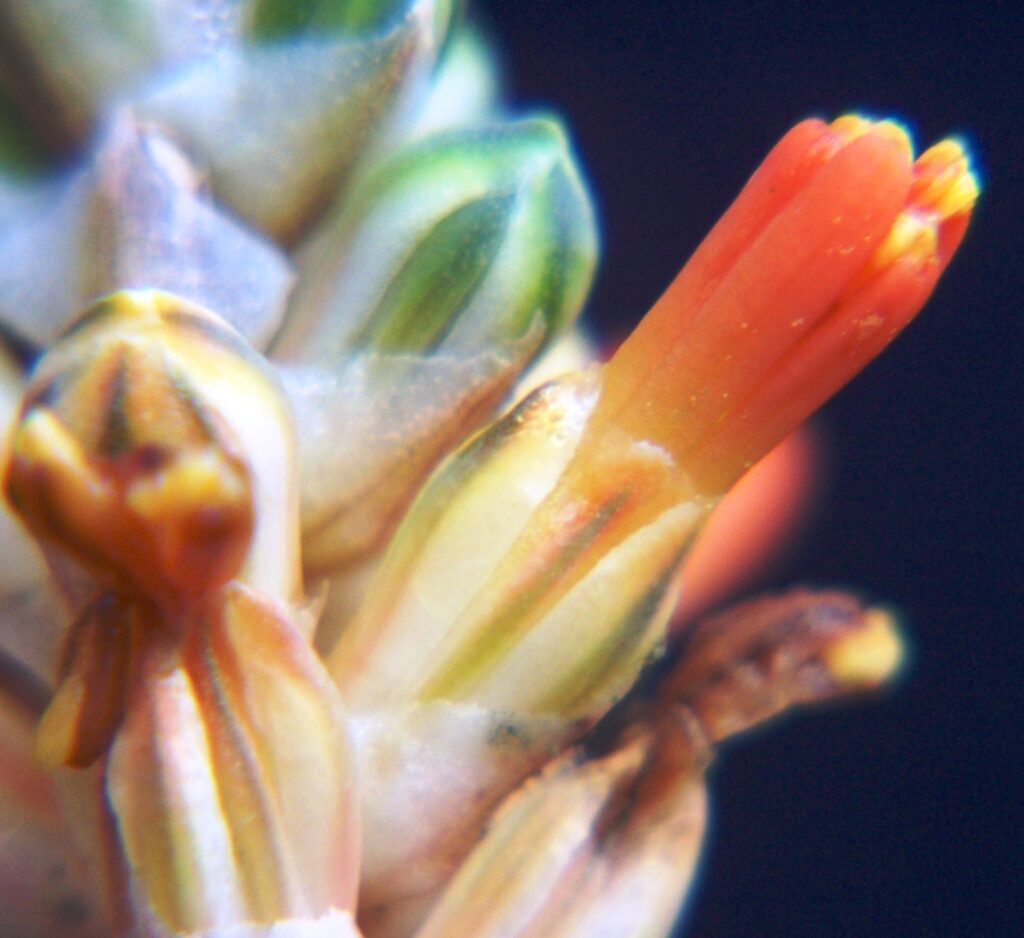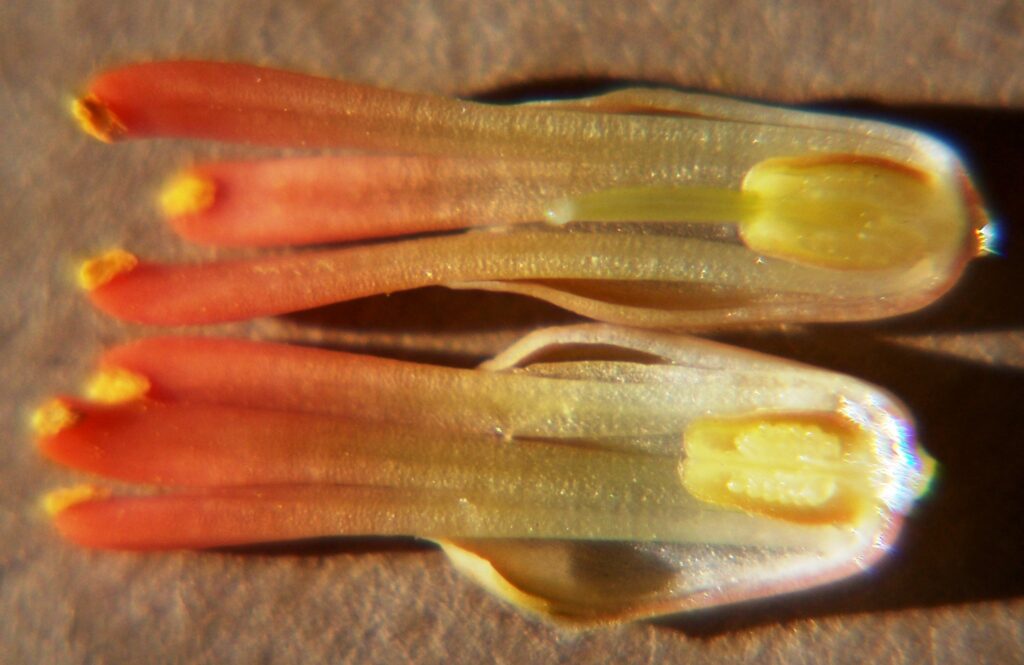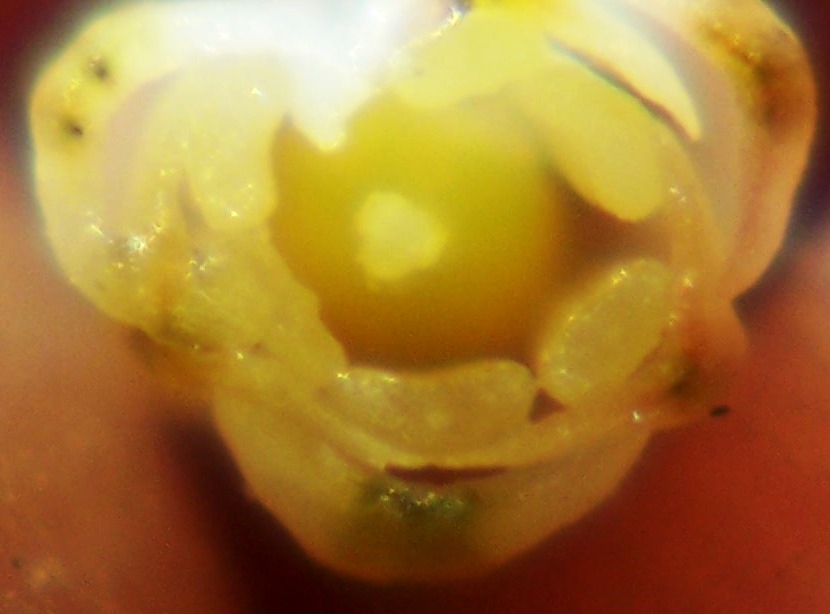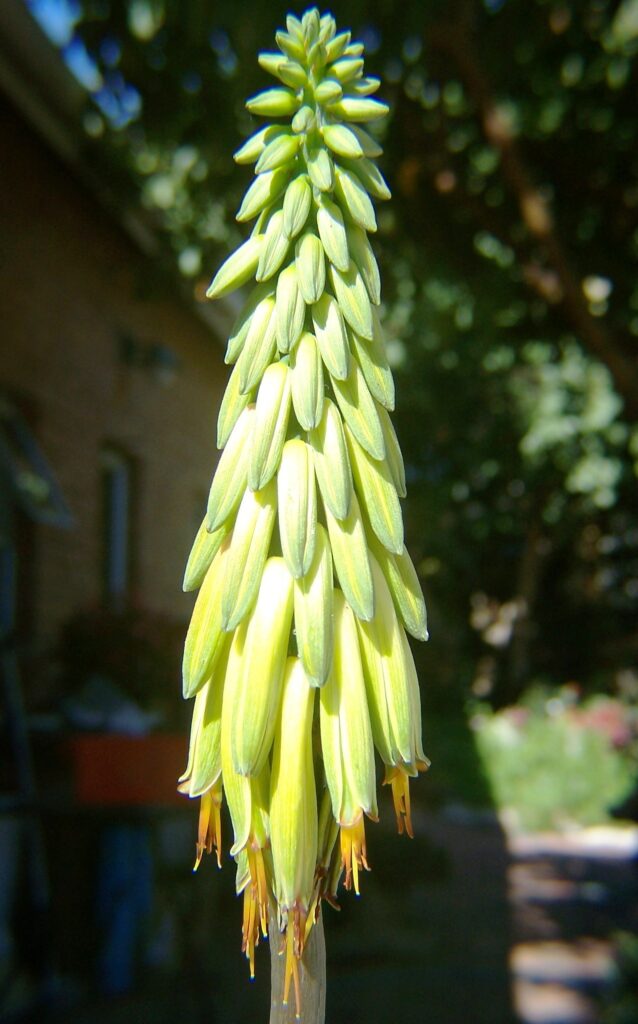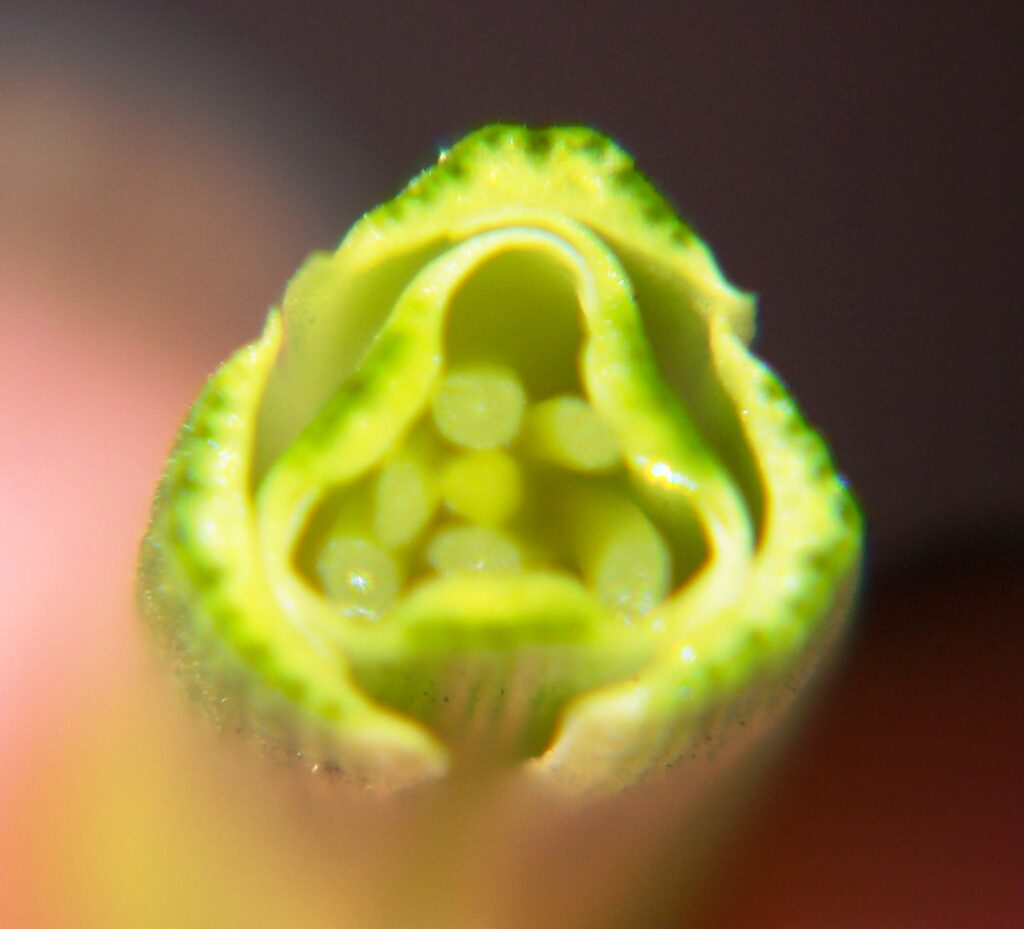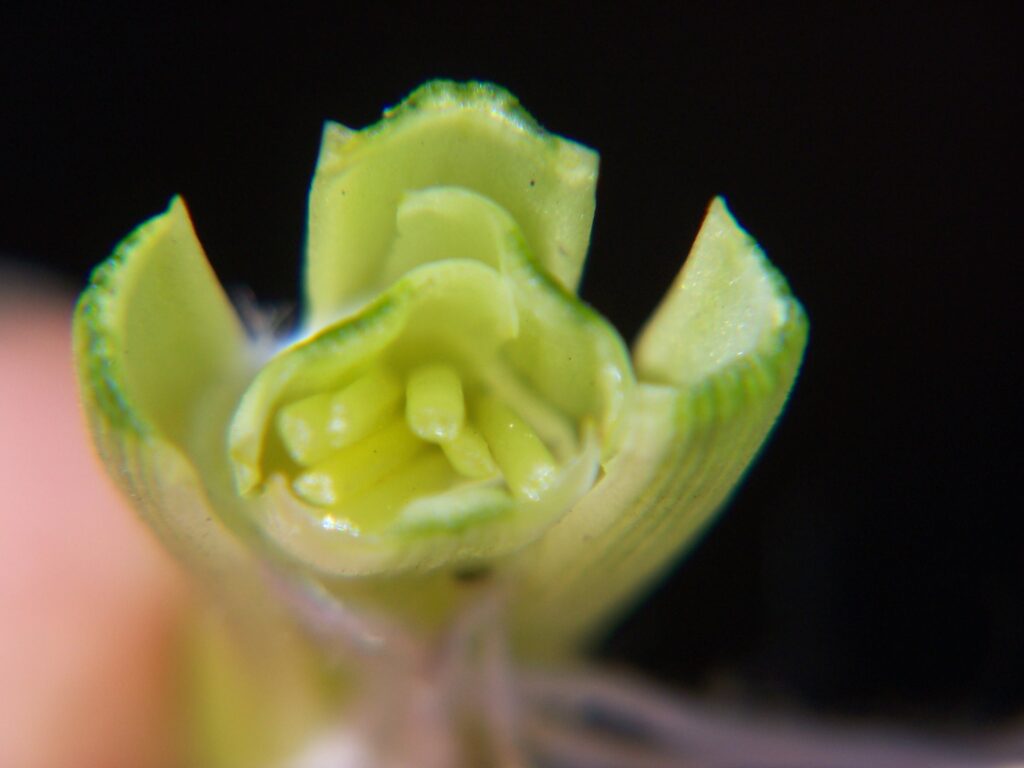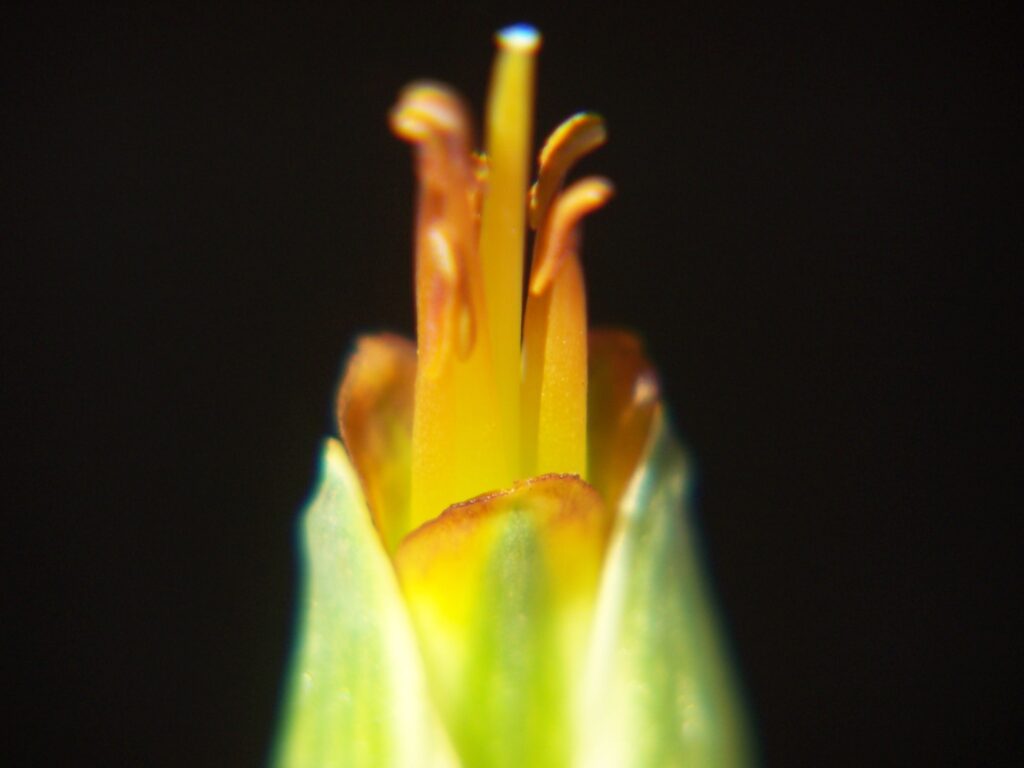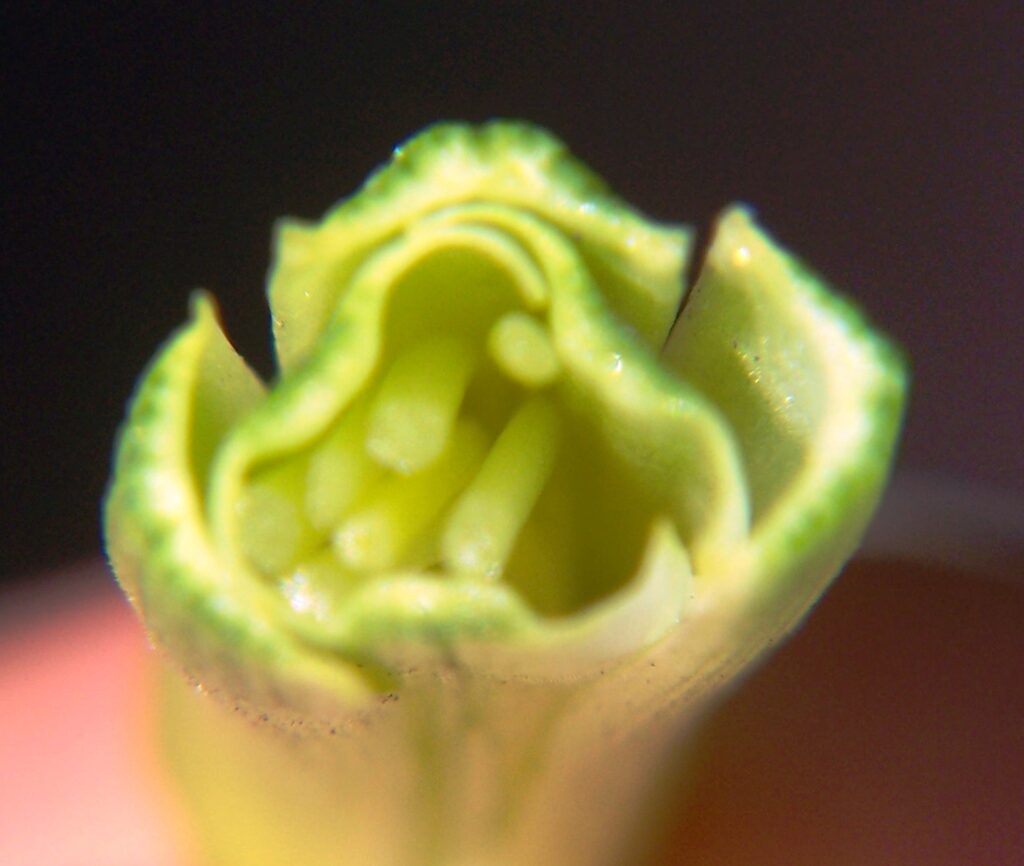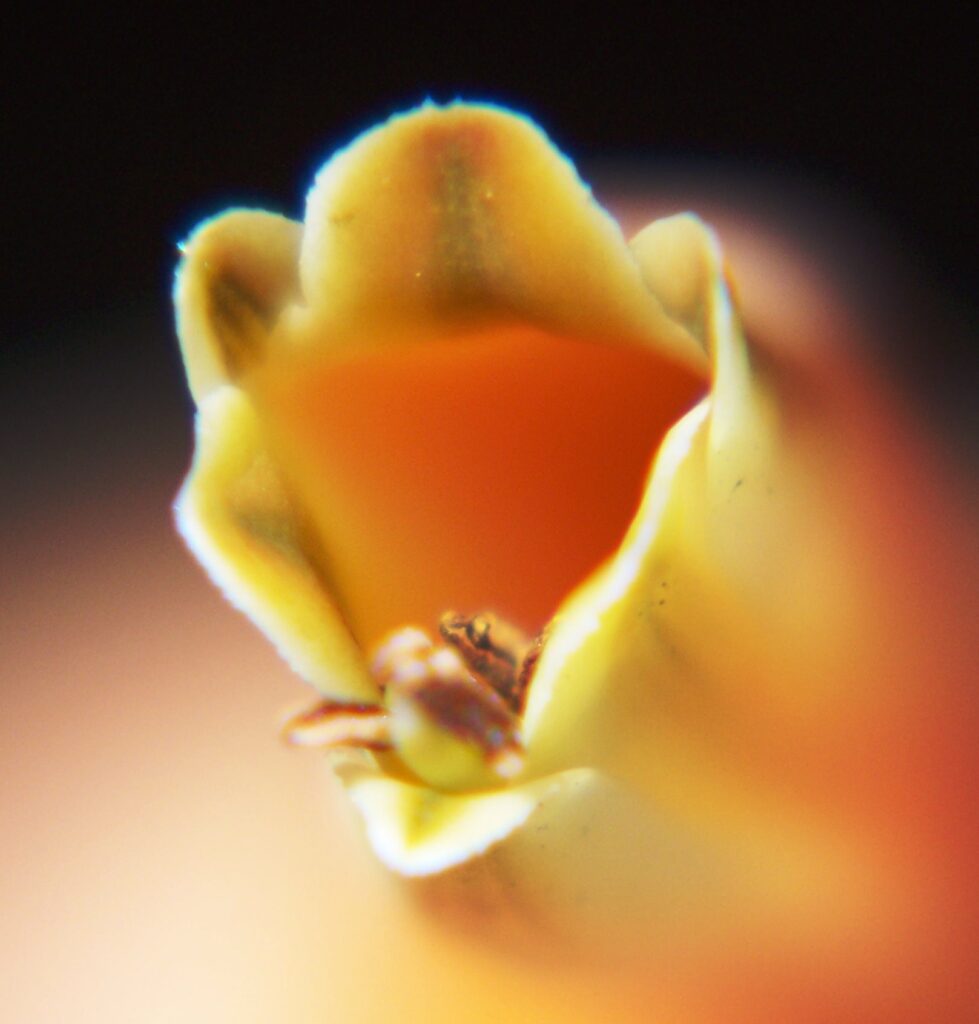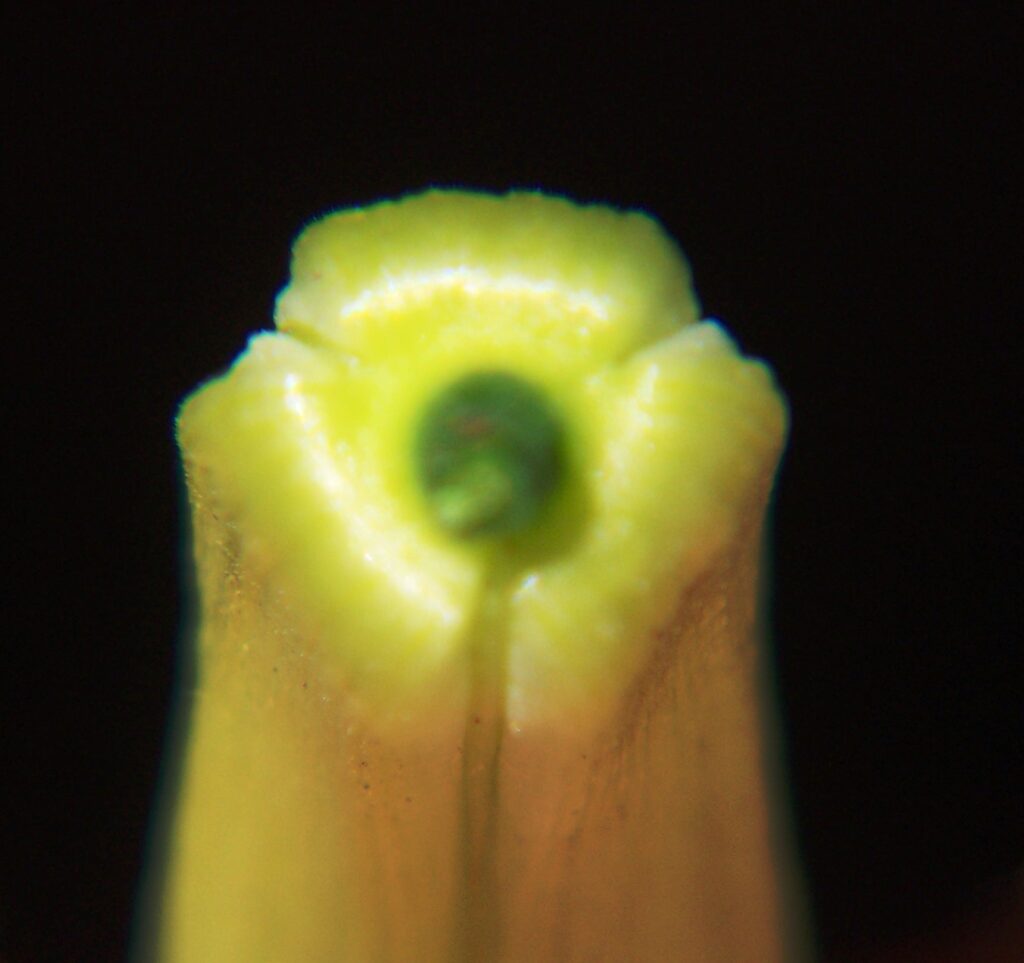The Haworthia nomenclator: a list of accepted species with some guidelines for infraspecific names
M.B. Bayer* and J.C. Manning**
*PO Box 960, Kuilsriver 7579, South Africa
**South African National Biodiversity Institute, P/Bag X7, Claremont 7735, South Africa
7 October 2012
(revised 1 February 2013)
With the impending revision of the IOS Succulent Lexicon and a growing awareness that the current classification of the genus Haworthia is unnatural, the time is ripe to propose a list of species names that I (MB) consider worthy of recognition. This list is essentially the same as that published recently in Haworthia Update 7(4): 30–40 (2012), in which we formally published numerous new combinations and new synonyms. There are two changes from that list implemented here. New information prompts us to recognise H. marxii as a species distinct from H. emelyae, and we transfer var. livida from H. pubescens to H. maculata also on the basis of new information.
My considered opinion is that there are at most about 60 species in Haworthia and that a better and more critical treatment would reduce this still more. This contrasts markedly with Breuer (2010), who lists 368 ‘accepted’ species and reports the even more startling claim that Hayashi recognises 550! Some of this increase is due to the tendency for these authors to treat my varietal names as full species but they have also described many new species de novo. I am unable to accept all of their proposed taxa in the context of my extensive field knowledge of the genus and my practical experience of patterns of variation among wild populations.
Species concepts in the genus have always been idiosyncratic, driven primarily by a propensity to recognize variation over similarity and fostered by a general ignorance of the extent of intra-population variability in the wild. The recent almost exponential proliferation of names has succeeded in surrounded the genus with a thicket of nomenclatural twigs that is almost impossible to penetrate and which obscures rather than illuminates any real understanding of the genus. The very appeal of the genus is its almost infinite capacity to vary, and it is a tragedy that they are no longer appreciated for their individuality but are instead pushed into or pulled out of taxonomic boxes almost willynilly. It is very difficult not to suspect the motivation behind some of this bedlam.
While we in no way wish to proscribe anybody from expressing their opinions, we issue an urgent plea for restraint. The nomenclatural flood that has all but submerged the genus will only be exacerbated by floating additional formal names and combinations on the turbulent waters. In fact, we go so far as to recommend a moratorium on the publication of any new taxa in the genus that are proposed without an extensive survey of relevant variation patterns in the wild. Scientific journals reduce the chances that inadequately researched papers will see the light of day by sending all submissions to competent referees for comment and evaluation. Popular journals that transgress into the scientific arena by accepting descriptions of new taxa should do the same and the responsibility for this lies firmly with the editors.
Every scientific name that enters currency has to be accounted for by botanists in their lists and publications. To remove them from circulation requires a separate, formal act for each and every name. Dealing with the many dubious names in Haworthia is taxing task that can be ill afforded. Numerous invalidly published or illegitimate names have also entered circulation through non-adherence to the International Code of Botanical Nomenclature, which aims to regulate scientific names. This adds to the confusion and to the work.
What in fact is the primary purpose of these scientific names? Among botanical circles, species names carry a great deal of weight. In most instances they imply that individuals that share a name also share a common ancestry and can interbreed to produce viable seeds. Species with different names will not. Is this philosophy applied in Haworthia? The process of recognising species in botanical circles is generally top-down, with genera being first split into component species and the species then into subspecies or varieties acording to the particular patterns of variation shown by the constituent populations. This does not seem to apply in Haworthia. Here the process is largely bottom-up, with individuals or populations being given names and then shuffled into or among species. This is patently absurd.
In general terms, botanical names largely reflect similarities whereas horticultural names highlight differences. The two systems are thus not always congruent and little is to be served by confusing them. We therefore recommend that growers exploit the advantages of an informal system of nomeclature that will give them unlimited flexibility without clogging up the formal nomenclature any further. We also urge the Editors of popular journals to encourage the use of this system among their contributers. The great advantage of such an informal and non-ranked system is that it removes the hierarchical constraints that are inherent in the Linnaean system and that have already created problems with the placement of varieties and forms of Haworthia.
It could not be easier to implement and use: instead of worrying about the taxonomic level at which the variant is to be recognized (is it a subspecies, or a variety, or a form) the name appears in inverted commas without any indication of its rank. Such informal names can also be moved between species without any formal changes that are otherwise necessary. They are likely to be more descriptive and meaningful than a bare Latinised trivial epithet. As an example, should Mr Smith consider that the form of H. mirabilis var. sublineata from south of Bredasdorp with paler, attenuate leaves deserves special recognition, then he might usefully refer to those plants under the informal name H. mirabilis ‘Bredasdorp Pale’ Smith 2015. A typical illustration should be designated to fix the application of the name. Transferring of the variant to another species should follow the Zoological Code in carrying over the first author only (now in brackets) and not the transferring author as well. Thus: H. mirabilis ‘Bredasdorp Pale’ (Smith 2015). We are most grateful to Harry Mays, Editor of the Haworthia Update for his assistance and advice on this aspect.
THE LIST: All taxa that we accept are indicated in bold.Taxa that are not accepted at any rank are included as synonyms. Where possible we formally synonomise such names that have not yet been formally synonomised but many others (indicated with an asterisk *) do not appear in the International Plant Names Index (www.ipni.org) as of 20 January 2012 and are thus evidently unpublished or manuscript name. The publication of such names in the literature is irresponsible. Names that are separated by a full stop (.) are based on different types (heterotypic or taxonomic synonyms) whereas those separated by a colon (:) are based on the same type (homotypic or nomenclatural synonyms).
Haworthia Duval Pl. Succ. Horto. Alenc.: 7pp (1809). Baker in Jl. S. Afr. Bot. 18: 197(1880). Baker in Fl. cap. 6: 332 (1896). Berger in Das. Pfl. 4: 74 (1908). Bayer, New Haworthia Handb. (1982). Scott, The genus Haworthia (1985). Type species: H. arachnoidea (L.) Duval. [Typification largely by Breuer & Metzing in Taxon (1996)].
= Catevala Medik. (1786). Apicra Willd. (1811).
± 60 species, very variable and complex. The taxonomy of the genus is still unresolved. Species concepts used here largely follow Bayer’s (1976, 1982, 1997) treatments and are based on geographical distribution and co-occurrence.
NOTE: Recent phylogenetic analyses of nuclear and plastid DNA sequence data supports the view that the three subgenera comprise quite distinct lineages not immediately related to one another. They are thus as distinct as some of the other smaller genera and should thus logically be treated as separate genera. A more useful option is probably to include all of the alooid genera within Aloe.
Key to the subgenera
1. Flowers triangular or rounded-triangular at base; tube obclavate-curved; outer tepals free; style upcurved; seeds irregularly angled . . . subg. Haworthia
2. Flowers hexangular at base, gradually narrowing to junction with pedicel (substipitate); tube obcapitate-curved; outer tepals partly fused to inner; style straight; seeds irregularly angled . . . subg. Hexangulares
3. Flowers rounded at base and abruptly joined to pedicel (non-stipitate); petals partly fused; tube obcapitate-straight; style straight; seeds flattish . . . subg. Robustipedunculatae
I. Subgenus Haworthia. Type species: as for genus. ± 41 spp.
H. angustifolia Haw. in Philos. Mag. J. 66: 283 (1825). Neotype, designated by Breuer & Metzing (1997): Grahamstown to Alicedale, Bruyns 1653 (NBG).
= Aloe stenophylla Schult. & Schult.f. (1829). H. albanensis Shonl. (1912). H. angustifolia var. grandis Smith (1943).
H. angustifolia var. angustifolia
H. angustifolia var. altissima Bayer in Haw. Revis.: 26 (1999): H. altissima (Bayer) M.Hayashi in Haworthia Study 3: 13 (2000). Type: Riebeek East to Carlisle Bridge, Smith 5220 (NBG).
H. angustifolia var. baylissii (Scott) Bayer in Haw. Revis.: 27 (1999): H. baylissii Scott (1968). Type: Oudekraal, Zuurberg, Bayliss sub Scott 796 (PRE).
H. angustifolia var. paucifolia Smith in Jl. S. Afr. Bot. 14: 48 (1948): H. paucifolia (Smith) M.Hayashi in Haworthia Study 22: 11 (2010). Type: Frazers Camp, Smith 6819 (NBG).
H. arachnoidea (L.) Duval in Pl. Succ. Hort. Alenc.: 7 (1809): Aloe pumila var. arachnoidea L. (1753): Catevala arachnoidea (L.) Medik. (1786): Apicra arachnoidea (L.) Willd. (1811). Lectotype, designated by Scott (1977): Commelin, Praeludia Bot.: t. 27 (1703). Epitype, designated by Breuer & Metzing (1997): Buitenstekloof, Langvlei, Bayer 153 (NBG).
= H. arachnoidea var. minor Haw. (1819).
H. arachnoidea var. arachnoidea
= H. joubertii M.Hayashi in Haworthia Study 14: 16 (2005), nom. inval. H. laxa M.Hayashi in Haworthia Study 14: 14 (2005), nom. inval. H. limbata M.Hayashi in Haworthia Study 14: 16 (2005), nom. inval. *H. isomorpha *H. gilva
H. arachnoidea var. aranea (Berger) Bayer in Haw. Revis.: 30 (1999): H. bolusii var. aranea Berger (1908): H. aranea (Berger) Bayer (1976). Lectotype: Engler, Pflanzenr. 33: 114, f. 39 A–E (1908). Epitype, designated by Breuer & Metzing (1997): Robinson Pass, Moeras River Drift, Bolus 12372 (BOL).
H. arachnoidea var. namaquensis Bayer in Haw. Revis.: 31 (1999): H. namaquensis (Bayer) Breuer in Gen. Haworthia 1: 7 (2010). Type: Karrachabpoort, Richtersveld, Bayer 1674 (NBG).
H. arachnoidea var. nigricans (Haw.) Bayer in Haw. Revis.: 32 (1999): H. setata var. nigricans Haw. (1821). Neotype, designated by Bayer (1997): SW Vanwyksdorp, Bayer 2419 (NBG).
= H. helmiae V.Poelln. (1937): H. unicolor var. helmiae (V.Poelln.) Bayer (1976). H. venteri V.Poelln. (1939): H. unicolor var. venteri (V.Poelln.) Bayer (1976). H. scottii Breuer in Avonia 21: 55 (2003). H. nigrata M.Hayashi in Haworthia Study 15: 14 (2006). *H. apata *H. regens *H. formosa *H. kuromisa
H. arachnoidea var. scabrispina Bayer in Haw. Revis.: 34 (1999): H. scabrispina (Bayer) Breuer in Gen. Haworthia 1: 8 (2010). Type: Baviaans, Bayer 2105 (NBG) *H. matjiesta
H. arachnoidea var. setata (Haw.) Bayer in Haw. Revis.: 34 (1999): H. setata Haw. (1819). Iconotype: artist unknown, specimen received from Dr Mackrill ex Cape (K).
= H. setata var. media Haw. (1821). H. setata var. major Haw. (1821). Aloe setosa Schult. & Schult.f. (1829). H. gigas V.Poelln. (1932): H. setata var. gigas (V.Poelln.) V.Poelln. (1938). H. minima var. major V. Poelln. (1938): H. tenera var. major (V.Poelln.) Uitew. (1948). H. pectinis M.Hayashi in Haworthia Study 10: 13 (2003). H. tretyrensis Breuer in Avonia 21: 58 (2003). H. candida M.Hayashi in Haworthia Study 16: 16 (2006). H. cangoensis M.Hayashi in Haworthia Study 14: 13 (2005), nom. inval. H. angiras M.Hayashi in Haworthia Study 14: 13 (2005), nom. inval. H. kogmansensis M.Hayashi in Haworthia Study 14: 14 (2005), nom. inval.
H. aristata Haw. in Suppl. Pl. Succ.: 51 (1819). Iconotype: (K). Epitype: Deadman’s Gulch (Soutkloof), Smith 3550 (NBG).
= H. denticulata Haw. (1821). H. lapis Breuer & M.Hayashi in Alsterworthia Int. Special Issue 7: 6 (2004). H. rava M.Hayashi in Haworthia Study 14: 11 (2005), nom. inval.
H. bayeri Hammer & Venter in Cact. Succ. J (US) 69: 75 (1997). Type: S Uniondale, Stayner in KG164/69 (NBG).
= H. hayashii M.Hayashi in Haworthia Study 7: 14 (2002). H. laeta M.Hayashi in Haworthia Study 12: 13 (2004). H. indigoa M.Hayashi in Haworthia Study 12: 13 (2004). H. truterorum Breuer & Marx in Aloe 48: 54 (2011).
H. blackburniae Barker in J. S. Afr. Bot. 3:93 (1937). Type: Calitzdorp, Reynolds 1842 (NBG).
H. blackburniae var. blackburniae
H. blackburniae var. graminifolia (Smith) Bayer in Haw. Revis.: 42 (1999): H. graminifolia Smith (1942). Type: Schoemanspoort, M. Courtenay‑Latimer in Smith 5222 (NBG).
H. blackburniae var. derustensis Bayer in Haw. Revis.: 41 (1997): H. derustensis (Bayer) M.Hayashi in Haworthia Study 3: 13 (2000). Type: W. De Rust, Vlok sub Venter 93/24 (NBG).
H. bolusii Baker in J. Linn. Soc. Bot.:215 (1880). Type: Graaff-Reinet, Bolus 158 (K).
= H. odetteae Breuer in Avonia 21: 51 (2003). H. odyssei M.Hayashi in Haworthia Study 14: 11 (2005), nom. inval. H. capillaris M.Hayashi in Haworthia Study 16: 16 (2006).
H. bolusii var. bolusii
H. bolusii var. blackbeardiana (V. Poelln.) Bayer in Haw. Hand.: 31 (1976): H. blackbeardiana V.Poelln. (1932). Lectotype, designated by Breuer & Metzing (1997): ex cult. V.Poelln. 1932 (B).
= H. blackbeardiana var. major V.Poelln. (1937). H. inermis V.Poelln. (1932): H. altilinea var. inermis (V.Poelln.) V.Poelln. (1937): H. altilinea var. limpida f. inermis (V.Poelln.) V.Poelln. (1940). H. batteniae Scott (1979). H. calaensis Breuer in Alsterworthia Int. Special Issue 7: 5 (2004). H. specksii Breuer in Alsterworthia Int. Special Issue 7: 8 (2004).*H. hogsia *H. speciosa *H. malvina
H. bolusii var. pringlei (Scott) Bayer in Haworthiad 16: 62 (2002). H. decipiens var. pringlei (Scott) Bayer in Haw. Revis.: 67 (1999): H. pringlei Scott (Bradleya 12:103,1994). Type: Adelaide district, Scott s.n. PRE 8970 (PRE). H. hisui M.Hayashi in Haworthia Study 12: 10 (2004). H. lazulis M.Hayashi in Haworthia Study 14: 11 (2005), nom. inval. H. aquamarina M.Hayashi in Haworthia Study 10: 13 (2003). H. hastata M.Hayashi in Haworthia Study 12: 9 (2004).
H. chloracantha Haw. in Revis.:57 (1821): Aloe chlorocantha (Haw.) Scult. & Schult.f. (1829). Neotype, designated by Breuer & Metzing (1997): N Herbertsdale, Bayer KG411/75 (NBG).
H. chloracantha var. chloracantha
H. chloracantha var. denticulifera (V.Poelln.) Bayer in Haw. Hand.: 112 (1976): H. angustifolia var. denticulifera V.Poelln. (1937): H. denticulifera (V.Poelln.) M.Hayashi in Haworthia Study 3: 13 (2000). Type (icono.): (B).
= H. angustifolia var. lilliputana Uitew. (1953).
H. chloracantha var. subglauca V.Poelln. in Kakteenkunde 9:135 (1937): H. subglauca (V.Poelln.) M.Hayshi in Haworthia Study 3: 13 (2000). Neotype, designated by Breuer & Metzing (1997): Great Brak, Hurling & Neil (BOL).
H. cooperi Baker in Refug. Bot. 4: 233 (1871). Type: Cape, Cooper (K).
= H. vittata Baker (1871).
H. cooperi var. cooperi
= H. pallens Breuer & M.Hayashi in Alsterworthia Int. Special Issue 7: 7 (2004). *H. turcosa *H. elegans *H. foeda *H. yocans
H. cooperi var. dielsiana (V.Poelln.) Bayer in Haw. Revis.: 51 (1999): H. dielsiana V.Poelln. (1930): H. pilifera var. dielsiana (V.Poelln.) V.Poelln. (1940): H. obtusa var. dielsiana (V.Poelln.) Uitew. (1948). Neotype, designated by Bayer (1999): Sheldon, A.J. van der Merwe in Smith 1140 (NBG).
= H. joeyae Scott (1975).
H. cooperi var. doldii Bayer in Haworthiad 16: 65 (2002): H. doldii (Bayer) M.Hayashi in Haworthia Study 14: 11 (2005). Type: Chalumna, Dold 3961 (GRA).
H. cooperi var. gordoniana (V.Poelln.) Bayer in Haw. Revis.: 52 (1999): H. gordoniana V.Poelln. (1937): H. pilifera var. gordoniana (V.Poelln.) V.Poelln. (1938): H. obtusa var. gordoniana (V.Poelln.) Uitew. (1948). Neotype, designated by Bayer (1999): Patensie, Smith 3028 (NBG).
= H. harryi M.Hayashi in Haworthia Study 12: 9 (2004). H. jeffreis M.Hayashi in Haworthia Study 12: 10 (2004). H. pusilla M.Hayashi in Haworthia Study 12: 10 (2004). H. ligulata M.Hayashi in Haworthia Study 12: 6 (2004). H. venetia M.Hayashi in Haworthia Study 12: 6 (2004). *H. brandea *H. cineraria *H. compressa *H. gelatina *H. ionandra *H. neritica *H. silvicola *H. tomentosa
H. cooperi var. gracilis (V.Poelln.) Bayer in Haworthiad 16: 64 (2002): H. gracilis V.Poelln. (1929). Neotype, designated by Bayer (1999): Hellspoort, Britten (PRE).
= H. caerulea M.Hayashi & Breuer in Haworthia Study 12: 7 (2004).
H. cooperi var. isabellae (V.Poelln.) Bayer in Haworthiad 16: 62 (2002): H. gracilis var. isabellae (V.Poelln.) Bayer in Haw. Revis.: 77 (1999): H. isabellae V.Poelln. (1938). Neotype, designated by Bayer: Humansdorp, Gamtoos bridge, H. Hall sub NBG 68799 (NBG).
= H. azurea M.Hayashi in Haworthia Study 9: 12 (2003). H. arabesqua M.Hayashi in Haworthia Study 12: 7 (2004). H. bella M.Hayashi in Haworthia Study 12: 8 (2004). H. florens M.Hayashi in Haworthia Study 12: 11 (2004). H. pilosa M.Hayashi in Haworthia Study 12: 7 (2004). H. bathylis M.Hayashi in Haworthia Study 15: 116 (2006). H. lachnosa M.Hayashi in Haworthia Study 16: 16 (2006). H. ciliata M.Hayashi in Haworthia Study 14: 11(2005), nom. inval. *H. kromia. *H. patriae *H. cuprina *H. dasylis
H. cooperi var. leightonii (Smith) Bayer in Haw. Hand.: 128 (1976): H. leightonii Smith (1950). Type: Kayser’s Beach, Smith 6938 (NBG).
= Haworthia leightonii var. davidii Breuer in Avonia 21: 49 (2003).: Haworthia davidii (Breuer) M.Hayashi & Breuer (2005). Type: SW East London, Breuer 6970 (TUAT). *H. sabita?
H. cooperi var. minima (Bayer) Bayer (2012): H. minima Baker (1880) hom. illegit. non (Aiton) Haw. (1812): H. gracilis var. minima Bayer [as (Baker) Bayer] (1999). Iconotype: (K).
= H. tenera V.Poelln. (1932): H. translucens subsp. tenera (V.Poelln.) Bayer (1976): H. gracilis var. tenera (V.Poell.) Bayer (1999): H. cooperi var. tenera (V.Poelln.) Bayer (2002). H. cummingii Breuer & M.Hayashi in Haworthia Study 10: 4 (2003).
H. cooperi var. picturata (Bayer) Bayer in Haworthiad 16: 65 (2002): H. gracilis var. picturata Bayer (1999): H. picturata M.Hayashi (2000). Type: Enon, Thode 21507 (NBG).
= H. oculata M.Hayashi in Haworthia Study 12: 10 (2004). *H. florida *H. imperialis *H. kubusie
H. cooperi var. pilifera (Baker) Bayer in Haw. Revis.: 54 (1999): H. pilifera Baker (1871): H. obtusa var. pilifera (Baker) Uitew. (1948). Iconotype: Refug. Bot.: 234 (1871).
= H. stayneri V.Poelln. (1937): H. pilifera var. stayneri (V.Poelln.) V.Poelln. (1938): H. obtusa var. stayneri (V.Poelln.) Uitew. (1948). H. stayneri var. salina V.Poelln. (1937): H. pilifera var. salina (V.Poelln.) V.Poelln. (1938): H. obtusa var. salina (V.Poelln.) Uitew. (1948): H. salina (V.Poelln.) M.Hayashi (2010). H. pilifera var. dielsiana f. acuminata V.Poelln. (1940): H. obtusa var. dielsiana f. acuminata (V.Poelln.) Uitew. (1948). H. luri M.Hayashi in Haworthia Study 14:11 (2005), nom. inval. *H. sabrina
H. cooperi var. truncata (Jacobs.) Bayer in Haw. Rev.: 55 (1999): H. obtusa var. pilifera f. truncata Jacobs in Nat. Cact. Succ. J. 10: 81 (1955): H. ikra Breuer (2010). Neotype, designated by Bayet (1999): Runlets, Mgwali, Smith 5295 (NBG).
H. cooperi var. venusta (Scott) Bayer in Haw. Revis. (1999): H. venusta Scott in Bradleya 14:87 (1996). Type: NE Alexandria, Britten 781 (GRA).
H. cooperi var. viridis (Bayer) Bayer in Haworthiad 16: 65 (2002): H. gracilis var. viridis Bayer (1999). Type: Perdepoort, Smith 6867 (NBG).
= H. hamata M.Hayashi in Haworthia Study 10: 12 (2003). H. emeralda M.Hayashi in Haworthia Study 12: 11 (2004). H. subhamata M.Hayashi in Haworthia Study 12: 11 (2004). H. teres M.Hayashi in Haworthia Study 12: 7 (2004). *H. swannea
H. cymbiformis (Haw.) Duv. in Pl. Succ. Hort. Elenc.:7 (1809): Aloe cymbiformis Haw. (1804): H. concava Haw., nom. illegit. superfl. (1821). Neotype, designated by Breuer & Metzing (1997): Port Elizabeth, Walmer, Smith 2844 (NBG).
= H. planifolia Haw. (1825): H. cymbiformis var. planifolia (Haw.) Baker (1880): Aloe planifolia (Haw.) Salm-Dyck (1840). H. cymbiformis var. angustata V.Poelln. (1938): H. angustata (V.Poelln.) Breuer in Gen. Haw. 1: 7 (2010). H. cymbiformis var. angustata f. subarmata V.Poelln. (1938). H. cymbiformis var. compacta Triebn. (1938): H. compacta (Triebn.) Breuer in Gen. Haw. 1: 7 (2010). H. planifolia var. exulata V.Poelln. (1938). H. planifolia var. planifolia f. agavoides Triebn. & V.Poelln. (1938), et f. olivacea Triebn. & V.Poelln. (1938), et f. robusta Triebn. & V.Poelln. (1938), et var. incrassata V.Poell. (1938), et var. sublaevis V.Poelln. (1938), et var. longifolia Triebn. et V.Poelln. (1938), et var. longifolia f. calochlora Triebn. et V.Poelln. (1938). H. planifolia var. poellnitziana Resende (1943). H. lepida Smith (1944). *H. cana *H. ingens *H. plena *H. rosea
H. cymbiformis var. cymbiformis
H. cymbiformis var. incurvula (V.Poelln.) Bayer in Haw. Hand.: 124 (1976): H. incurvula V.Poelln. (1932). Neotype, designated by Breuer & Metzing (1997): Pluto’s Vale, Britten s.n. BOL71307 (BOL).
H. cymbiformis var. obtusa (Haw.) Baker in J. Linn. Soc. Bot. 18: 209 (1880). H. obtusa Haw. in Phil.Mag. 46: 282 (1825). Iconotype: (K).
= H. umbraticola V.Poelln. (1937): H. cymbiformis var. umbraticola (V.Poelln.) Bayer (1976). H. hilliana V.Poelln. (1937): H. umbraticola var. hilliana V.Poelln. (1938). H. obtusa var. pilifera f. truncata Jacobs. (1960). *H. blinkia
H. cymbiformis var. ramosa (Smith) Bayer in Haw. Revis.: 60 (1999): H. ramosa Smith (1940): H. cymbiformis f. ramosa (Smith) Bayer (1976). Type: Wooldridge, Smith 3168 (NBG).
H. cymbiformis var. setulifera (V.Poelln.) Bayer in Haw. Revis.: 62 (1999): H. planifolia var. setulifera V.Poelln. (1938): H. setulifera (V.Poelln.) Breuer (2010). Neotype, designated by Bayer (1999): Kwelegha Bridge, Smith 5257 (NBG). H. cymbiformis var. obesa V.Poelln. (1938): H. obesa (V.Poell.) Breuer. *H. sarcoidea
H. decipiens V.Poelln. in Repert. Spec. Nov. Regni. Veg. 28: 103 (1930). Neotype, designated by Breuer & Metzing (1997)): Prince Albert, Kleinsleutelfontein, Bayer 5157 (NBG).
= H. exilis M.Hayashi in Haworthia Study 10: 12 (2003). H. incrassa M.Hayashi in Haworthia Study 14: 12 (2005), nom. inval. *H. tooris
H. decipiens var. decipiens
H. decipiens var. cyanea Bayer in Haw. Revis.: 65 (1999): H. cyanea (Bayer) Hayashi (2000). Type: Fairview, W Jansenville, Bayer 4180 (NBG).
= H. amethysta M.Hayashi in Haworthia Study 10: 1 (2003). H. succinea M.Hayashi in Haworthia Study 10: 14 (2003). H. ianthina M.Hayashi in Haworthia Study 14: 12 (2005), nom. inval.*H. virginea
H. decipiens var. minor Bayer in Haw. Revis.: 66 (1999). Type: Kleinpoort, Smith 3588 (NBG). *H. tenmari
H. decipiens var. virella Bayer in Haworthiad 16: 63 (2002). Type: Ebenezer, Bayer 2070 (NBG).
= H. crinita M.Hayashi in Haworthia Study 10: 13 (2003). H. eminens M.Hayashi in Haworthia Study 10: 13 (2003). H. floccosa M.Hayashi in Haworthia Study 10: 13 (2003). H. kemari M.Hayashi in Haworthia Study 9: 11 (2003). H. fluffa M.Hayashi in Haworthia Study 12: 9 (2004). H. jansenvillensis Breuer in Alsterworthia Inst. 4: 16 (2004). H. pellucida M.Hayashi in Haworthia Study 14: 12 (2005), nom. inval. *H. delicata *H. ionides *H. lanceata *H. stewarta
H. decipiens var. xiphiophylla (Baker) Bayer in Haworthiad 16: 63 (2002). H. arachnoidea var. xiphiophylla (Baker) Bayer in Haw. Revis.: 36 (1999). Haworthia xiphiophylla Baker, Curtis’ Bot.Mag.: t. 7505 (1896). H. setata var. xiphiophylla (Baker) V. Poelln. (1938). Type: Uitenhage, Howlett (K).
= H. longiaristata V. Poelln. (1937). H. flavida M.Hayashi in Haworthia Study 10: 13 (2003). *H. kammaensis
H. emelyae V.Poelln. in Repert. Spec. Nov. Regni. Veg. 42: 271 (1937). Lectotype, designated by Breuer & Metzing (1997): [unpublished image] (B).
= H. blackburniae V.Poelln. (1937). H. correcta V.Poelln. (1938). H. picta V.Poelln. (1938). H. picta var. janvlokii Breuer in Avonia 21: 52 (2003). H. janvlokii (Breuer) Breuer (2010). H. breueri M.Hayashi in Haworthia Study 7: 14 (2002). H. picta var. tricolor Breuer in Avonia 21: 53 (2003).: H. tricolor ( Breuer ) M.Hayashi (2010).
H. emelyae var. emelyae
H. emelyae var. comptoniana (Smith) Hammer and Venter in Cact. Succ. J. (US) 69: 77 (1997): H. comptoniana Smith (1945). Type: Georgida, Malherbe sub Smith 3433 (NBG).
H. emelyae var. major (Smith) Bayer in Haw. Revis.: 70 (1999): H. schuldtiana var. major Smith (1946): H. maraisii var. major (Smith) Bayer (1976): H. magnifica var. major (Smith) Bayer (1977). Type: Garcia’s Pass, Smith 5370 (NBG).
= H. wimii M.Hayashi in Haworthia Study 3: 13 (2000).
H. emelyae var. multifolia Bayer in Nat. Cact. Succ. J. 34:31 (1979): H. multifolia (Bayer) M.Hayashi (2000). Type: Riversdale, Springfontein, Bayer 1558 (NBG).
H. floribunda V.Poelln. in Repert. Spec. Nov. Regni Veg. 40: 149 (1936). Neotype, designated by Bayer (1982): [unpublished image] (B). Epitype, designated by Breuer & Metzing (1997): Blackdown, NE Heidelberg, Bayer 158 (NBG).*H. henda
H. floribunda var. floribunda
H. floribunda var. dentata Bayer in Haw. Revis.: 73 (1999): H. dentata (Bayer) M.Hayashi (2000), hom. illegit. non H.Jacobsen (1935). Type: W Riversdale, Dekenah 90 sub Smith 5502 (NBG).
H. floribunda var. major Bayer in Haw. Revis.: 74 (1999). Type: S Swellendam, De Kok (NBG).
= H. kondoi M.Hayashi in Haworthia Study 3: 13 (2000).
H. herbacea (Mill.) Stearn in Cactus J. 7: 40 (1938): Aloe herbacea Mill. (1768). Lectotype, designated by Bayer (1972): Illustration in Boerhaave, Index Alter Hort. Lugd.-Bat. 2: 130: t. 131 (1720). Epitype, designated by Breuer & Metzing (1997): N Ribbokkop, Bayer 161 (NBG).
= Aloe atrovirens DC. (1799): H. atrovirens (DC.) Haw. (1821). H. pumila (Willd.) Duval (1809). Aloe translucens Haw. (1804): H. translucens (Haw.) Haw. (1819): Aloe arachnoidea var. translucens (Haw.) Ker-G. (1811). H. pellucens Haw. (1812). H. pallida Haw. (1821). H. paynei V.Poelln. in Feddes Repert. 41: 206 (1937).: H. herbacea var. paynei (V.Poelln.) Bayer (1999). H. aegrota V.Poelln. (1939). H. submaculata V.Poelln. (1939). H. luteorosea Uitew. (1939).
H. herbacea var. herbacea
H. herbacea var. flaccida Bayer in Haw. Revis.: 86 (1999): H. flaccida (Bayer) Breuer (2010). Type: Worcester, Rooiberg, Bruyns (NBG).
H. herbacea var. lupula Bayer in Haw. Revis.: 86 (1999): H. lupula (Bayer) M.Hayashi (2000). Type: Villiersdorp, Boscheveld Mt., Wolfkloof, Esterhuysen (NBG).
H. lockwoodii Archibald in Fl. Pl. Africa 20: f. 792 (1940). Type: near Laingsburg, Lockwood-Hill 215 (GRA).
H. maculata (V.Poelln.) Bayer in Haw. Hand.: 130 (1976): H. schuldtiana var. maculata V.Poelln. (1940). Lectotype, designated by Breuer & Metzing (1997): Worcester, Venter 6 (BOL).
H. maculata var. maculata. *H. audens
H. maculata var. livida (Bayer) Bayer, comb. nov.: H. pubescens var. livida Bayer in Haw. Revis.: 134 (1999). Type: Worcester, Lemoenpoort, Bayer 1128 (NBG). *H. livida
H. marumiana Uitew. in Cact.Vetp. 6: 33 (1940). Type: Cape, Ladismith, ex hort. Stellenbosch sub 6610 (AMD).
= H. borealis M.Hayashi in Haworthia Study 15: 14 (2006). H. marmorata M.Hayashi in Haworthia Study 15: 14 (2006). H. tarkasia M.Hayashi in Haworthia Study 15: 14 (2006). *H. euchlora
H. marumiana var. marumiana
H. marumiana var. archeri (W.F.Barker ex Bayer) Bayer in Haw. Revis.: 104 (1999): H. archeri W.F.Barker ex Bayer (1981). Type: Whitehill, Archer s.n. NBG 68145 (NBG). *H. chibita *H. frazeri *H. nudata
H. marumiana var. batesiana (Uitew.) Bayer in Haw. Revis.: 105 (1999): H. batesiana Uitew. (1948). Type: Graaff-Reinet, Ferguson (AMD).
H. marumiana var. dimorpha (Bayer) Bayer in Haw. Revis.: 106 (1999): H. archeri var. dimorpha Bayer (1981): H. dimorpha (Bayer) M.Hayshi (2000). Type: Constable Station, W Laingsburg, Hall sub Smith 7418 (NBG).
H. marumiana var. reddii (Scott) Bayer (2012): H. cymbiformis var. reddii (Scott) Bayer (1999): H. reddii Scott in Cact. Succ. J. (US) 66:182 (1994). Type: Cathcart, Waterdown Dam, Scott 8968 (PRE). *H. boloensis *H. fatreddii
H. marumiana var. viridis Bayer in Haw. Revis.: 107 (1999). Type: S Prince Albert, Bayer 3620 (NBG). *H. viridis
H. marxii Gildenh. in Aloe 44: 4 (2007). Type: Western Cape, Rooinek Pass, Marx 605 (GRA, holo.).
H. mirabilis (Haw.) Haw. in Syn. Pl. Succ.: 95 (1812): Aloe mirabilis Haw. (1804). Neotype, designated by Bayer (1977): Illustration in Curtis’ Bot. Mag.: t. 1354 (1811). Epitype, designated by Breuer & Metzing (1997): Skuitsberg, between Caledon and Greyton, Bayer 2453 (NBG).
H. mirabilis var. mirabilis
H. mirabilis var. atrofusca (Smith) Bayer (2012): H. atrofusca Smith in Jl. S. Afr. Bot. 14:41 (1948): H. magnifica var. atrofusca (Smith) Bayer (1977). Type: Dekenah 225 sub Smith 6169 (NBG).
= H. enigma M.Hayashi in Haworthia Study 7: 14 (2002).
H. mirabilis var. badia (V.Poelln.) Bayer in Haw. Revis.: 109 (1999): H. badia V.Poelln. (1938): Haworthia mirabilis subsp. badia (V.Poelln.) Bayer (1976). Lectotype, designated by Bayer (1977): Illustration in Kakteenk. en Kakteenfr.: 76 (1938).
H. mirabilis var. beukmannii (V.Poelln.) Bayer in Haw. Revis.: 110 (1999): H. emelyae var. beukmannii V.Poelln. (1940): H. beukmannii (V.Poelln.) M.Hayashi (2000). Type: [unpublished image] (B). Epitype, designated by Bayer (1999): Caledon, Skuitsberg, Smith 3969 (NBG).
H. mirabilis var. consanguinea Bayer in Haw. Revis.: 111 (1999): H. consanguinea (Bayer) M.Hayashi (2000). Type: Die Galg, Bayer (NBG).
H. mirabilis var. heidelbergensis (Smith) Bayer (2012): H. heidelbergensis Smith in Jl. S. Afr. Bot. 14:42 (1948). Type: W Heidelberg, J. Dekenah 230 in Smith 6566 (NBG). *H. obscura?
H. mirabilis var. magnifica (V.Poelln.) Bayer (2012): Haworthia magnifica V.Poelln. in Repert. Spec. Nov. Regni Veg. 33: 240 (1933): H. maraisii var. magnifica (V.Poelln.) Bayer : 131 (1976). Lectotype, designated by Breuer & Metzing (1997): Riversdale, Ferguson (BOL).*H. vernalis
H. mirabilis var. maraisii (V.Poelln.) Bayer (2012): Haworthia maraisii V.Poelln. in Feddes Repert. 38:194 (1935): H. magnifica var. maraisii (V.Poelln.) Bayer (1977). Type (icono.): Swellendam, Marais in Swellendam 6410 (B).
= H. schuldtiana V.Poelln. (1937). H. schuldtiana var. robertsonensis V.Poelln. (1940). H. schuldtiana var. minor Triebn. et V.Poelln. (1940). H. schuldtiana var. subtuberculata V.Poelln. (1940). H. whitesloaneana V.Poelln. (1937): H. schuldtiana var. whitesloaneana (V.Poelln.) V.Poelln. (1940). H. schuldtiana var. sublaevis V.Poelln. (1940). H. schuldtiana var. simplicior V.Poelln. (1940). H. schuldtiana var. unilineata V.Poelln. (1940). H. sublimpidula V.Poelln. (1936). H. triebneriana var. diversicolor Triebn. et V.Poelln. (1939). H. angustifolia var. subfalcata V.Poelln. (1951), nom. inval. *H. calliantha
H. mirabilis var. meiringii (Bayer) Bayer (2012): H. maraisii var. meiringii Bayer in Haw. Hand.:134 (1976): H. magnifica var. meiringii (Bayer) Bayer (1977). Type: E of Bonnievale, Bayer in KG 224/70 (NBG). *H. meiringii
H. mirabilis var. mundula (Smith) Bayer (2012): H. mundula Smith in S. Afr. J. Bot. 12: 8 (1946): H. mirabilis subsp. mundula (Smith) Bayer (1976). Type: on Elim road, Smith 5479 (NBG).
H. mirabilis var. notabilis (V.Poelln.) Bayer (2012): H. notabilis V.Poelln. in Repert. Spec. Nov. Regni. Veg. 44: 134 (1938): H. maraisii. var. notabilis (V.Poelln.) Bayer (1976): H. magnifica var. notabilis Bayer (1977). Lectotype, designated by Breuer & Metzing (1997): [unpublished image] (B)..
= H. intermedia V.Poelln. in Kakteenk. 9: 133 (1937).: H. maculata var. ntermedia (V.Poelln.) Bayer (1999). H. schuldtiana var. erecta Triebn. & V.Poelln. (1940). H. nitidula var. opaca V.Poelln., nom. nud. (1948).
H. mirabilis var. paradoxa (V.Poelln.) Bayer in Haw. Revis.: 112 (1999): H. paradoxa V.Poelln. (1933): H. maraisii var. paradoxa (V.Poelln.) Bayer (1976): H. magnifica var. paradoxa (V.Poelln.) Bayer (1977). Neotype, designated by Breuer & Metzing (1997): Riversdale, Ferguson s.n. (BOL).
= H. jakubii Breuer in Alsterworthia Int. Sp. Is. 7: 10 (2004). *H. bobii
H. mirabilis var. scabra (Bayer) Bayer (2012): H. heidelbergensis var. scabra Bayer in Haw. Revis.: 82 (1999): H. scabrida Breuer (2010). Type: Drew, Leeurivier, Bayer 1700 (NBG).
H. mirabilis var. splendens (Hammer & Venter) Bayer (2012): H. magnifica var. splendens Hammer and Venter in Cact. Succ. J. (US) 70: 180 (1998): H. splendens (Hammer & Venter) M.Hayashi (2000). Type: W Albertinia, Venter (NBG).
H. mirabilis var. sublineata (V.Poelln.) Bayer in Haw. Revis.: 113 (1999): H. triebneriana var. sublineata V.Poelln. (1938): H. sublineata (V.Poelln.) Breuer (2010). Neotype, designated by Bayer (1999): S Bredasdorp, Smith 3966 (NBG).
H. mirabilis var. toonensis (Bayer) Bayer (2012): H. heidelbergensis var. toonensis Bayer in Haw. Revis.: 83 (1999): H. toonensis (Bayer) Breuer (2010). Type: Heidelberg, Matjestoon, Smith 6797 (NBG).
H. mirabilis var. triebneriana (V.Poelln.) Bayer in Haw. Revis.: 113 (1999): H. triebneriana V.Poelln. (1936). Lectotype, designated by Bayer (1999): [unpublished illustration] (B).
= H. willowmorensis V.Poelln. (1937). H. triebneriana var. depauperata V.Poelln. (1938): H. depauperata (V.Poelln.) Breuer (2010). H. triebneriana var. multituberculata V.Poelln. (1938). H. triebneriana var. rubrodentata Triebn. et V.Poelln. (1939). H. triebneriana var. napierensis Triebn. et V.Poelln. (1939). H. triebneriana var. turgida Triebn. (1939). H. triebneriana var. subtuberculata V.Poelln. (1939). H. triebneriana var. pulchra V.Poelln. (1940). H. rossouwii V.Poelln. (1938). H. nitidula V.Poelln. (1939). H. triebneriana var. diversicolor Triebner & V.Poelln. in Feddes Repert. 47: 9 (1939).: H. diversicolor (Triebner & V.Poelln.) M.Hayashi (2010).
H. monticola Fourcade in Trans. Roy. Soc. S. Africa 21:78 (1937). Type: George and Uniondale districts, Fourcade 2498 (K).
= H. divergens Bayer (1976).
H. monticola var. monticola
= H. bronkhorstii M.Hayahi in Haworthiad 15: 16 (2001). *H. baviens *H. glabella
H. monticola var. asema Bayer in Haw. Revis.: 117 (1999): H. asema (Bayer) M.Hayashi (2000). Type: Calitzdorp, Besemkop, Venter 12 (NBG).
H. mucronata Haw. in Suppl. Pl. Succ.: 50 (1819). Lectotype, designated by Bayer (1999): [unpublished illustration] (K).
= H unicolor V.Poelln. (1937): H. unicolor var. unicolor (V.Poelln.) Bayer (1982). H. mclarenii V.Poelln. (1939). H. tradouwensis Breuer in Avonia 21: 57 (2003). *H. armata *H. confluens *H. montagua
H. mucronata var. mucronata
H. mucronata var. habdomadis (V.Poelln.) Bayer in Haw. Revis.: 120 (1999): H. habdomadis V.Poelln. (1938): H. inconfluens var. habdomadis (V.Poelln.) Bayer (1976). Neotype, designated by Breuer & Metzing (1997): Seweweekspoort, Barker & Lewis s.n NBG2764/32 (BOL).
H. mucronata var. inconfluens (V.Poelln.) Bayer in Haw. Revis.: 121 (1999): H. altilinea var. limpida f. inconfluens V.Poelln. (1938): H. mucronata var. limpida f. inconfluens (V.Poelln.) V.Poelln. (1940): H. inconfluens (V.Poelln) Bayer (1976): H. habdomadis var. inconfluens (V.Poelln) Bayer (1977). Lectotype, designated by Breuer & Metzing (1997): [unpublished image] Triebner 1031 (B).
= H. bijliana var. joubertii V.Poelln. (1936). H. setata var. bijliana sv. joubertii (V.Poelln.) V.Poelln. (1938): H. setata var. joubertii (V.Poelln.) Jacobsen (1960). H. integra var. standeri Esterhuizen in Haworthiad 14: 21 (2000): H. standeri (Esterhuizen) M.Hayashi (2010). H. crystallina M.Hayashi in Haworthia Study 15: 116 (2006).*H. allomadis *H. calitzensis *H. rooibergensis *H. horrida *H. kotei
H. mucronata var. rycroftiana Bayer in Haw. Hand.: 54 (1976). Gouritz River between Vanwyksdorp and Herbertsdale, Bayer 1701 (NBG).
= H. integra V.Poelln. in Feddes Repert. 33: 239 (1933).
H. mucronata var. morrisiae (V.Poelln.) V.Poelln. in Feddes Repert. 49: 29 (1940): H. altilinea var. morrisiae V.Poelln. (1938): H. inconfluens var. morrisiae (V.Poelln.) Bayer (1976): H. habdomadis var. morrisiae (V.Poelln.) Bayer (1977). Lectotype, designated by Breuer & Metzing (1997): [unpublished image] (B).
= H. sakai M.Hayashi in Haworthia Study 3: 13 (2000).
H. mutica Haw. in Revis.:55 (1821). Lectotype, designated by Bayer (1978): [image] (K; later published in Excelsa 8: 50 (1978). Epitype, designated by Breuer & Metzing (1997): NE Soetrivier Bridge, Bayer KG623/69 (NBG).
= H. otzenii Smith (1945). H. groenewaldii Breuer in Alsterworthia Int. 11: 15 (2011).
H. nortieri Smith in Jl. S. Afr. Bot. 12: 13 (1946). Type: Vanrhynsdorp, Smith 1676a (NBG).
= H. nortieri var. montana Smith (1950). H. nortieri var. giftbergensis Smith (1950): H. giftbergensis (Smith) Breuer (2010). H. agnis Battista in Alsterworthia Int. 2: 9 (2002). H. montana M.Hayashi in Haworthia Study 14: 14 (2005), nom. inval.
H. nortieri var. nortieri
H. nortieri var. albispina (M.Hayashi) Bayer (2012): H. albinspina M.Hayashi in Haworthia Study 8: 1 (2002). Type: E Laingsburg, Hayashi 02-48 (TUAT).
H. nortieri var. devriesii (Breuer) Bayer (2012): H. devriesii Breuer in Avonia 21: 47 (2003). Type: Prince Albert, Breuer 6930 (TUAT).
H. nortierii var. globosiflora (Smith) Bayer (1976): H. globosiflora Smith (1950). Type: Doornbosch, N Doorn River Bridge, Smith 7198 (NBG).
H. nortierii var. pehlemanniae (Scott) Bayer in Haw. Revis.: 129 (1999): H. pehlemanniae Scott (1982). Type: W Laingsburg, Scott 7450 (PRE).
H. outeniquensis Bayer in Haw. Revis.: 130 (1999). Type: Moerasriver, Venter 94/61 (NBG). *H. heroldia
H. parksiana V.Poelln. in Cactus J. 5: 34 (1936). Lectotype, designated by Breuer & Metzing (1997): [image, later published in Desert Pl. Life 10: 48 (1938)] (B).
H. pubescens Bayer in J. S. Afr. Bot. 38: 129 (1973). Type: Worcester, Sandberg Hills, Bayer 163 (NBG).
H. pulchella Bayer in J. S. Afr. Bot. 39: 232 (1973). Type: Touws River, Avondrust, Bayer 163 (NBG).
H. pulchella var. pulchella
H. pulchella var. globifera Bayer in Haw. Revis. :136 (1999): H. globifera (Bayer) M.Hayashi (2000). Type: SE Anysberg, Bruyns 7338 (NBG).
H. pygmaea V.Poelln. in Repert. Spec. Nov. Regni Veg. 27: 132 (1930). Neotype, designated by Breuer & Metzing (1997): hills E Great Brak, Fourcade 4759 (BOL).
= *H. asperata
H. pygmaea var. pygmaea
H. pygmaea var. acuminata (Bayer) Bayer (2012): H. retusa f. acuminata Bayer in Haw. Handb.: 53 (1976): H. retusa var. acuminata (Bayer) Bayer (1982): H. magnifica var. acuminata (Bayer) Bayer (1999). Type: N of Gouritzmond, Bayer in KG 311/7 (NBG). *H. acuminata.
H. pygmaea var. argenteo-maculosa (Smith) Bayer in Haw. Revis.: 138 (1999): H. dekenahii var. argenteo-maculosa Smith (1945): H. retusa f. argenteo-maculosa (Smith) Bayer (1976). Type: between Gouritz Bridge and Mossel Bay, Emett s.n. NBG68037 (NBG).
= H. silviae M.Hayashi in Haworthia Study 3: 13 (2000).
H. pygmaea var. dekenahii (Smith) Bayer (2012): H. dekenahii Smith in Jl. S. Afr. Bot. 10: 140 (1944): H. retusa var. dekenahii (Smith) Bayer (1982): H. magnifica var. dekenahii (Smith) Bayer (1999). Type: Farm Draaihoek, J. Dekenah 86 sub Smith 5489 (NBG).
H. pygmaea var. fusca (Breuer) Bayer (2012): H. fusca Breuer in Alsterworthia Int. Special Issue 7: 9 (2004). Type: W Albertinia, Breuer 8971 (GRA).
H. pygmaea var. esterhuizenii (M.Hayashi) Bayer (2013). H. esterhuizenii M. Hayashi in Haworthia Study 7: 14 (2002). Type: Albertinia, Hayashi 96-6 (TUAT) H. pygmaea var. vincentii (Breuer) Bayer in Nomenclator (2012): H. vincentii Breuer in Alsterworthia Int. Special Issue 7: 11 (2004). H. vincentii Breuer in Alsterworthia Int. Special Issue 7: 11 (2004). Type: NE Albertinia, De Vries 071 (GRA).
H. reticulata (Haw.) Haw. in Syn. Pl. Succ.: 94 (1812): Aloe reticulata Haw. (1804). Neotype, designated by Bayer (1972): Illustration in Curtis’ Bot.Mag.: t. 1314 (1811). Epitype, designated by Breuert & Metzing (1997): SW Worcester, Ribokkkop, Bayer 160 (NBG).
= Aloe pumilio Jacq. (1804). H. reticulata var. acuminata (1938). H. hurlingii var. ambigua Triebn. & V.Poelln. (1938). H. guttata Uitew. (1947). H. intermedia V.Poelln. (1937), syn. nov: H. magnifica var. intermedia (V.Poelln.) Bayer (1999).
H. reticulata var. reticulata
H. reticulata var. attenuata Bayer in Haw. Revis.: 140 (1999). Type: S Bonnievale, Smith 3979 (NBG). *H. oxygona?
H. reticulata var. hurlingii (V.Poelln.) Bayer in New. Haw. Hand.: 52 (1982): H. hurlingii V.Poelln. (1936). Lectoptype, designated by Breuer & Metzing (1997): [image, later published in Desert Pl. Life 10: 125 (1938)] (B).
H. reticulata var. subregularis (Baker) Bayer in Haw. Revis.: 141 (1999): H. subregularis Baker (1870). Lectotype, designated by Bayer (1999): Illustration in Saund. Ref. Bot.: t. 232 (1870).
= H. haageana V.Poelln. (1930). H. haageana var. subreticulata V.Poelln. (1937).
H. retusa (L.) Duval in Pl. Succ. Hort. Alenc.: 7 (1809): Aloe retusa L. (1753). Lectotype, designated by Scott (1985): Illustration in Commelin, Horti Med. Amstelod. 2: t. 6 (1701). Epitype, designated by Breuer & Metzing (1997): Blikbonnie, E Riversdale, Dekenah s.n. NBG144772 (NBG).
= H. foucheii V.Poelln. (1940). H. retusa var. multilineata Smith (1946): H. multilineata (Smith) Scott (1985). H. retusa var. solitaria Smith (1946): H. solitaria (Smith) Scott (1973). H. retusa var. densiflora Smith (1946). H. geraldii Scott (1965). *H. subretusa
H. retusa var. retusa
H. retusa var. longibracteata (Smith) Bayer (2012): H. longibracteata Smith in Jl. S. Afr. Bot. 11: 75 (1945): H. turgida var. longibracteata (Smith) Bayer (1999). Type: near Stilbaai, Dekenah 18 sub Smith 5378 (NBG).
H. retusa var. nigra (Bayer) Bayer (2012): H. mutica var. nigra Bayer in Haw. Revis.: 126 (1999). Type: Kransriviermond, Smith 5753 (NBG). *H. quimutica *H. chromutica
H. retusa var. suberecta (V.Poelln.) Bayer(2012)H. turgida var. suberecta V.Poelln. in Repert. Spec. Nov. Regni Veg. 44: 134 (1938): H. suberecta (V.Poelln.) Breuer (2010). Neotype, designated by Bayer (1999): Brandwacht, Bayer s.n. KG631/69 (NBG).
= H. turgida var. subtuberculata V.Poelln. (1938). H. turgida var. pallidifolia Smith (1946): H. pallidifolia (Smith) Breuer (2010). *H. rodinii
H. retusa var. turgida (Haw) Bayer (2012)H. turgida Haw. in Suppl. Pl. Succ.: 52 (1819). Neotype, designated by Breuer & Metzing (1997): Swellendam, Breede River Bridge, Bayer 2420 (NBG).
= H. laetivirens Haw. (1819). H. caespitosa V.Poelln. (1936). H. caespitosa f. subplana V.Poell. (1938). H. caespitosa f. subproliferans V.Poelln. *H. pseuda *H. reflexa
H. rossouwii V.Poelln. in Kakteenk. 7: 75 (1938). Lectotype, designated here: [unpublished image] (B).
= H. serrata Bayer in Jl. S. Afr. Bot. 39: 249 (1973). Type: Heidelberg, Oudekraalkop, Bayer 166 (NBG).
H. rossouwii var. rossouwii
H. rossouwii var. calcarea (Bayer) Bayer (2012)H. mirabilis var. calcarea Bayer in Haw. Revis.: 110 (1999): H. calcarea (Bayer) M.Hayashi (2000). Type: Bredasdorp, De Hoop, Burgers 1648 (NBG).
H. rossouwii var. minor (Bayer) Bayer (2012)H. heidelbergensis var. minor Bayer in Haw. Revis.: 82 (1999): H. rooivleiensis Breuer (2010). Type: Bredasdorp, Rooivlei, Bayer sub KG 36/70 (NBG).
H. rossouwii var. petrophila (Bayer) Bayer (2012): H. variegata var. petrophila Bayer in Haw. Revis.: 159 (1999): H. petrophila (Bayer) M.Hayashi (2000). Type: Renosterfontein, Burgers 2158 (NBG).
H. rossouwii var. elizeae (Breuer) Bayer in Haworthia Update 2.2: 153 (2006): H. elizeae Breuer (2003). Type: W Swellendam, Breuer 6936 (TUAT).
H. semiviva (V.Poelln.) Bayer in Haw. Handb.: 153 (1976): H. bolusii var. semiviva V.Poelln. (1938). Lectotype, desigtnated by Breuer & Metzing (1997): [image, later published in Succulenta (Netherlands) 22: 25 (1940)] (B). *H. sphaeroidea *H. victoria
H. springbokvlakensis Scott in Jl. S. Afr. Bot. 36: 287 (1970). Type: Springbokvlakte, Scott 245 (PRE).
H. transiens (V.Poelln) Bayer in Haworthiad 16: 66 (2002): H. cymbiformis var. transiens (V.Poelln.) Bayer (1976): H. planifolia var. transiens V.Poelln. (1938). Lectotype, designated by Breuer & Metzing (1997): [unpublished image] (B).
= H. cymbiformis var. translucens Triebn. et V.Poelln. (1938). H. cymbiformis var. multifolia Triebn. (1938). H. cymbiformis var. brevifolia Triebn. et V.Poelln. (1938). *H. klipensis
H. truncata Schonland in Trans. Roy. Soc. S. Afr. 1: 391 (1910). Type: near Oudtshoorn, Britten (K).
= H. truncata f. tenuis V.Poelln. (1938): H. truncata var. tenuis (V.Poelln.) Bayer (1976). H. truncata f. crassa V.Poelln. (1938). H. truncata f. normalis V.Poelln. (1938). H. truncata var. minor Breuer in Avonia 21: 59 (2003).: H. papillaris Breuer (2010).
H. truncata var. truncata
H. truncata var. maughanii (V.Poelln.) Bayer in Haw. Revis.: 151 (1999). H. maughanii V.Poelln. (1932). Neotype, designated by Breuer & Metzing (1997): Calitzdorp, Malherbe s.n. NBG307/40 (NBG).
H. variegata Bolus in J. Bot. Soc. S. Afr.: 137 (1929). Type: Botterkloof, Mrs. E. Ferguson s.n. BOL18900 (BOL).
H. variegata var. variegata
H. variegata var. hemicrypta Bayer in Haw. Revis.: 158 (1999): H. hemicrypta (Bayer) M.Hayashi (2000). Type: NE lower slopes of Potberg, Burgers 2582 (NBG).
H. variegata var. modesta Bayer in Haw. Revis.: 159 (1999): H. modesta (Bayer) Hayashi (2000). Type: SW Kathoek, Bayer 2551 (NBG).
H. vlokii Bayer in Haw. Revis.: 160 (1999). Type: Swartberg Mts., Vlok sub Venter 91/2 (NBG).
H. wittebergensis Barker in Jl. S. Afr. Bot. 8: 245 (1942). Type : Witteberg, Pieterse sub NBG 68214 (NBG).
H. zantneriana V.Poelln. in Cactus J. 5: 35 (1936). Lectotype, designated by Breuer & Metzing (1997): [image, later published in Desert Pl. Life 9: 90 (1937)] (B).
H. zantneriana var. zantneriana
H. zantneriana var. minor Bayer in Haw. Revis.: 164 (1999): H. inspida Breuer (2010). Type: near Miller Station, Bayer 1702 (NBG).
II. Subgenus Hexangulares (Uitewaal) M.B.Bayer [as Uitewaal ex M.B.Bayer] in Haw. Handb.: 14 (1976). Type species: Haworthia coarctata Haw. [Lectotype, designated by Bayer (1976)]. ± 15 spp.
H. attenuata (Haw.) Haw. in Syn. Pl. Succ.: 92 (1812): Aloe attenuata Haw. (1804). Neotype, designated by Breuer & Metzing (1997): 20 km E Patensie, Sandland. Perry 660 (NBG).
= H. clariperla Haw. (1928): Aloe attenuata var. clariperla (Haw) Salm-Dyck (1834): H. attenuata var. clariperla (Haw.) Baker (1880): H. attenuata f. clariperla (Haw.) Bayer (1976). H. fasciata var. caespitosa Berger (1908). H. britteniana V.Poelln. (1937): H. attenuata var. britteniana (V.Poelln.) V.Poelln. (1937): H. attenuata f. britteniana [as britteniae] (V.Poelln.) Bayer (1976). H. attenuata var. odonoghueana et vars. linearis, uitewaaliana, deltoidea, minissima, inusitata Farden (1939).
H. attenuata var. attenuata
H. attenuata var. glabrata (Salm Dyck) Bayer (2012): Aloe glabrata Salm Dyck in Hort.Dyck.: 325 (1834): H. glabrata (Salm Dyck) Baker (1880). Neotype, designated by Smith & Greyling (1990): Illustration in Salm Dyck, Aloes Mesembr. 3: Aloe t. 7 [sect. 6: 13] (1840).
H. attenuata var. radula (Jacq.) Bayer in Haw. Revis.: 167 (1999): Aloe radula Jacq. (1804): H. radula (Jacq.) Haw. (1812). Type: Illustration in Jacq., Pl. Hort.Schoenbr. 4: t. 422 (1804). Epitype, designated by Breuer & Metzing (1997): 1.6 km from Hankey to Thornhill, Smith 3190 (NBG).
H. bruynsii Bayer in J. S. Afr. Bot. 47:789 (1981). Type: SE Steytlerville, Rossouw 456 (NBG).
H. coarctata Haw. in Philos.Mag. 64: 301 (1824). Neotype, designated by Breyer & Metzing (1997): 16 km from Grahamstown to Bathurst, Smith 7092 (NBG).
= H. chalwinii Marl.et Berg. (1906). H. reinwardtii var. conspicua V.Poelln. (1937). H. fallax V.Poelln. (1932): H. reinwardtii var. fallax V.Poelln. (1937). H. reinwardtii var. pseudocoarctata V.Poelln. (1940): H. coarctata var. haworthii f. pseudocoarctata (V.Poelln.) Resende (1943). H. coarctata var. haworthii Resende (1943). H. coarctata var. kraussii Resende (1943). H. reinwardtii var. committeesensis Smith (1943). H. reinwardtii var. huntsdriftensis Smith (1944). H. fulva Smith (1943). H. musculina Smith (1948). H. greenii var. silvicola Smith (1943).
H. coarctata var. coarctata
H. coarctata var. coarctata f. coarctata
H. coarctata var. coarctata f. greenii (Baker) Bayer in Haw. Revis.: 172 (1999): H. greenii Baker (1880): H. greenii subsp. coarctata var. greenii (Baker) Bayer (1973). Type: Cape, Cooper 1860 (K).
= H. peacockii Baker (1880). H. greenii f. bakeri Resende (1943). H. greenii f. minor Resende (1943).
H. coarctata var. adelaidensis (V.Poelln.) Bayer in Haw. Revis.: 172 (1999): H. reinwardtii var. adelaidensis V.Poelln. (1940): H. coarctata subsp. adelaidensis (V.Poelln.) Bayer (1973): H. adelaidensis (V.Poelln.) Breuer in Gen. Haw. 1: 7 (2010). Lectotype, designated by Breuer & Metzing 91997): [unpublished image] (B).
= H. reinwardtii var. riebeeckensis Smith (1944). H. reinwardtii var. bellula Smith (1945).
H. coarctata var. tenuis (Smith) Bayer in Haw. Revis.: 173 (1999): H. reinwardtii var. tenuis Smith (1948): H. coarctata ssp. coarctata var. tenuis (Smith) Bayer (1973): H. tenuis (Smith) Breuer (2010). Type: Cape, Alexandria Dist. Smith 3420 (NBG).
H. fasciata (Willd.) Haw. in Suppl. Pl. Succ.: 57 (1819): Apicra fasciata Willd. (1811): Aloe fasciata (Willd.) Salm Dyck (1937). Neotype, designated by Breuer & Metzing (1997): Hankey, Stayner s.n. NBG110360 (NBG).
= H. fasciata var. major Haw. (1819). Aloe fasciata var. major Salm Dyck (1837): H. fasciata var. major (Salm Dyck) V.Poelln. (1938). H. fasciata var. subconfluens V.Poelln. (1937): H. fasciata f. subconfluens (V.Poelln.) V.Poelln. (1938). H. fasciata f. ovatolanceolata V.Poelln. (1938). H. fasciata f. sparsa V.Poelln. (1938). H. fasciata f. variabilis V.Poelln. (1938). H. fasciata f. vanstaadenensis V.Poelln. (1938). H. browniana V.Poelln. (1937): H. fasciata f. browniana (V.Poelln.) Bayer (1976).
H. glauca Baker in J. Linn. Soc. Bot. 18:203 (1880). Type: Zuurberg Pass, Cooper (K).
= H. carrissoi Resende (1941).
H. glauca var. glauca
H. glauca var. herrei (V.Poelln.) Bayer in Haw. Hand.: 122 (1976): H. herrei V. Poelln. (1929). Neotype, designated by Breuer & Metzing (1997): Campherspoort, Barker 5069 (NBG).
= H. herrei var. depauperata V.Poelln. (1932). H. jacobseniana V.Poelln. (1937). H. eilyae V.Poelln. (1937). H. jonesiae V.Poelln. (1937). H. herrei var. poellnitzii Resende (1943). H. eilyae var. poellnitziana Resende (1943). H. eilyae var. zantneriana Resende (1943). H. armstrongii V.Poelln. (1937): H. glauca var. herrei f. armstrongii (V.Poelln.) Bayer (1976).
H. granulata Marloth in Trans. Ror. Soc. S. Afr. 2:39 (1910): H. venosa subsp. granulata (Marloth) Bayer (1976). Type: Verlatenkloof, Marloth 4217 (BOL).
= H. schoemanii M.Hayashi in Haworthia Study 9: 14 (2003).
H. koelmaniorum Oberm. & Hardy in Fl. Pl. Africa :f. 1502 (1967). Type: Groblersdal, Hardy & Mauve 2267 (PRE).
H. koelmaniorum var. koelmaniorum
H. koelmaniorum var. mcmurtryi (Scott) Bayer in Haw. Revis.: 181 (1999): Haworthia mcmurtryi Scott (1984). Type: Loskop, SW Dam, McMurtry 5247 (PRE).
H. limifolia Marloth in Trans. Roy. Soc. S. Africa 1: 409 (1908). Type: W Delagoa Bay, Marloth 4678 (PRE).
= H. limifolia var. diploidea Resende (1940). H. limifolia var. tetraploidea Resende (1940). H. limifolia f. marlothiana Resende (1941): H. limifolia var. marlothiana (Resende) Resende (1943). H. limifolia var. schuldtiana Resende (1940). H. limifolia var. stolonifera Resende (1940). H. limifolia var. stolonifera f. pimentelli Resende (1943). H. limifolia var. stolonifera f. major Resende (1943). H. limifolia var. keithii Smith (1950). *H. gideonii
H. limifolia var. limifolia
H. limifolia var. arcana G.F.Smith & N.R.Crouch in Bradleya 19: 119 (2001): H. arcana (G.F.Smith & N.R.Crouch) Breuer in Gen. Haw. 1: 7 (2010). Type: #
H. limifolia var. gigantea Bayer in Jl. S. Afr. Bot. 28: 215 (1962): H. gigantea (Bayer) M.Hayashi (2000). Type: Nongoma, Bayer 112 (PRE).
H. limifolia var. glaucophylla Bayer in Haworthia Update 2: 1 (2006): H. glaucophylla (Bayer) Breuer (2010). Type: Mpumalanga, Three Sisters, F. Venter 13700 (NBG).
H. limifolia var. ubomboensis (Verdoorn) Smith in Jl. S. Afr. Bot. 16: 3 (1950): H. ubomboensis Verdoorn (1941). Type: 16km S Stegi, Keith s.n. PRE26392 (PRE).
H. longiana V.Poelln. in Feddes Repert. 41: 203 (1937). Neotype, designated by Breuer & Metzing (1997): [unpublished image] (B).
= H. longiana var. albinota Smith (1948).
H. nigra (Haw.) Baker in J. Linn. Soc. Bot. 18: 203 (1880): Apicra nigra Haw. (1825). Neotype, designated by Breuer & Metzing (1997): Campherspoort, Barker 5099 (NBG).
= H. schmidtiana V.Poelln. (1929): H. nigra var. schmidtiana (V.Poelln.) Uitew. (1948). H. schmidtiana var. angustata V.Poelln. (1937): H. nigra var. angustata (V.Poelln.) Uitew. (1948). H. schmidtiana var. suberecta V.Poelln. (1937): H. nigra var. suberecta (V.Poelln.) Uitew. (1948). H. schmidtiana var. pusilla V.Poelln. (1938): H. nigra var. pusilla (V.Poelln.) Uitew. (1948). H. ryneveldii V.Poelln. (1939). *H. eonigra
H. nigra var. nigra
H. nigra var. diversifolia (V.Poelln.) Uitew. in Succulenta: 51 (1948): H. diversifolia V.Poelln. (1937): H. schmidtiana var. diversifolia (V.Poelln.) V.Poelln. (1938). Neotype, designated by Bayer (1999): Kruidfontein, Bruyns in KG435/75 (NBG).
= H. schmidtiana var. diversifolia f. nana V.Poelln. (1938): H. nigra var. diversifolia f. nana (V.Poelln.) Uitew. (1948).
H. nigra var. elongata (V.Poelln.) Uitew. in Succulenta: 51 (1948): H. schmidtiana var. elongata V.Poelln. (1938). Neotype, designated here: Slagtersnek, Van Jaarsveld & Marthinus 7913 (NBG).
H. pungens Bayer in Haw. Revis.:188 (1999). Type: Braamriver. Bruyns 7090 (NBG).
H. reinwardtii (Salm Dyck) Haw. in Saxifrag. Enum. 2: 53 (1821): Aloe reinwardtii Salm Dyck (1821). Neotype, designated by Scott (1981): Illustration in Salm Dyck, Aloes Mesembr. 1: Aloe t. 12 [sect. 6: 16] (1836). Epitype, designated by Breuer & Metzing (1997): hill above Ncera River Bridge, Smith 3563 (NBG).
= H. reinwardtii var. major Baker (1880). H. reinwardtii var. pulchra V.Poelln. (1937). H. reinwardtii var. archibaldiae V.Poelln. (1937). H. reinwardtii var. peddiensis Smith (1943). H. reinwardtii var. valida Smith (1943). H. reinwardtii var. grandicula Smith (1944). H. reinwardtii var. haworthii Resende (1943). H. reinwardtii var. triebneri Resende (1943).
H. reinwardtii var. reinwardtii
H. reinwardtii f. reinwardtii
H. reinwardtii f. chalumnensis (Smith) Bayer (1976): H. reinwardtii var. chalumnensis Smith (1943). Type: Chalumna, Smith 513 (NBG).
H. reinwardtii f. kaffirdriftensis (Smith) Bayer (1976): H. reinwardtii var. kaffirdriftensis Smith (1943). Type: Kaffirdrift, Smith 3364 (NBG).
H. reinwardtii f. olivacea (Smith) Bayer (1976): H. reinwardtii var. olivacea Smith (1944): H. olivacea (Smith) Breuer (2010). Type: Kaffirdrift, Smith 5260 (NBG).
H. reinwardtii f. zebrina (Smith) Bayer (1976): H. reinwardtii var. zebrina Smith (1944). Type: Kaffirdrift, Smith 5258 (NBG).
H. reinwardtii var. brevicula Smith in Jl. S. Afr. Bot. 10: 11 (1944): H. brevicula (Smith) Breuer in Gen. Haw. 1: 7 (2010). Type: Frazers Camp, Smith 3138 (NBG).
= H. reinwardtii var. diminuta Smith (1948).
H. scabra Haw. in Suppl. Pl. Succ.: 58 (1819). Lectotype, designated by Scott (1980): [illustration, later published in Cact. Succ. J. (Los Angeles) 52: 274 (1980)] (K).
= H. tuberculata V.Poelln. (1931). H. tuberculata var. acuminata V.Poelln. (1938). H. tuberculata var. sublaevis V.Poelln. (1938). H. tuberculata var. subexpansa V.Poelln. (1938). H. tuberculata var. angustata V.Poelln. (1940). H. scabra var. johanii M.Hayashi in Haworthiad 15: 16 (2001).: H. johanii (M.Hayashi) Breuer (2010).
H. scabra var. scabra
H. scabra var. lateganiae (V.Poelln.) Bayer in Haw. Revis.: 195 (1999): H starkiana var. lateganiae (V.Poelln.) Bayer (1976): H. lateganiae V.Poelln. (1937). Lectotype, designated by Breuer & Metzing (1997): [image, later published in Desert Pl. Life 9: 103 (1937): (B).
H. scabra var. morrisiae (V.Poelln.) Bayer in Haw. Hand.: 137 (1976): H. morrisiae V.Poelln. (1937). Lectotype, designated by Breuer & Metzing 91997): [image, later published in Kakteenk. & Kakteenfr. 1937: 132 (1937)] (B). *H. plettens
H. scabra var. starkiana (V.Poelln.) Bayer in Haw. Revis.: 197 (1999): H. starkiana V.Poelln. (1933). Lectotype, designated by Breuer & Metzing (1997): [unpublished image] (B).
= H. smitii V.Poelln. (1938).
H. sordida Haw. in Revis.: 51 (1821): Aloe sordida Schult. & Schult.f. (1829). Neotype, designated by Scott (1985): Illustration in Salm Dyck, Aloes Mesembr. 7: Aloe t. 1 [sect 7: 2] (1863).
= H. sordida var. agavoides (Zant. & V.Poelln.) Smith (1950): H. agavoides Zant. & V.Poelln. (1938).
H. sordida var. sordida
H. sordida var. lavranii Scott in Cact. Succ. J. (US) 53: 70 (1981): H. lavranii (Scott) Breuer (2010). Type: Perdehoek, Little Karoo, Hechter s.n. PRE61124 (PRE).
H. tessellata Haw. in Phil. Mag. 44: 300 (1824): . Aloe tessellata (Haw.) Schult. & Schult.f. (1829): H. venosa subsp. tessellata (Haw.) Bayer (1976). Lectotype, designated by Scott (1978): [illustration, later published in Cact. Succ. J. (Los Angeles) 50: 75 (1978) (K).
= H. parva Haw. (1824): Aloe parva (Haw.) Schult. & Schult.f. (1829): H. tessellata var. parva (Haw.) Baker (1880). H. tessellata var. inflexa Baker (1880). H. engleri Dint. (1914): H. tessellata var. engleri (Dint.) V.Poelln. (1938). H. pseudotessellata V.Poelln. (1929). H. tessellata var. tuberculata V.Poelln. (1936). H. minutissima V.Poelln. (1939): H. tessellata var. minutissima (V.Poelln.) Viveiros (194?). H. tessellata var. elongata Van Woerden (1940). H. tessellata var. simplex Resende & V.Poelln. (1942). H. tessellata var. stepheneana Resende & V.Poelln. (1942). H. tessellata var. luisierii Resende & V.Poelln. (1942). H. tessellata var. palhinhiae Resende & V.Poelln. (1942). H. tessellata var. velutina Resende & V.Poelln. (1942). H. tessellata var. coriacea Resende & V.Poelln. (1942): H. coriacea (Resende & V.Poelln) Breuer (2010). H. tessellata var. coriacea f. longior Resende & V.Poelln. (1942). H. tessellata var. coriacea f. brevior Resende & V.Poelln. (1942). H. tessellata var. obesa Resende & V.Poelln. (1942). H. venosa ssp. recurva sensu Bayer (1976). H. crousii [spahlm. crausii] M.Hayashi in Haworthiad 15: 16 (2001). *H. helensis *H. mediata
H. venosa (Lam.) Haw. in Saxifrag. Enum: 51 (1821): Aloe venosa Lam. (1873). Lectotype, designated by Scott (1978): Illustration in Commelin, Praeludia Bot.: t. 29 (1703). Epitype, desigtnated by Breuer & Metzing (1997): Swellendam, W of Breede River Bridge, Bayer 168 (NBG).
= Aloe tricolor Haw. (1804). = Aloe recurva Haw. (1804): H. recurva (Haw.) Haw. (1812). = H. distincta Brown (1876). = H. venosa var. oertendahlii Hjelmquist (1943). *H. irmiae
H. viscosa (L.) Haw. in Syn. Pl. Succ.: 90 (1812): Aloe viscosa L. (1753). Lectotype, designated by Scott (1981): Illustration in Commelin, Praeludia Bot.: t. 31 (1703). Epitype, designated by Breuer & Metzing (1997): Calitzdorp, Blackburn Valley, Barker 5073 (NBG).
= Aloe pseudotortuosa Salm Dyck (1817): H. pseudotortuosa (Salm Dyck) Haw. (1819): H. viscosa var. pseudotortuosa (Salm Dyck) Baker (1880). Aloe subtortuosa Salm Dyck (1836). Aloe tortuosa Haw. (1804): H. tortuosa (Haw.) Haw. (1812). H. concinna Haw. (1819): Aloe concinna (Haw.) Haw. (1829): H. viscosa var. concinna (Haw.) Baker (1880). Aloe tortuosa var. major Salm Dyck (1817). H. asperiuscula Haw. (1819): Aloe asperiuscula (Haw.) Salm Dyck (1836). H. cordifolia Haw. (1819): Aloe cordifolia (Haw.) Salm Dyck (1836). H. indurata Haw. (1821): Aloe viscosa var. indurata (Haw.) Salm Dyck (1836): H. viscosa var. indurata (Haw.) Baker (1880). H. viscosa var. major Haw. (1821). = H. viscosa var. minor Haw. (1821). H. viscosa var. parvifolia Haw. (1821). H. torquata Haw. (1827): Aloe torquata (Haw.) Salm Dyck (1836): H. viscosa var. torquata (Haw.) Baker (1880). H. viscosa var. subobtusa V.Poelln. (1938). H. viscosa var. caespitosa V.Poelln. (1938). H. beanii Smith (1945). H. beanii var. minor Smith (1945). H. viscosa var. cougaensis Smith (1945). H. viscosa var. viridissima Smith (1945). H. asperiuscula var. subintegra Smith (1945). H. asperiuscula var. patagiata Smith (1946). H. viscosa var. quaggaensis Smith (1948). H. viscosa var. variablis Breuer in Avonia 21: 61 (2003).: H. variabilis (Breuer) Breuer (2010).
H. woolleyi V.Poelln. in Repert. Spec. Nov. Regni Veg. 42: 269 (1937): H. venosa subsp. woolleyi (V.Poelln.) Bayer (1999). Lectotype, designated by Breuer & Metzing (1997): [image, later published in Cact. J. (Croydon) 7: 3 (1938) (B).
III. Subgenus Robustipedunculatae (Uitewaal) M.B.Bayer [as Robustipedunculares Uitewaal ex M.B.Bayer] in Haw. Handb.: 14 (1976). Type species: Haworthia margaritifera (L.) Haw. [lecto., designated by Bayer in Haw. Handb.: 14 (1976)]. 4 spp.
H. kingiana V.Poelln. in Cact. J. 5:31 (1936): H. subfasciata var. kingiana V.Poelln. (1938). Neotype, designated by Breuer & Metzing (1997): Great Brak, Dekenah 201 (NBG).
= H. zenigata M.Hayashi in Haworthiad 15: 20 (2001).
H. marginata (Lam.) Stearn in Cactus J. 12: 34 (1938): Aloe marginata Lam. (1783). Lectotype, designated by Scott (1985): Illustration in Commelin, Praeludia Bot.: t. 30 (1703).
= Aloe albicans Haw. (1804). H. albicans (Haw.) Haw. (1812). H. laevis Haw. (1821): H. marginata var. laevis (Haw.) Jacobson (1960). H. virescens Haw. (1821): H. albicans var. virescens (Haw.) Baker (1896): H. marginata var. virescens (Haw.) Uitew. (1939). H. ramifera Haw. (1821): H. marginata var. ramifera (Haw.) Jacobson (1960).
H. minima (Aiton) Haw. in Syn. Pl. Succ.: 92 (1812): A. margaritifera var. minima Ait. (1789). Lectotype, designated by Scott (1985): Illustration in Dillenius, Hort. Eltham: t. 16, f. 18 (1732).
= A. pumila var. margaritifera gamma L. (1753). Aloe margaritifera var minor Ait. (1789): Haworthia minor (Haw.) Duv. (1809). Apicra granata Willd. (1811): H. granata (Willd.) Haw. (1819): A. granata (Willd.) Schult. & Schult.f. (1829): H. margaritifera var. granata (Willd.) Baker (1880). A. margaritifera var. minor Ker‑G. (1811). A. erecta var. laetivirens Salm Dyck (1824). Aloe erecta Salm Dyck (1836). Aloe margaritifera var. major Ait. (1789): H. major (Ait.) Duv. (1809). A. margaritifera var media DC. (1799). H. brevis Haw. (1819): A. brevis (Haw.) Schult. & Schult.f. (1829). H. erecta Haw. (1819): A. erecta (Haw.) Schult. & Schult.f. (1829) [non A. erecta Salm Dyck (1836)]: H. margaritifera var. erecta (Haw.) Baker (1880). H. margaritifera var. corallina Baker (1880). H. mutabilis V.Poelln. (1938). H. opalina M.Hayashi in Haworthiad 15: 17 (2001). *H. flavens *H. obrata
H. minima var. minima
H. minima var. poellnitziana (Uitew.) Bayer in Haw. Revis.: 213 (1999): H. poellnitziana Uitew. (1939). Type: Drew, Meiring (AMD).
H. pumila (L.) Duval. (1809): Aloe pumila L. (1753): Aloe pumila var. margaritifera L. (1753): Aloe margaritifera (L) Burm.f (1768): H. margaritifera (L.) Haw. (1819). Lectotype, designated by Scott (1985): Illustration in Commelin, Horti Med. Amstelod.: t. 10 (1701).
= Aloe arachnoidea var. pumila Ait. (1789): A. pumila (Ait.) Haw. (1804), hom. illegit. non A. pumila L. (1753). Aloe margaritifera var. maxima Haw. (1804): H. maxima (Haw.) Duv. (1809): A. semimargaritifera var. maxima (Haw.) Salm Dyck (1817). H. margaritifera var. semimargaritifera (Salm Dyck) Baker (1880). A. papillosa Salm Dyck (1817): H. papillosa (Salm Dyck) Haw. (1819). *H. sparsa.
Hybrids
H. mortonii Breuer in Alsterworthia Int. 7: 22 (2007). *H. hammeri
